
- South Africa
- Philippines
- Faroe Islands
- Netherlands
- United States
- French Polynesia
- New Zealand

The 20 Best Things To Do In The Northern Territory
Embark on a journey to the heart of Australia’s outback, where the Northern Territory awaits with its awe-inspiring landscapes, rich cultural heritage, and untamed wilderness. This vast and varied region offers a tapestry of experiences that blend adventure with a deep connection to the ancient land and its people. From the iconic red sands of Uluru to the lush waterfalls of Litchfield National Park, and the vibrant cultural scene of Darwin, the Northern Territory is a treasure trove of once-in-a-lifetime experiences.
In this comprehensive guide, we will uncover the top things to do in the Northern Territory, Australia. Each destination we explore is a chapter in the region’s story, inviting you to immerse yourself in the beauty, mystery, and spirit of this extraordinary part of the world.
Whether you’re an adrenaline-seeker, a culture enthusiast, or simply in search of breathtaking natural beauty, the Northern Territory promises an adventure that will captivate your heart and enrich your soul. So, pack your bags, set your spirit of adventure free, and get ready to discover the wonders of the Northern Territory.
1. Kakadu National Park Tours: A Journey Through Ancient Landscapes
Nestled to the east of Darwin, Kakadu National Park stands as a testament to Australia’s natural and cultural heritage. This UNESCO World Heritage site is a mosaic of ecosystems, ranging from mangroves to floodplains, making it a dream destination for any adventure-driven soul. Kakadu is not just a park; it’s an open-air gallery showcasing some of the world’s oldest and most significant Aboriginal rock art. These ancient artworks tell stories of the land’s original inhabitants, offering a window into a culture that has thrived for thousands of years.
Visitors can embark on various guided tours, each promising an authentic experience. Whether it’s a wildlife safari to spot the elusive saltwater crocodile or a trek to the awe-inspiring Jim Jim Falls, Kakadu delivers. Costs vary, with options for every budget, from basic day trips to luxurious multi-day excursions. The best time to visit is during the dry season, from May to October, when the weather is more forgiving, and the full splendor of the park is accessible.
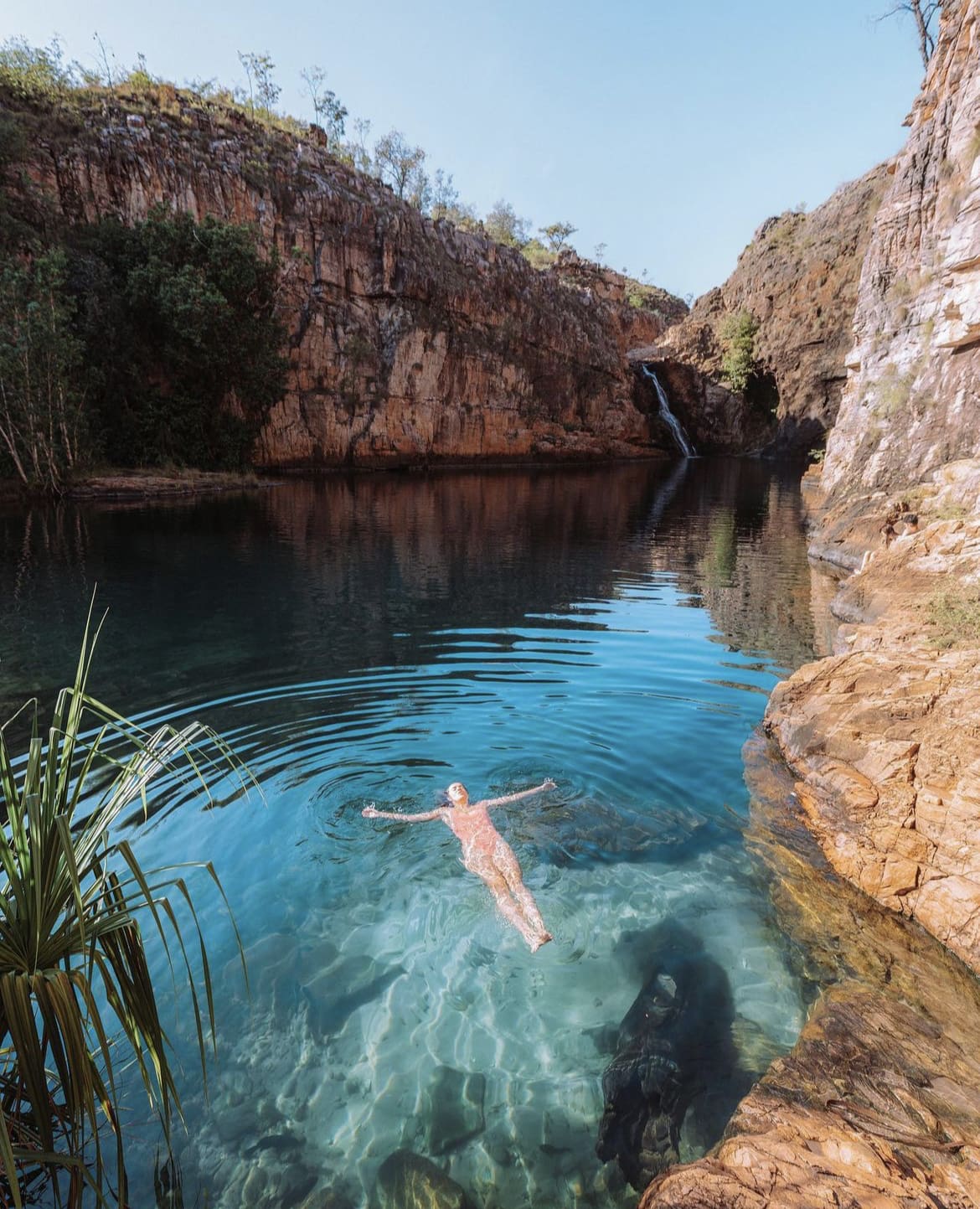
2. Uluru Sunset Experience: Witness the Heart of Australia
Uluru, also known as Ayers Rock, is more than just a colossal sandstone monolith; it’s a spiritual and cultural symbol deeply rooted in the heart of the Northern Territory. Located in Uluru-Kata Tjuta National Park, this iconic Australian landmark transforms at sunset, displaying a mesmerizing play of colors that is a photographer’s and nature lover’s delight.
The Uluru sunset experience is a must-do. As the sun dips below the horizon, the rock changes hues from fiery red to deep purples, a magical spectacle that attracts visitors worldwide. Beyond just watching, you can immerse yourself in the local Anangu culture through guided walks around the base of Uluru, where you’ll learn about the indigenous flora, fauna, and ancient stories.
Entry to the park is subject to fees, and there are various tours available, catering to different interests and budgets. While Uluru is a year-round destination, the mild weather between May and September offers the most comfortable experience.
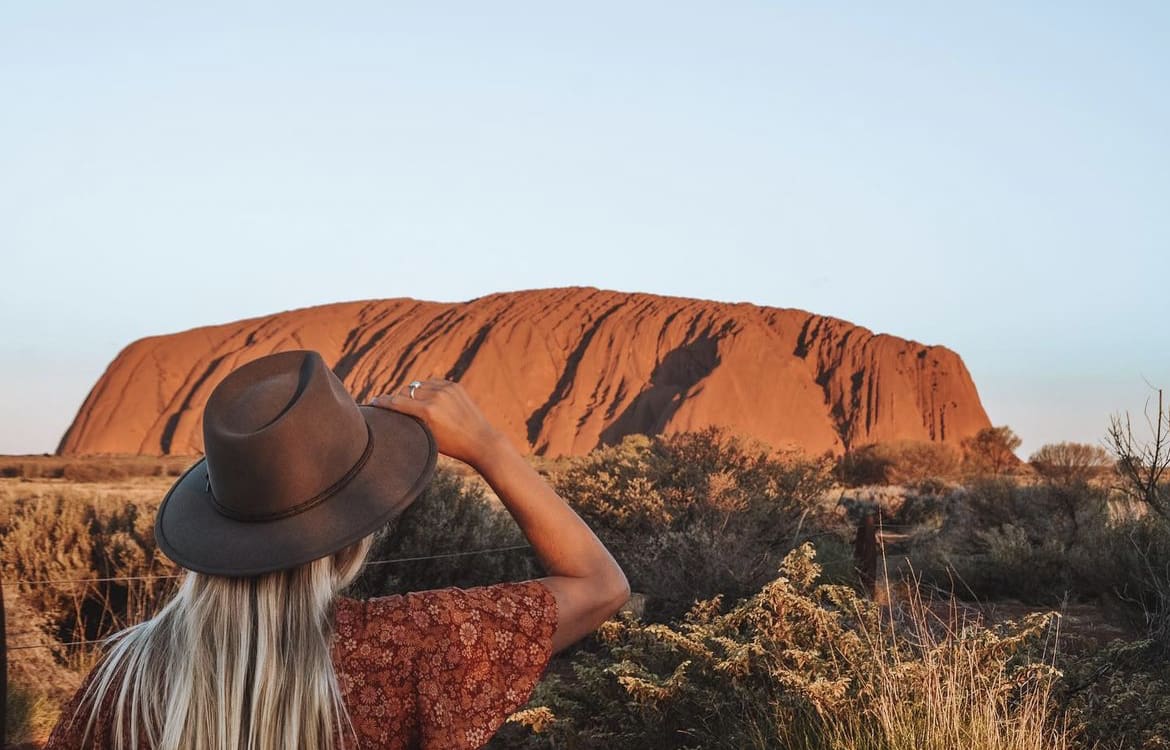
3. Katherine Gorge Cruise: Discover the Jewel of Nitmiluk National Park
A cruise through the Katherine Gorge is an unforgettable way to explore the spectacular Nitmiluk National Park. Carved by the Katherine River, the gorge is a series of deep sandstone chasms stretching as far as the eye can see. Each turn in the river reveals a new vista of towering cliffs and lush vegetation, a paradise for nature enthusiasts.
The experience ranges from serene boat cruises that glide through the tranquil waters to adventurous canoeing trips for those who wish to navigate the gorge at their own pace. For the truly adventurous, hiking along the rim provides breathtaking panoramic views. The cost of these experiences varies, with options suitable for both budget travelers and those looking for a touch of luxury.
Timing your visit is crucial; the dry season, typically from May to October, is the ideal time for cruising as the water levels are lower and the weather is more amenable. This is when the gorge reveals its full majesty, making it a highlight of any trip to the Northern Territory.
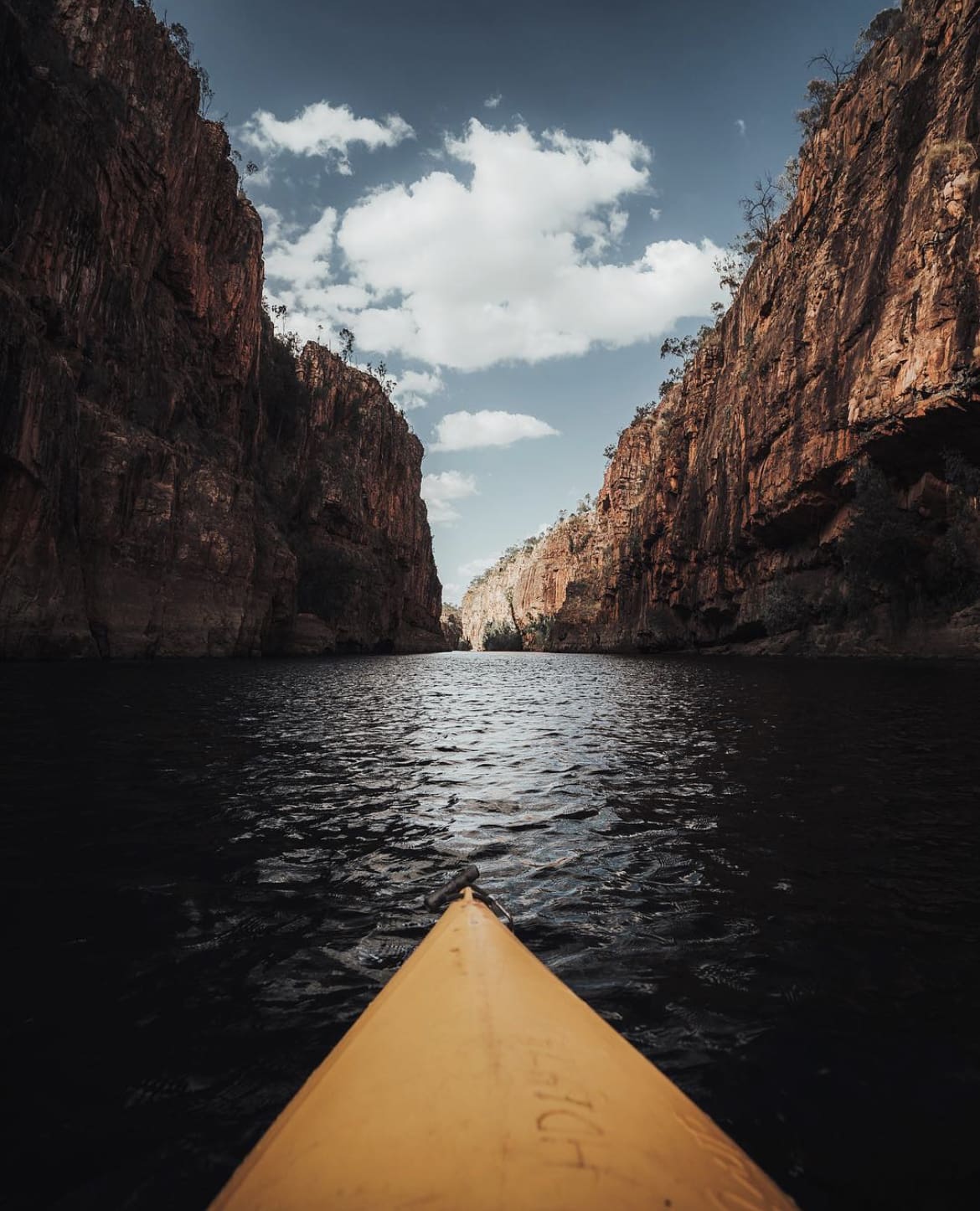
4. Litchfield National Park Waterfalls: A Tropical Oasis
Just a stone’s throw away from Darwin lies Litchfield National Park, a true jewel of the Northern Territory. Renowned for its stunning waterfalls and crystal-clear swimming holes, Litchfield is the perfect escape for those seeking both adventure and relaxation. Buley Rockhole and Florence Falls are among the most popular spots, offering visitors the chance to swim in their serene waters, surrounded by lush tropical forests.
The park’s accessibility and free entry make it an attractive option for all types of travelers. Whether you’re picnicking near the water’s edge or embarking on a short walk to discover hidden cascades, Litchfield’s natural beauty is sure to enchant. The best time to visit is during the dry season when the roads are accessible and the waterfalls are at their most inviting.
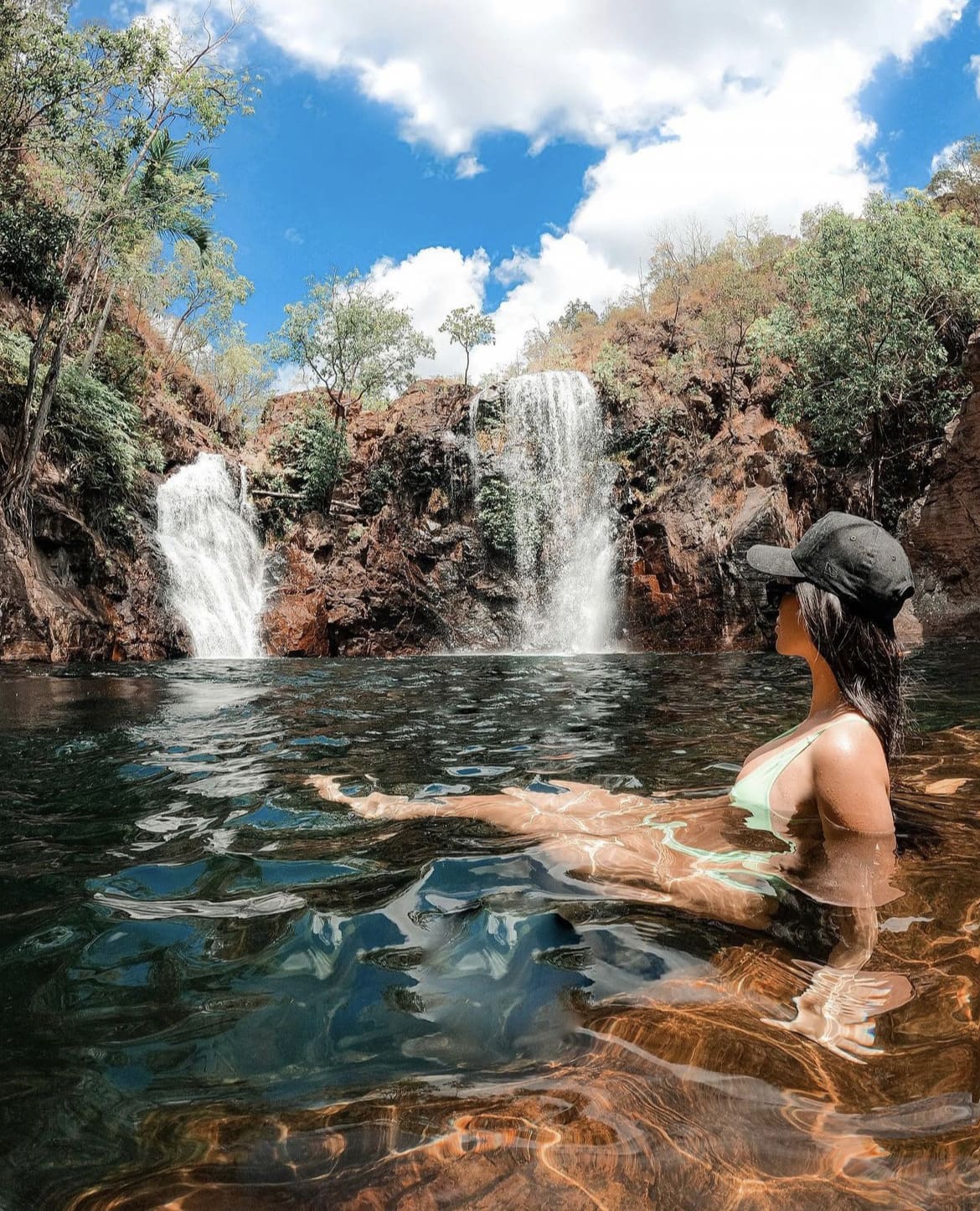
5. Darwin Waterfront Precinct: Vibrant Urban Fun
The Darwin Waterfront Precinct is a bustling hub of activity, blending the laid-back charm of a beach town with the vibrant energy of a city center. This lively area is a favorite among locals and tourists alike, offering a myriad of activities from leisurely swims at the beach to dining in stylish eateries. The Wave Lagoon is a standout attraction, providing a safe and fun environment for swimming and water sports.
Whether you’re looking to relax in the sun, enjoy a meal with a view, or partake in some retail therapy, the Waterfront Precinct has something for everyone. With free access and a variety of experiences catering to different budgets, it’s a must-visit spot in Darwin. Its year-round appeal makes it a versatile destination, perfect for any itinerary.
6. Darwin Festival: A Celebration of Arts and Culture
Every August, the city of Darwin comes alive with the Darwin Festival, an annual celebration of art, music, and culture. This vibrant event showcases the best of local and international talent, offering an eclectic mix of live music, theatre, and art exhibitions. The festival atmosphere is electric, with a program that promises something for every taste and age group.
The Darwin Festival is a fantastic way to experience the city’s cultural diversity. With a range of free and ticketed events, it caters to various audiences. Whether you’re a hardcore art enthusiast or simply looking for a fun night out, the festival’s colorful blend of entertainment and creativity is not to be missed.
7. Hot Air Balloon Ride in Alice Springs: The Outback From Above
For a truly unique perspective on the Northern Territory’s rugged landscape, a hot air balloon ride over Alice Springs is a must. As the sun rises, the balloon soars into the sky, offering breathtaking views of the vast outback below. The serene and gentle journey is a once-in-a-lifetime experience, showcasing the natural beauty of the region in a truly magical way.
Balloon rides are available year-round, with each season offering its own unique charm. The cooler mornings from April to September provide the most comfortable conditions. While the cost varies by operator, this activity offers exceptional value, giving you a bird’s-eye view of some of Australia’s most iconic landscapes.
8. Tiwi Islands Cultural Visit: An Artistic and Cultural Retreat
Located just off the northern coast of Darwin, the Tiwi Islands are a hidden gem, offering a unique blend of culture and art. Known as the ‘Island of Smiles’, this destination provides an intimate glimpse into the lives and traditions of the Tiwi people. Visitors can participate in art workshops, where local artists share their techniques in painting and printmaking, or engage in interactive cultural tours that delve into the rich Tiwi heritage.
The islands are also a paradise for anglers, with opportunities to catch the renowned barramundi. Access to the Tiwi Islands is typically through organized tours, which often include round-trip transportation from Darwin. The best time to visit is during the dry season when the weather is more favorable for travel and outdoor activities.
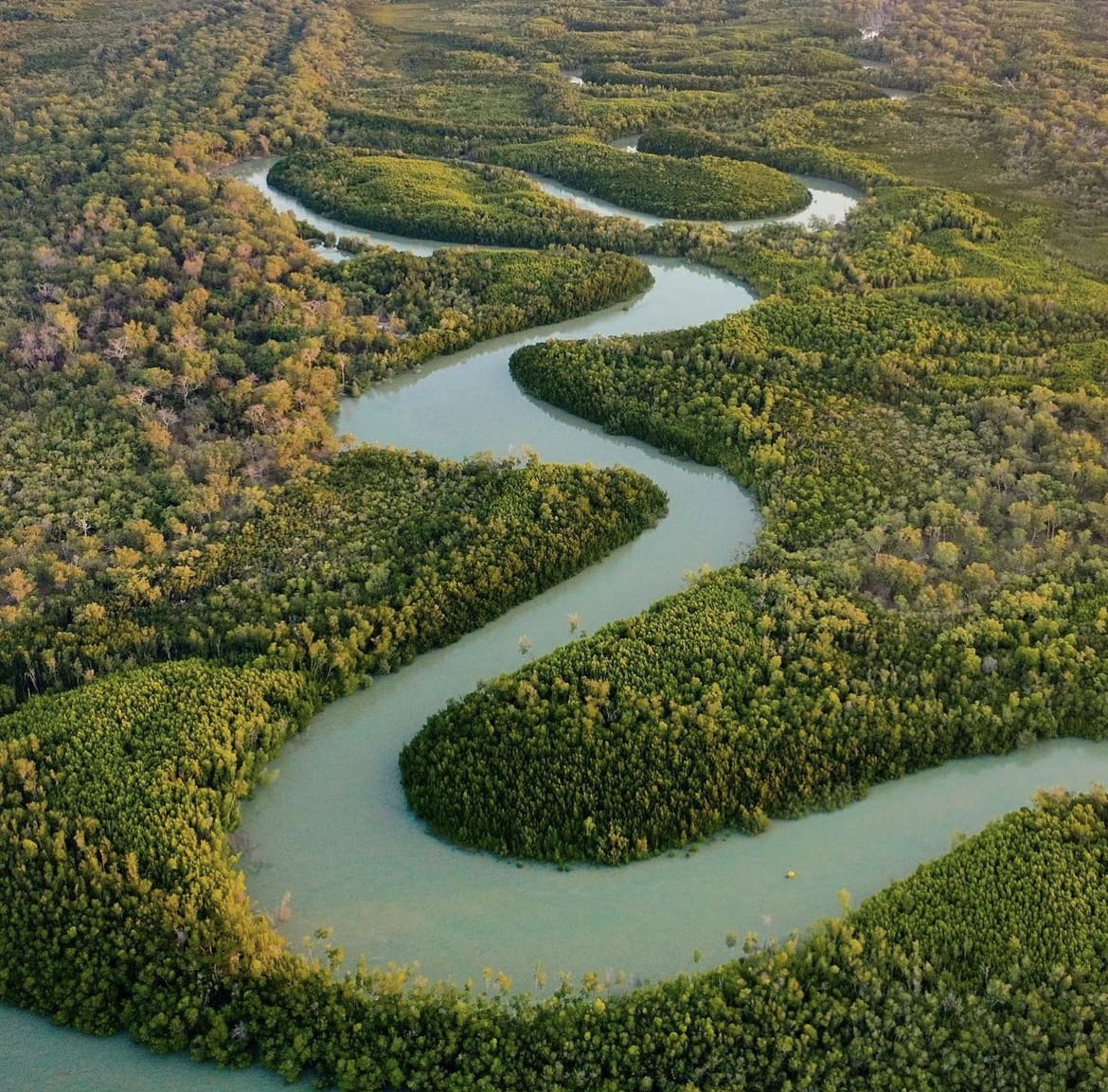
9. Arnhem Land Aboriginal Art Exploration: A Cultural Journey
Arnhem Land, located in the northeast of the Northern Territory, is a vast and culturally rich area. It is home to the Yolngu people, who have maintained their traditions and art for millennia. Visitors have the unique opportunity to explore this heritage through visits to local art centers and galleries, where they can view and purchase authentic Aboriginal artwork.
The region offers more than just art; it’s an immersive cultural experience where visitors can learn about traditional hunting techniques, bush tucker, and the spiritual significance of the land. Access to Arnhem Land requires a permit, and guided tours are recommended to fully appreciate the cultural and historical significance of the area. The dry season is the ideal time to visit, with more tours available and easier access to remote areas.
10. Larapinta Trail Hiking Adventure: Trekking the West MacDonnell Ranges
The Larapinta Trail is one of Australia’s most famous treks, winding through the stunning landscape of the West MacDonnell Ranges near Alice Springs. This trail offers a range of experiences, from short, scenic day walks to challenging multi-day hikes. Along the way, trekkers are treated to breathtaking views of rugged gorges, serene waterholes, and ancient geological formations.
Hiking the Larapinta Trail is a free self-guided adventure, but guided tours are available for those seeking a more structured experience with insights into the area’s flora, fauna, and geology. The winter months, from June to August, provide the most comfortable conditions for hiking, with cooler temperatures and minimal rainfall.
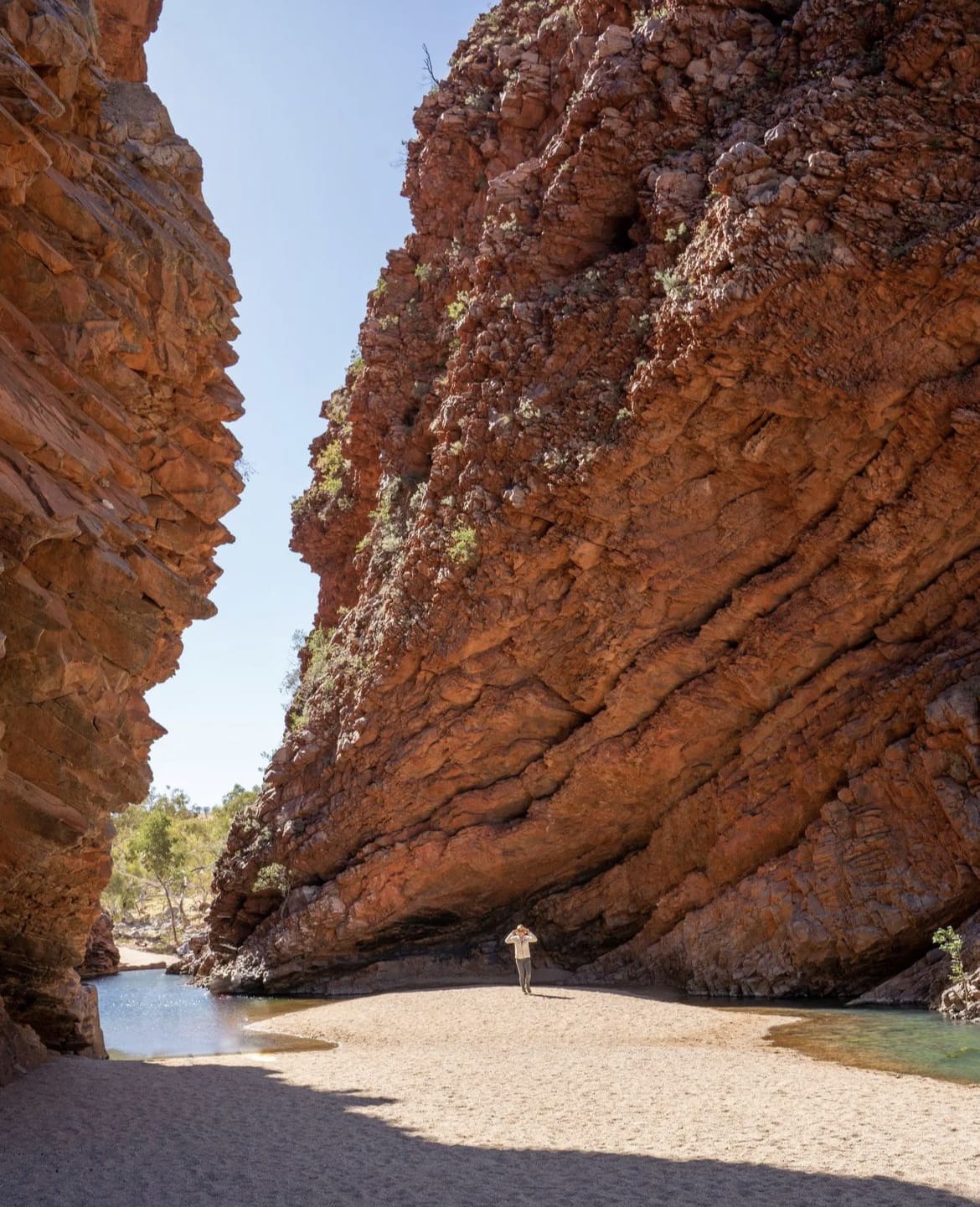
11. Fishing in Daly River: An Angler’s Paradise
The Daly River, southwest of Darwin, is renowned as one of the best fishing spots in Australia, especially famous for its barramundi. Anglers from all over the world come to try their luck in these fertile waters. The river is not just about fishing; it’s a serene escape where nature abounds, with opportunities to spot unique birdlife and even crocodiles in their natural habitat.
Fishing in the Daly River can be experienced through guided tours or by setting out on your own. While a fishing license is required, the investment is worth it for the chance to catch the prized barramundi. The best time to visit is during the late dry season, from August to October, when water levels are lower, and fish are more concentrated.
12. Mary River Wetlands Bird Watching: A Birder’s Haven
The Mary River Wetlands, located east of Darwin, are a bird watcher’s paradise. This ecological haven is home to a diverse array of birdlife, making it one of the most important and spectacular birding destinations in Australia. The wetlands come alive with the sounds and sights of various bird species, including jabirus, sea eagles, and kingfishers.
Visitors can explore the wetlands through river cruises, which offer an up-close view of the birds in their natural environment. These tours vary in cost, providing options for every budget. The dry season is the best time to visit, as the lower water levels create ideal conditions for bird watching and photography.
13. Kings Canyon Rim Walk: A Spectacular Desert Odyssey
The Kings Canyon Rim Walk in Watarrka National Park is a highlight for any adventurer. This majestic canyon, with its ancient sandstone walls rising dramatically from the desert floor, offers a hike that is as challenging as it is rewarding. The six-kilometer loop takes you to breathtaking viewpoints overlooking the canyon and the surrounding desert landscape.
The Rim Walk is an opportunity to immerse yourself in the natural grandeur of the Northern Territory. The best time to embark on this trek is during the cooler months, from April to September, when the temperatures are more forgiving. While the walk is free, guided tours are available for those seeking deeper insights into the canyon’s geology and history.
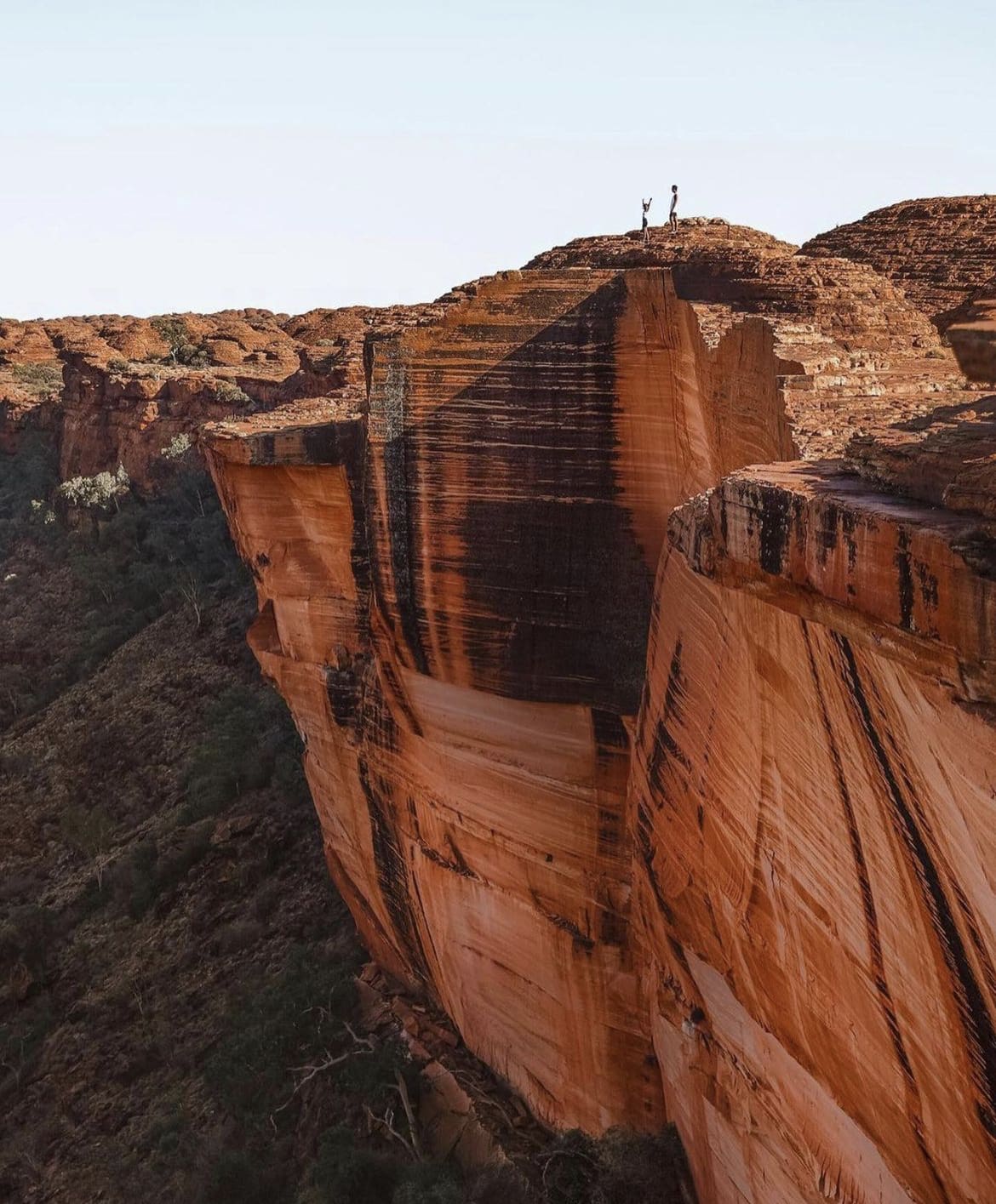
14. Alice Springs Telegraph Station: A Glimpse into the Past
The Alice Springs Telegraph Station is a historical gem, marking the original site of the first European settlement in Alice Springs. This historic station played a crucial role in connecting Australia with the rest of the world in the 19th century. Today, it stands as a well-preserved museum where visitors can step back in time to explore the early days of communication.
The Telegraph Station is not just a historical site; it’s surrounded by scenic landscapes, making it an ideal spot for picnics and leisurely walks. The station is open year-round, with a small entry fee, providing an affordable and educational outing suitable for all ages.
15. Devils Marbles Exploration: Marvel at Nature’s Sculptures
The Devils Marbles, or Karlu Karlu, are an extraordinary collection of huge granite boulders, precariously balanced and scattered across a wide, shallow valley. Located near Tennant Creek, these geological formations are one of the Northern Territory’s most iconic and photographed landmarks.
Visitors to the Devils Marbles can wander amongst these natural sculptures, marveling at their size and pondering the natural forces that shaped them. This site is a photographer’s dream, especially at sunrise or sunset when the warm light accentuates their red and orange hues. The site is open year-round and is free to visit, making it an accessible attraction for everyone.
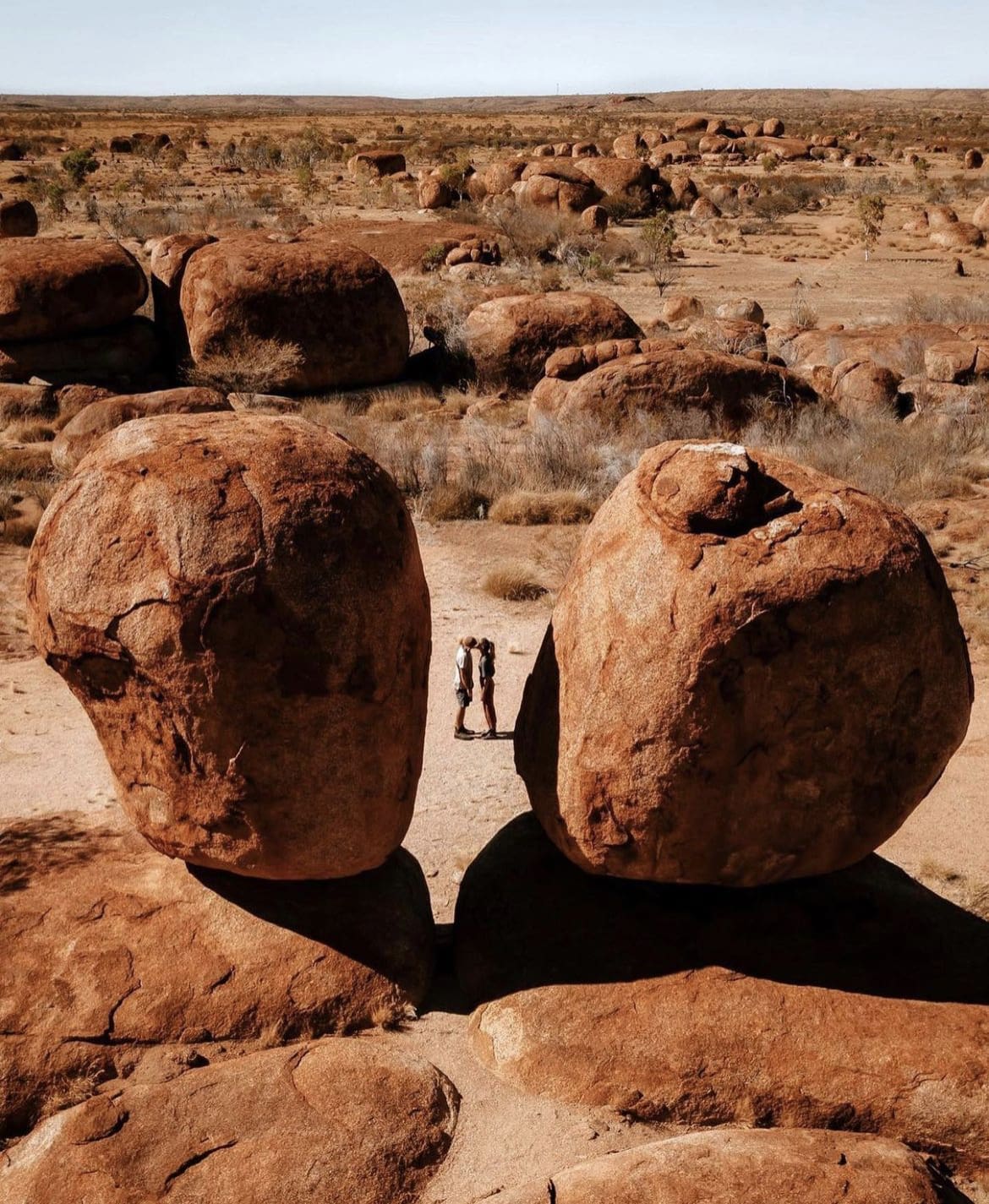
16. Mindil Beach Sunset Market: A Feast for the Senses
The Mindil Beach Sunset Market, located in Darwin, is a vibrant and bustling hub of activity and one of the city’s most beloved attractions. The market, operating during the dry season from April to October, is famous for its stunning sunset views over the Timor Sea. It’s a place where food, crafts, and cultures from around the world come together.
At the Mindil Beach Market, you can savor a wide array of international cuisines, shop for unique crafts and artworks, and enjoy live music and street performances. The atmosphere here is electric, with a mix of locals and tourists mingling and enjoying the balmy evenings. Entry to the market is free, offering a delightful experience that’s easy on the wallet.
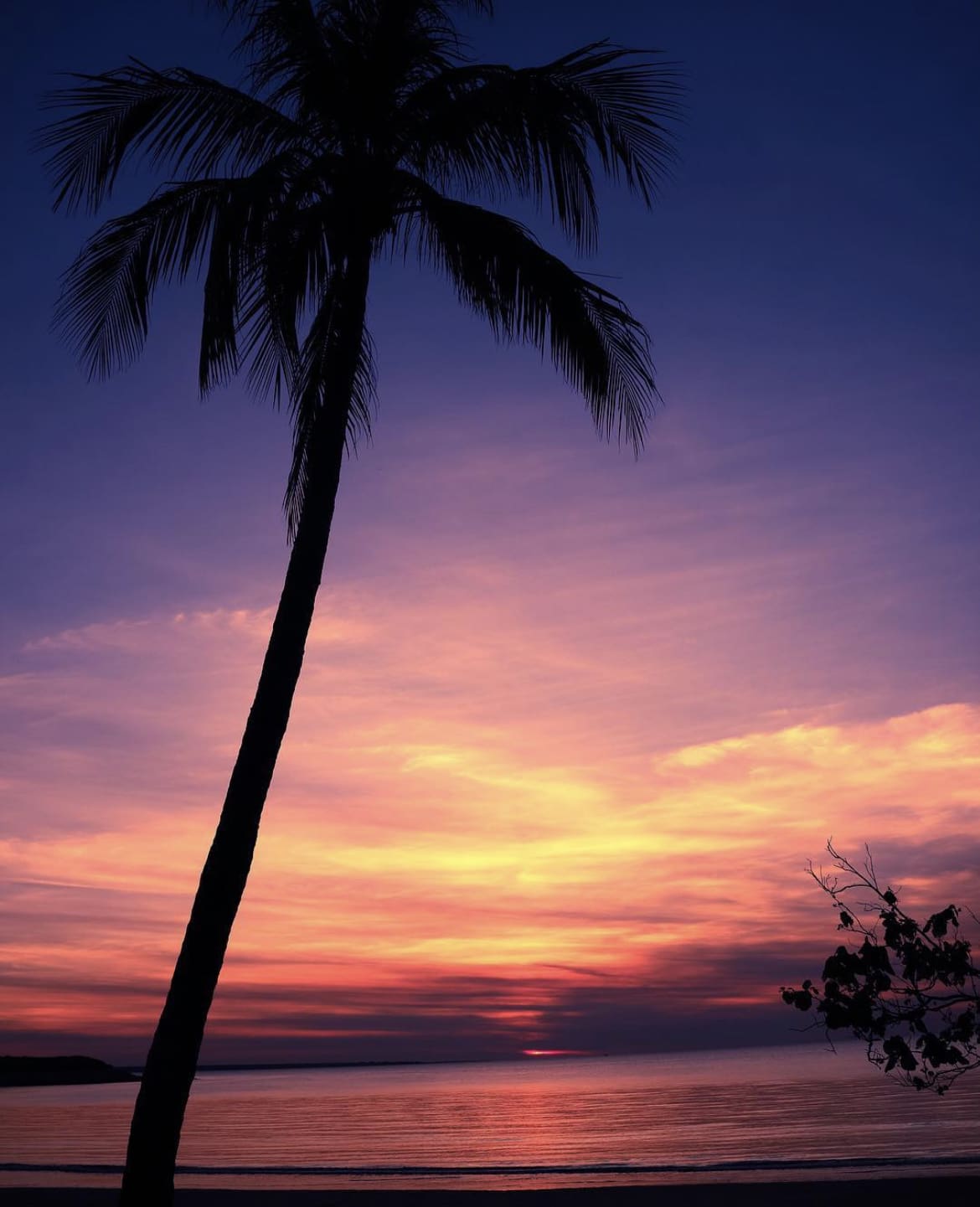
17. Museum and Art Gallery of the Northern Territory: A Cultural Hub
Located in Darwin, the Museum and Art Gallery of the Northern Territory (MAGNT) is a window into the region’s artistic, cultural, and natural history. The museum boasts a diverse collection, including Indigenous art, Southeast Asian and Oceanic art, and displays of the region’s marine biodiversity. Not to be missed is the Cyclone Tracy exhibit, which offers a poignant insight into the devastating impact of the 1974 cyclone on Darwin.
The MAGNT is more than just a museum; it’s a cultural hub where history, art, and science converge. With free entry, it’s an accessible attraction for everyone, open year-round. Whether you’re an art lover, a history enthusiast, or simply curious, the museum provides an enriching experience for all visitors.
18. Aboriginal Cultural Tours: Connecting with Ancient Traditions
The Northern Territory offers a unique opportunity to connect with the ancient traditions of its Indigenous inhabitants through Aboriginal cultural tours. These tours, available in various locations, allow visitors to engage with Aboriginal guides who share their knowledge of the land, art, and traditional practices.
These immersive experiences can include learning about bush tucker, participating in traditional ceremonies, or exploring sacred sites. The tours not only provide a deeper understanding of Aboriginal culture but also support local communities. While the cost and availability of tours vary, they’re invaluable for those seeking an authentic and respectful insight into Australia’s Indigenous heritage.
19. Crocosaurus Cove Darwin: An Encounter with Prehistoric Giants
For those seeking an adrenaline rush, Crocosaurus Cove in Darwin offers the chance to come face-to-face with some of the largest saltwater crocodiles in captivity. One of the most thrilling experiences is the ‘Cage of Death’, where you can dive in a transparent enclosure surrounded by these prehistoric giants.
But it’s not all about thrills; the cove also provides educational experiences about crocodile conservation and biology. With an entry fee and additional costs for experiences like the cage dive, Crocosaurus Cove offers a range of options for visitors. Open year-round, it’s a must-visit for anyone interested in these fascinating creatures.

20. Uluru Astronomy Tours: A Celestial Adventure
Under the clear desert skies, Uluru offers a spectacular setting for stargazing. The Uluru Astronomy Tours give you the chance to explore the southern night sky, learning about constellations, stars, and planets. The tours, led by knowledgeable guides, provide insights into how the local Anangu people interpret the sky.
These tours are not just about astronomy; they’re a blend of science, culture, and storytelling, making for an unforgettable evening. While there are costs associated with the tours, the experience of stargazing in such an iconic location is priceless. The best time to join these tours is during the clear winter nights from May to September.
STAY UPDATED
Join our community of keen travellers, wildlife enthusiasts and adventure seekers..
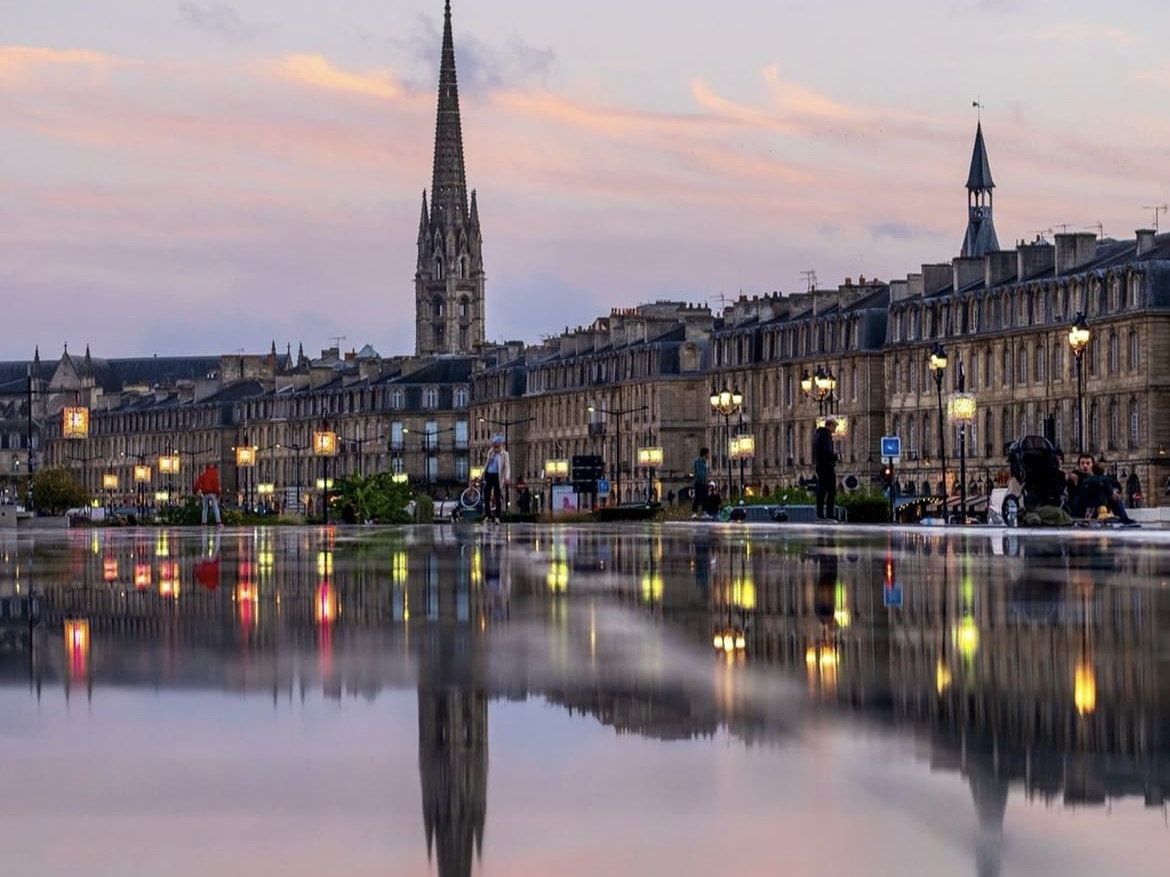
The Best Time Of Year To Visit Bordeaux, France
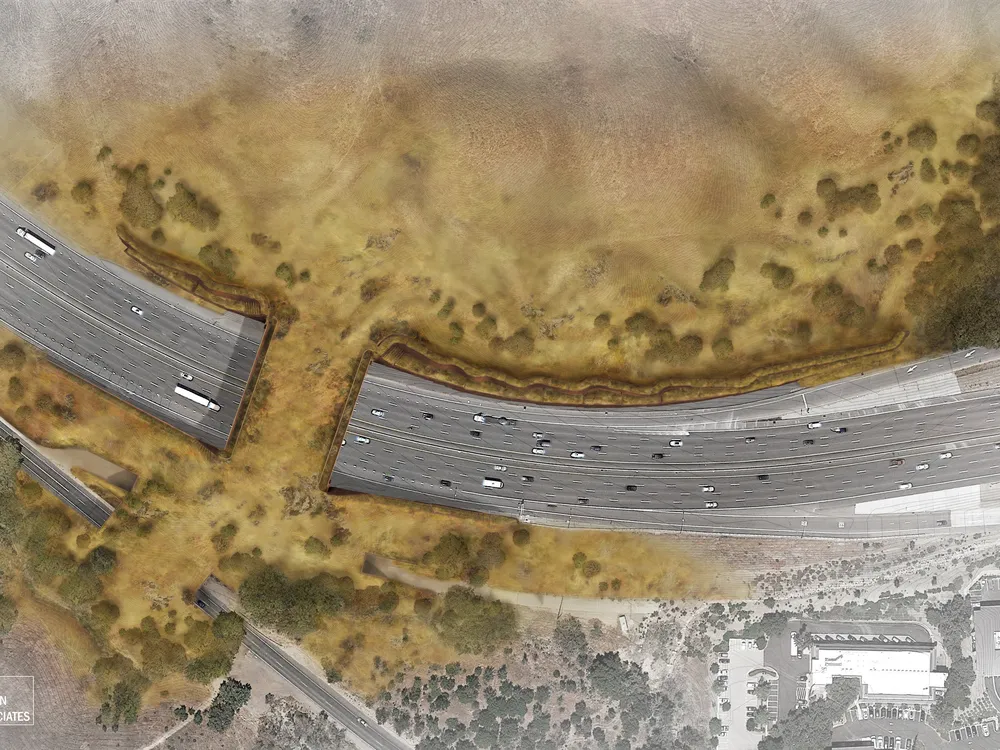
World’s Largest Wildlife Crossing Will Save Thousands Of Animals In California
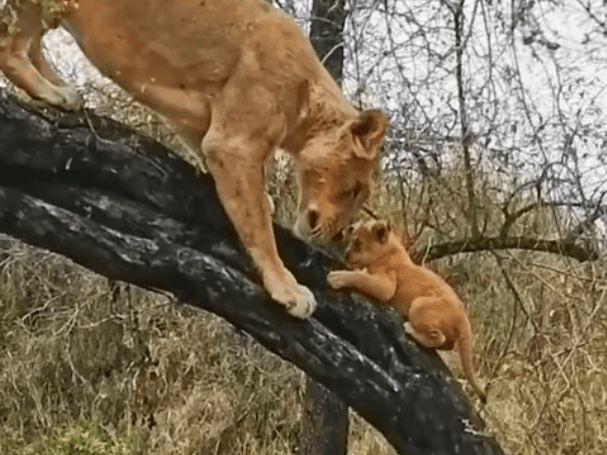
WATCH: Lioness Teaches Her Cubs to Climb in Sabi Sands
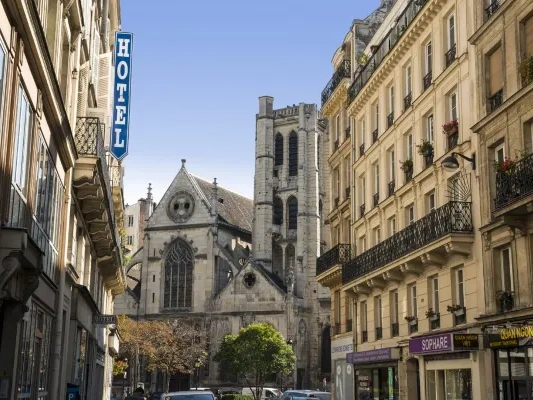
The 15 Top Budget Hotels in Central Paris
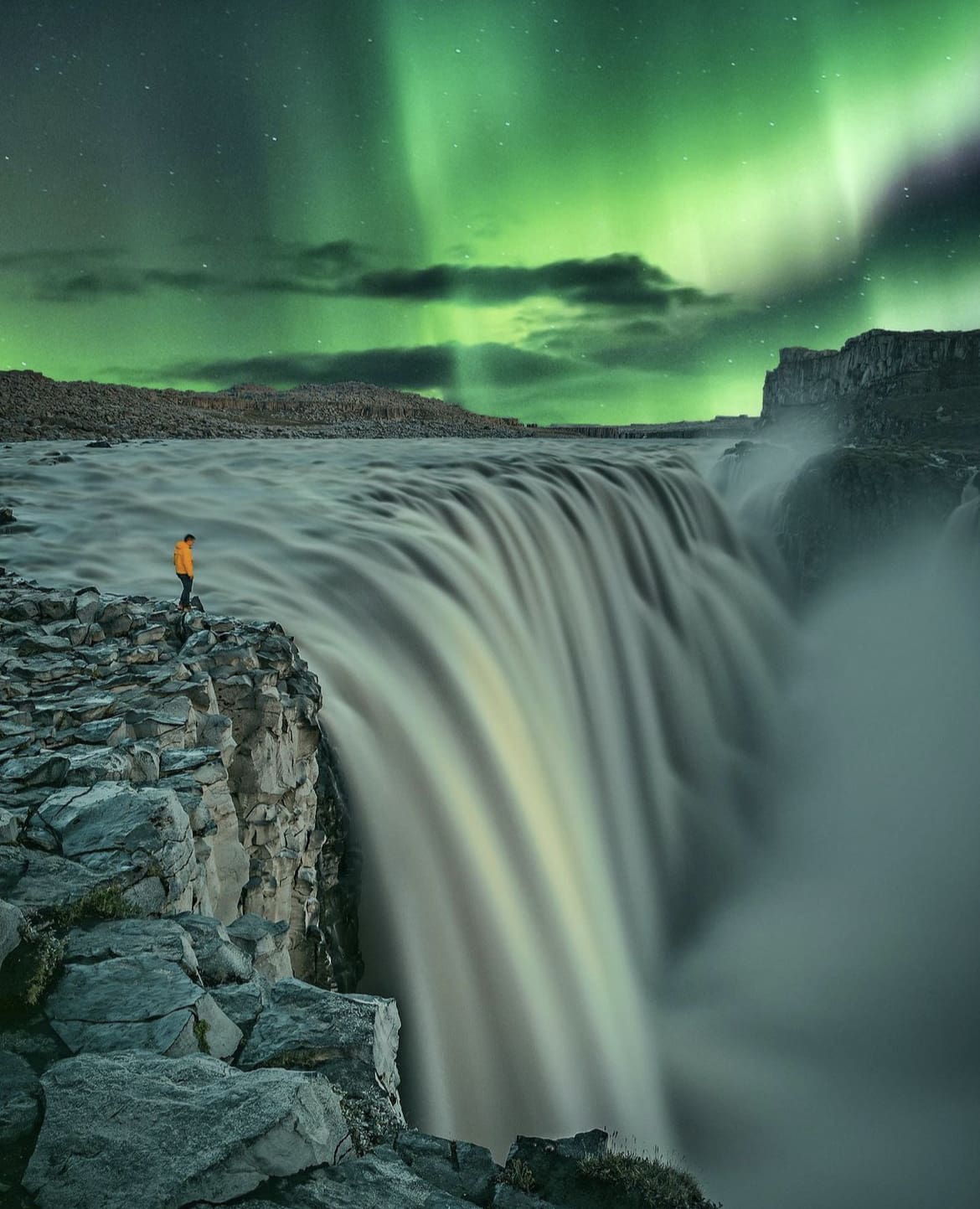
The 20 Best Things To Do In North Iceland
Things To Do
April 25, 2024
20 Epic Things To Do In North Iceland
North Iceland is a realm where fire meets ice, crafting landscapes so dramatic and pure that you'll feel like you've stepped onto the set of a fantasy epic. Far from the bustling streets of Reykjavik, this part of the island whispers the ancient sagas through its whispering winds and roaring waterfalls.
Here, you'll find activities that not only dare you to explore but also challenge you to leave without falling deeply in love with the rugged wilderness. Whether you’re a culture enthusiast or an adventure seeker, North Iceland has something spectacular in store for you.
1. Dettifoss: The Power of Nature
Prepare to be humbled by the raw power of Dettifoss, reputed to be the most powerful waterfall in Europe. Here, water thunders down with such force that the mist surrounding the cascade can be seen several miles away.
For the best experience, visit early in the morning or late in the afternoon to dodge the tour buses and capture the perfect photo with the sun casting rainbows through the spray. Wear sturdy boots as the paths can be slippery and always stay within marked boundaries to keep safe while soaking in the awe-inspiring views.

2. Unwind at Mývatn Nature Baths
After a day of adventure, there’s no better way to relax than by soaking in the Mývatn Nature Baths. Less crowded than its southern counterpart, the Blue Lagoon, these baths offer tranquil waters rich in minerals, believed to soothe and rejuvenate tired muscles.
The waters maintain a blissful temperature of around 36-40°C (97-104°F), perfect for a leisurely dip against a backdrop of volcanic landscapes. Facilities are top-notch, with lockers, showers, and a café that serves up local treats. Visit during the evening to enjoy a sunset dip or, if you’re lucky, a magical Northern Lights display overhead.

3. Volcanic Adventures around Lake Mývatn
Lake Mývatn is a sanctuary for those fascinated by volcanic activity and its effects on landscapes. The area is dotted with craters, lava pillars, and fumaroles, making it a great spot for a day of exploration. Hiking around Lake Mývatn offers a firsthand view of Iceland's dynamic earth movements, with trails suitable for all fitness levels.
Don’t miss the Skútustaðagígar Pseudo Craters, formed by gas explosions when boiling lava flowed over the wetlands. For bird enthusiasts, the lake is a thriving bird habitat, especially in summer, teeming with ducks and other migratory species. Remember to bring your camera and a pair of binoculars to capture the bizarre beauty of this geothermal wonderland.

4. Whale Watching in Húsavík
Venture to the quaint town of Húsavík, often dubbed the whale watching capital of Iceland, where the chances of spotting these majestic marine giants are as high as the surrounding snow-capped peaks. The waters here are teeming with humpback , minke, and sometimes even blue whales .
Embark on a guided boat tour to witness these creatures in their natural habitat. Most tours are led by knowledgeable guides who not only help spot whales but also provide insights into their behavior and conservation.
For an added splash of adventure, try a rib boat tour for a faster, closer, and more thrilling encounter. Remember to dress warmly and bring a waterproof camera to capture this unforgettable experience.
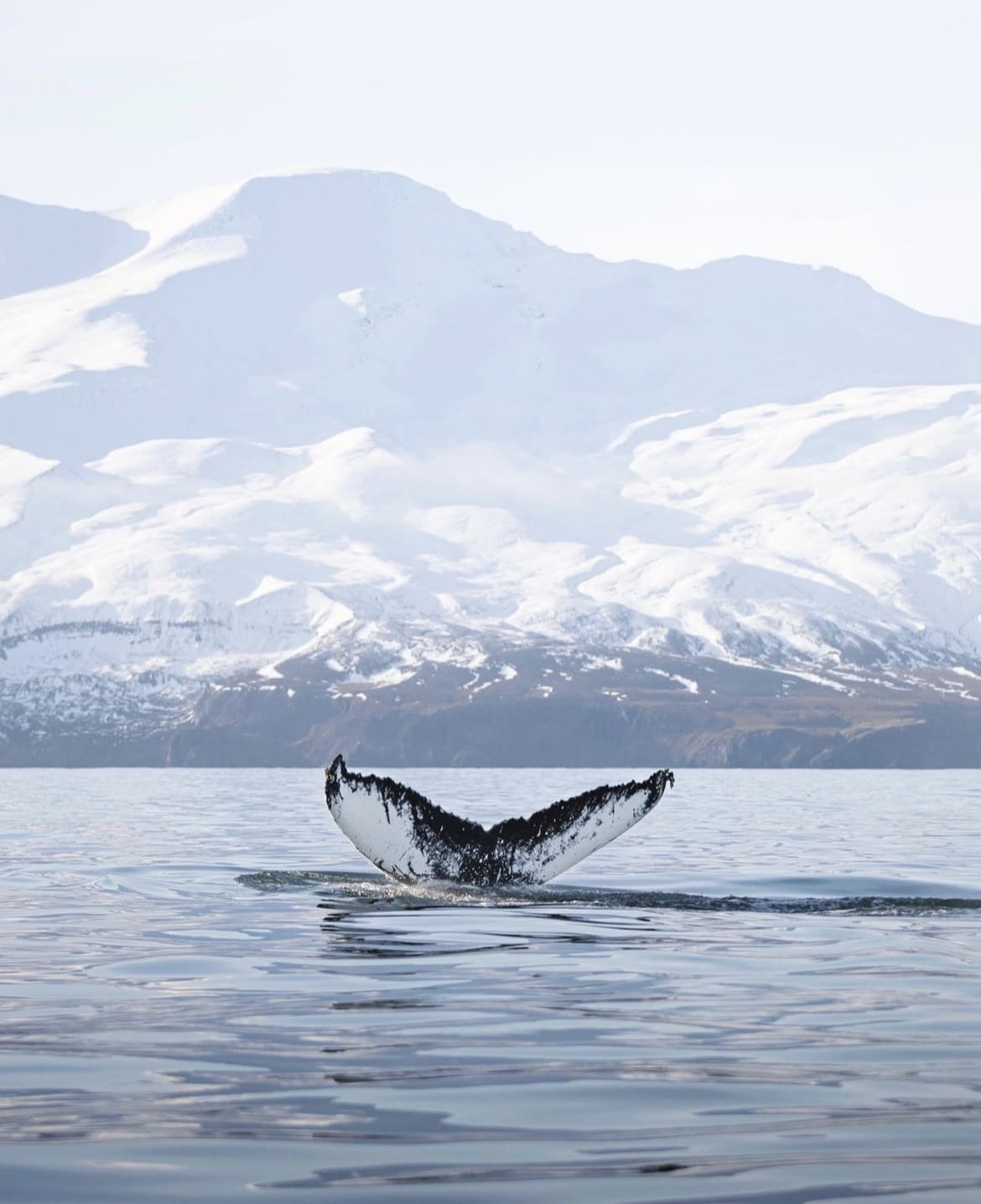
5. Ásbyrgi Canyon: Iceland’s Hidden Gem
Ásbyrgi Canyon is a spectacular, horseshoe-shaped depression that legends claim was formed by the hoof of Odin’s horse, Sleipnir. This canyon is a sanctuary of peace and natural beauty, featuring sheer cliff faces and dense birch woods. Hiking through Ásbyrgi offers a variety of trails ranging from easy walks to more challenging hikes that lead to expansive views from the canyon rim.
The Botnstjörn pond at the canyon's heart is a serene spot perfect for a quiet picnic. Nearby, explore other trails that weave through the Jökulsárgljúfur part of Vatnajökull National Park, enhancing your visit with rich tales of Norse gods and natural splendor.
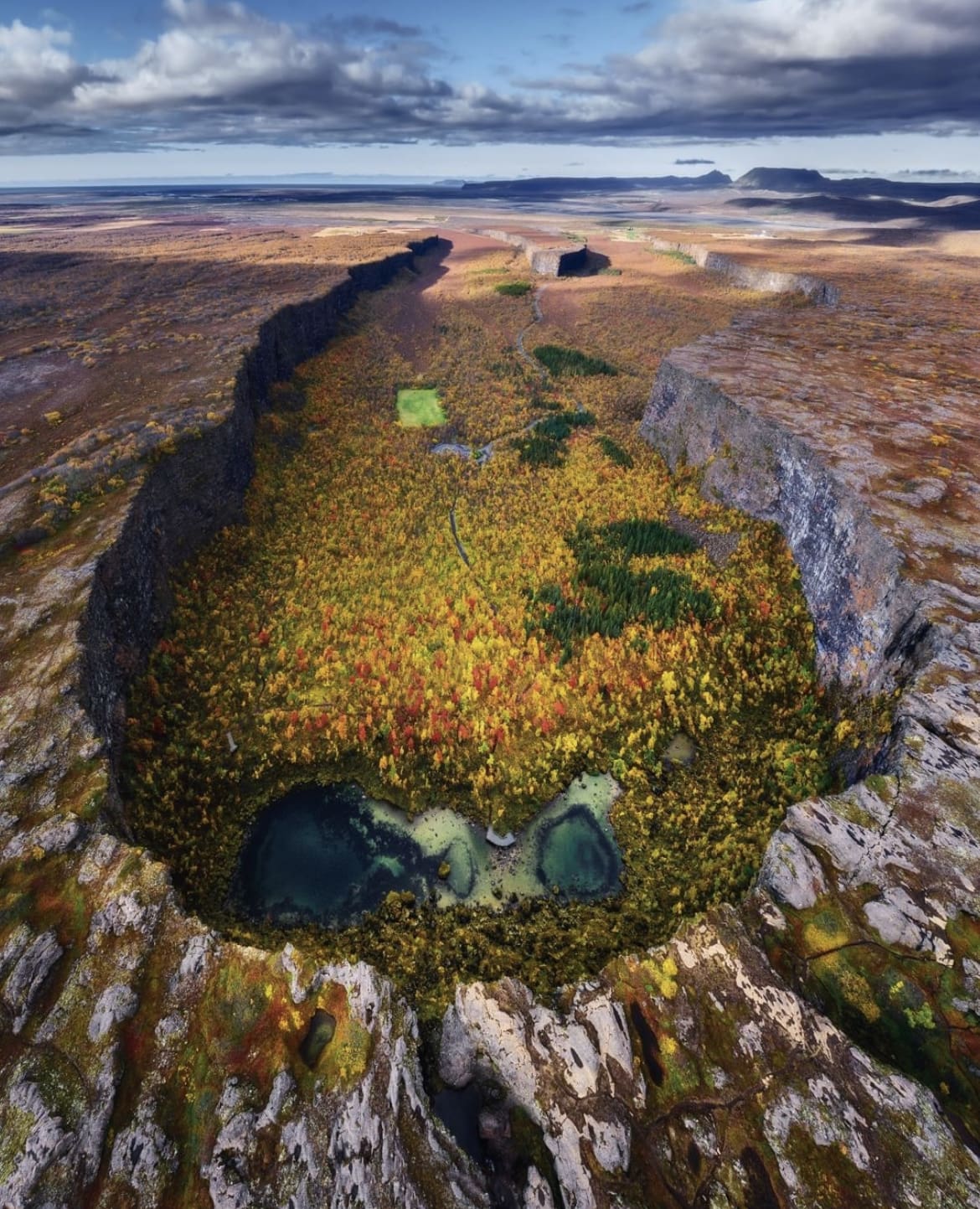
6. Discover Krafla’s Lava Fields
Near the Lake Mývatn area, the Krafla Volcano offers another stark reminder of Iceland's volatile beauty. The area is marked by a series of eruptions throughout the 1970s and 1980s, which have created an otherworldly landscape of black lava fields, bright sulfur deposits, and steaming vents.
One of the most accessible and visually striking features is the Víti crater, a deep explosion crater filled with blue water that contrasts dramatically with the surrounding dark lava. Hiking around Krafla is relatively easy, but it’s essential to stick to marked paths to preserve the fragile ecosystem and ensure your safety.
The Leirhnjúkur area, where lava is still steaming hot, offers a walkable path through a moon-like terrain, making it a must-visit for anyone interested in geology and photography.
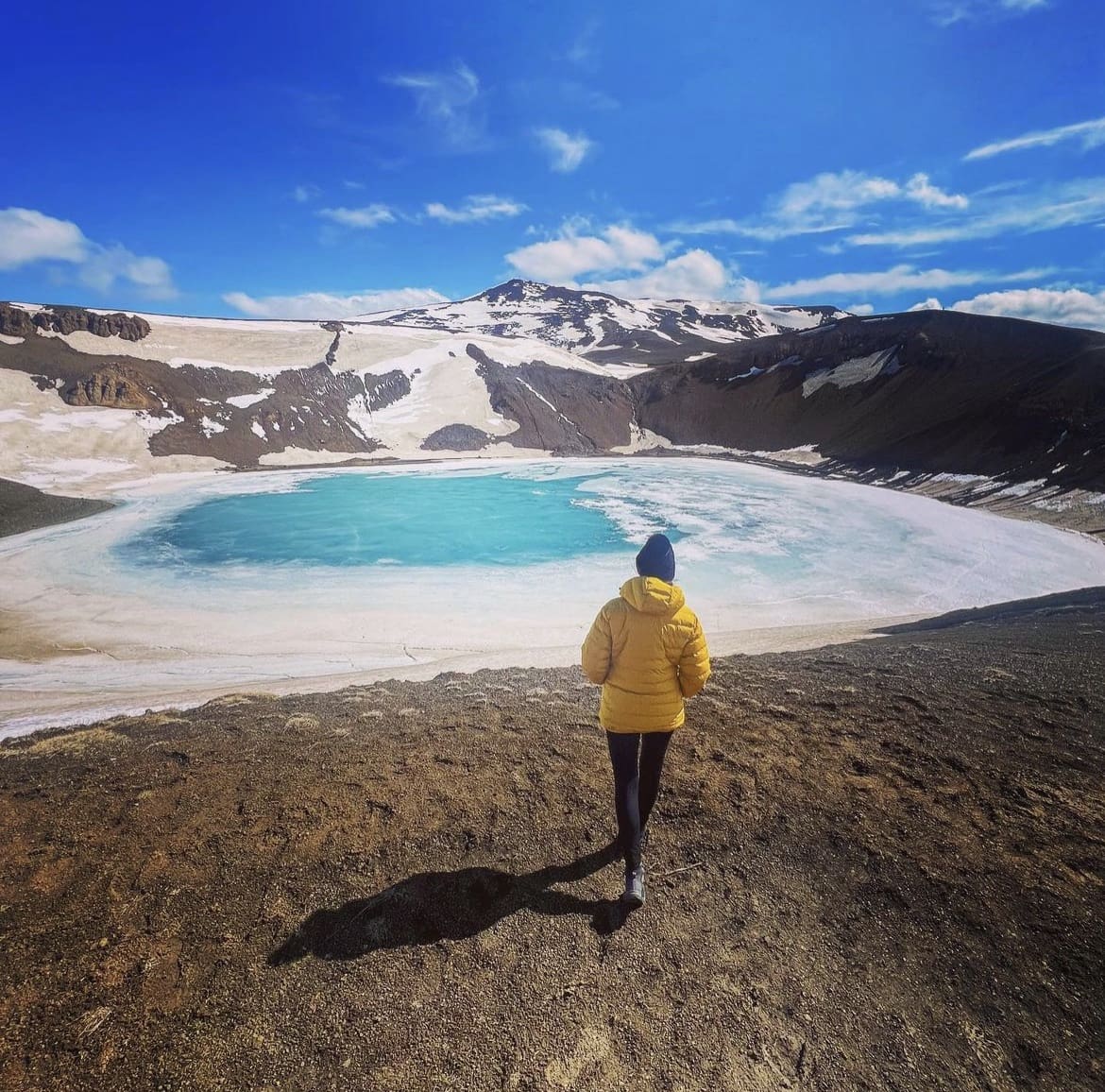
7. Step Back in Time at Glaumbær
Delve into Icelandic history at Glaumbær, a beautifully preserved farm made of turf, wood, and stone. This historical site provides a fascinating glimpse into rural life in Iceland centuries ago. The farm consists of a cluster of turf houses, which are among the few remaining examples of traditional Icelandic architecture.
The museum inside details the harsh but resourceful living conditions of Iceland's past inhabitants. Walking through these structures, you'll appreciate the ingenuity in using local materials to insulate and protect against the fierce Icelandic weather.
Visiting Glaumbær is not only a journey back in time but also a lesson in sustainability and adaptation.
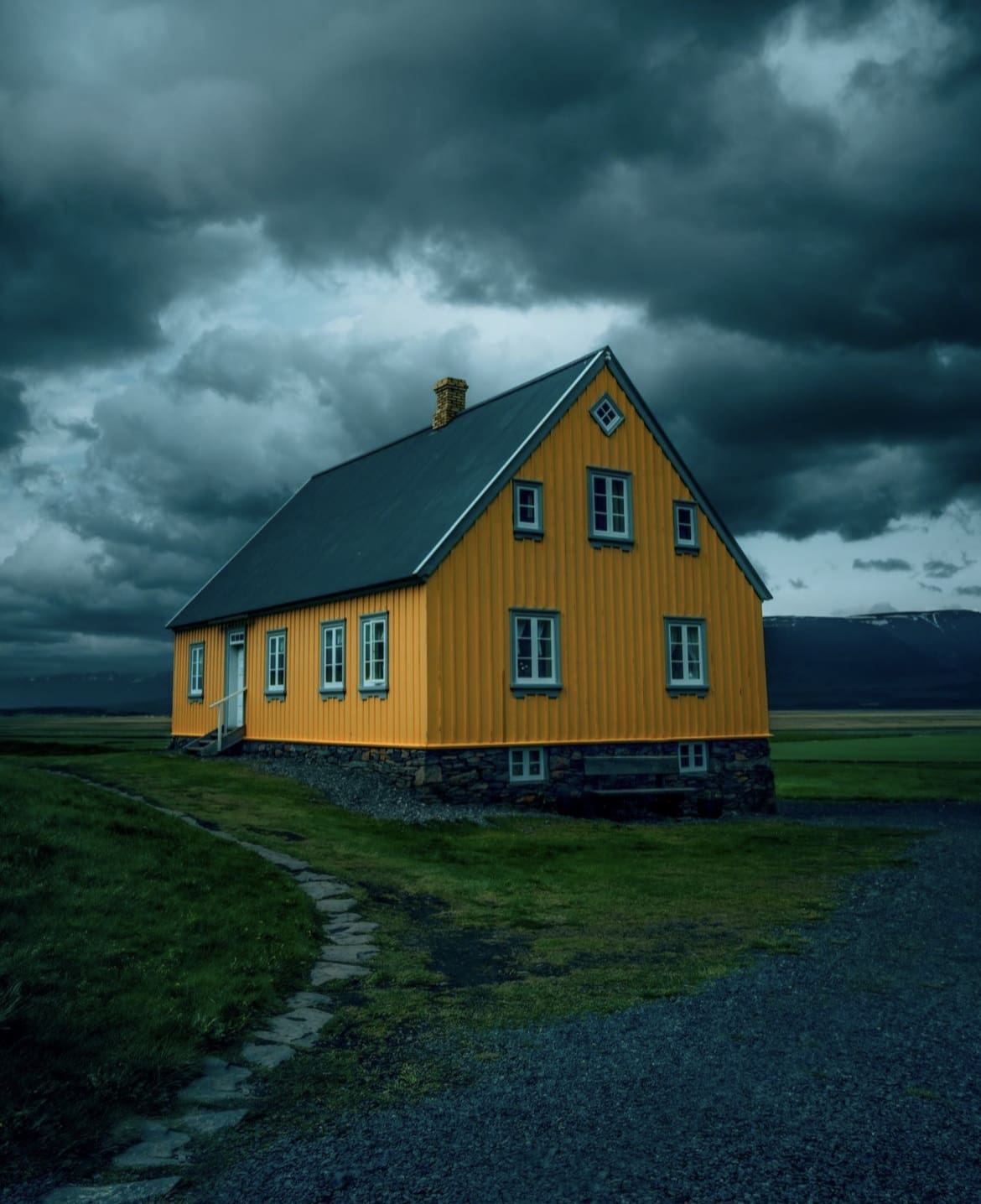
8. Driving the Arctic Coast Way
Embark on a journey along the Arctic Coast Way, one of Iceland's most scenic routes. Stretching over 900 kilometers, this route winds through dramatic coastal landscapes, from rugged cliffs and remote beaches to charming fishing villages.
Along the way, stop at Siglufjörður to sample locally caught herring or visit the quaint village of Húsavík for a spot of whale watching. Driving the Arctic Coast Way is about embracing the freedom of the open road, with each turn and town offering its own slice of Icelandic charm. Make sure to check your vehicle’s readiness for gravel paths, and always keep an eye on weather forecasts to avoid any unexpected challenges.
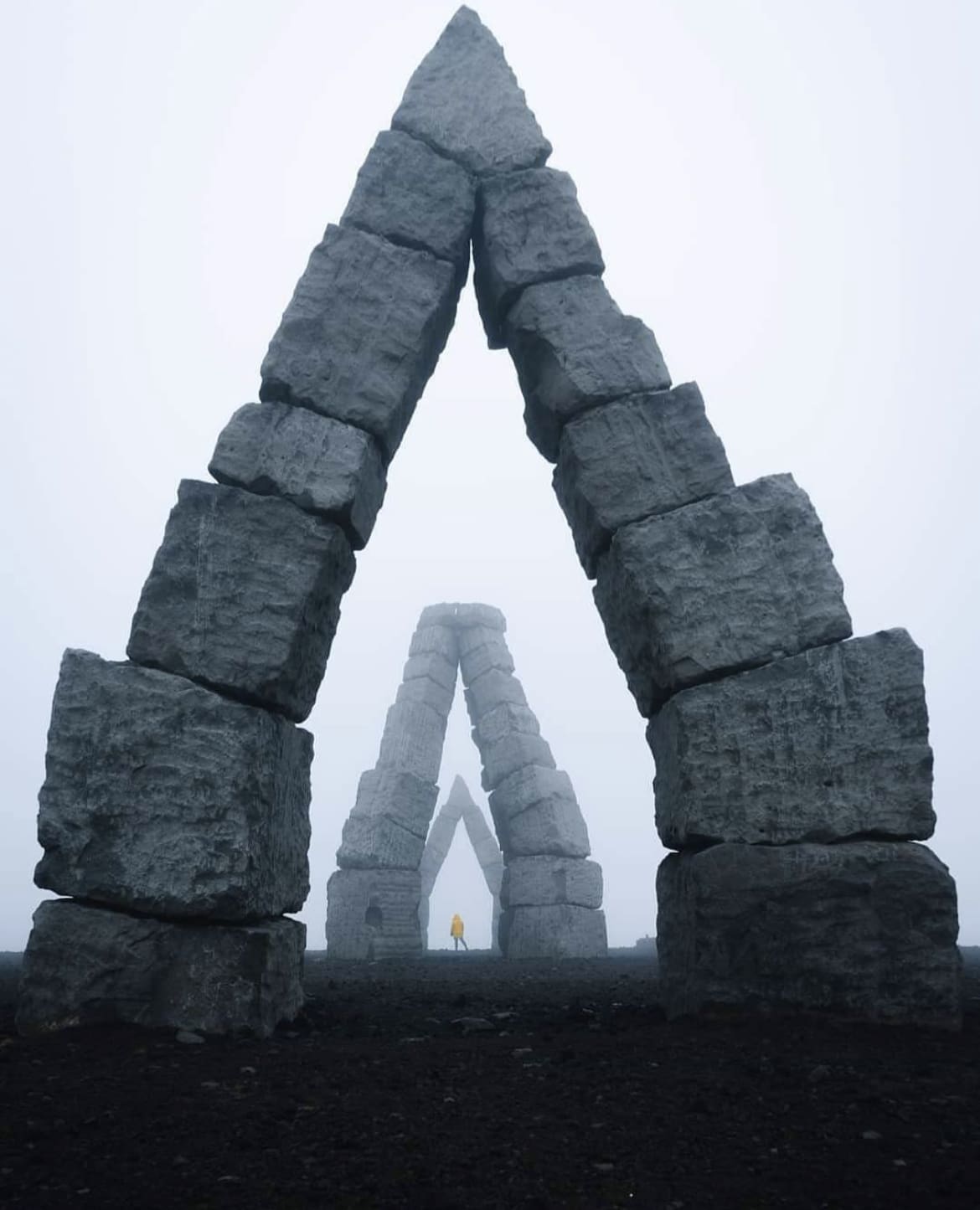
9. Goðafoss: The Waterfall of the Gods
Witness the stunning beauty of Goðafoss, an iconic waterfall steeped in history and legend. Known as the 'Waterfall of the Gods,' it is said to be the place where the lawspeaker Þorgeir Ljósvetningagoði threw the idols of the old Norse gods after Iceland converted to Christianity around the year 1000.
The waterfall’s impressive width and the sheer volume of water cascading over a semicircular arch make it a photographer's dream. For the best viewing experience, explore both sides of the falls to see how the light and angle dramatically change the scene.
Nearby facilities offer refreshments and souvenirs, making this an ideal stop for a mix of cultural heritage and natural splendor.
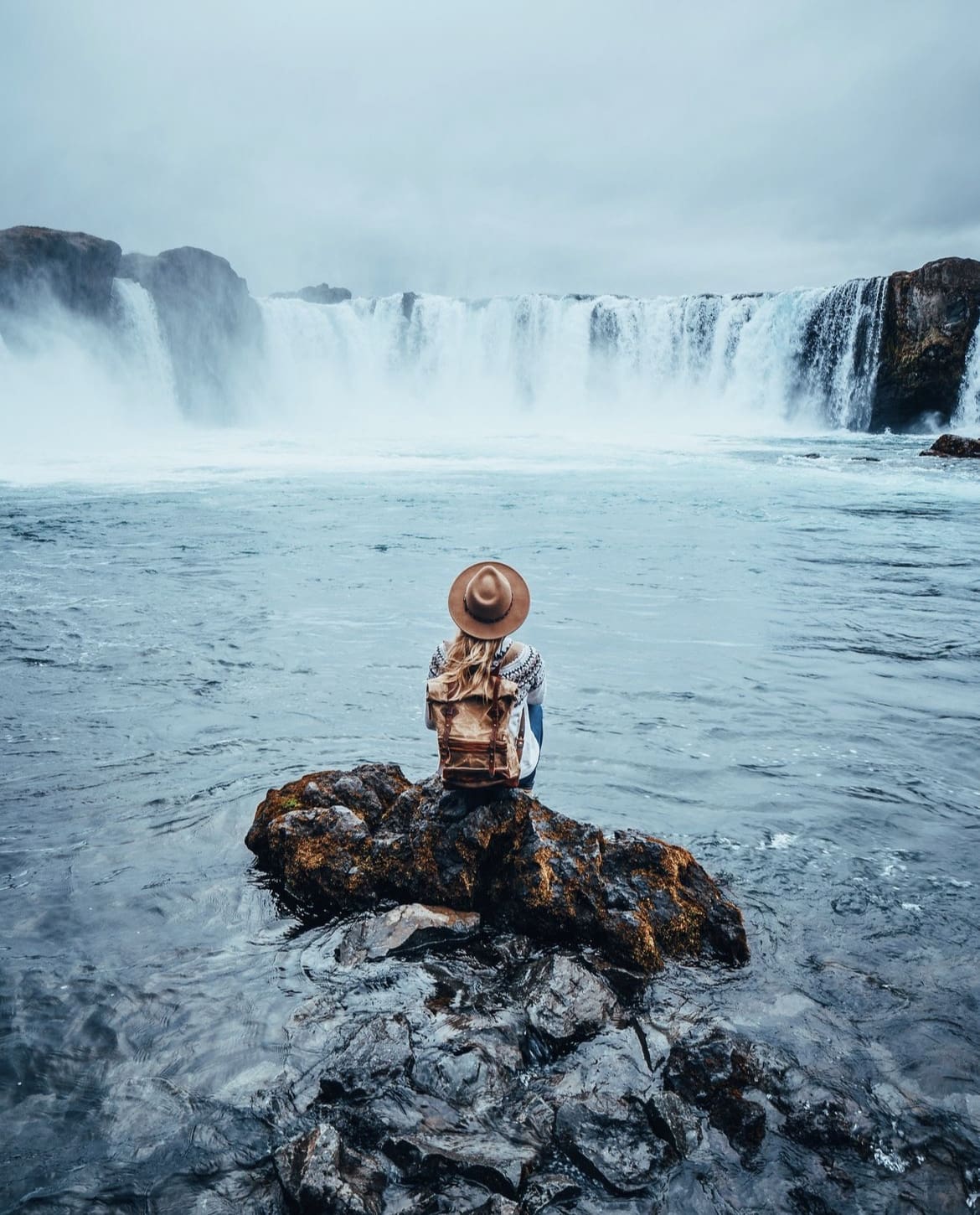
10. Cultural Vibes in Akureyri
Dive into the cultural heart of the north by visiting Akureyri, affectionately known as Iceland's 'Capital of the North'. This charming town not only boasts a vibrant arts scene but also harbors the northernmost botanical garden in the world, which showcases every species of native Icelandic flora as well as an impressive collection of international plants.
Stroll through the town's art galleries, and perhaps catch a performance at the Hof Cultural and Conference Center. For dining, Akureyri offers an array of cozy cafes and restaurants that serve up both traditional Icelandic fare and international cuisine.
Don't miss out on visiting during one of the town’s lively cultural festivals, which truly bring the local traditions to life.
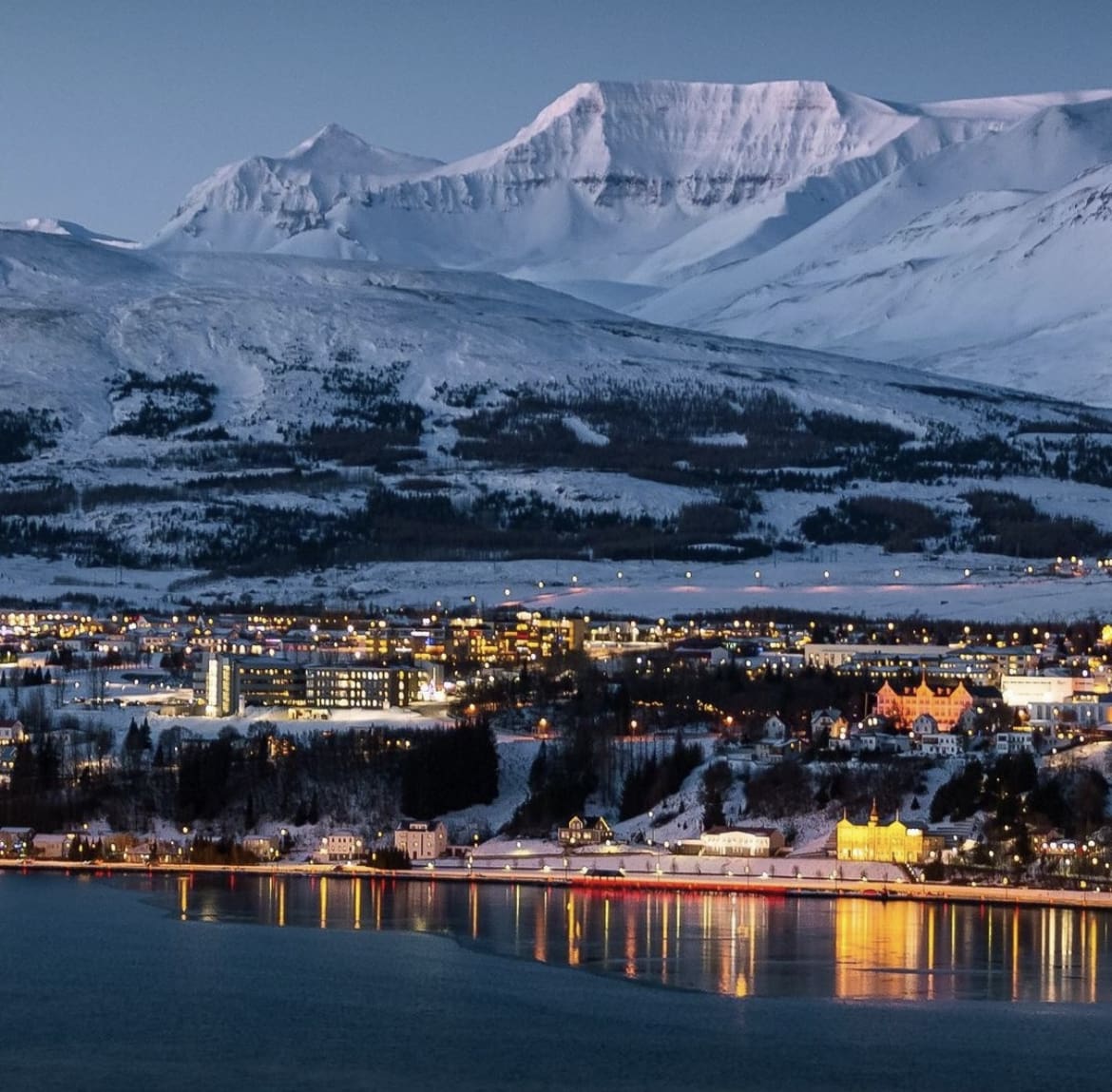
11. Chasing the Northern Lights
Chasing the Northern Lights in North Iceland is a surreal and captivating experience. The region's latitude and minimal light pollution offer optimal conditions for viewing this spectacular natural phenomenon.
For the best chance of success, plan your visit between September and April when the nights are longest. Several local tour operators offer guided tours, which can be invaluable not only for finding the best viewing spots but also for ensuring safety and providing photography tips.
Dress warmly, be patient, and prepare for a truly mesmerizing display that dances across the Arctic sky, adding a mystical layer to the rugged Icelandic landscape.
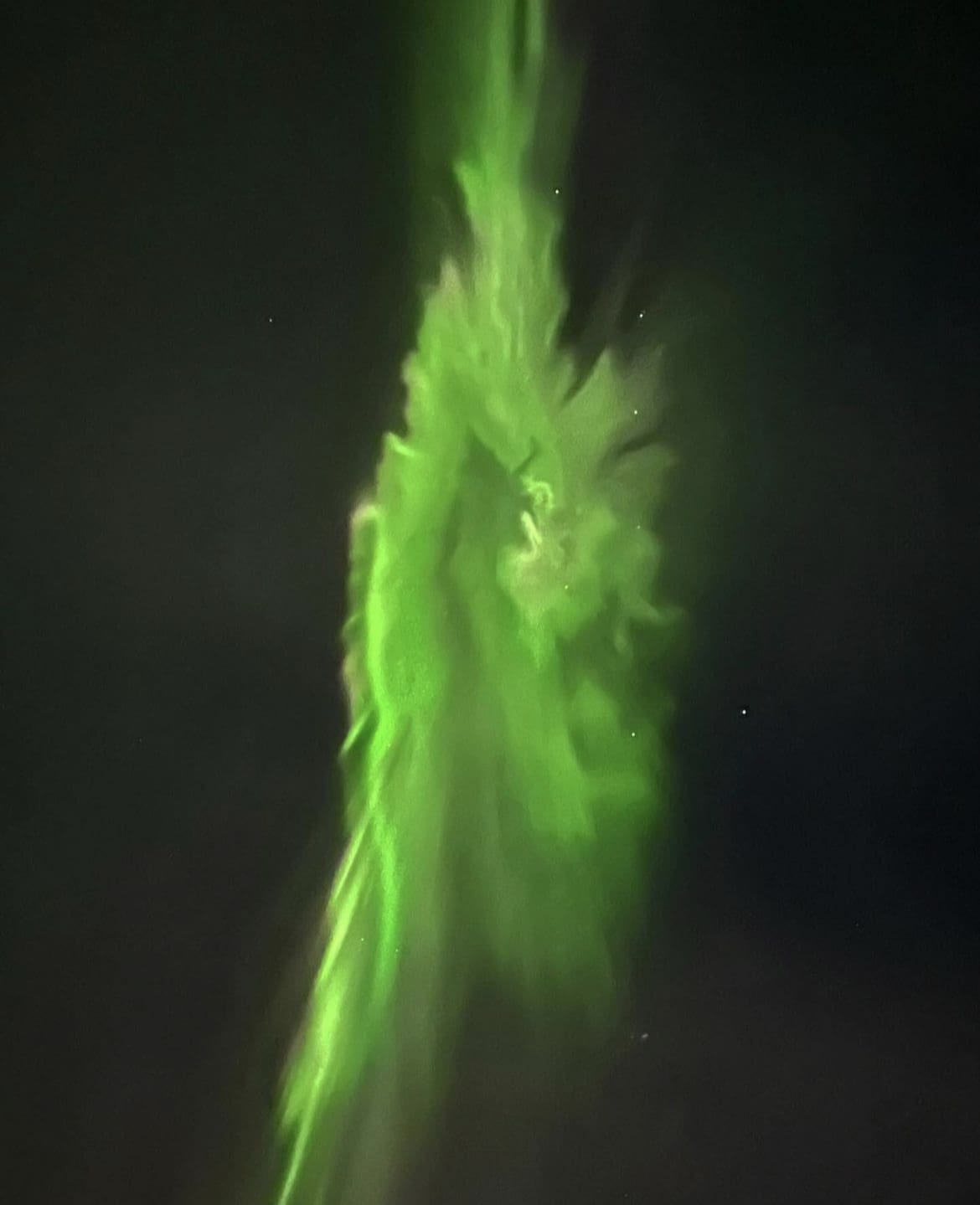
12. Winter Sports on Tröllaskagi Peninsula
For those who crave a bit of adrenaline, the Tröllaskagi Peninsula offers some of the best winter sports opportunities in Iceland. The peninsula is renowned for its challenging ski slopes and abundant snow, making it a paradise for skiers and snowboarders alike.
The town of Dalvík, in particular, is a hotspot with its annual ski festival, which attracts enthusiasts from around the world. Beyond skiing, you can try snowmobiling across the frozen landscapes, offering another exhilarating way to explore the area's natural beauty. Local operators provide all necessary equipment and safety briefings, ensuring a fun and safe experience for all skill levels.
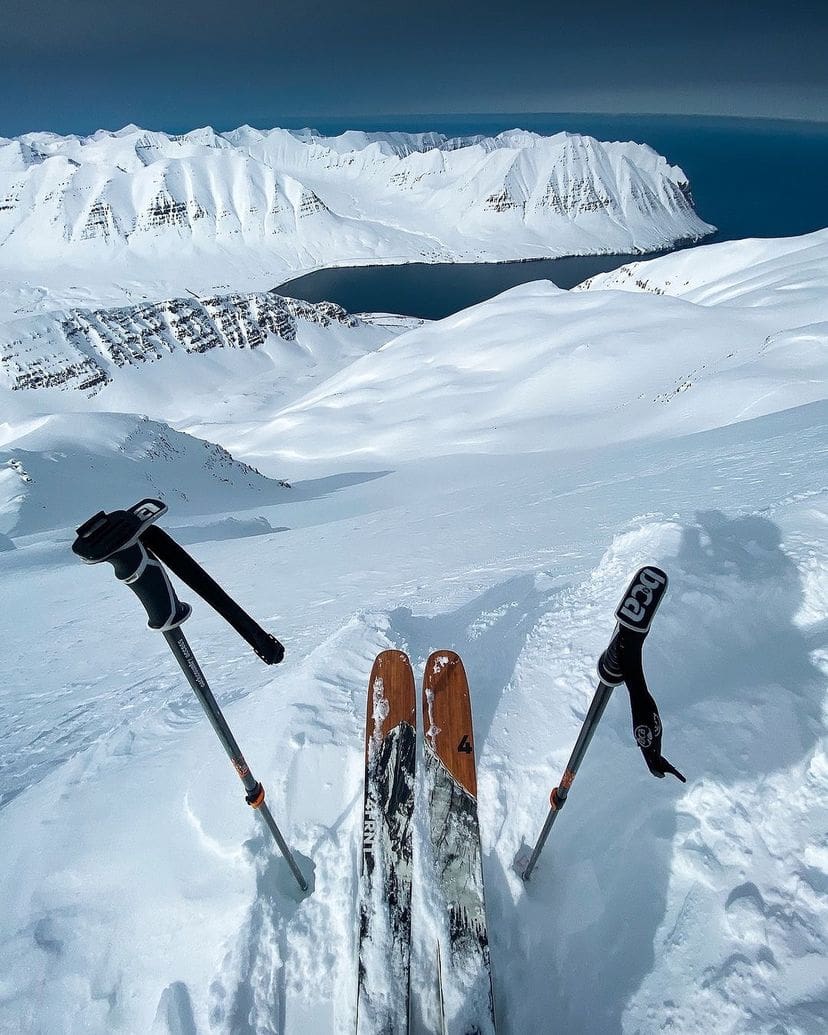
13. Hofsós: The Historical Geothermal Pool
In the quaint town of Hofsós, one of the oldest settled areas in Iceland, the historical geothermal pool stands out as a must-visit. This infinity pool, designed with minimalist architecture, offers breathtaking views over the Skagafjörður bay, making it a perfect spot for relaxation and contemplation.
The pool’s warm waters are inviting, particularly on chilly days, and provide a soothing soak while you take in the stunning North Atlantic scenery. It’s a less crowded alternative to more famous spots like the Blue Lagoon, giving you a peaceful experience immersed in history and natural beauty. Facilities are well-maintained, with changing rooms and showers available for a comfortable visit.
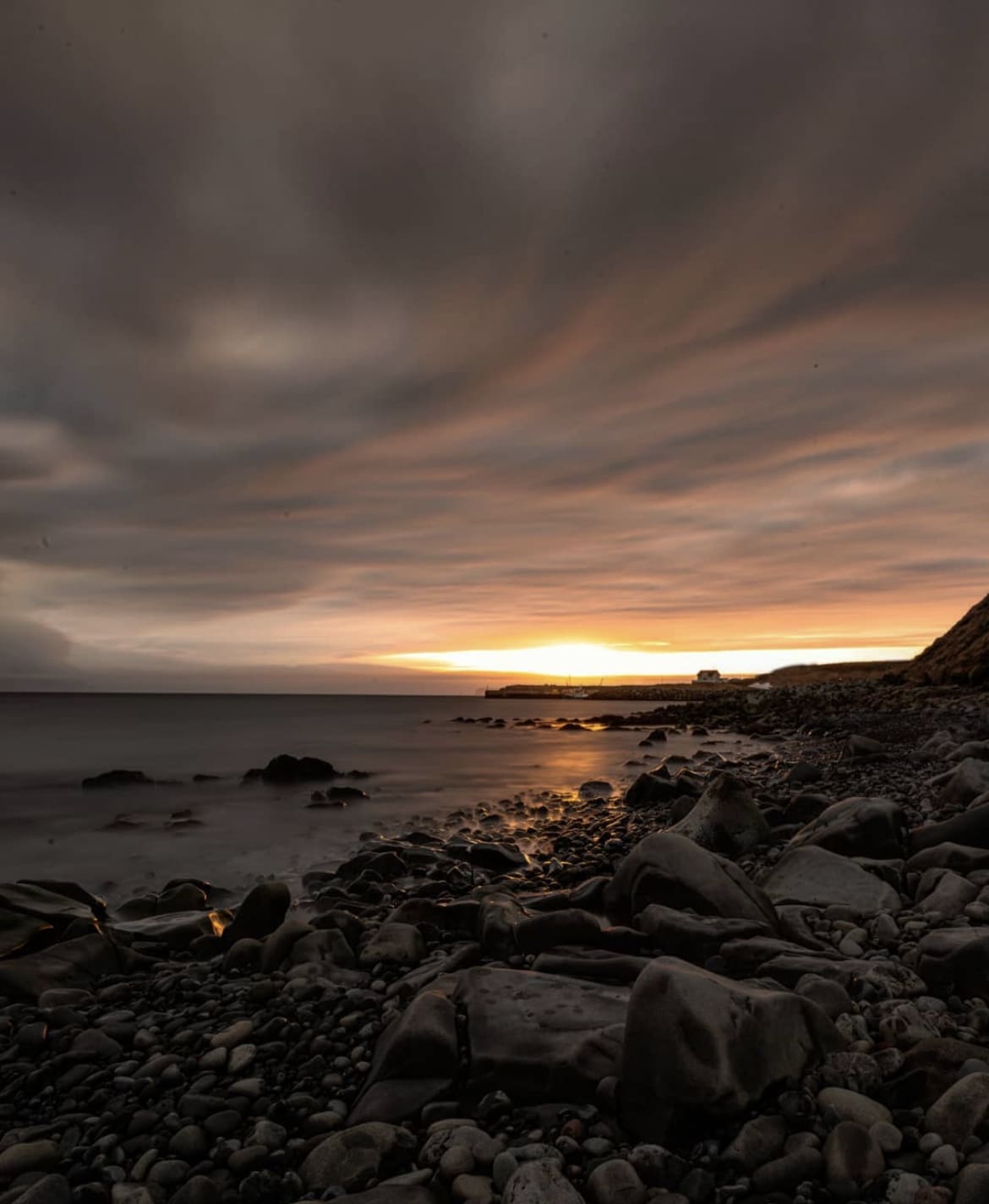
14. Remote Beauty in Siglufjörður
Experience the remote charm of Siglufjörður, once a booming herring fishing hub. This picturesque town is nestled in a narrow fjord and surrounded by mountains, offering stunning views and a tranquil atmosphere. Visit the Herring Era Museum to learn about the town's golden age of herring fishing, which played a crucial role in Iceland's economic development.
The museum offers interactive exhibits, including boat rides and herring salting demonstrations. For a taste of local life, stroll along the marina, visit the small local shops, and enjoy freshly caught seafood at one of the town’s restaurants. Siglufjörður is a gem that provides a glimpse into Iceland’s past and present, wrapped in stunning natural beauty.

15. The Mystical Dimmuborgir
Venture into the eerie landscapes of Dimmuborgir, a vast area of unusually shaped lava fields and volcanic caves located east of Mývatn. Known locally as the 'dark cities', Dimmuborgir's formations are the result of lava that solidified above ground, creating dramatic pillars and archways. The area is steeped in folklore, reputedly the home of trolls and elves. Walking paths of varying difficulty lead you through the striking formations, with informational signs providing insights into the geological and mythical aspects of the area. During winter, the snow-covered lava creates a particularly mystical atmosphere, making it an excellent spot for photography enthusiasts and nature lovers alike.
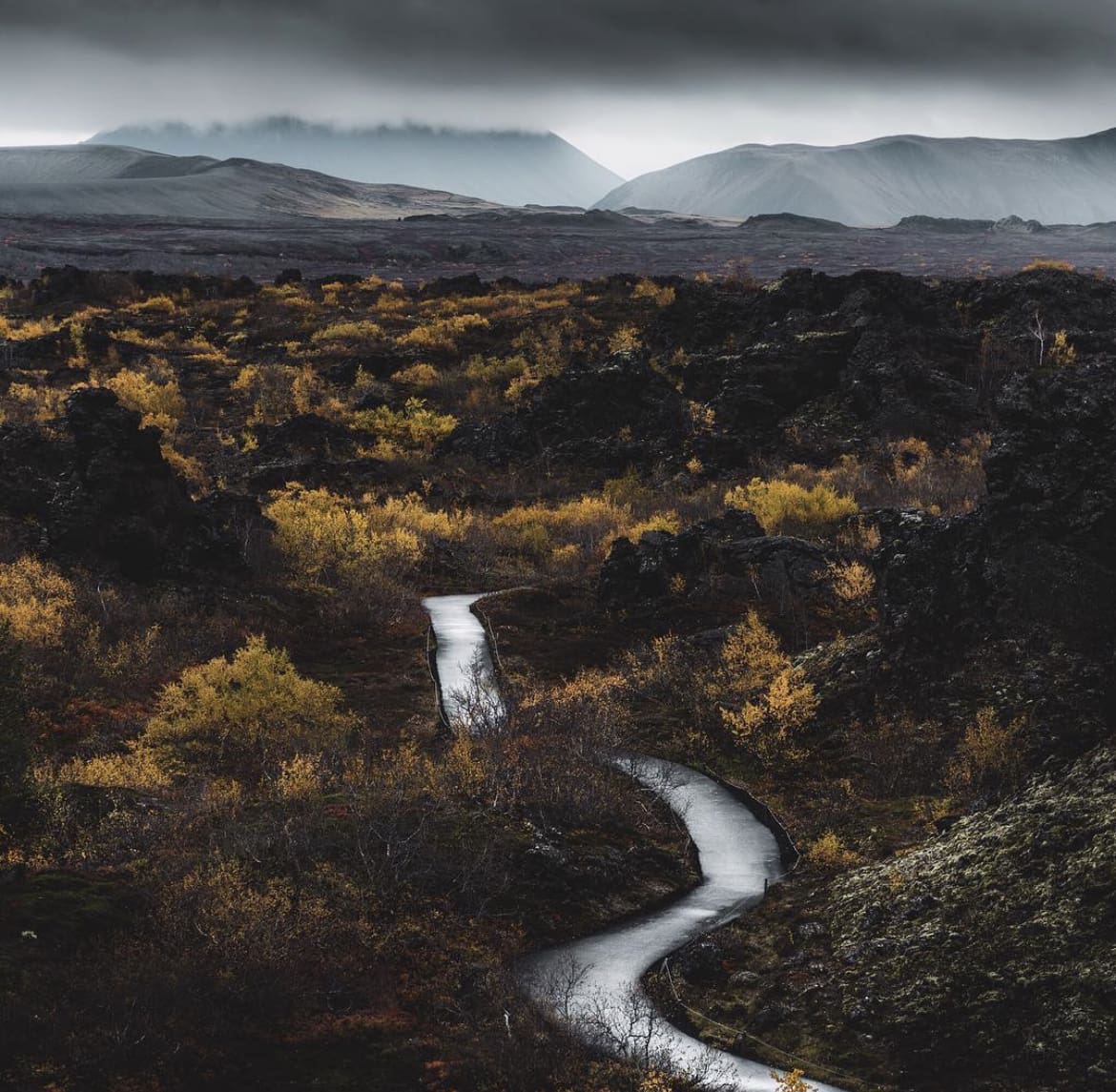
16. Birdwatching at Tjörnes Peninsula
The Tjörnes Peninsul a is a premier destination for birdwatching enthusiasts visiting North Iceland. The peninsula is famous for its rich birdlife, especially during the breeding season, when puffins, guillemots, and other seabirds come to nest along the cliffs.
The best times for birdwatching are from late spring to early summer, when the cliffs teem with life and the sounds of nesting birds fill the air. Pack your binoculars and a good camera with a zoom lens to capture close-up shots of these beautiful creatures in their natural habitat.
Respectful observation is encouraged to avoid disturbing the birds, making this an educational and enjoyable outing for all ages.

17. Sigurgeir’s Bird Museum
Located by Lake Mývatn, Sigurgeir’s Bird Museum stands as a tribute to Iceland's avian diversity. Founded from the personal collection of Sigurgeir Stefánsson, the museum now houses the largest private bird collection in Iceland, featuring specimens of nearly every bird species seen in the country.
The museum’s scenic location offers panoramic views of the lake, providing a perfect backdrop for learning about the local bird species and their environments. Interactive displays and knowledgeable staff enhance the visitor experience, making it a fascinating stop not only for bird lovers but for anyone interested in Icelandic nature and wildlife conservation.
18. Hiking at Hverfjall
For those who enjoy an active adventure, Hverfjall offers one of the most iconic hiking experiences in North Iceland. This massive tephra cone volcano boasts a uniquely circular shape, visible from miles around.
A hike to the rim provides breathtaking views of the surrounding Mývatn area and the opportunity to walk along the edge of a volcanic crater, a rare and exhilarating experience. The hike is relatively easy, making it accessible for most fitness levels, but always wear suitable footwear as the volcanic gravel can be loose underfoot.
Hverfjall's dramatic landscape serves as a reminder of the powerful natural forces that have shaped Iceland's extraordinary terrain.
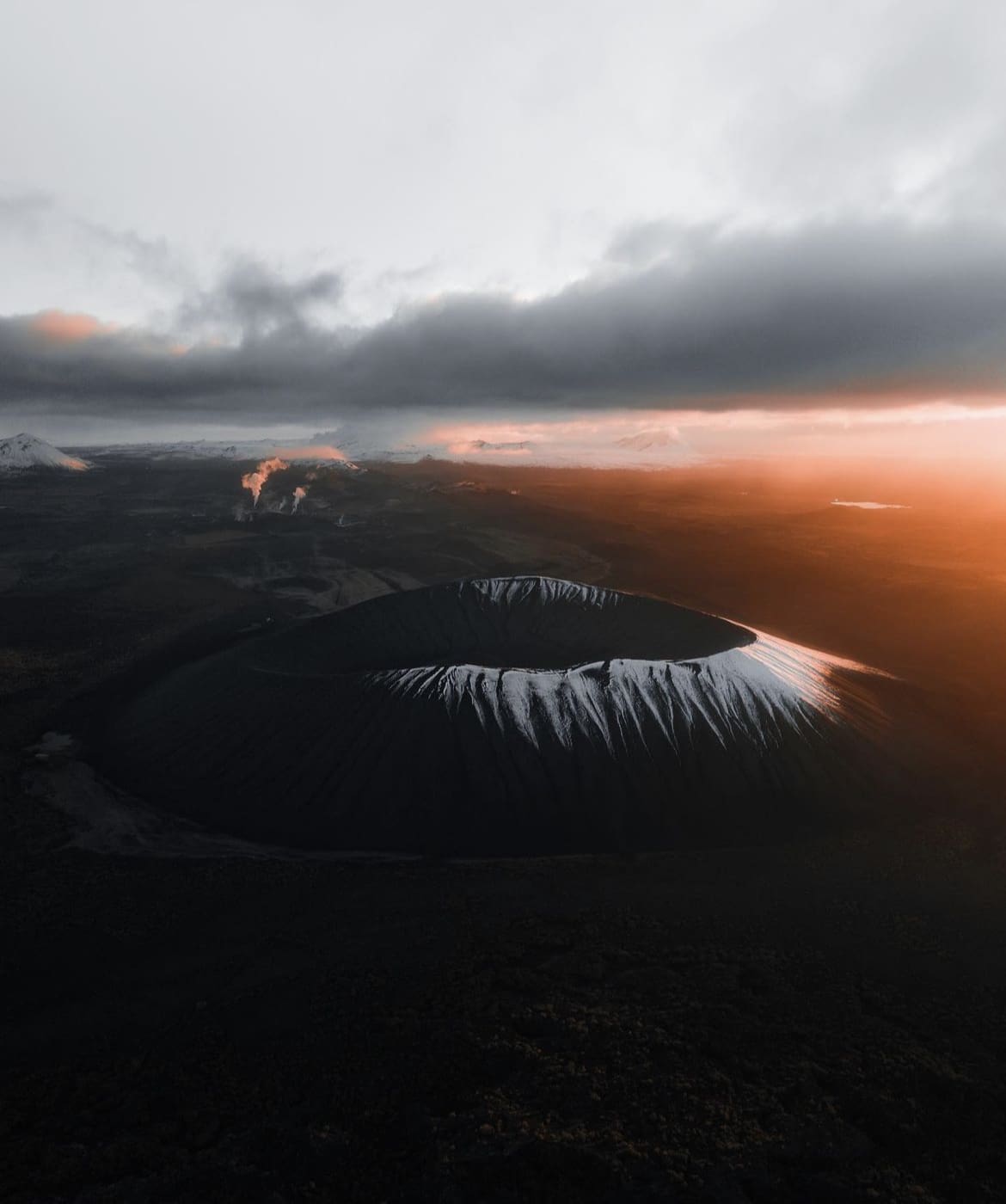
19. Rauðasandur’s Dramatic Landscapes
Venture off the beaten path to Rauðasandur, a strikingly beautiful red sand beach unlike any other in Iceland. Located in the Westfjords, this expansive beach shifts from golden to orange and red hues, depending on the sunlight.
The contrast between the vivid sands and the turquoise waters makes Rauðasandur a photographer’s paradise. The area is also rich in birdlife, with frequent sightings of seals lounging along the shore. Access to Rauðasandur can be challenging due to its remote location and rough roads, so a 4x4 vehicle is recommended.
Once there, the serene and almost surreal environment provides a perfect setting for long, reflective beach walks away from the crowds.
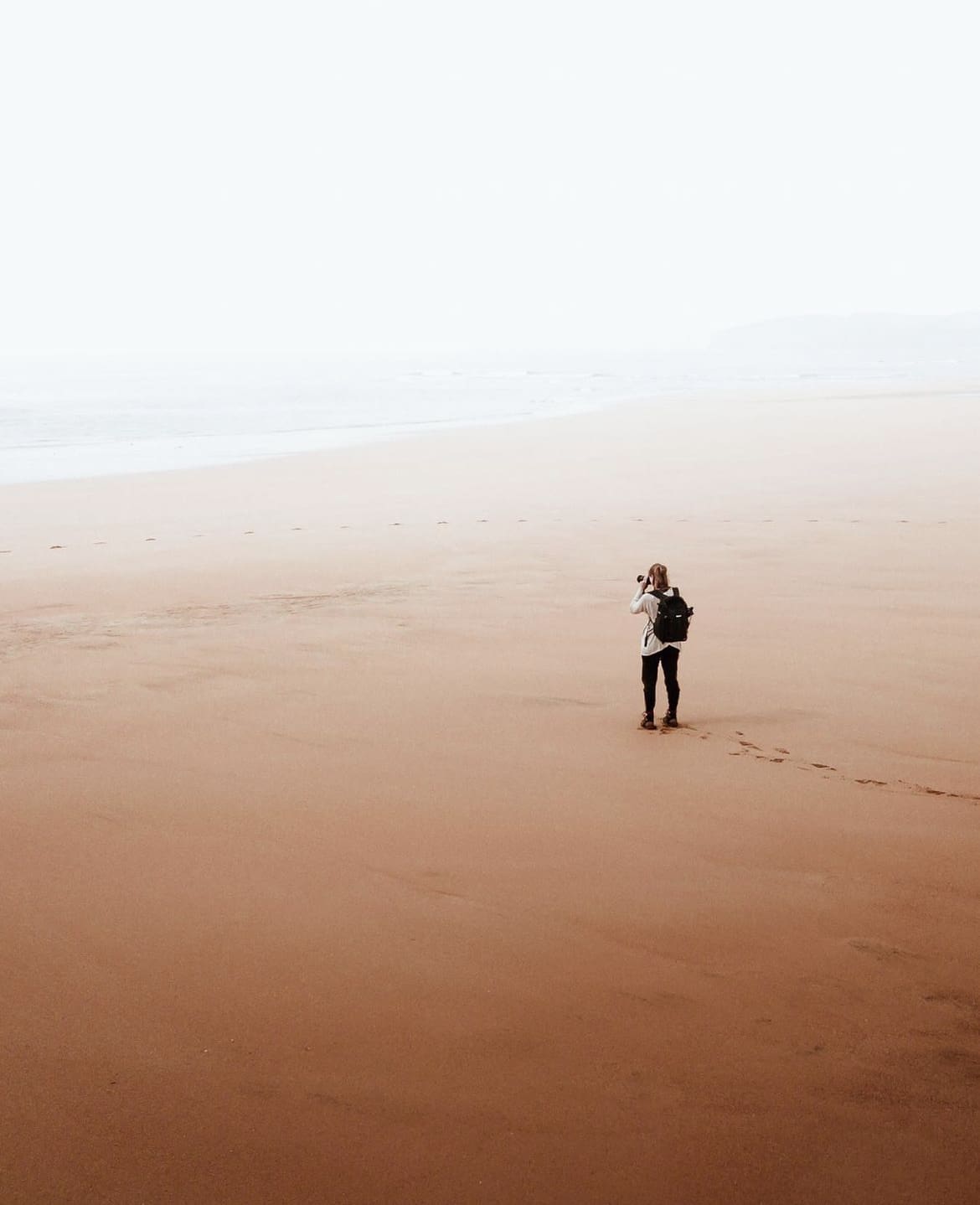
20. Ice Caving by Katla Volcano
For a truly unique adventure, explore the ice caves near the active Katla Volcano. These natural wonders are formed by the heat of the volcano underneath the glacier, creating stunning caves of ice with beautiful formations and colors.
Guided tours are necessary for safety and to fully appreciate the geological significance of these formations. Equipped with helmets, headlamps, and crampons, you’ll venture into another world, exploring the blue-hued interiors of Iceland’s dynamic geology.
The contrast between the cold ice and the heat from the earth creates an unforgettable experience, showcasing the powerful natural forces at work in Iceland.
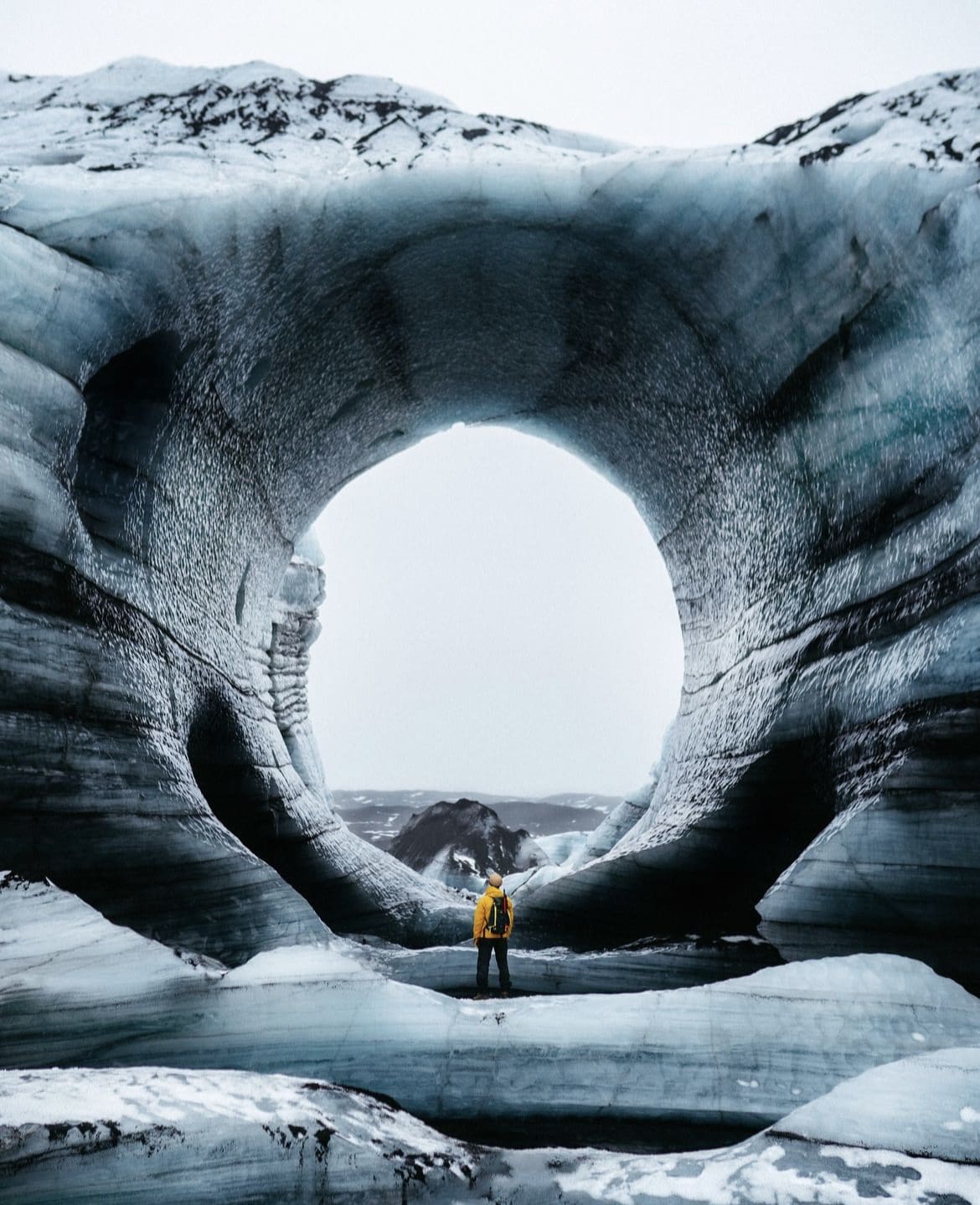
North Iceland offers a breathtaking array of activities that cater to all tastes, from the tranquility of geothermal pools and the majesty of cascading waterfalls to the thrill of ice caves and the cultural depth of historical towns. Each destination and activity in this guide provides a window into the soul of Iceland, combining its raw natural beauty with a rich tapestry of history and culture.
Whether you seek serene solitude, educational enrichment, or adrenaline-fueled adventures, North Iceland invites you to explore its many wonders. So pack your spirit of adventure, respect for nature, and a hearty appetite for discovery to fully embrace the unparalleled experiences awaiting in North Iceland.
Tips For Visiting North Iceland
- Traveling to North Iceland : Akureyri Airport is the main gateway, with frequent flights from Reykjavik. Car rentals are available at the airport, offering a convenient way to explore the region.
- Best Time to Visit : Summer offers midnight sun and accessible roads, while winter boasts the Northern Lights and dramatic snowy landscapes.
- Local Customs : Embrace the Icelandic respect for nature. Stick to marked trails and roads, and always check weather conditions before heading out.
By weaving together the diverse attractions and practical travel tips, this guide not only prepares you for a journey to North Iceland but also ignites a passion to delve into its enchanting landscapes and captivating stories. So, lace up your boots, charge your cameras, and get ready to explore the untamed beauty of North Iceland.

The 20 Best Things To Do In Paris
April 17, 2024
The Best Things to Do in Paris, France
Paris, the City of Light, needs no introduction. It's a destination that effortlessly combines history, art, culture, and romance, making it a must-visit for travelers from around the globe.
Whether you're a first-time visitor or a seasoned traveler looking for new experiences, Paris offers something for everyone. From iconic landmarks to hidden gems tucked away in cobblestone streets, this guide will take you on a journey through the best things to do in Paris.
Welcome to Paris , where every street corner tells a story and every café invites you to linger a little longer. With its timeless beauty and vibrant energy, Paris captures the hearts of all who visit.
From the majestic Eiffel Tower to the charming neighborhoods of Montmartre and Le Marais, there's no shortage of adventures awaiting you in the French capital.
So, grab a croissant, sip on some café au lait, and get ready to explore the best that Paris has to offer.
1. Climb the Eiffel Tower
No visit to Paris would be complete without a trip to the iconic Eiffel Tower. Built for the 1889 World's Fair, this towering structure has become synonymous with the city itself. As you ascend the tower, you'll be treated to breathtaking views of Paris spread out before you. From the sprawling cityscape to the meandering Seine River, the panoramic vistas are nothing short of spectacular.
Tips for Visiting: Beat the crowds by purchasing your tickets in advance online. Consider visiting the tower early in the morning or late in the evening for smaller crowds and magical views of the city illuminated at night. And don't forget your camera – you'll want to capture every moment of this unforgettable experience.
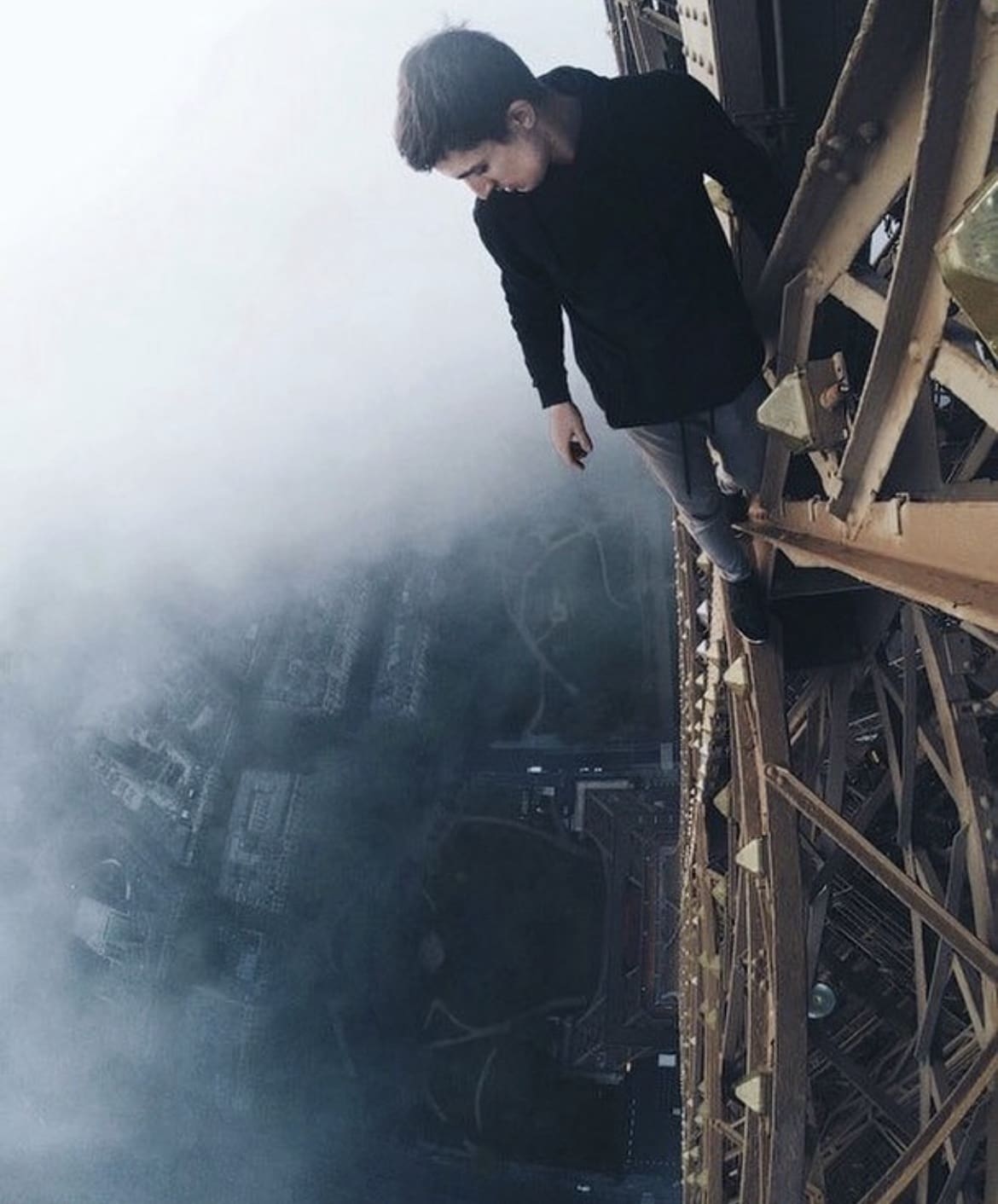
2. Visit the Louvre Museum
Home to some of the world's most famous works of art, the Louvre Museum is a cultural treasure trove waiting to be explored. From the enigmatic smile of the Mona Lisa to the majestic beauty of the Venus de Milo, the museum's collection spans thousands of years of artistic history. But it's not just the masterpieces inside that captivate visitors – the museum itself is a work of art, housed in a stunning palace that once served as a royal residence.
Tips for Visiting: To make the most of your visit, plan your route in advance and prioritize the works of art you most want to see. Consider purchasing a skip-the-line ticket to avoid long queues, especially during peak hours. And don't forget to take breaks – with over 35,000 works on display, exploring the Louvre can be a marathon, not a sprint.
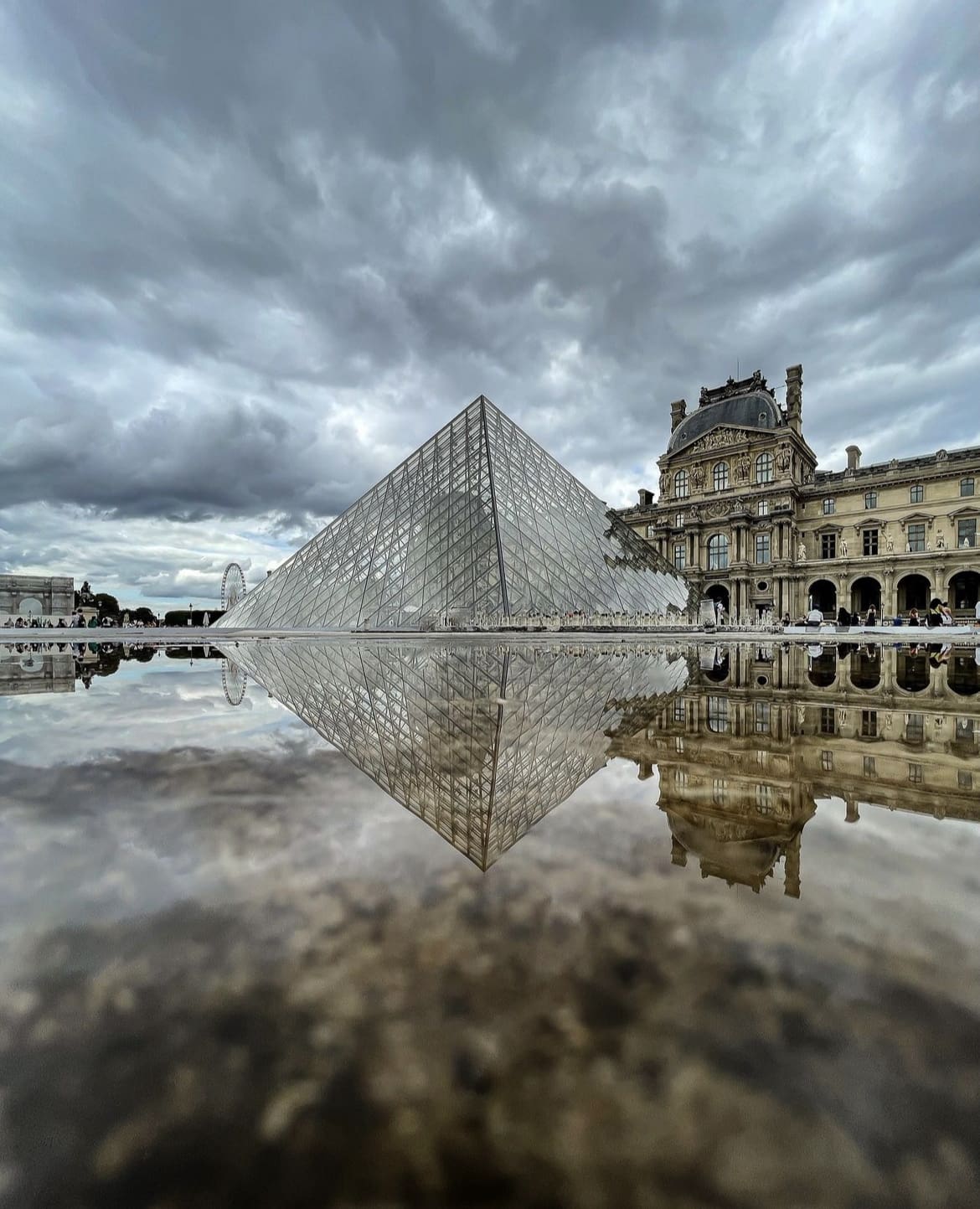
3. Explore Montmartre
Step back in time and immerse yourself in the bohemian charm of Montmartre, a neighborhood steeped in art, history, and romance. From the winding streets lined with quaint cafés to the bustling Place du Tertre, where artists set up their easels to capture the essence of Paris, Montmartre is a feast for the senses. Be sure to visit the iconic Sacré-Cœur Basilica, perched atop the highest point in the city and offering sweeping views of Paris below.
Tips for Visiting: Wear comfortable shoes – Montmartre's cobblestone streets can be a bit uneven. Take your time exploring the neighborhood's hidden gems, from secret gardens to tucked-away galleries. And don't be afraid to strike up a conversation with the locals – you never know what hidden treasures they might recommend.
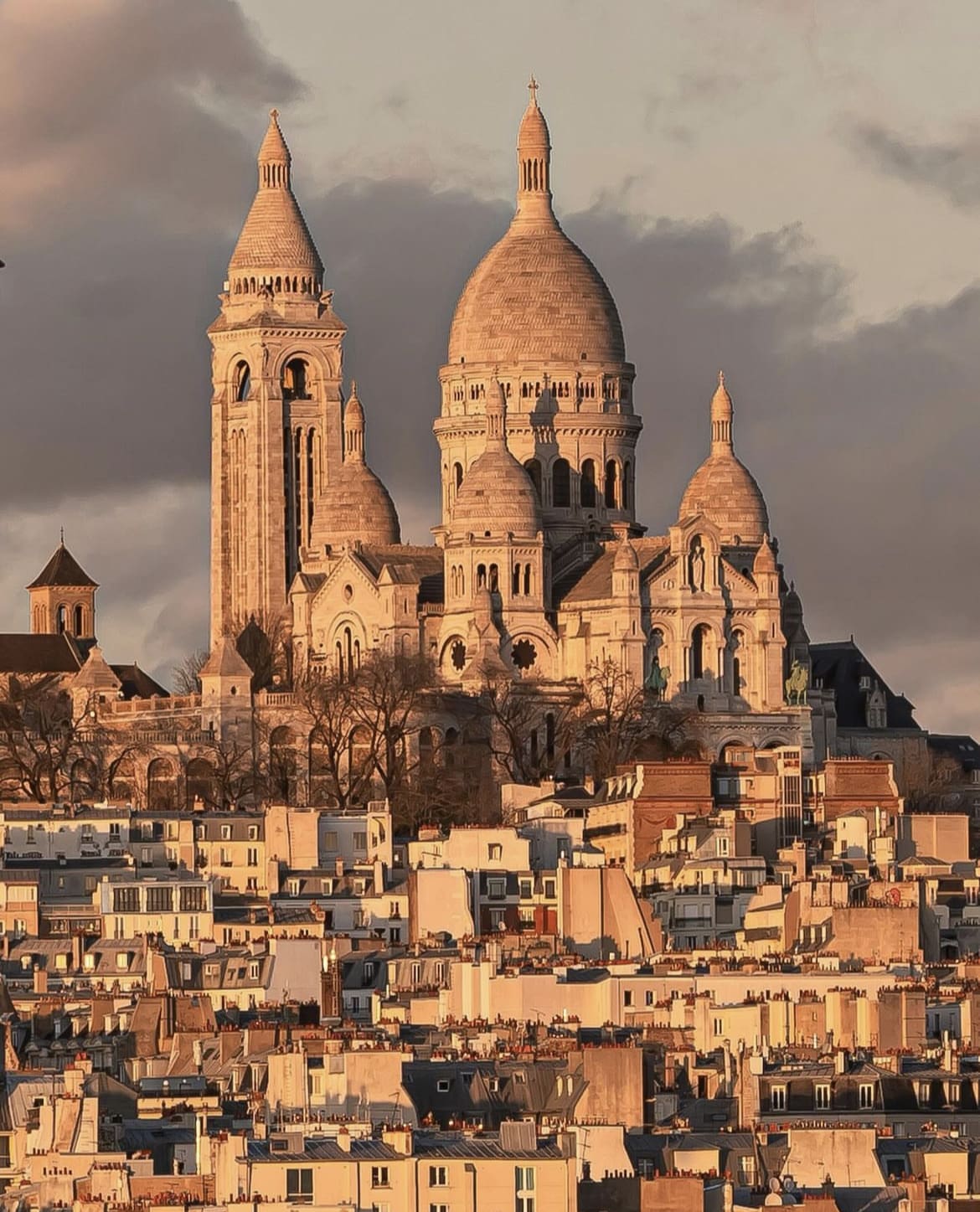
4. Enjoy a Seine River Cruise
There's something undeniably magical about seeing Paris from the Seine. A river cruise offers a different perspective of the famed cityscape, gliding past historic landmarks like the Louvre, Notre-Dame, and the Eiffel Tower, all illuminated against the night sky. Whether you opt for a simple sightseeing tour or splurge on a dinner cruise, the Seine offers a picturesque escape from the bustling city streets.
Tips for Visiting: For a romantic experience, choose an evening cruise to see the city lights twinkling along the water. Many cruises offer audio guides in multiple languages, helping you understand the rich history behind each passing structure. Also, booking tickets in advance can often secure you a better deal or a guaranteed spot on popular cruises.
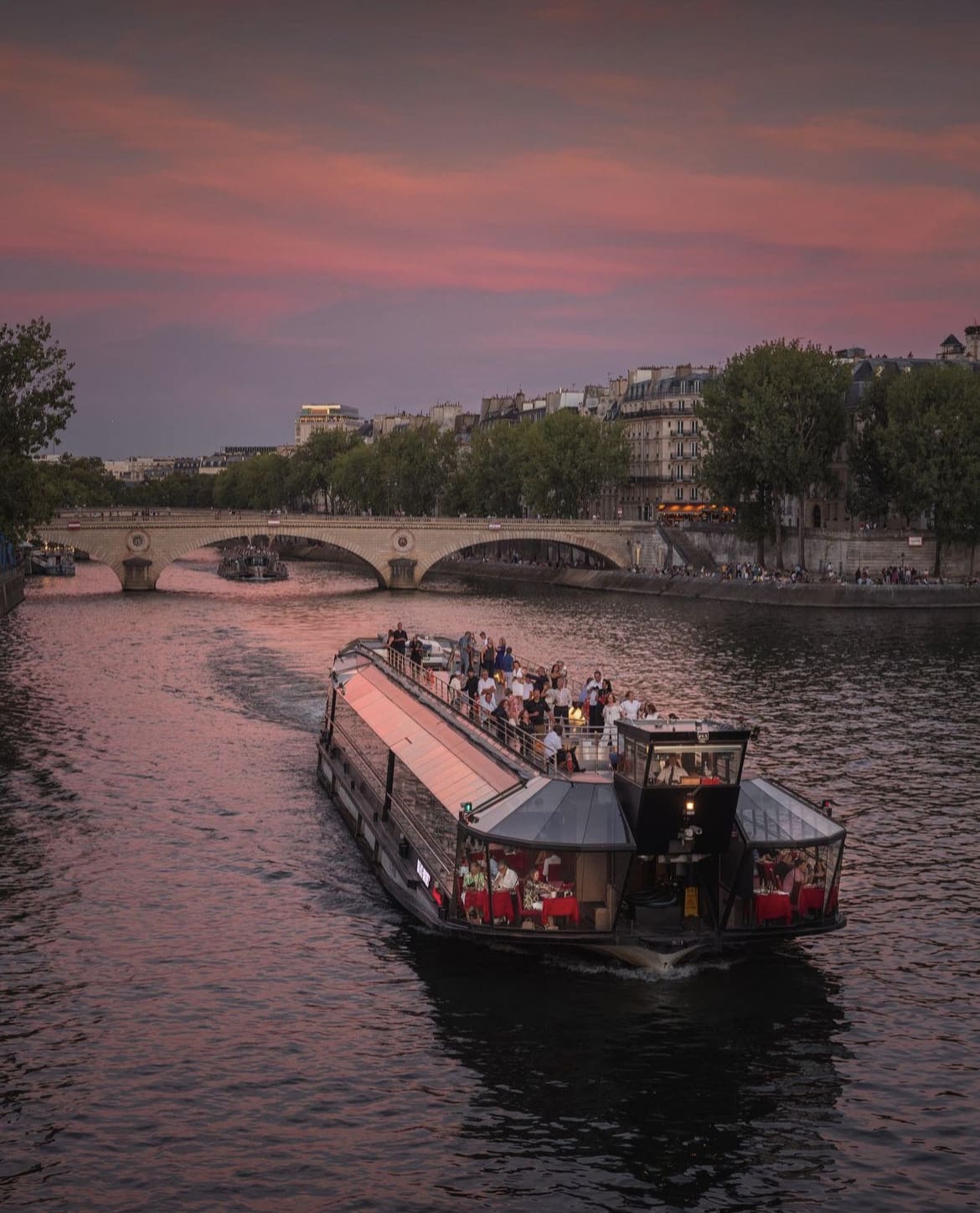
5. Tour Notre-Dame Cathedral
Despite suffering significant damage in a 2019 fire, Notre-Dame remains a monumental site, embodying the heart of Parisian history and architecture. While the interior and the rooftop are closed for restoration, you can still admire the façade's intricate French Gothic details and the surrounding area, which buzzes with the energy of locals and tourists alike.
Tips for Visiting: Visit the nearby Ile Saint-Louis for a stroll and some of the best ice cream at Berthillon, or explore the Deportation Martyrs' Memorial, a poignant site tucked away at the tip of the Île de la Cité. Stay updated on the restoration process and available tours through the cathedral’s official website or local tourism boards.
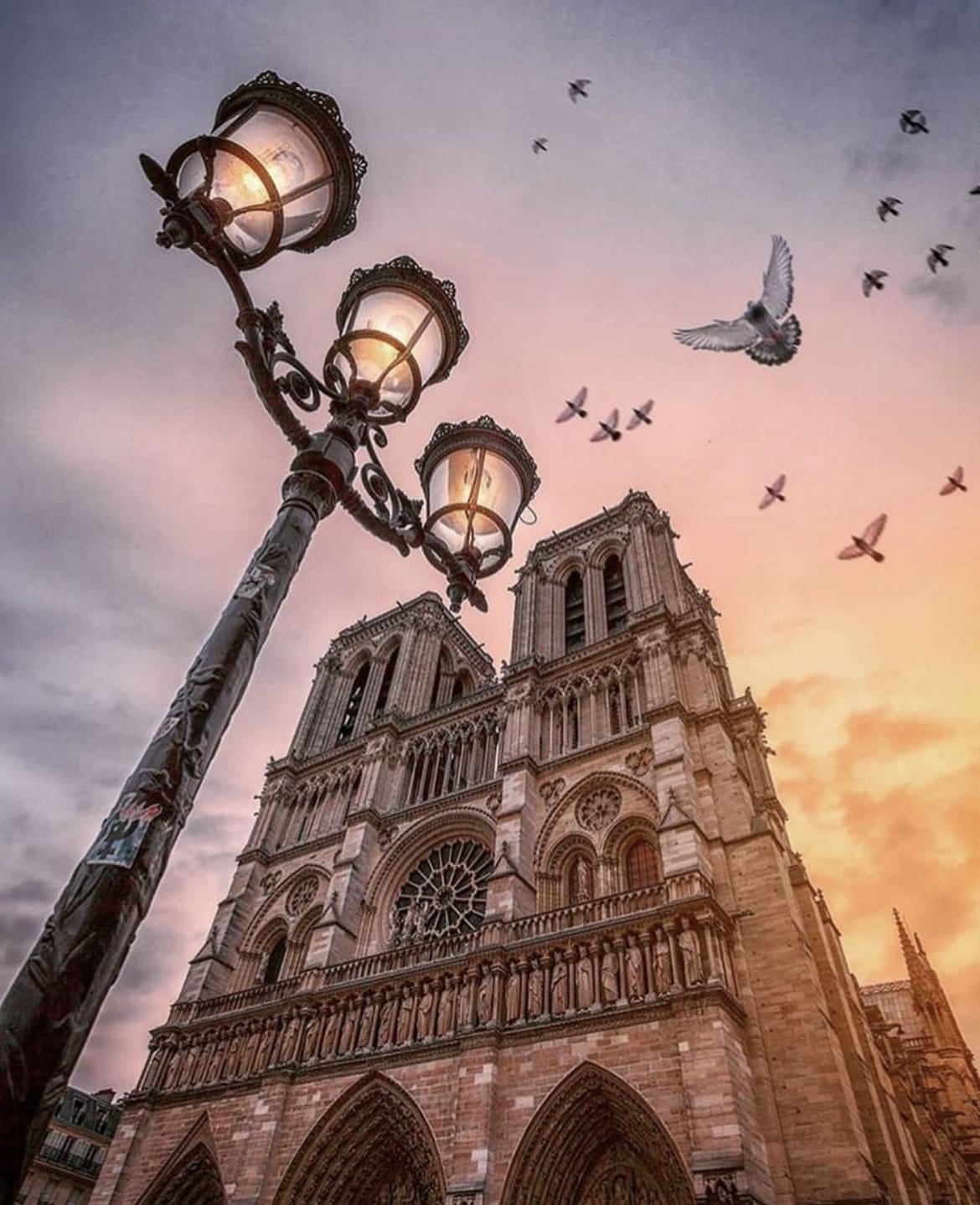
6. Stroll Through the Luxembourg Gardens
Created in 1612 by Marie de' Medici, the Luxembourg Gardens are a green haven in the middle of the Latin Quarter. The gardens feature beautifully manicured lawns, statuesque fountains, and the stunning Luxembourg Palace. It’s a perfect spot for a leisurely stroll, a jog, or just to sit and enjoy a sunny day with a good book.
Tips for Visiting: Pack a picnic to enjoy on the lawns or grab a chair by the central fountain for prime people-watching. The gardens also host free photo exhibitions on the fence along Rue de Médicis and Rue de Vaugirard, adding an artistic flair to your visit.

7. Discover the Musée d’Orsay
Housed in a beaux-arts railway station on the left bank of the Seine, the Musée d’Orsay is renowned for its impressive collection of Impressionist and Post-Impressionist masterpieces. Here, art lovers can admire works by painters like Van Gogh, Monet, Degas, and Renoir. The museum itself is a work of art, with a striking clock window offering views over Montmartre.
Tips for Visiting: Purchase a "skip-the-line" ticket online to avoid long waits, especially during peak tourist seasons. Start at the top floor and work your way down to enjoy the artwork without rushing, and make sure to check out the temporary exhibitions, which often feature lesser-known artists and themes.
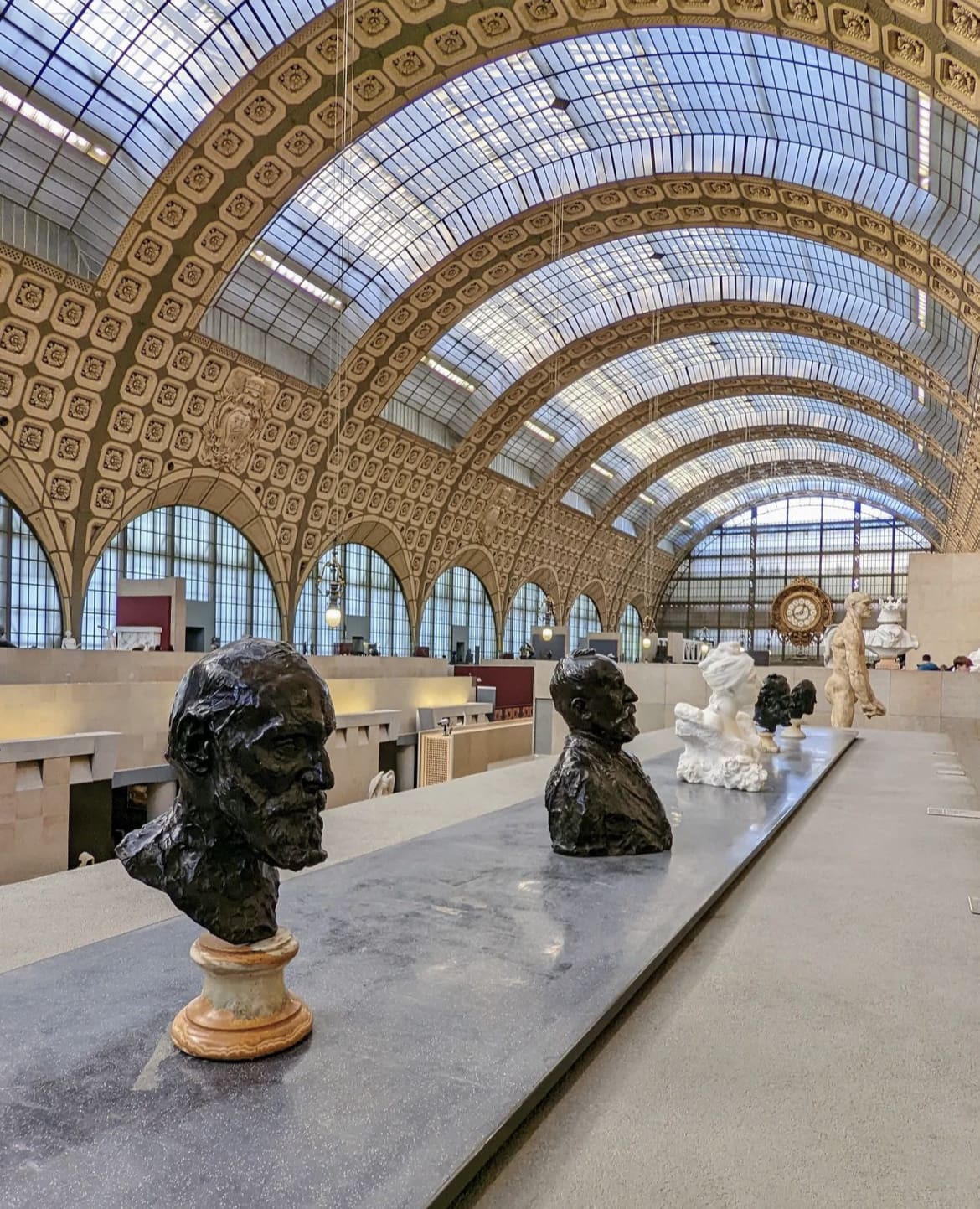
8. Shop in Le Marais
Le Marais is not only one of the most historic districts of Paris but also a top destination for shopping enthusiasts. Here, you can find everything from high-end boutiques to vintage shops offering unique finds. The area retains a distinctly medieval feel with its narrow streets and historic buildings, adding to the shopping experience.
Tips for Visiting: Spend some time wandering through the streets like Rue des Rosiers and Rue des Francs-Bourgeois. Don't miss the concept stores and independent fashion boutiques that reflect Paris's reputation as a fashion capital. Sundays are particularly lively in Le Marais, as most shops remain open while other parts of the city might close.
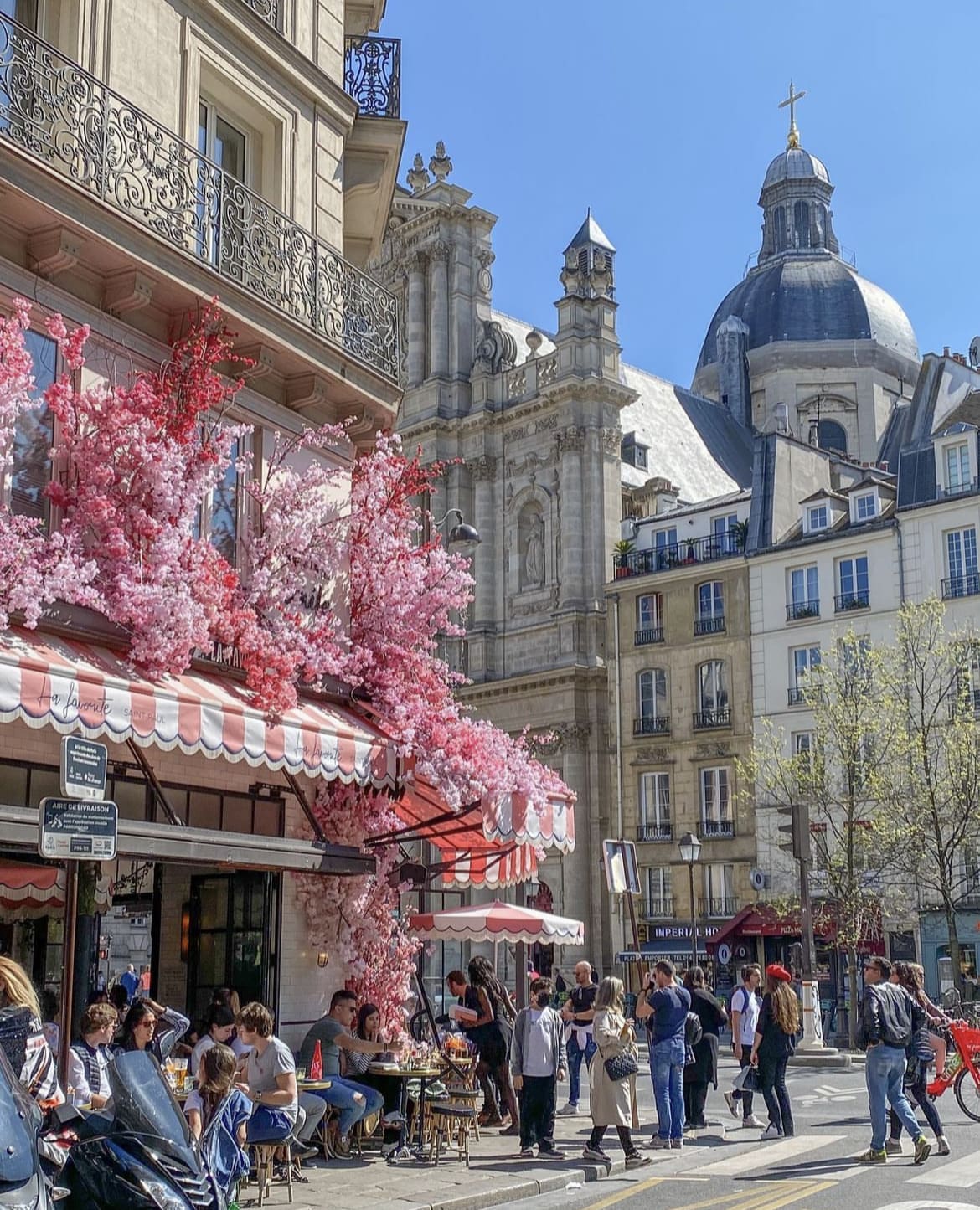
9. Watch a Show at the Moulin Rouge
For a truly Parisian night out, nothing beats the experience of watching a cabaret show at the famous Moulin Rouge. Known for its French Cancan and extravagant performances, the Moulin Rouge offers a glimpse into the glamorous Belle Époque period. The theater's rich history and vibrant atmosphere make it a must-visit for anyone seeking the quintessential Paris nightlife.
Tips for Visiting: It's advisable to book your tickets well in advance as shows can sell out quickly, especially during tourist seasons. Opt for a dinner-show package to enjoy some exquisite French cuisine while you watch the performance. Dress elegantly as the venue maintains a strict dress code to match its upscale ambiance.
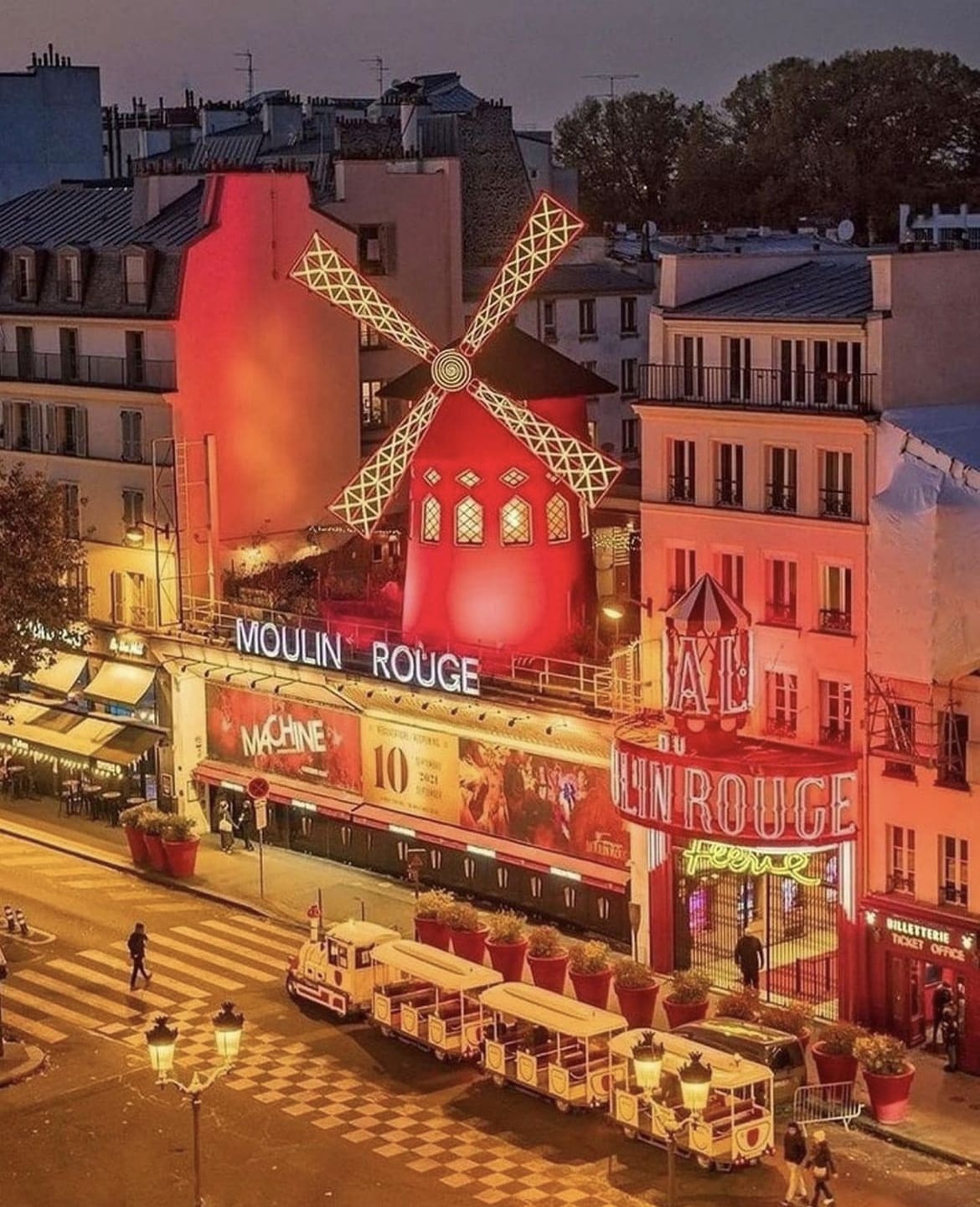
10. Visit the Sainte-Chapelle
Located within the medieval Palais de la Cité, the Sainte-Chapelle is a hidden treasure of Paris. This stunning chapel, known for its breathtaking stained glass windows, features 1,113 scenes from the Old and New Testaments. The upper chapel, particularly, radiates with light and color, creating a mesmerizing effect that draws visitors from around the world.
Tips for Visiting: Try to visit on a sunny day when the natural light brings out the vivid colors of the stained glass to full effect. Buying a "skip-the-line" ticket can save you time, allowing more of your day to explore other nearby attractions like the Conciergerie.
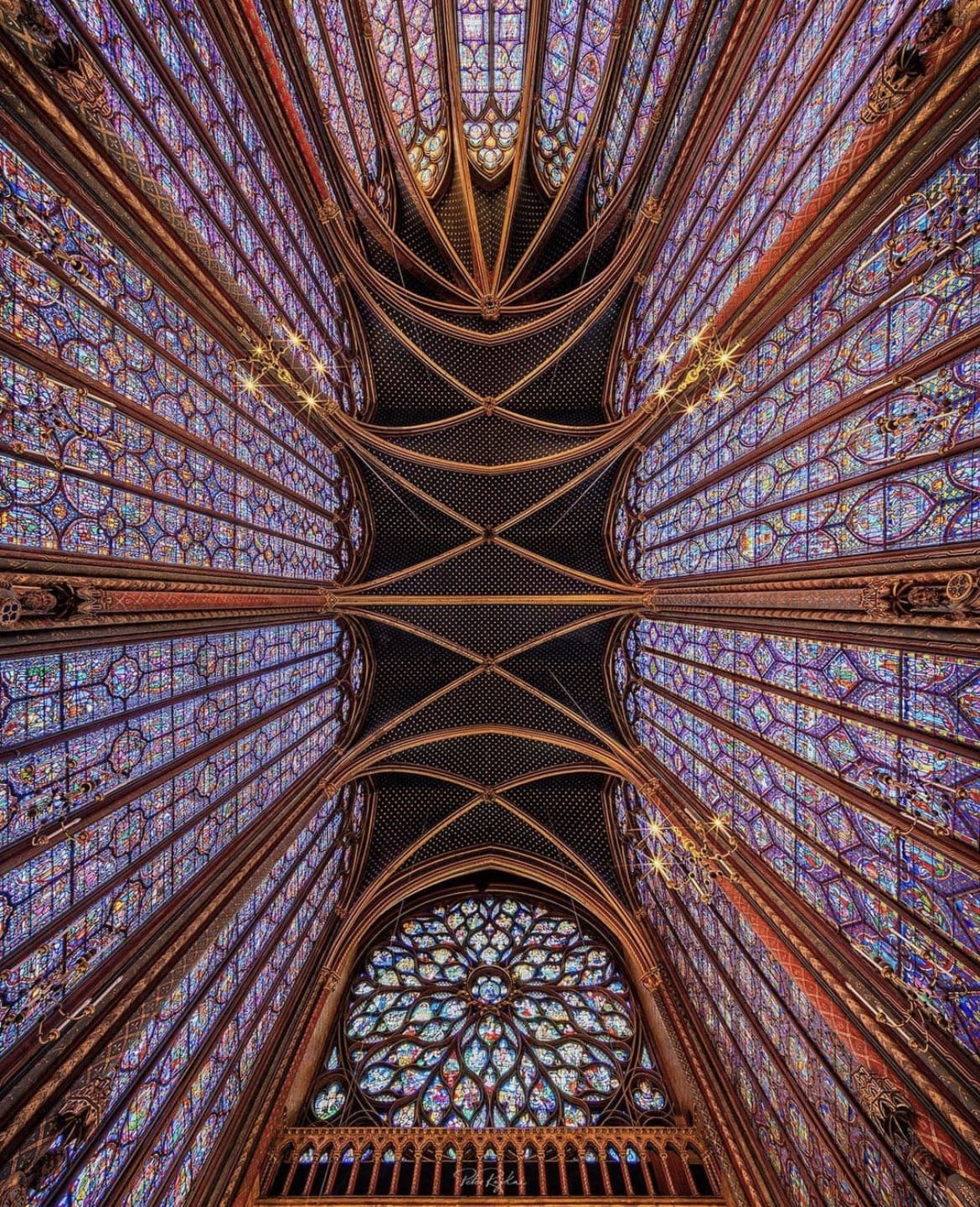
11. Sample French Cuisine in a Bistro
No trip to Paris would be complete without indulging in the local cuisine at a traditional French bistro. From escargot and foie gras to coq au vin and ratatouille, the flavors of French cuisine can best be experienced in the casual yet intimate setting of a Parisian bistro.
Tips for Visiting: Look for bistros where locals eat, often slightly off the main tourist paths. Don't hesitate to try the plat du jour, which is usually a well-prepared dish using seasonal ingredients. Pair your meal with a glass of French wine, recommended by the house for a truly local dining experience.
12. Walk Along the Champs-Élysées
The Champs-Élysées, often referred to as "the world's most beautiful avenue," stretches from the Place de la Concorde to the Arc de Triomphe. This iconic boulevard is lined with cinemas, cafes, and luxury specialty shops, making it a premier destination for anyone looking to soak in Parisian luxury and bustling street life.
Tips for Visiting: Visit during a festive season like Christmas when the avenue is spectacularly lit up, or on Bastille Day for an impressive military parade. While the avenue is known for its high-end shopping, don't miss the less obvious cultural spots like the Grand Palais, which often hosts major art exhibitions and events.
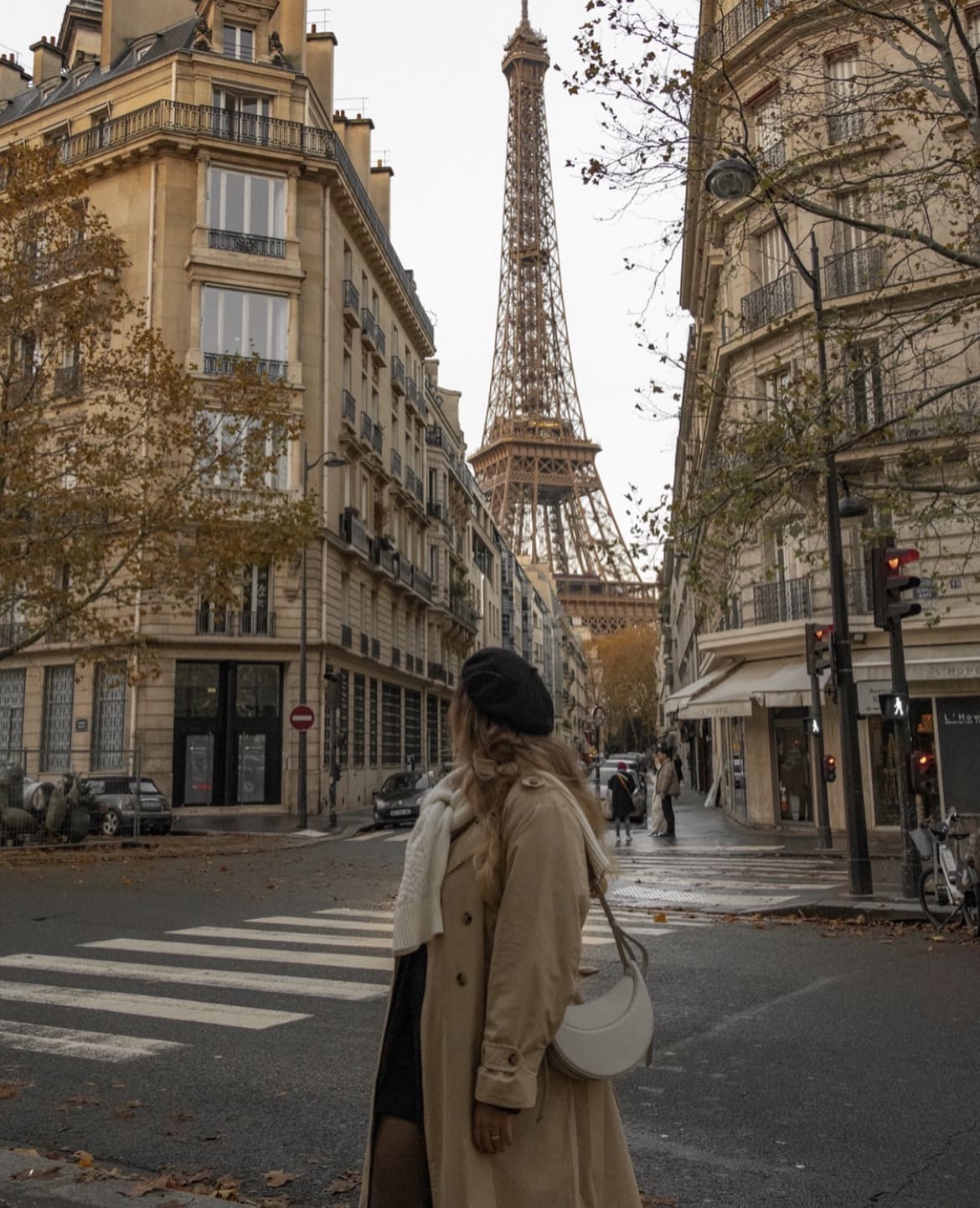
13. Explore the Catacombs of Paris
Beneath Paris's streets lies a shadowy underworld known as the Catacombs, a network of old quarry tunnels repurposed to hold the remains of over six million people. This macabre but fascinating attraction provides a unique glimpse into the history of Paris and the solution to its historic cemetery overcrowding.
Tips for Visiting: The Catacombs are cooler than street level, so bring a sweater. Tickets often sell out due to visitor limits, so book in advance and be prepared for a descent and ascent of narrow stairs. Remember, it's not suitable for those claustrophobic or uncomfortable with human remains.

14. Visit the Palace of Versailles
The Palace of Versailles is a symbol of the absolute monarchy of the Ancien Régime and is as stunning today as it was centuries ago. With its opulent architecture, sprawling gardens, and the famous Hall of Mirrors, Versailles offers a remarkable insight into French royal history and extravagance.
Tips for Visiting: Travel to Versailles early in the day to avoid crowds, especially in the palace. Consider renting a golf cart or bike to explore the extensive gardens, or plan your visit on a day when the musical fountains show is scheduled, adding an extra layer of beauty to the gardens.
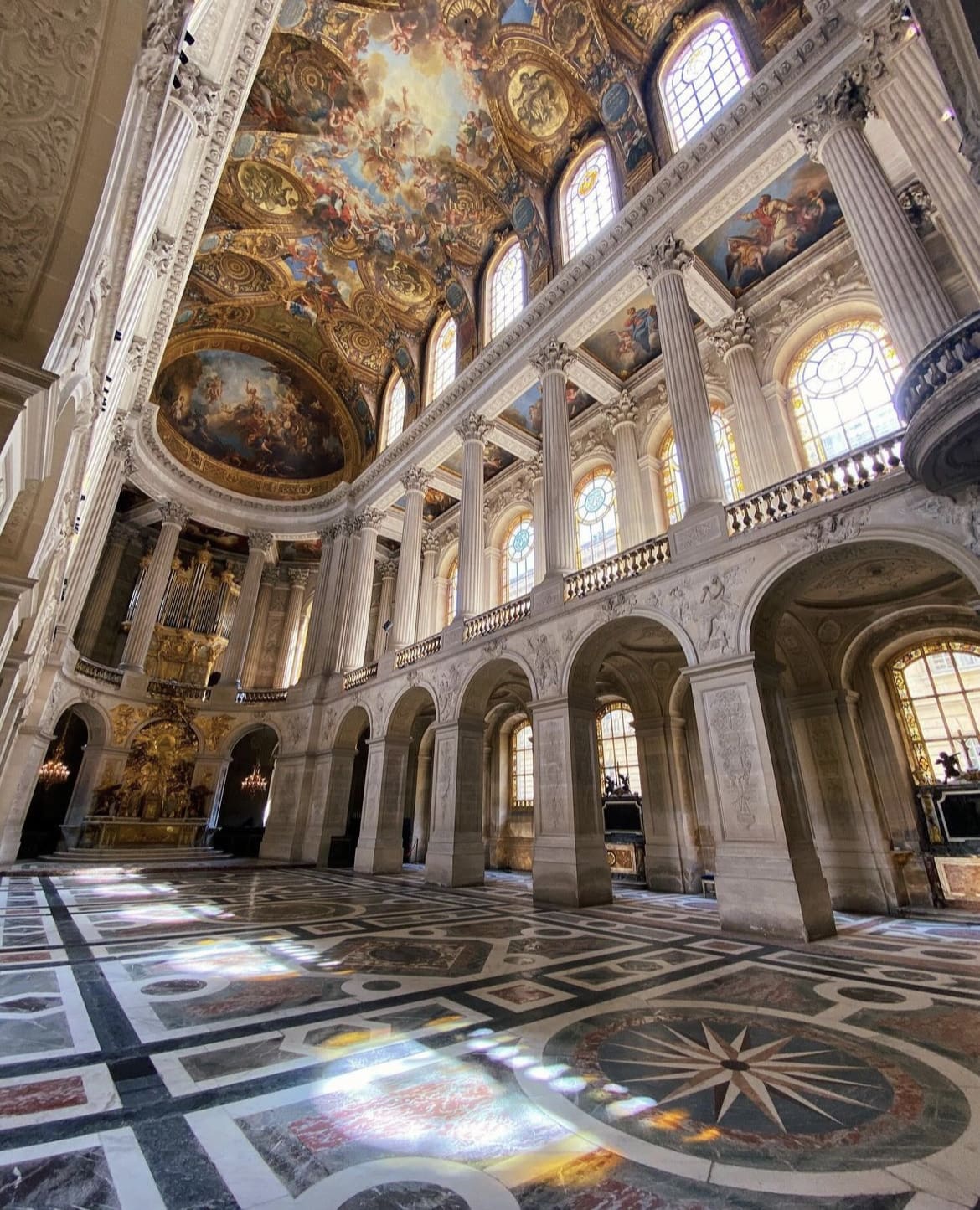
15. Attend a Cooking Class
Embrace the culinary arts by participating in a cooking class where you can learn to make classic French dishes and pastries. These classes provide a hands-on way to understand and appreciate the nuances of French cooking, from sourcing the best ingredients to mastering the perfect techniques.
Tips for Visiting: Choose a class that includes a market visit to experience how locals shop for fresh produce. Look for small-group classes for a more personalized instruction, and make sure the class is in English, unless you're comfortable following along in French.
16. Relax in the Café Culture
NCafés are not just places to drink coffee, but are institutions where locals and visitors alike can watch the world go by, read a book, or enjoy lively conversations. The café terraces that line the streets offer a perfect spot to relax and soak in the atmosphere of Paris.
Tips for Visiting: Choose a café off the beaten path to avoid the tourist markups and to find a more authentic experience. Café de Flore and Les Deux Magots in Saint-Germain-des-Prés are renowned for their literary history and are worth a visit for those wanting to channel the spirits of past intellectuals and artists.
17. Picnic in the Parc des Buttes-Chaumont
One of the largest and most enchanting parks in Paris, the Parc des Buttes-Chaumont offers a lush landscape of cliffs, bridges, waterfalls, and paths that provide a picturesque escape from urban life. It’s a popular spot for picnics, especially by the lake beneath the towering Temple de la Sibylle.
Tips for Visiting: Bring a blanket and some locally sourced cheese, bread, and wine for the ultimate Parisian picnic. The park also features puppet shows and free concerts during the summer months, making it a great location for families and romantic outings alike.
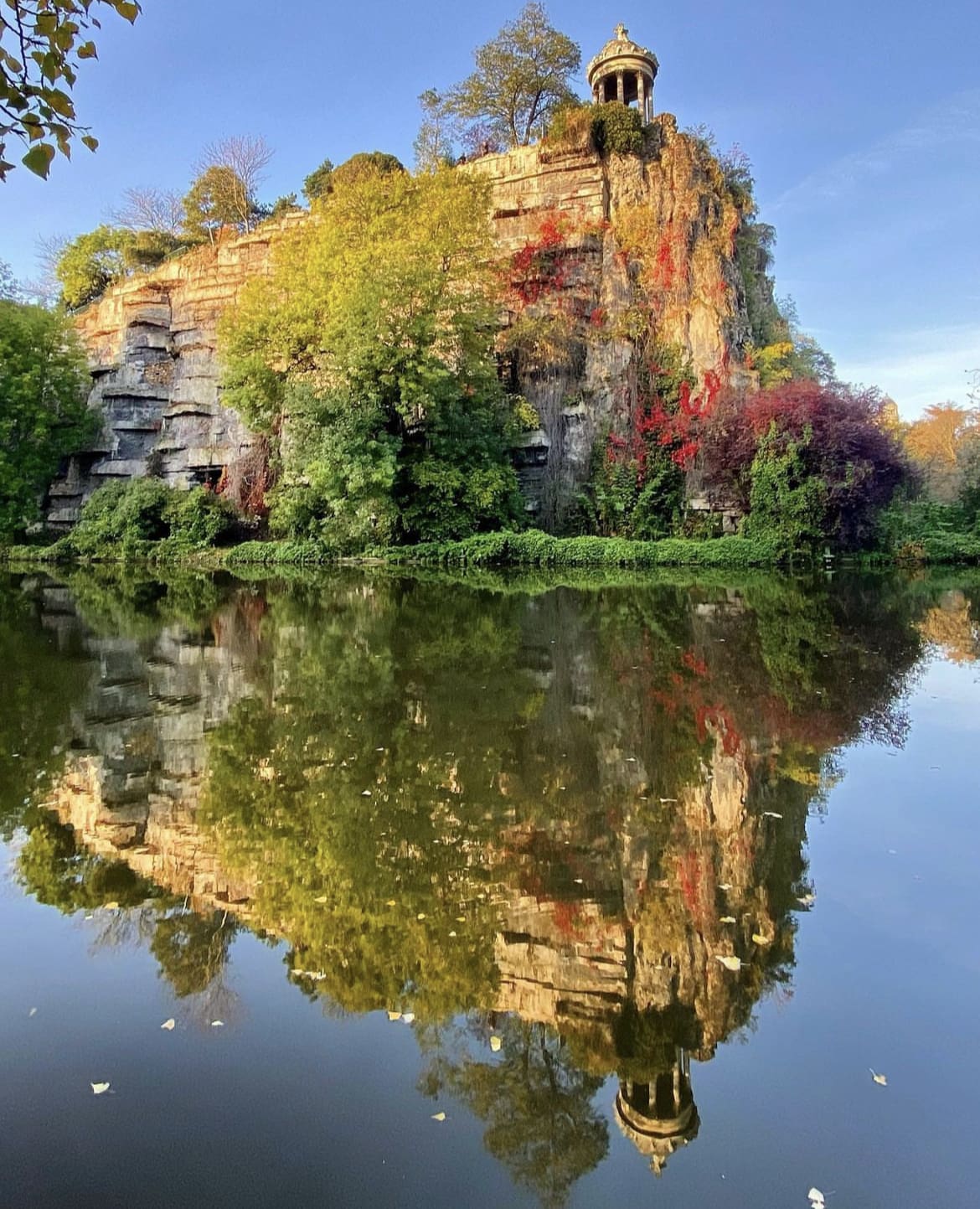
18. Explore the Latin Quarter
Known for its student life, bustling bistros, and vibrant nightlife, the Latin Quarter is one of Paris's most dynamic districts. Here, history meets modernity with landmarks like the Panthéon and the Sorbonne juxtaposed against lively street markets and funky bookshops.
Tips for Visiting: Wander through the narrow streets and discover the area’s many hidden treasures, such as the Shakespeare and Company bookstore, an iconic English-language bookstore where you can catch readings and literary events. Don’t miss the local cinemas which often show independent films.
19. Visit the Pompidou Center
A cultural hub in the heart of Paris, the Pompidou Center not only offers an extensive collection of modern and contemporary art but also houses a public library and a rooftop terrace with stunning views of the city. The building itself, with its innovative 'inside-out' architecture, is a work of art.
Tips for Visiting: Check out the schedule of live performances and exhibitions, which often include cutting-edge works by contemporary artists. The rooftop offers one of the best views of Paris, so be sure to visit at sunset for a breathtaking experience.
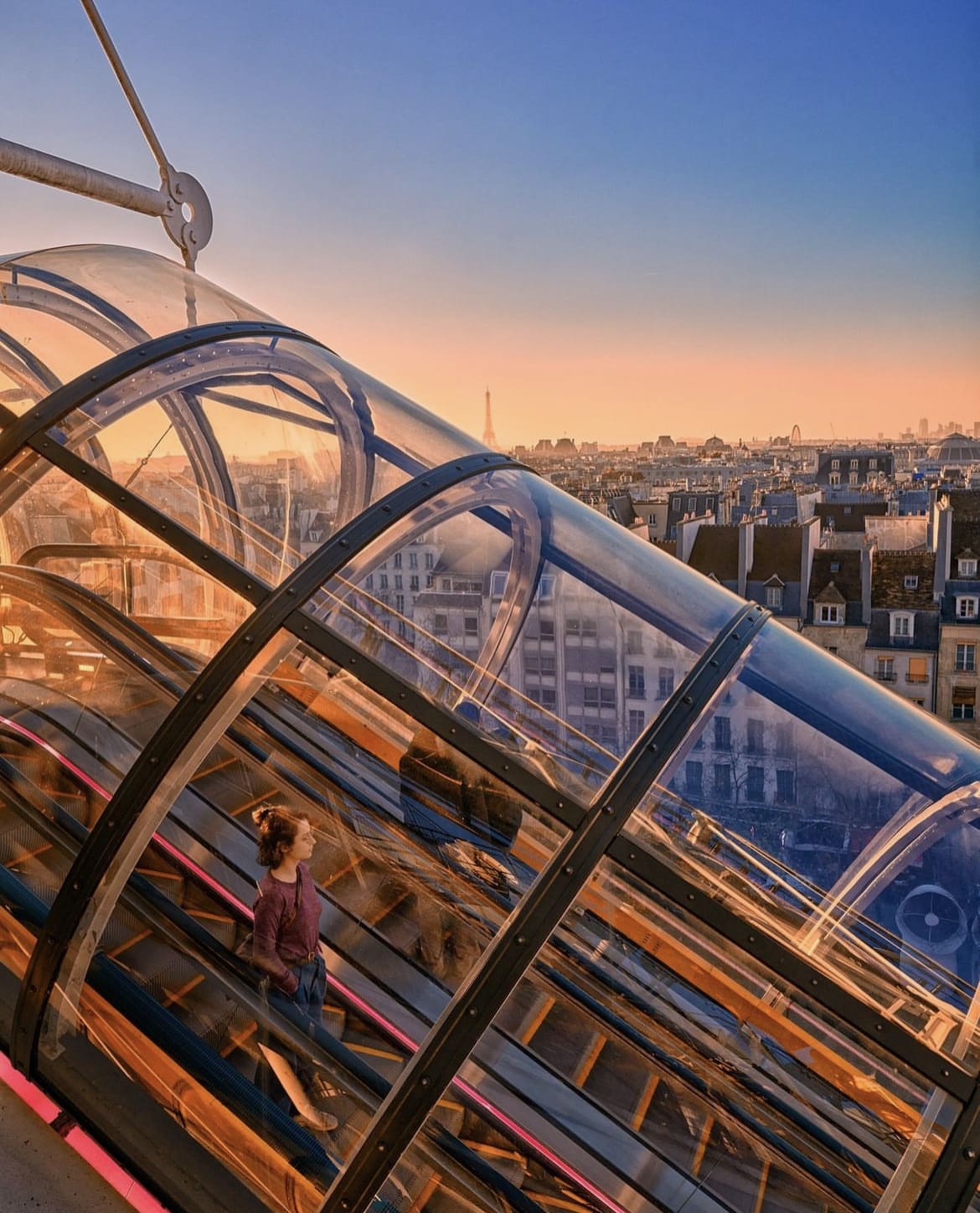
20. Shopping at Galeries Lafayette
For those looking to indulge in a bit of retail therapy, Galeries Lafayette is the go-to destination. This historic department store is not only a shopper’s paradise but also an architectural marvel with a stunning stained glass dome. It offers everything from high-end fashion brands to gourmet food .
Tips for Visiting: Head to the rooftop terrace for free, panoramic views of Paris, including the Eiffel Tower. The store also offers fashion shows on certain days, which can be a unique addition to your shopping experience.
21. Visit the Arc de Triomphe
Standing proudly at the western end of the Champs-Élysées, the Arc de Triomphe is one of Paris’s most famous monuments. Commissioned by Napoleon in 1806 to celebrate his victories, the arch towers over the bustling Place Charles de Gaulle, a site of national pride and history. Visitors can climb to the top for sweeping views of the twelve radiating avenues and a bird’s eye view of the city.
Tips for Visiting: Access to the Arc de Triomphe involves climbing 284 steps, so be prepared for a bit of a workout. It's best to visit early in the morning or later in the evening to avoid the crowds and to capture the perfect photo of the Parisian skyline during golden hour. Additionally, every evening a flame is rekindled at the Tomb of the Unknown Soldier under the arch, which makes for a poignant moment to witness.

Paris offers an endless array of activities that cater to all tastes, from the heights of the Eiffel Tower to the depths of the Catacombs. This guide has barely scratched the surface, but with these 20 activities, you'll experience the breadth of what Paris has to offer.
Whether you’re seeking art, history, gastronomy, or just a leisurely stroll through beautiful gardens, Paris is a city that will enchant you with its timeless charm and vibrant atmosphere.
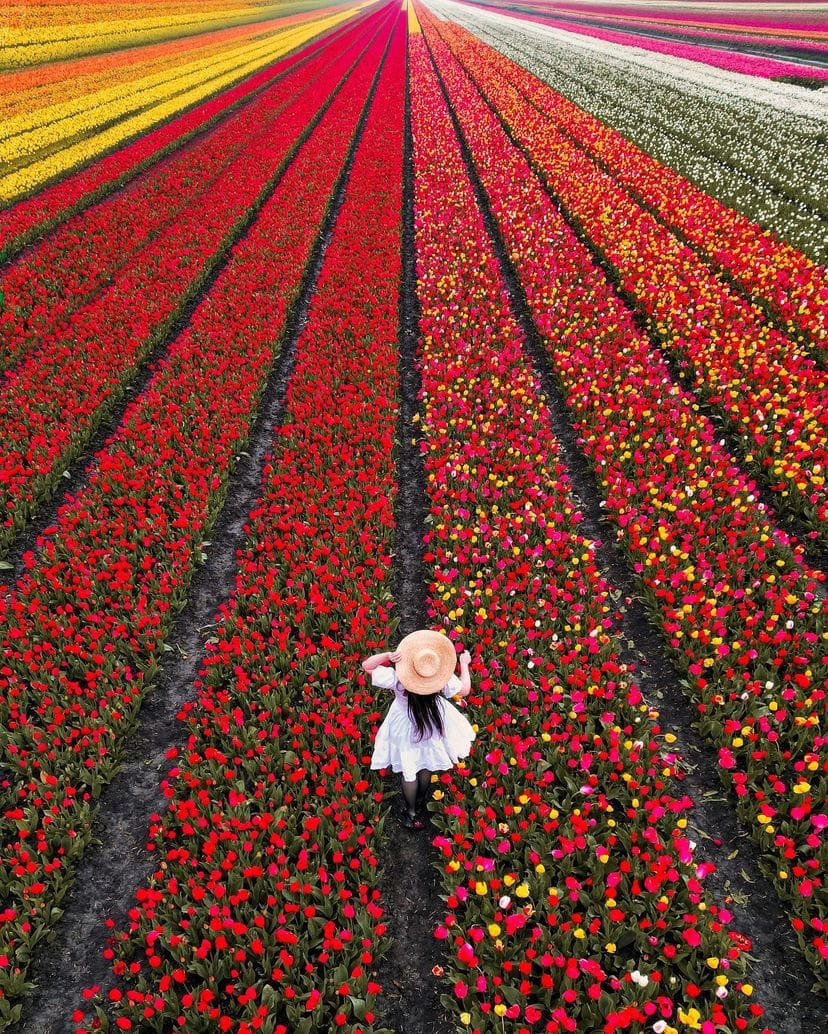
10 Beautiful Tulip Gardens Near Amsterdam
April 10, 2024
Tulip Mania: A Vibrant Guide to Amsterdam's Tulip Havens
Welcome to the rainbow that touches the ground! Amsterdam during tulip season is nothing short of a technicolor dream, a spectacle so dazzling it draws visitors from all corners of the globe. Here, the humble tulip isn't just a flower; it's a national obsession, a symbol of historical intrigue, and the star of the springtime show.
If you're looking to dive headfirst into this floral fantasy, you've clicked on the right guide. Buckle up, as we take you through the most breathtaking tulip havens near Amsterdam , where the flowers are not just seen but truly experienced.
1. Keukenhof Gardens, Lisse
The Floral Wonderland
Imagine stepping into a painting where the grass is greener, and the colors are so vivid they almost seem unreal. That's Keukenhof Gardens for you, often hailed as the "Garden of Europe." Just a short drive from Amsterdam, this floral paradise unfurls over 32 hectares, showcasing more than 7 million bulbs in bloom. From tulips to daffodils and hyacinths, Keukenhof is where spring makes its grand entrance.
Why You Can't Miss It : It's not every day you get to witness the sheer variety of over 800 tulip species painting the landscape in every hue imaginable. The garden's thematic sections, including the Japanese Garden, Natural Garden, and the Historical Garden, offer a multitude of floral experiences.
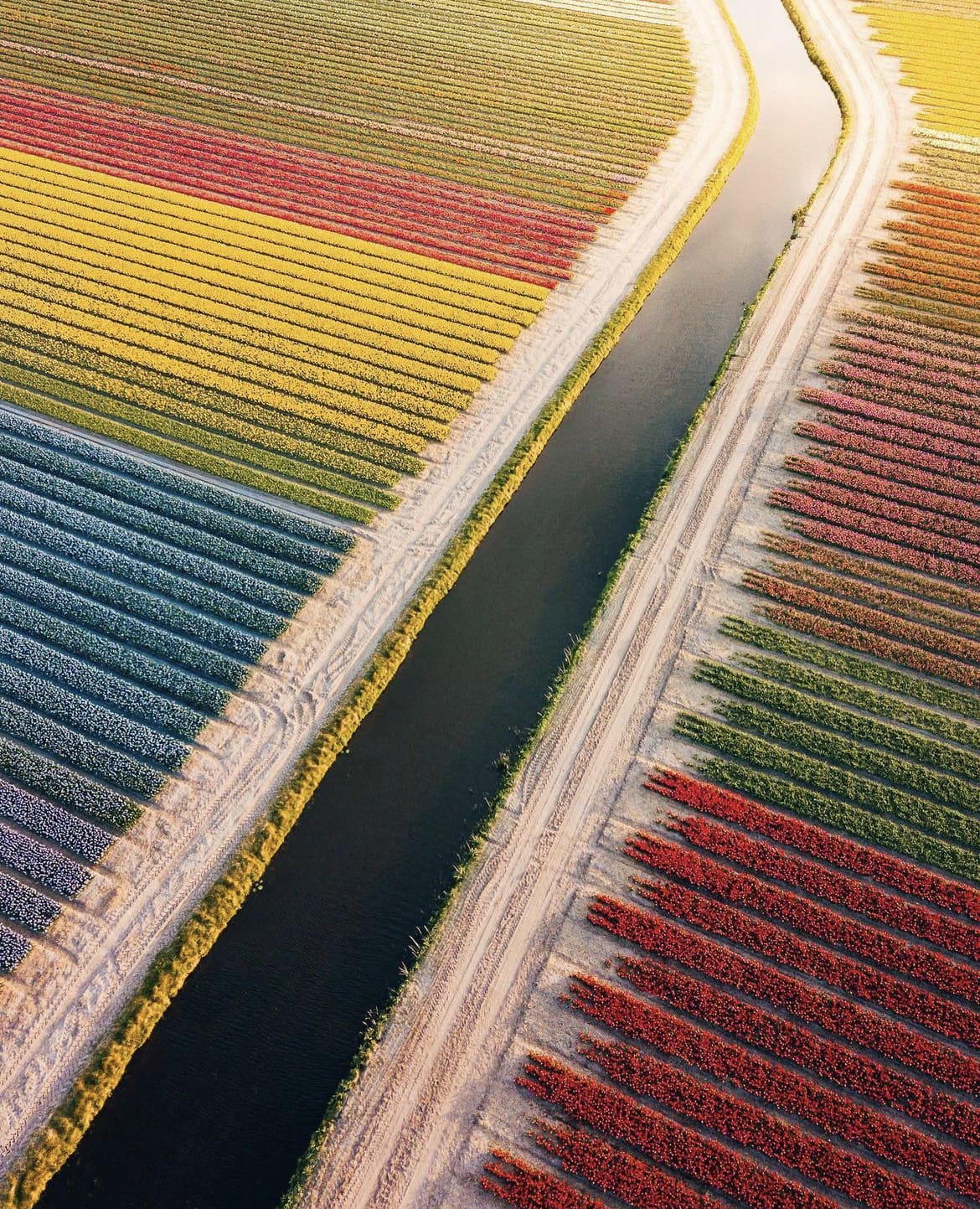
Pro Tips for the Tulip Enthusiast :
- Timing is Everything : Mid-April to early May is the sweet spot for catching the full spectacle. However, Keukenhof opens from late March to mid-May, giving you a broad window to plan your visit.
- Skip the Line : Tickets sell like hotcakes! Buy yours online to dodge the long queues.
- Explore Beyond the Petals : Don't rush off after the tulip gazing. The windmill and boat tours offer a unique perspective of the surrounding flower fields.
Keukenhof Gardens tickets are your golden ticket to a floral utopia. Secure them early and prepare for an unforgettable spring day out.
2. Zaanse Schans Tulip Gardens
A Time Capsule in Bloom
Next up, let's whirlwind you to Zaanse Schans, a scenic village that seems to have leaped out of a Dutch Golden Age painting, windmills, wooden houses, and all. But come spring, it's the tulip fields surrounding this historic setup that steal the spotlight. Picture this: vibrant tulips with the backdrop of spinning windmills – it's the Netherlands encapsulated in one frame.
Why You Can't Miss It : Zaanse Schans isn't just about tulips; it's a cultural dive into Dutch heritage. The tulip fields add layers to this living museum, enhancing its charm and appeal.
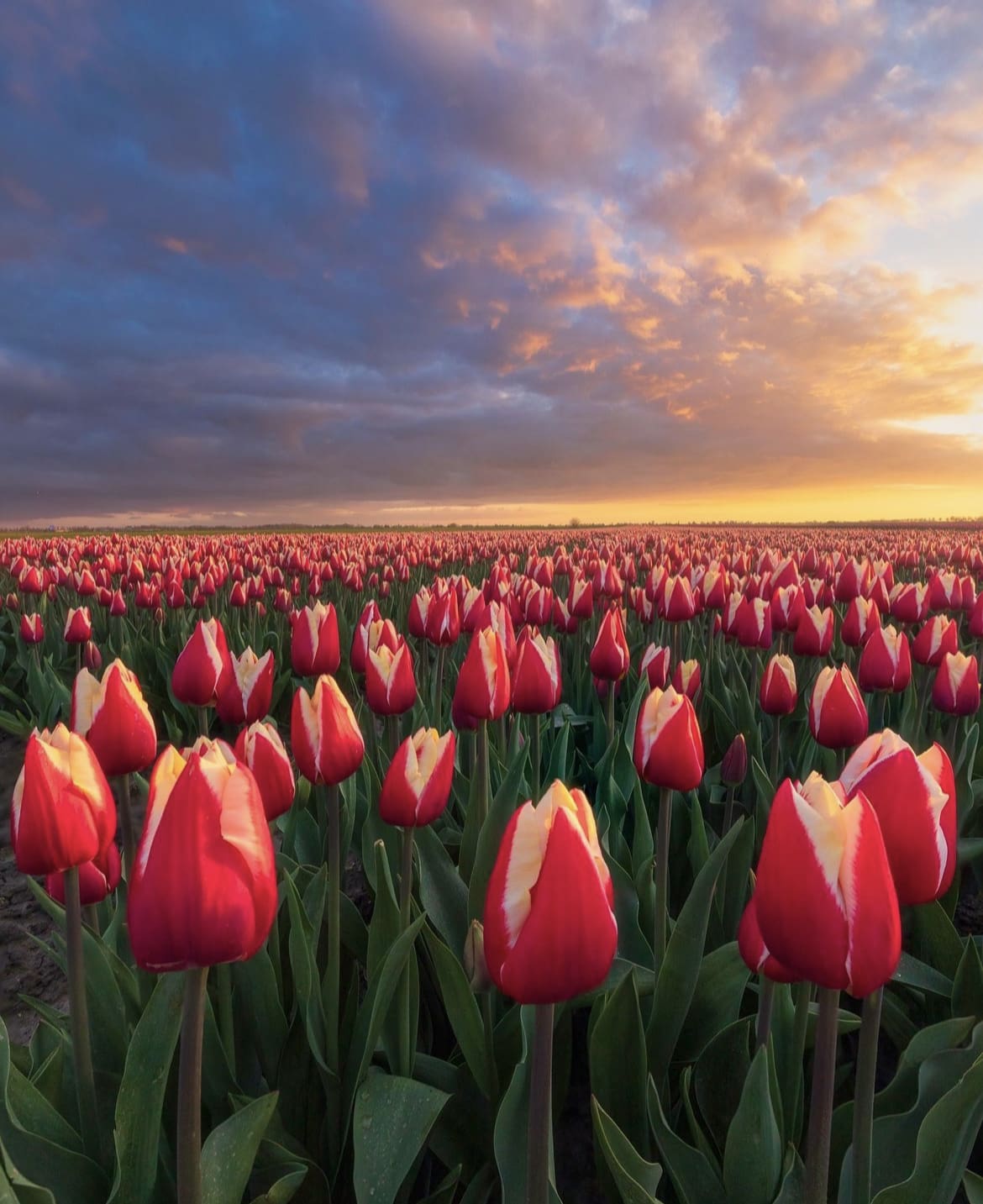
- Make it a Day Trip : There's more to Zaanse Schans than tulips. Explore the cheese factory, watch clogs being made, and visit the windmills for a full Dutch cultural immersion.
- Timing : Though the tulips are in bloom throughout the spring, visiting in April ensures you see them at their peak.
- Photography Paradise : Early morning or late afternoon offers the best light for your photos, minus the crowds.
Zaanse Schans Tulip Gardens not only offer a floral feast for your eyes but also a journey back in time. It’s a perfect blend of history, culture, and natural beauty, making it a must-visit spot during your tulip escapade near Amsterdam.
3. Tulip Fields of Lisse
A Carpet of Color
Lisse acts as the heartbeat of the Netherlands' tulip obsession. This town, nestled in the heart of the flower-growing region, transforms into a kaleidoscope of colors come spring. The fields stretch as far as the eye can see, draped in the most vivid tulips you'll ever lay eyes on.
Why You Can't Miss It : If there's a place that captures the essence of Dutch spring, it's here. The vast, uninterrupted fields of Lisse offer a tulip experience that's both immersive and breathtaking.

- Bike it Out : The best way to experience Lisse's tulip fields is on two wheels. Rent a bike and glide through the floral avenues for an up-close encounter with the tulips.
- Sunrise and Sunset : For photographers, these golden hours transform the fields into a magical landscape. Plus, you'll avoid the midday crowds.
- Local Insight : Stop by local cafés and shops to get insider tips on the best fields to visit. The locals always know the hidden gems.
Cycling through the tulip fields of Lisse is an iconic Dutch experience. With paths winding through endless blooms, it's a journey that embodies the spirit of spring in the Netherlands.
4. Hortus Bulborum, Limmen
A Living Tulip Museum
Venture a bit further to Limmen, and you'll discover Hortus Bulborum, a garden with a twist. This isn't your typical flower garden but a genetic conservatory dedicated to preserving rare and historic bulb varieties. With tulips that date back to the 16th century, Hortus Bulborum offers a fascinating glimpse into the tulip's journey through time.
Why You Can't Miss It : For the tulip enthusiast with a love for history, Hortus Bulborum is a treasure trove. It's a chance to see tulip varieties that are no longer commercially grown, each with its own story.
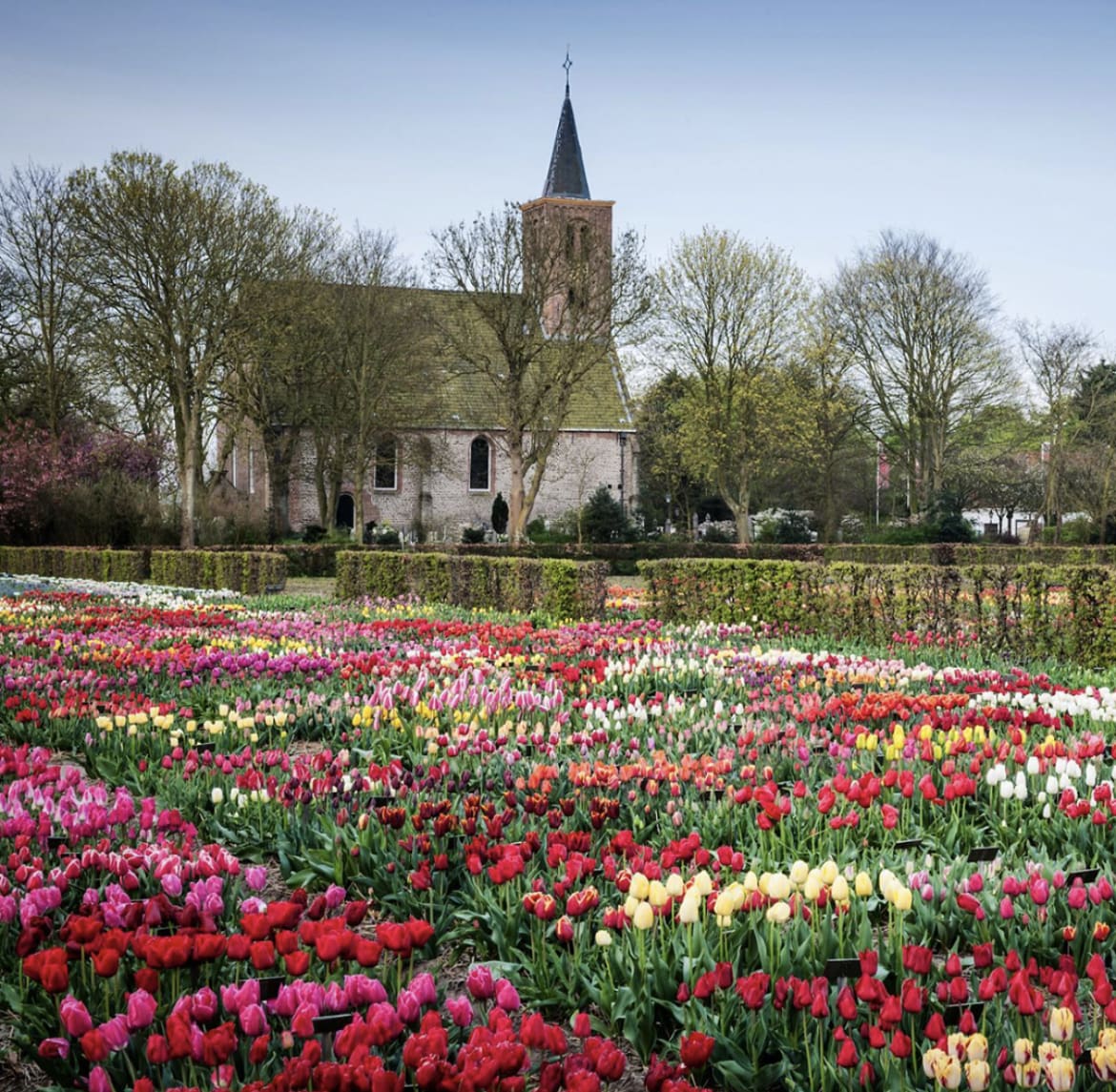
- Plan Your Visit : Open only during the spring, check the garden's schedule before you go. The collection is at its best in April.
- Guided Tours : Opt for a guided tour to enrich your visit with stories and insights into the garden's rare specimens.
- Photography Must : The unique varieties make for extraordinary photos, capturing the diversity of tulips beyond the common selections.
Hortus Bulborum Limmen stands as a testament to the tulip's rich heritage. It's a unique destination that offers more than just beauty—it offers a lesson in the bloom's vibrant history.
5. Flower Strip (Bollenstreek)
A Blossoming Route
Between Haarlem and Leiden lies the Flower Strip, or Bollenstreek, a region that turns into a living rainbow each spring. This area is renowned for its sweeping flower fields, with tulips taking the lead in a spectacle of color and scent. The Flower Strip offers a scenic route that's as enchanting by bike as it is by car.
Why You Can't Miss It : The Flower Strip provides an unparalleled opportunity to witness the diversity of the Netherlands' bulb-growing industry. It's a vibrant corridor that connects various tulip gardens and fields, showcasing the flower in all its glory.
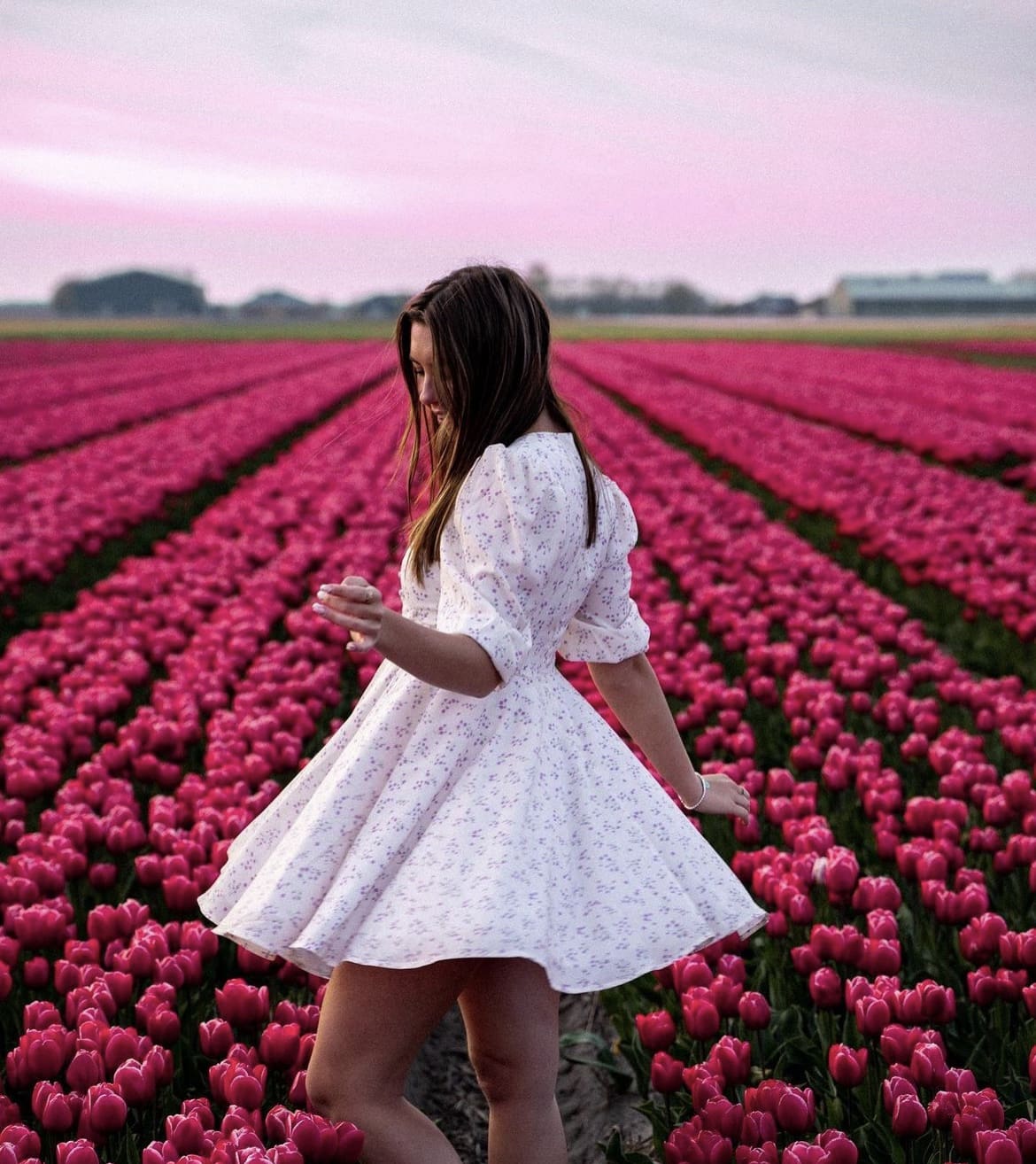
- Scenic Routes : Whether you choose to drive or cycle, follow the marked Flower Route for the most stunning displays. The route is well-signposted and takes you through the heart of tulip country.
- Timing is Key : Visit from late March to mid-May, but for the peak tulip bloom, aim for mid-April. This is when the Flower Strip is at its most vibrant.
- Local Festivals : Keep an eye out for flower parades and tulip festivals along the Bollenstreek. These events add a cultural flavor to your floral adventure.
The Flower Strip Bollenstreek is your road to floral paradise. It's a journey that intertwines natural beauty with the art of tulip cultivation, offering endless opportunities for discovery and enchantment.
6. Amsterdam Tulip Museum
A Cultural Bloom
While exploring the tulip fields offers a feast for the senses, delving into the history and impact of this flower on Dutch culture provides depth to your experience. The Amsterdam Tulip Museum , located in the heart of the Jordaan district, is a compact yet comprehensive homage to the tulip's journey through Dutch history.
Why You Can't Miss It : This museum presents a fascinating narrative, from the tulip's wild origins to its role in the economy and art. It's a story that adds layers to your understanding and appreciation of the tulips you've been admiring in the fields.
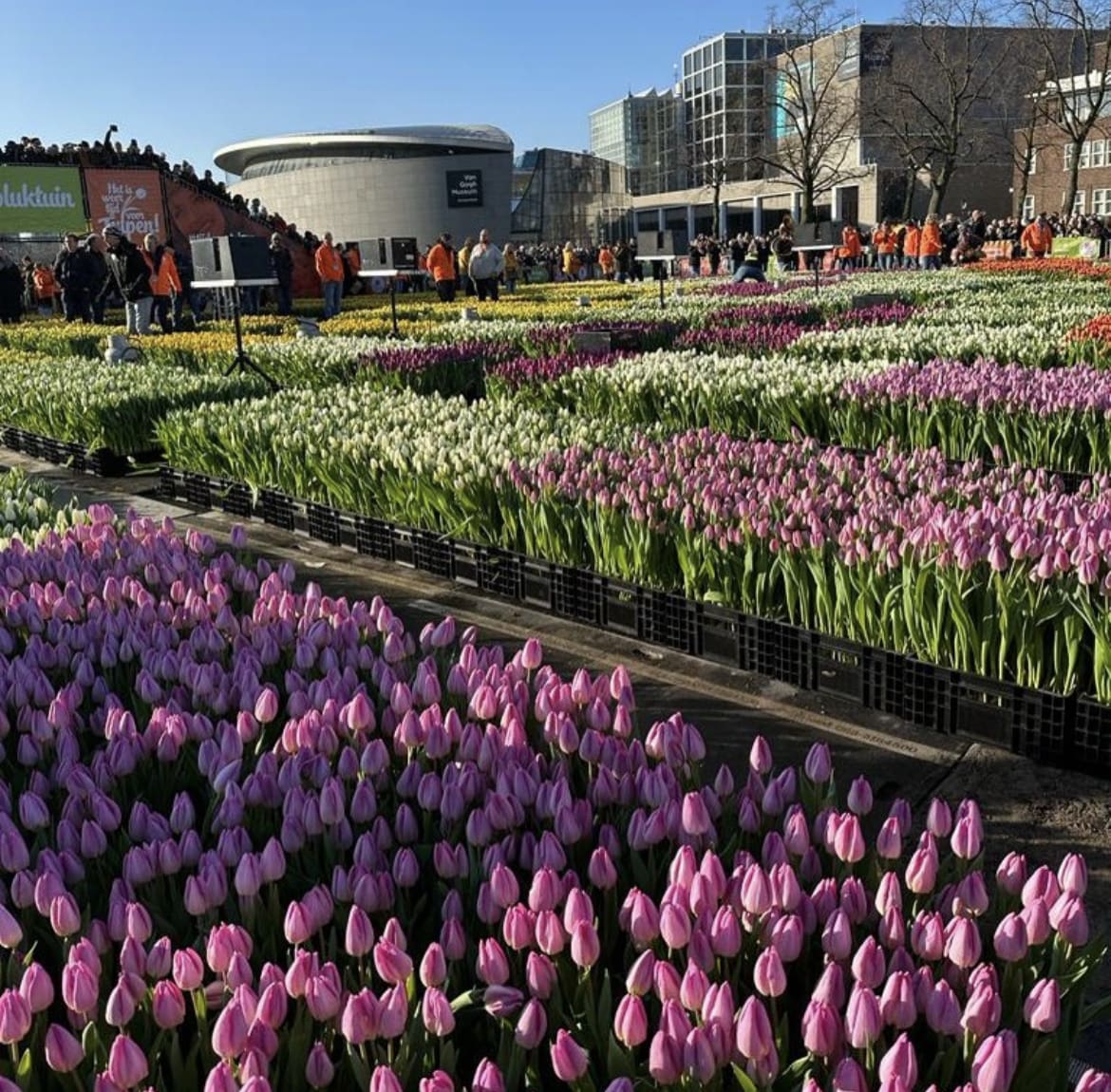
- Combine with a Canal Walk : The museum's location is ideal for pairing your visit with a stroll along Amsterdam's picturesque canals. It's a perfect blend of culture and relaxation.
- Shop for Tulip Bulbs : The museum shop offers a selection of tulip bulbs that can be legally transported abroad. Bring a piece of your Dutch adventure home with you.
- Check for Exhibits : The museum occasionally hosts special exhibits. Check their schedule in advance to catch these insightful displays.
The Amsterdam Tulip Museum not only educates but also inspires. It's a crucial stop for anyone looking to fully grasp the tulip's role in shaping Dutch identity and landscape.
7. Noordwijkerhout
A Village Embraced by Tulips
Nestled in the heart of the Bollenstreek, Noordwijkerhout offers a picturesque setting that seems to have sprung from a painting. This village is surrounded by some of the most spectacular tulip fields in the Netherlands, making it a prime location for those seeking the quintessential Dutch spring experience.
Why You Can't Miss It : Beyond its charm, Noordwijkerhout serves as a perfect starting point for exploring the surrounding tulip fields. It's a quieter alternative to the more crowded spots, allowing for a more intimate experience with the flowers.
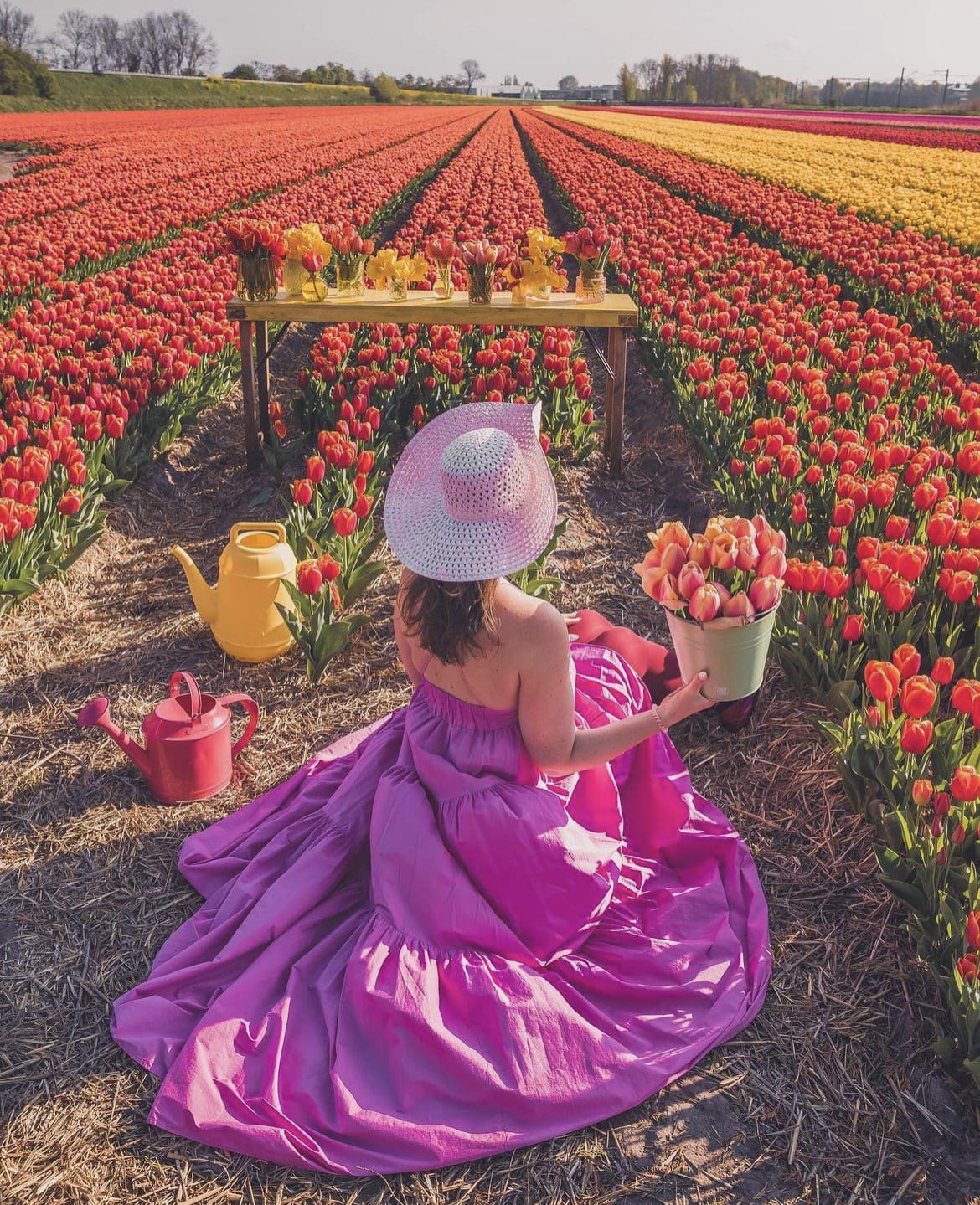
- Stay Local : Consider booking a stay in Noordwijkerhout to fully immerse yourself in the tulip-filled landscape. Waking up to a view of tulip fields is an experience unto itself.
- Bike Tours : Many local businesses offer bike tours that take you through the best fields. It's an eco-friendly way to enjoy the beauty around.
- Festival Fun : If your visit coincides with the local tulip festival, don't miss it. These festivals often feature parades, markets, and a lot of local color.
Noordwijkerhout tulip fields are a hidden gem in the Netherlands' floral crown. They offer a serene backdrop to your tulip adventures, away from the hustle and bustle.
Tulips Amidst Historical Elegance
A short train ride from Amsterdam, Haarlem blooms into a vibrant display of tulips each spring, especially within its historic Hofjes. These almshouses, built around tranquil courtyards, become secret gardens of sorts, adorned with tulips and other spring flowers.
Why You Can't Miss It : Haarlem combines floral beauty with architectural grace. The city offers a unique setting to enjoy tulips, where they complement the historical context and add a splash of color to the ancient brick and stone.
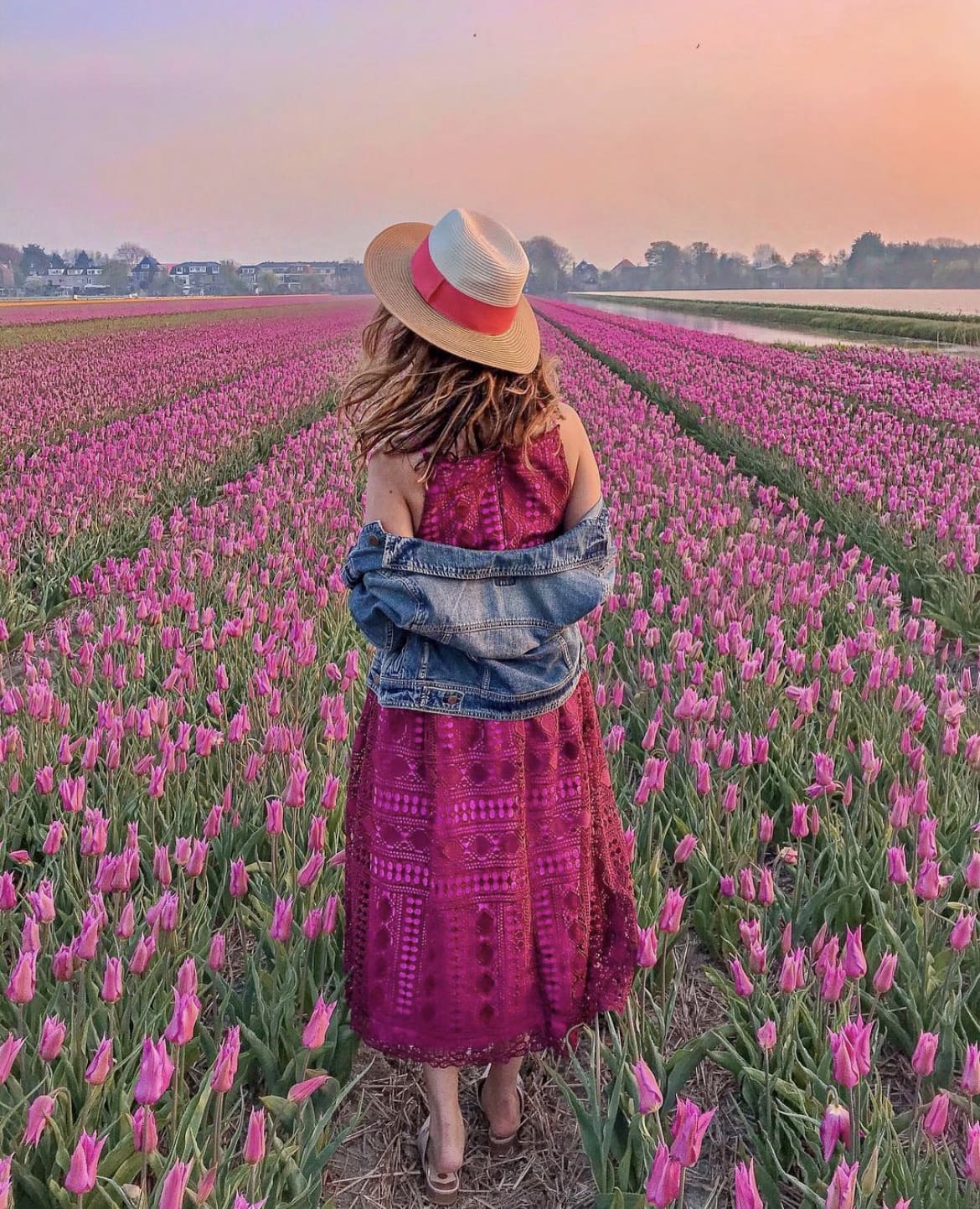
- Hofjes Exploration : Many Hofjes are open to the public. Take a self-guided tour to discover these peaceful courtyards and their blooming gardens.
- Enjoy the Cultural Scene : Haarlem is known for its museums and art galleries. Pair your tulip viewing with a visit to the Frans Hals Museum or the Teylers Museum for a full cultural immersion.
- Culinary Delights : After a day of tulip admiration, indulge in Haarlem's culinary scene. The city boasts several Michelin-starred restaurants and cozy cafes perfect for reflecting on the day's beauty.
Haarlem tulip gardens offer a blend of floral splendor and historical charm. It's an exquisite setting for those looking to enrich their tulip season with a touch of cultural depth.
9. Amstelveen Tulip Route
Suburban Blooms and Urban Escapes
Just a stone's throw away from the bustling city life of Amsterdam, Amstelveen offers a breath of fresh air with its annual Tulip Route. During spring, this suburb transforms into a floral spectacle, with designated paths leading enthusiasts through parks, residential areas, and open spaces adorned with a variety of tulips.
Why You Can't Miss It : The Amstelveen Tulip Route is a testament to the tulip's integration into daily Dutch life, showcasing how beauty and urban living coexist. It offers a different perspective, one that combines the charm of suburban tulip viewing with the convenience of urban accessibility.
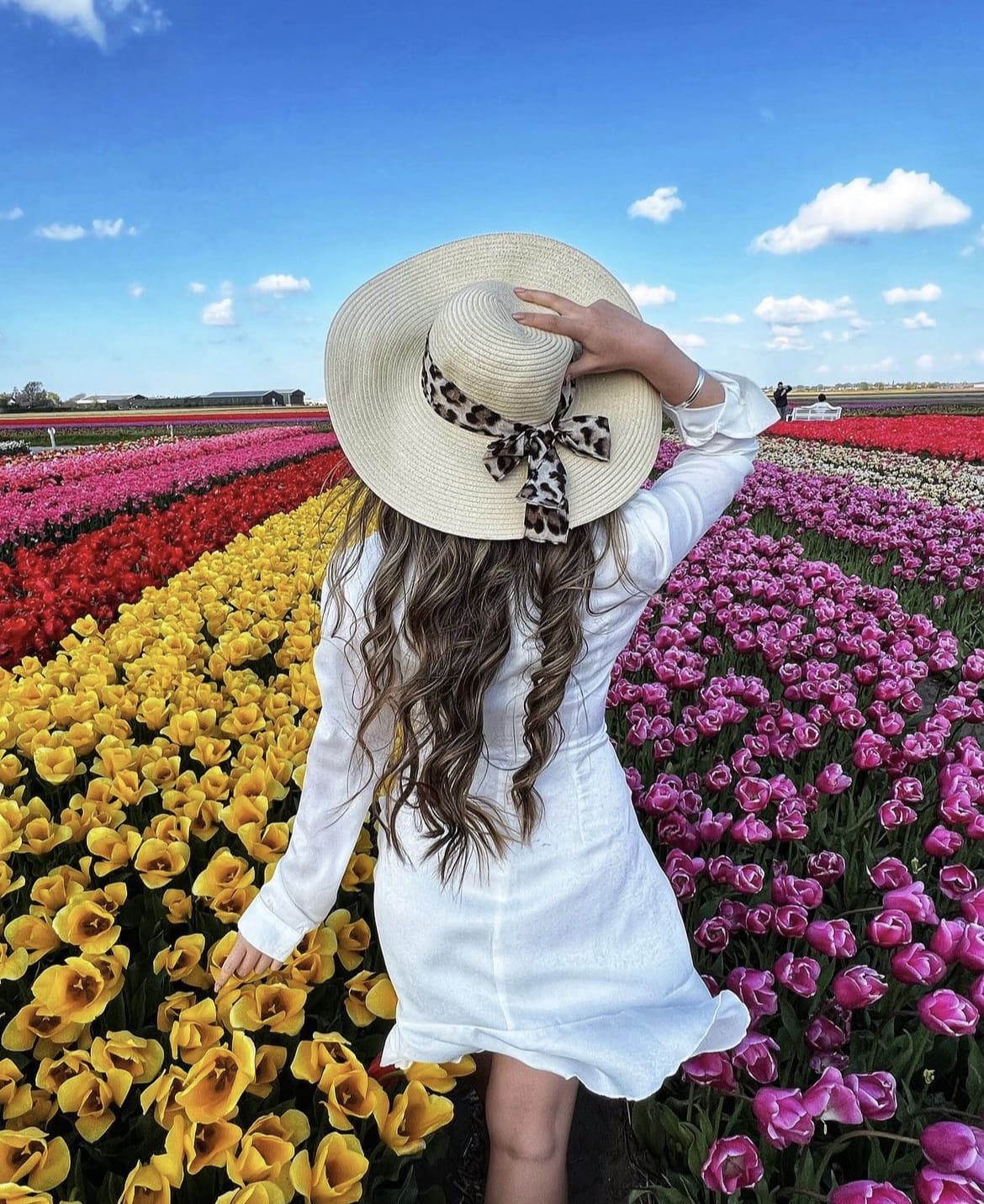
- Download the Route Map : Before you head out, make sure to download or pick up a map of the Tulip Route. It’s updated annually to highlight the best viewing spots.
- Picnic Among the Petals : Several parks along the route are perfect for a tulip-side picnic. Pack a lunch and enjoy the colors of spring in a relaxed setting.
- Photography Friendly : The diversity of settings along the route provides unique backdrops for photographers. Capture tulips framed by modern architecture, serene ponds, and family gardens.
The Amstelveen Tulip Route is a modern twist on the traditional tulip experience. It’s perfect for those looking to blend a floral expedition with the amenities of city life.
10. Vondelpark, Amsterdam
An Urban Oasis of Tulips
Amsterdam's largest and most famous park, Vondelpark, becomes a canvas of color each spring. While the park is a year-round destination for both locals and tourists, the tulip season adds a special allure, with beds of meticulously planted tulips blooming in harmony with the park's natural landscape.
Why You Can't Miss It : Vondelpark offers the unique opportunity to enjoy tulips within the urban context of Amsterdam. It's a lively hub of activity where the beauty of spring flowers can be appreciated amidst the backdrop of the city's vibrant life.
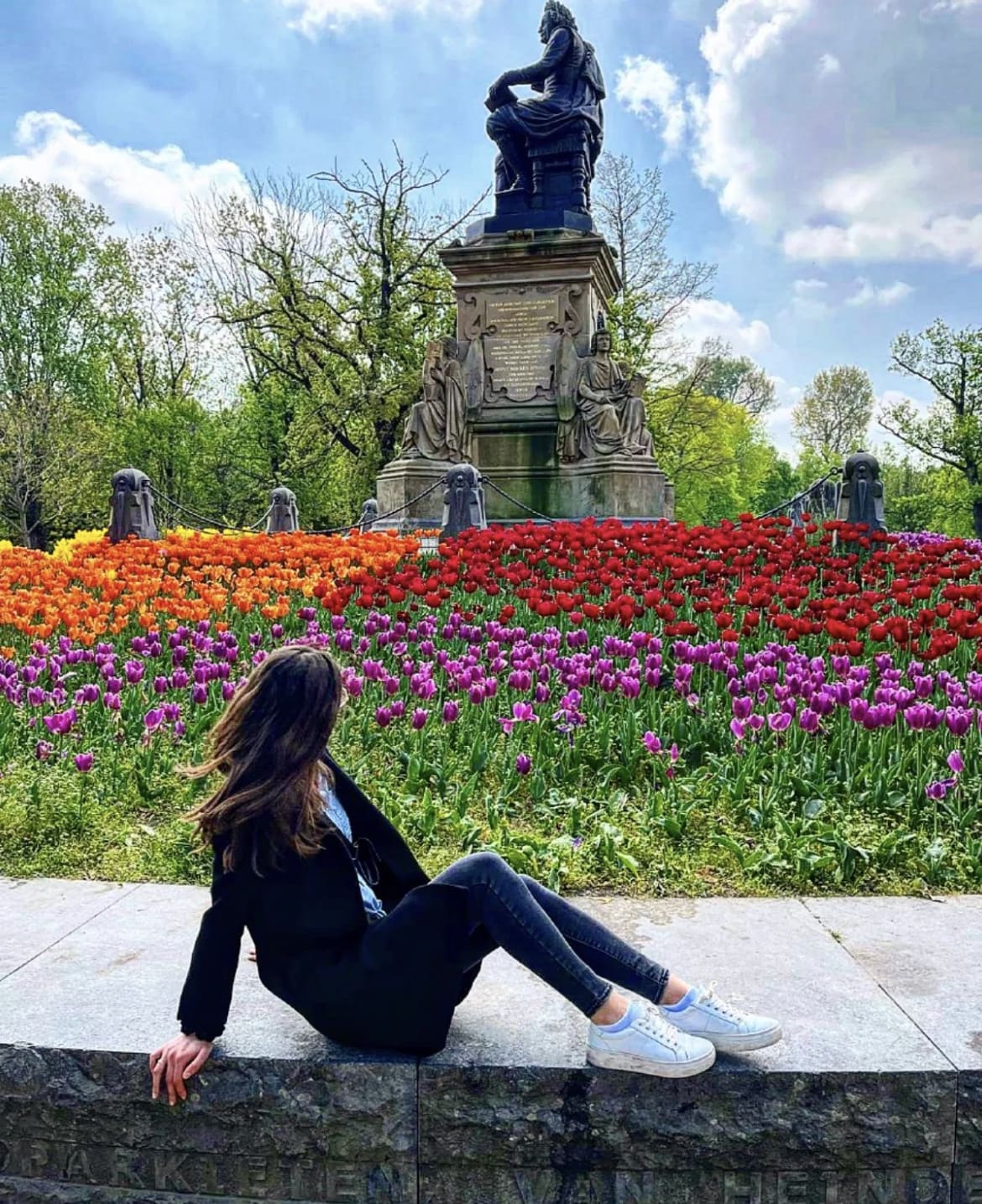
- Morning Walks : For a tranquil tulip experience, visit Vondelpark early in the morning. You’ll avoid the crowds and catch the soft morning light, which illuminates the tulips beautifully.
- Combine with Cultural Visits : Surrounding Vondelpark are some of Amsterdam's top museums. Plan your day to include both tulip viewing in the park and a visit to nearby cultural institutions like the Van Gogh Museum or the Rijksmuseum.
- Bike or Stroll : Take advantage of the park's extensive paths to either bike or stroll through the tulip displays. It’s a perfect way to see the variety of colors and species planted in the park.
Vondelpark Amsterdam tulips present a picturesque slice of Dutch spring, right in the heart of the city. It's an ideal spot for those who wish to combine the leisure of tulip viewing with the dynamic atmosphere of Amsterdam.
Additional Tips for Your Tulip Tour
Embarking on a tulip tour through the Netherlands is an adventure that calls for some planning and insider knowledge. Here are a few additional tips to make your experience as vibrant and smooth as possible:
- Best Time to Visit : Timing your visit is crucial. Although tulip season can start as early as late March, the prime time to see the fields at their most colorful is from mid-April to early May.
- Respect the Flowers : Remember, the tulip fields are often on private farmland. Enjoy the view from the paths and don't trespass or pick the tulips. Keep the beauty intact for everyone to enjoy.
- Weather Check : Dutch weather can be unpredictable. Dress in layers and be prepared for sudden showers. A sunny day can quickly turn cloudy (and vice versa), enhancing the tulip viewing experience in unique ways.
- Getting Around : Renting a bike is an authentic Dutch way to explore the tulip areas, but if cycling isn't your thing, consider renting a car or using public transport for longer distances.
- Stay Hydrated : With all the walking and biking through the fields, it's easy to get dehydrated. Carry water with you, especially on sunny days.
- Local Delights : Don't miss out on the local cuisine. The Netherlands offers more than just cheese and herring. Explore local bakeries, cafés, and restaurants for some culinary surprises.
- Souvenir Tulips : Want to take a piece of the Netherlands home? Many places sell tulip bulbs that are ready for export. Just make sure they are certified for international travel to avoid any customs issues.
As our tulip tour comes to a close, it's clear that the beauty of these blooms is more than just visual; it's a journey through history, culture, and the breathtaking landscapes of the Netherlands. Whether you're wandering through the expansive fields of Keukenhof, cycling the picturesque routes of Lisse, or exploring the urban tulip spots in Amsterdam, the experience is sure to leave an indelible mark on your heart.
The tulip season is a fleeting marvel, a reminder to seize the moment and embrace the beauty that nature offers. It's a time for renewal, celebration, and, above all, appreciation for the simple yet profound joy that flowers can bring into our lives. So, when you visit the Netherlands during this magical time, let the tulips guide you through a world of color, tradition, and wonder. Who knows? You might just find yourself returning year after year, chasing the endless bloom of the Dutch spring.
And remember, each tulip has its own story, as does every traveler. What will yours be?
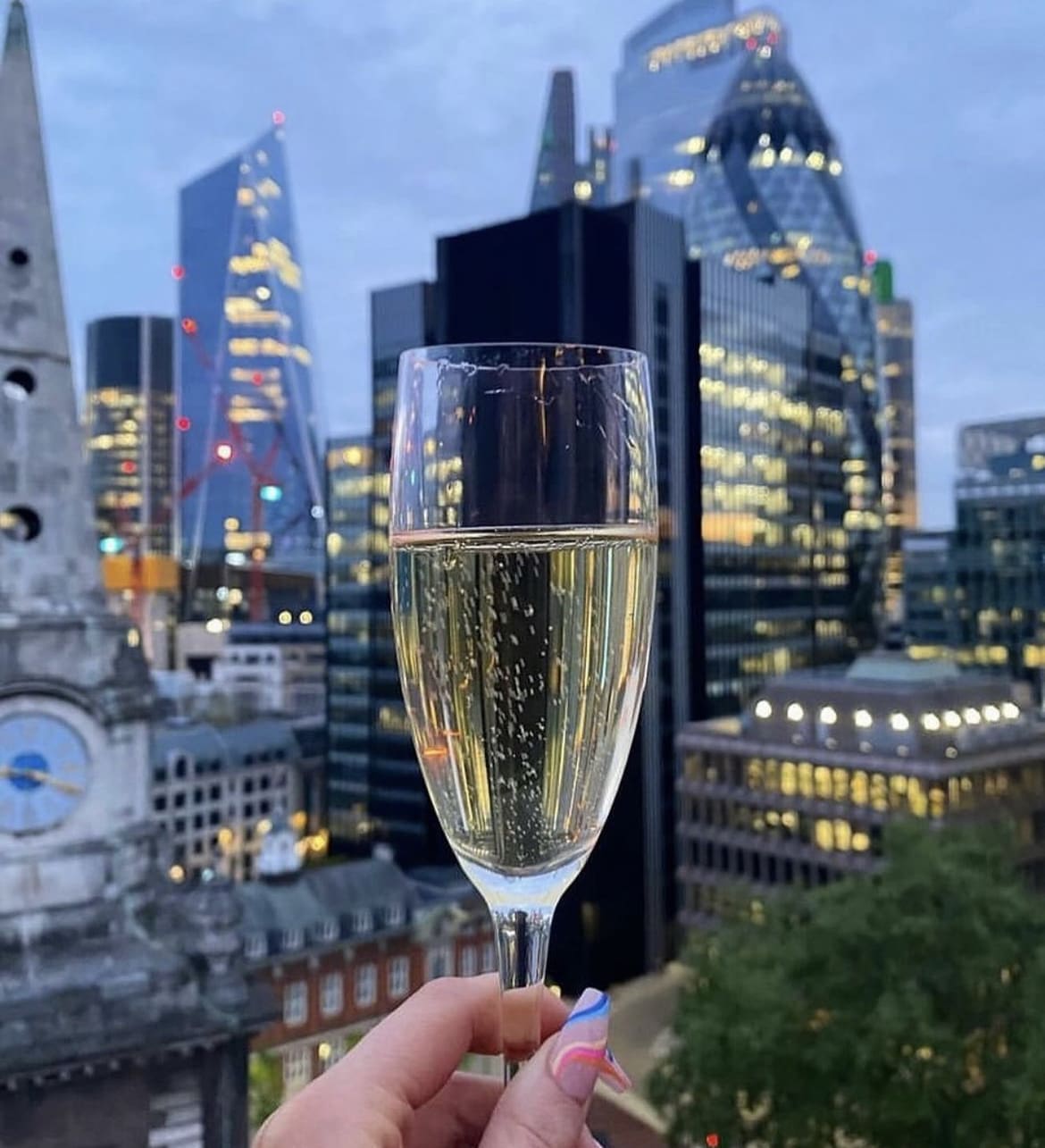
The Most Exclusive Rooftop Bars in London, UK
April 4, 2024
Imagine this: the sun dips below the horizon, painting the London skyline in hues of fiery orange and soft pinks. Iconic structures like The Shard, the London Eye, and the Gherkin stand silhouetted against the twilight, each light flickering to life like stars being born. This isn't just another evening in London; it's a prelude to an unforgettable night above the city's bustling streets, on the exclusive decks of the most coveted rooftop bars.
Rooftop bars in London are more than mere drinking spots. They are sky-high sanctuaries where the vibrancy of the city meets the tranquility of the clouds. This guide is your golden ticket to the crème de la crème of London’s rooftop experiences, where the cocktails are as mesmerizing as the views.
Why Rooftop Bars?
Rooftop bars possess a certain je ne sais quoi that ground-level establishments can hardly match. Is it the panoramic views that give drinkers a sense of freedom and elevation beyond the physical? Or is it the exclusive atmosphere, where the hustle and bustle of the city seem distant, yet simultaneously beneath your feet?
The allure lies in the blend of open skies, innovative mixology, and the pulse of music that resonates with the heartbeat of London itself. From the London skyline bars that offer an eagle-eye view of the city’s architectural marvels to "exclusive rooftop bars London" that serve up luxury in every sip, these elevated havens are about more than just altitude. They're about an attitude—a declaration of love for nights filled with starry skies, spirited conversations, and clinking glasses.
The Ultimate List of London’s Most Exclusive Rooftop Bars
Let's take you on a tour of the most exclusive, must-visit rooftop bars in London . Each offers not just a drink, but a dive into a unique atmosphere that can only be described as, well, elevated.
1. Radio Rooftop Bar
Perched on the 10th floor of the ME London hotel, Radio Rooftop Bar offers panoramic views that sweep from the Strand over the Thames to the Shard. It's a hotspot for fashion-forward crowds and the occasional celebrity sighting.
What to Drink: Try the 'Radioactive Sunset'—a cocktail that blends the fiery colors of dusk with a tangy twist.
Insider Tip: The magic hour just as the sun sets is when this place truly shines. Arrive early to snag the best spot.
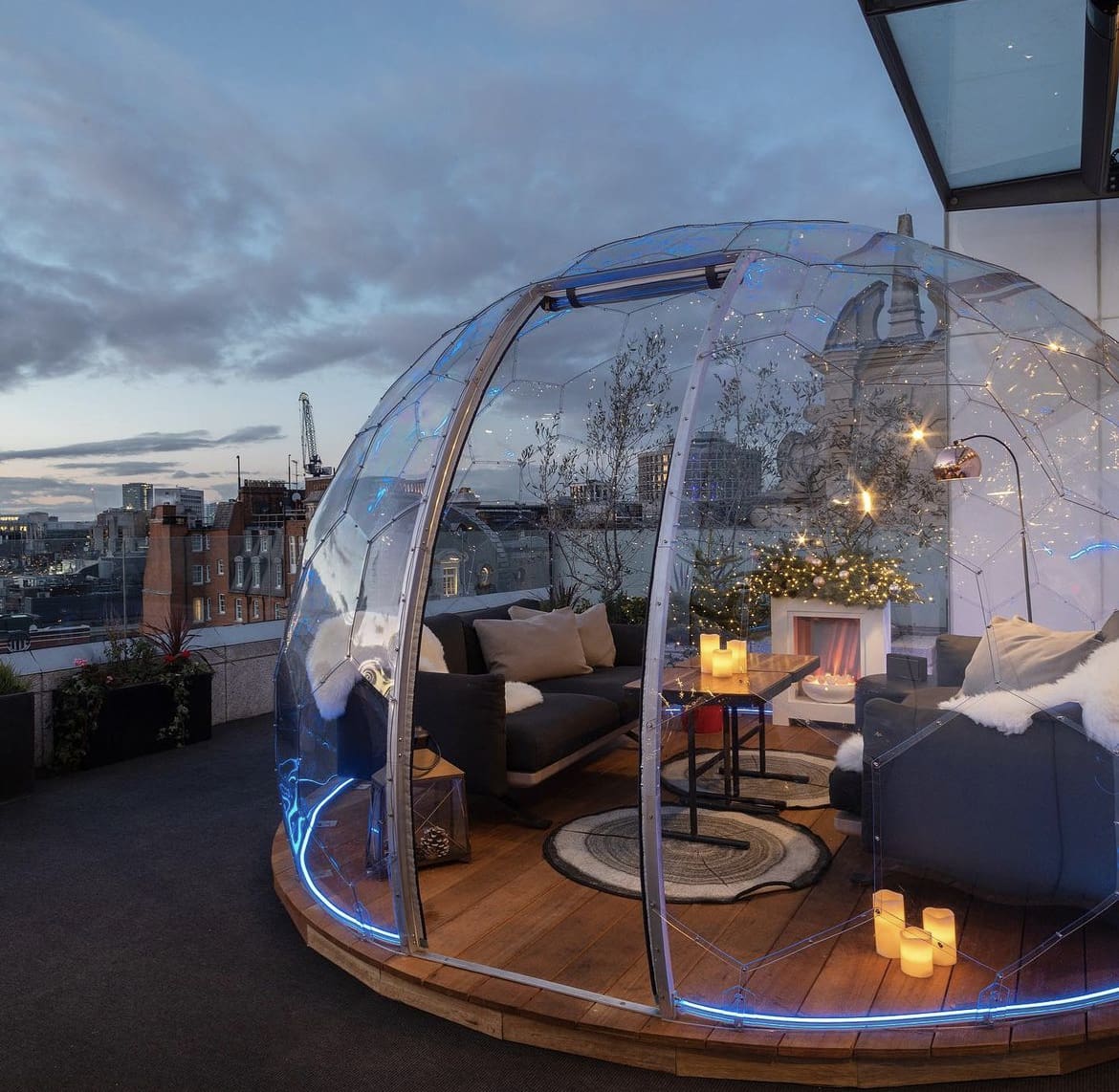
2. Sushisamba
Hovering on the 38th and 39th floors of the Salesforce Tower, Sushisamba serves up a unique blend of Japanese, Brazilian, and Peruvian cuisine. The views are as spectacular as the fusion flavors, with London laid out like a neon-lit feast below.
What to Eat: Don't leave without trying the Samba London Roll, a sushi creation that's as visually stunning as it is delicious.
Insider Tip: Reservations are a must, especially if you're aiming for a window seat. Book well in advance to avoid disappointment.
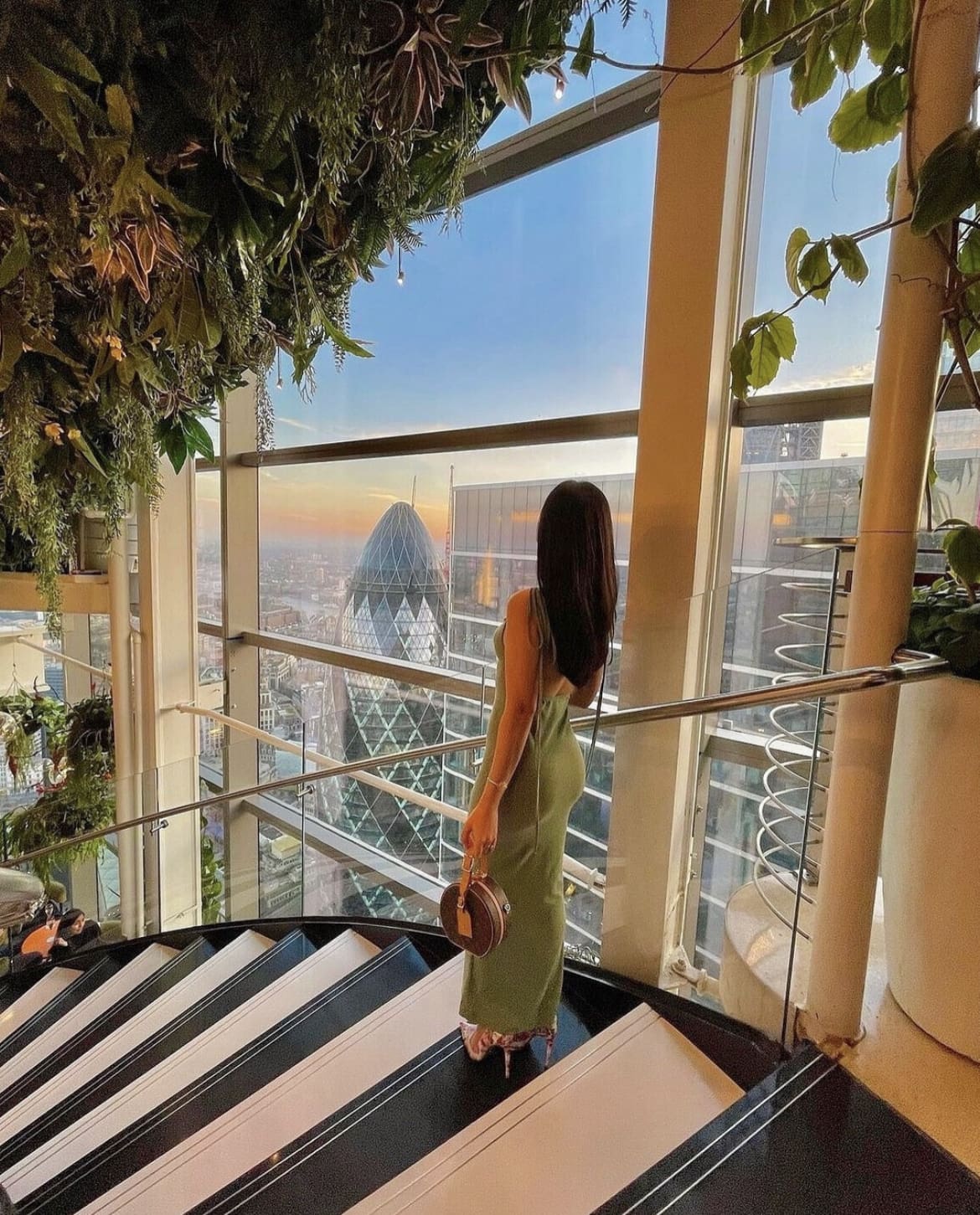
3. The Rooftop St. James
With an unobstructed view over Trafalgar Square, The Rooftop St. James is an epitome of sophistication in the sky. It's where classic cocktails meet modern innovation, all wrapped up in a chic, inviting atmosphere. This is the spot to soak in iconic London sights while indulging in some of the city’s finest drinks.
What to Drink: The 'Trafalgar Tea' is a must-try—a refreshing blend that pays homage to the area's rich history, with a twist that's as contemporary as the bar's stylish decor.
Insider Tip: The Rooftop St. James can get quite breezy, even on a summer evening. They provide blankets, but it’s wise to bring an extra layer to ensure you stay cozy as you sip and sightsee.

4. Savage Garden
Perched atop the DoubleTree by Hilton Hotel London, Savage Garden is a place of contrasts. Its wild, edgy interior design, with touches of the untamed and the mystical, makes it a unique find in the city’s rooftop scene. Here, the cocktails are as bold and innovative as the décor, making it a hit among those looking to venture beyond the classic bar experience.
What to Drink: Dive into the 'Savage Heart'—a cocktail that's as fierce as the bar's name suggests, with a mix of flavors that’s both surprising and satisfying.
Insider Tip: Savage Garden is known for its themed nights and special events. Check their schedule in advance to align your visit with an evening that might offer live music, DJ sets, or a unique cocktail menu.
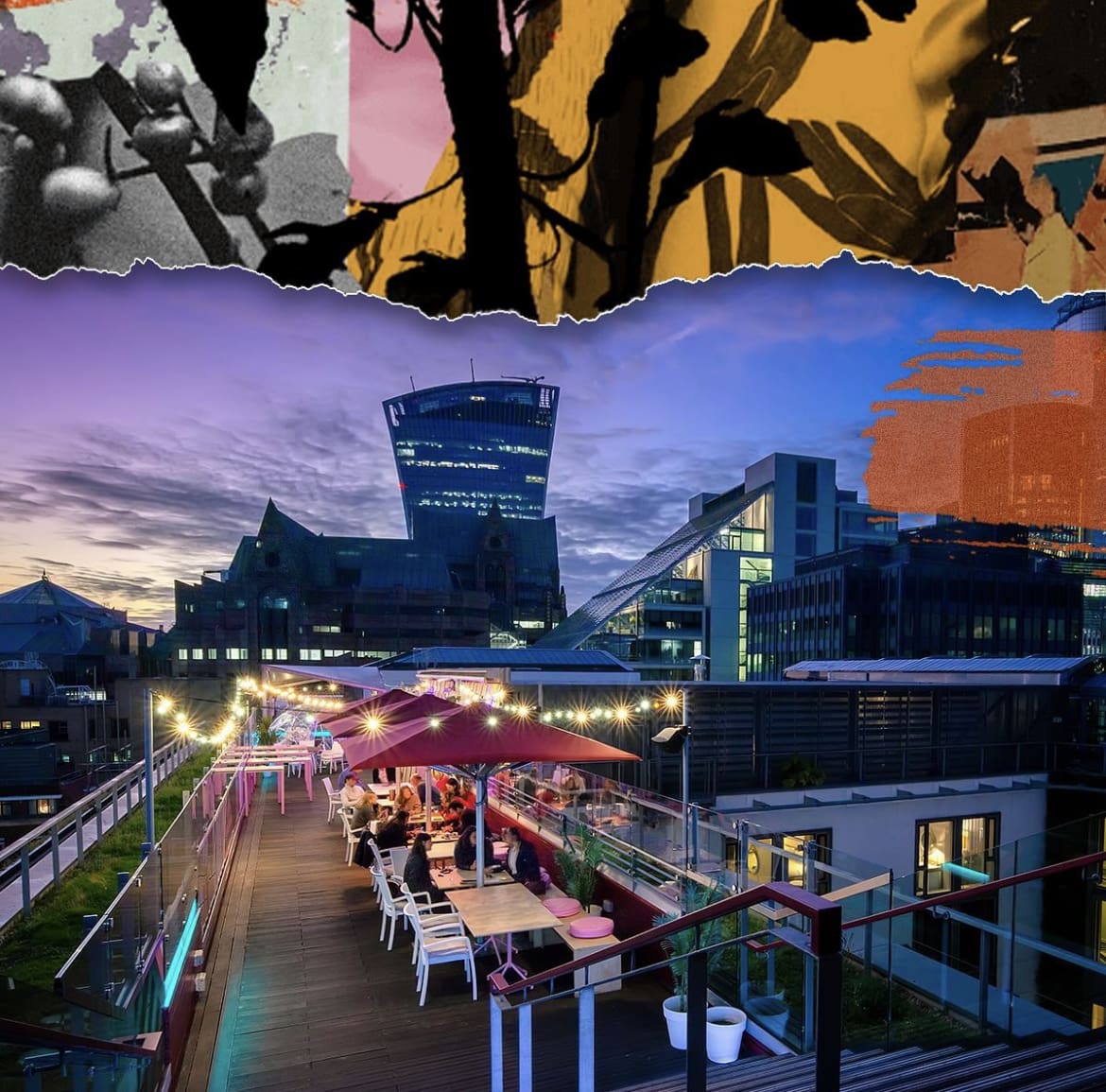
5. 12th Knot
This vibrant spot on the South Bank boasts not just eclectic decor but some of the most mesmerizing views of the River Thames. The atmosphere here is electric, making it a perfect backdrop for those Instagram-worthy moments. The 12th Knot seamlessly blends the casual with the sophisticated, inviting guests to unwind and revel in the urban chic vibe.
What to Drink: The signature cocktail, 'Thames Fizz,' offers a bubbly tribute to the river views it overlooks. It's refreshing, with just the right amount of zest.
Insider Tip: The outdoor terrace is fantastic during the summer months, but its popularity means it can get crowded. Arriving early not only guarantees a good spot but also treats you to the spectacle of the city transitioning from day to night.
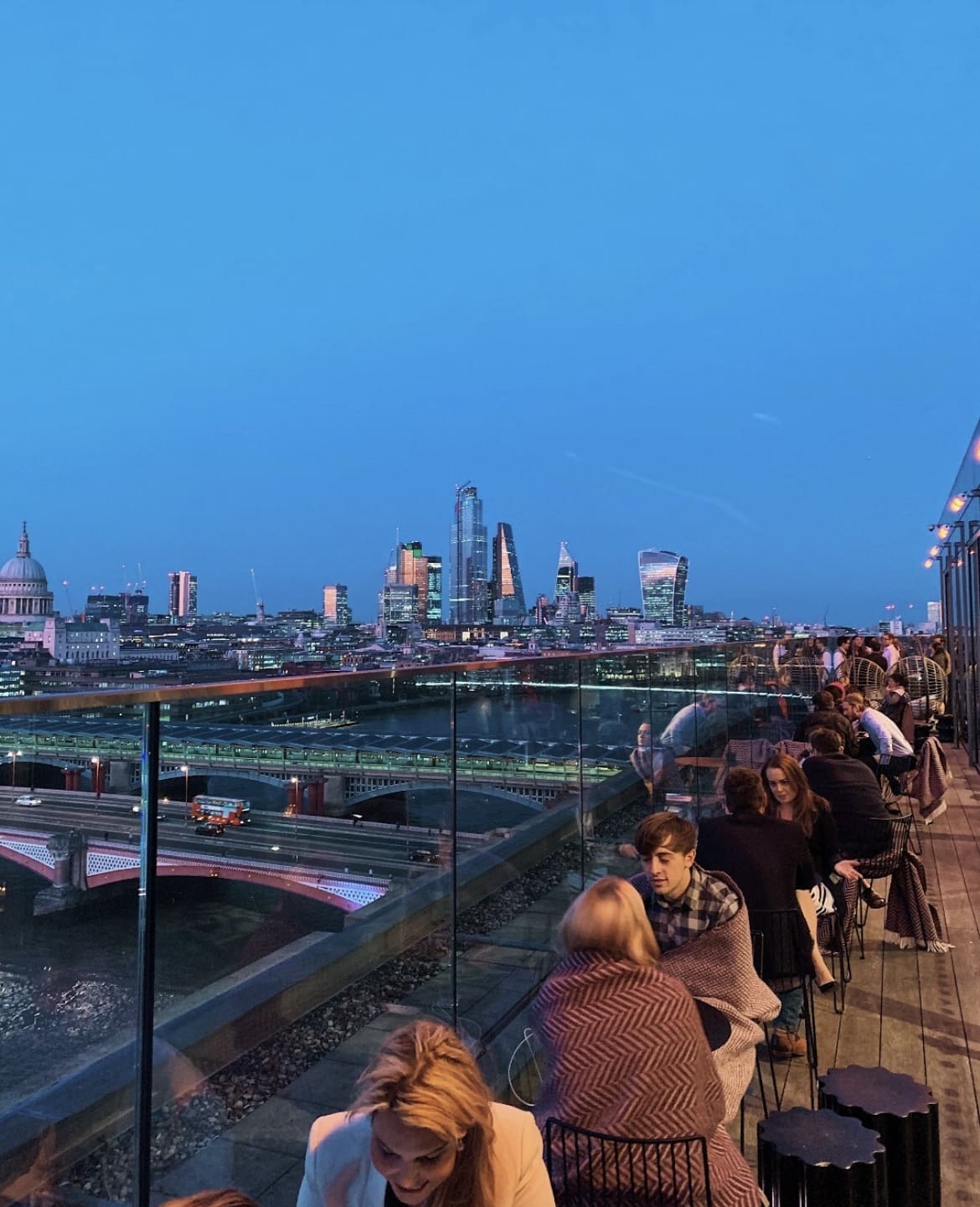
6. Jin Bo Law
Located in Aldgate, Jin Bo Law offers a rooftop experience that is quintessentially London . With a panoramic view that includes The Shard, Tower Bridge, and the Gherkin, it's a place where the city's iconic architecture feels within reach. The interior is sleek and modern, with Asian-inspired design elements that reflect the sophistication of its cocktail menu.
What to Drink: The 'Dragon's Gate' is an exotic mix that pays homage to the bar's Asian influences, combining traditional ingredients with a modern flair.
Insider Tip: Jin Bo Law attracts a fashionable crowd, especially on weekends. Dress to impress and be prepared for a night where luxury and style take center stage.
7. The Nest in Treehouse
Nestled in the heart of London, The Nest in Treehouse offers an eco-conscious retreat amidst the urban jungle. Its terraces provide panoramic views of the city skyline, with lush greenery adding a touch of tranquility to the bustling atmosphere. This rooftop oasis combines sustainability with style, inviting guests to sip cocktails while surrounded by nature.
What to Drink: Opt for the 'Green Goddess' cocktail, a refreshing blend of botanical flavors that perfectly complements the verdant surroundings.
Insider Tip: The Nest in Treehouse is popular for its weekend brunches. Make a reservation to secure a spot and indulge in a leisurely mid-morning feast with a view.
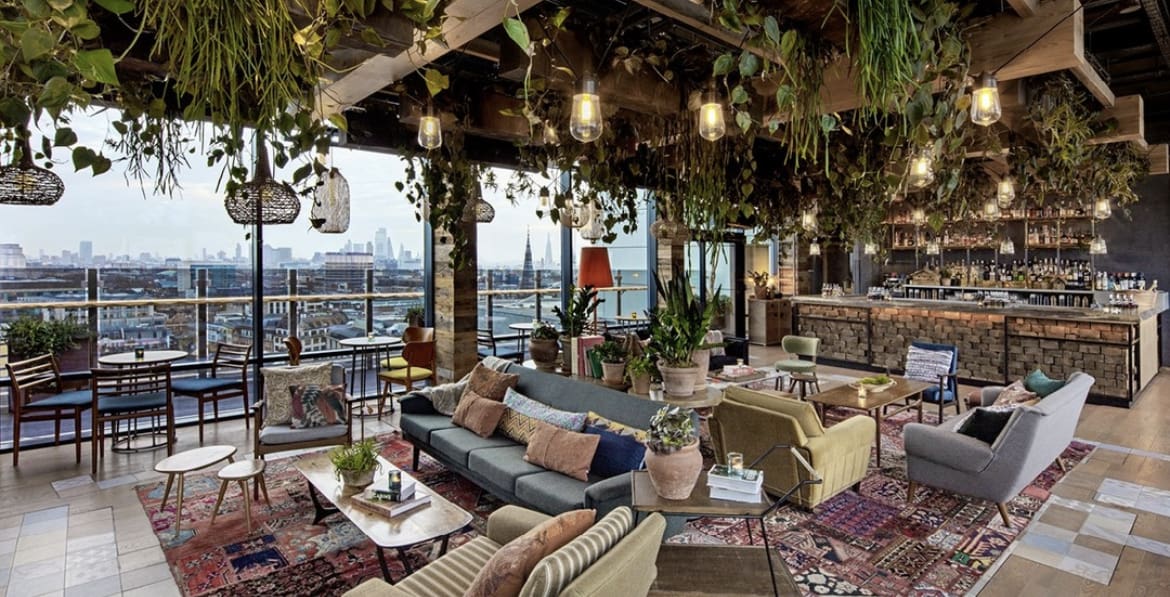
8. Aviary London
Perched on the 10th floor of the Montcalm Royal London House in Finsbury Square, Aviary London offers a luxurious rooftop escape with stunning views of the city skyline. Its spacious outdoor terraces provide the perfect setting for alfresco dining and cocktail sipping, while the contemporary interiors exude elegance and sophistication.
What to Drink: Try the 'Skyline Spritz,' a light and refreshing cocktail that captures the essence of London's skyline with its blend of citrus and botanical notes.
Insider Tip: Aviary London hosts live music performances on select evenings, adding an extra layer of ambiance to your rooftop experience. Check their events calendar for upcoming performances and plan your visit accordingly.
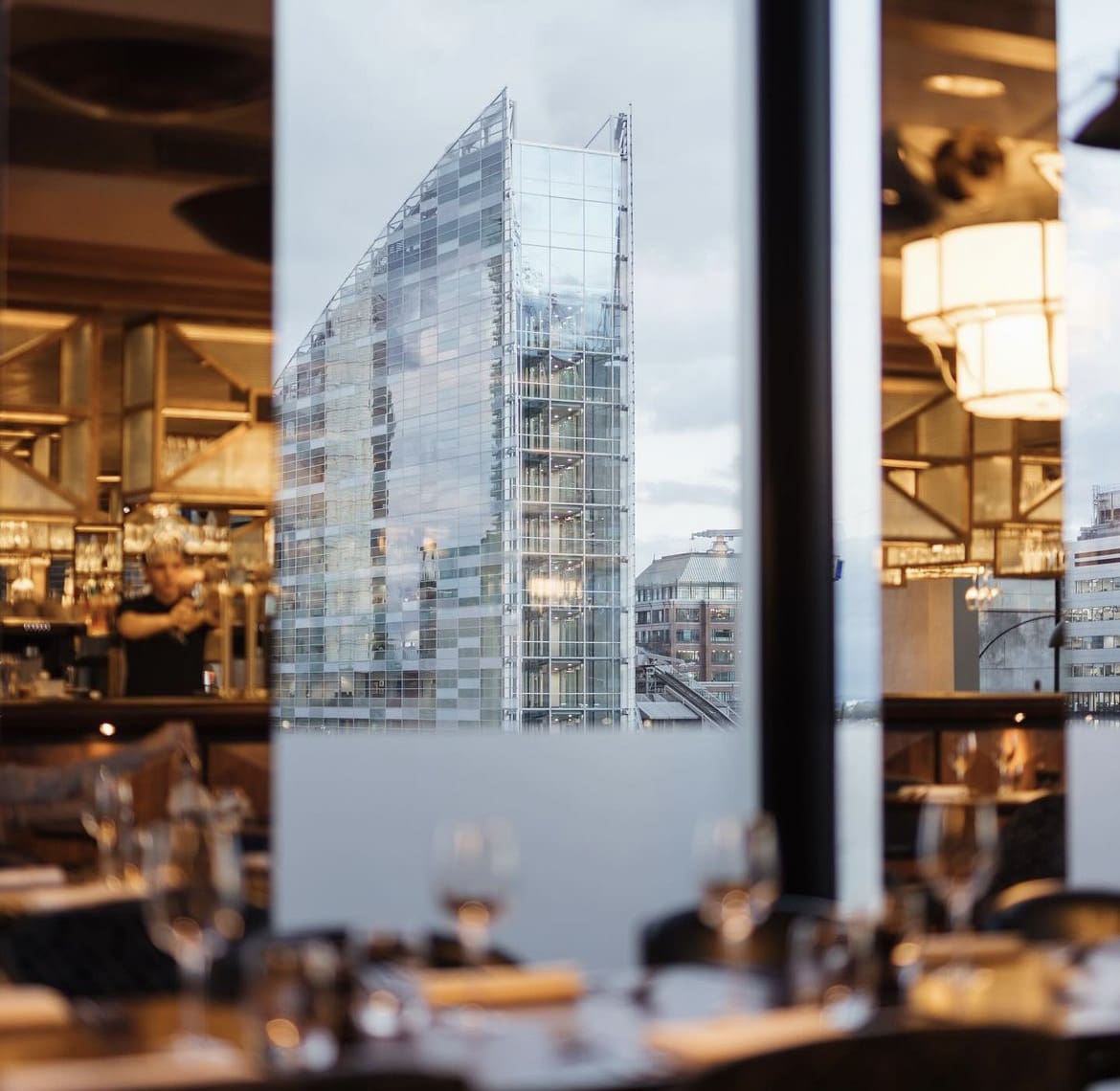
Madison, overlooking St. Paul's Cathedral, is where sophistication meets skyline views. Its expansive terrace offers unparalleled vistas of the iconic dome, while the chic interior provides a stylish setting for sipping cocktails and socializing. Whether you're after a romantic evening or a lively night out with friends, Madison delivers an unforgettable rooftop experience.
What to Drink: The 'St. Paul's Sipper' is a Madison signature, featuring a blend of premium spirits and fruit flavors that perfectly complement the stunning backdrop.
Insider Tip: Arrive early to secure a spot on the terrace and witness the sunset casting a golden glow over the city—an Instagram-worthy moment not to be missed.
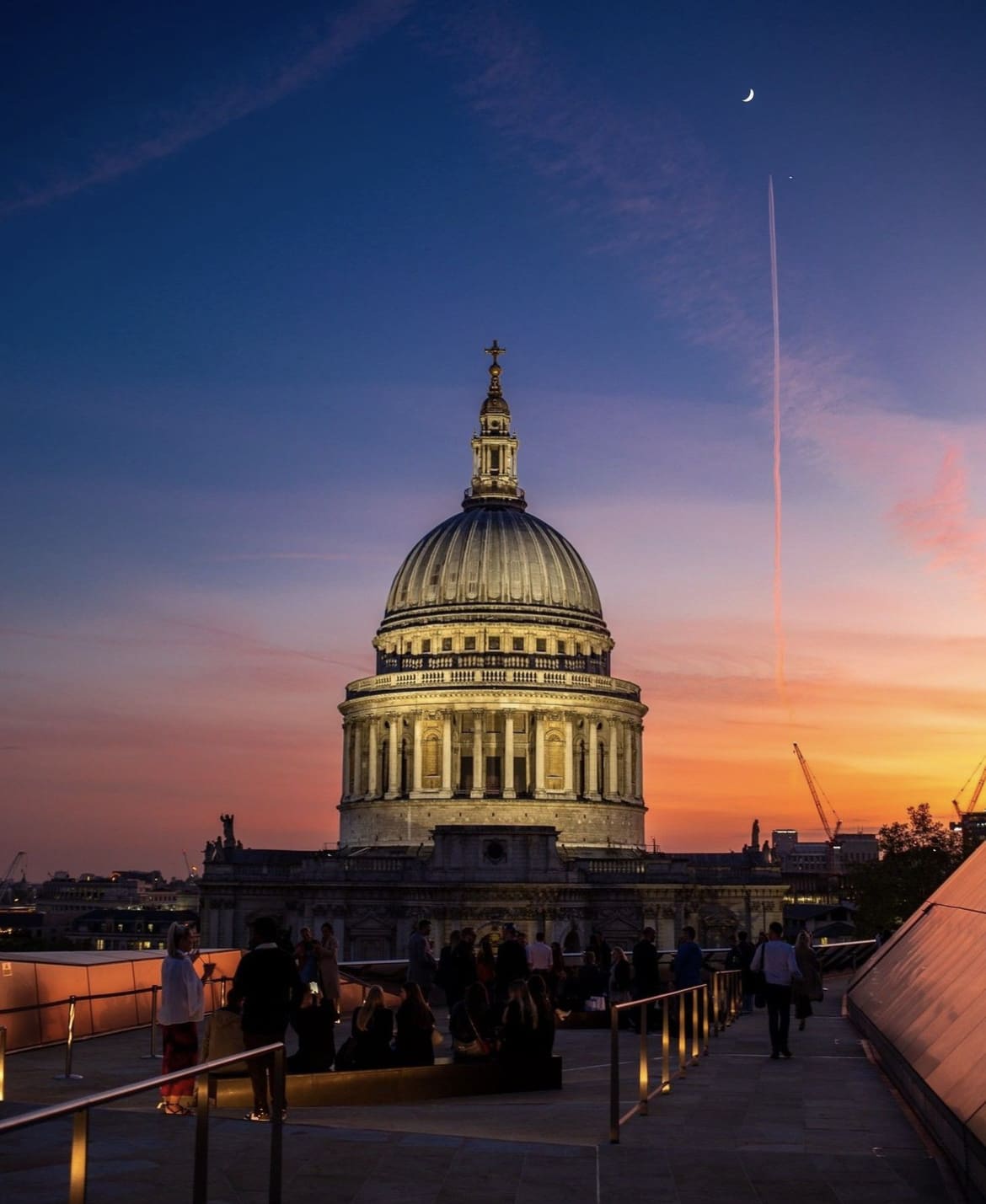
10. Coq d'Argent
Set amidst the architectural marvels of the City of London , Coq d'Argent offers an elevated dining experience in every sense of the word. Its garden setting atop No.1 Poultry provides a serene escape from the hustle and bustle below, while the French-inspired cuisine and extensive wine list ensure a feast for the senses.
What to Drink: Indulge in a glass of champagne or choose from their selection of expertly crafted cocktails to accompany your meal.
Insider Tip: Coq d'Argent is a popular spot for business lunches and special occasions. Make a reservation in advance, especially if you're planning to dine during peak hours.
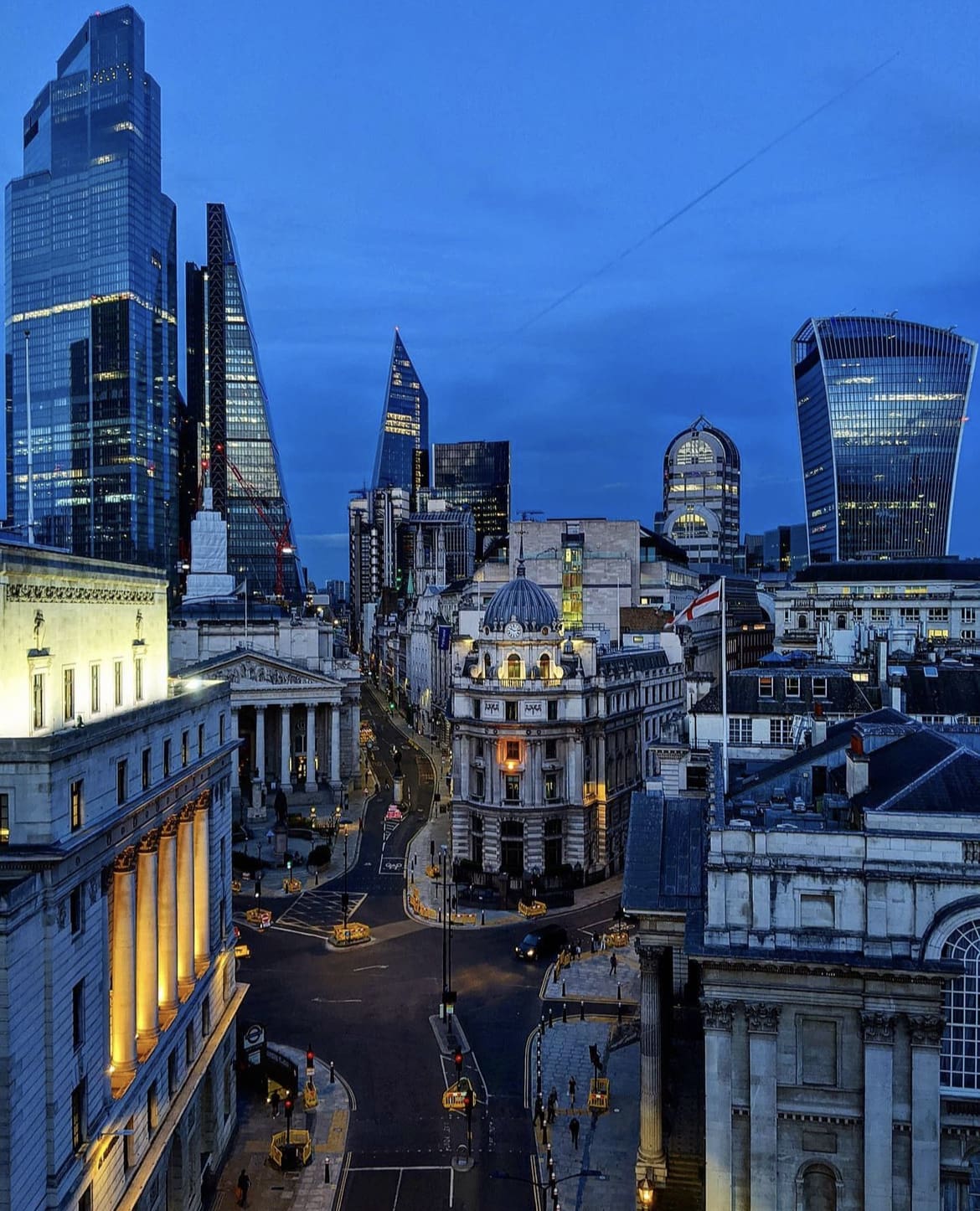
11. Pergola Paddington
Pergola Paddington is an urban oasis nestled in the heart of Paddington Central. Its sprawling rooftop terrace is adorned with lush greenery, creating a vibrant and inviting atmosphere. With a rotating selection of street food vendors and a well-stocked bar, Pergola Paddington offers a relaxed yet lively setting for enjoying delicious bites and refreshing drinks with friends.
What to Drink: Cool off with a 'Pergola Punch,' a fruity and refreshing cocktail that's perfect for sipping in the sun.
Insider Tip: Pergola Paddington can get busy, especially on weekends. Arrive early to secure a table or consider visiting during off-peak hours for a more laid-back experience.
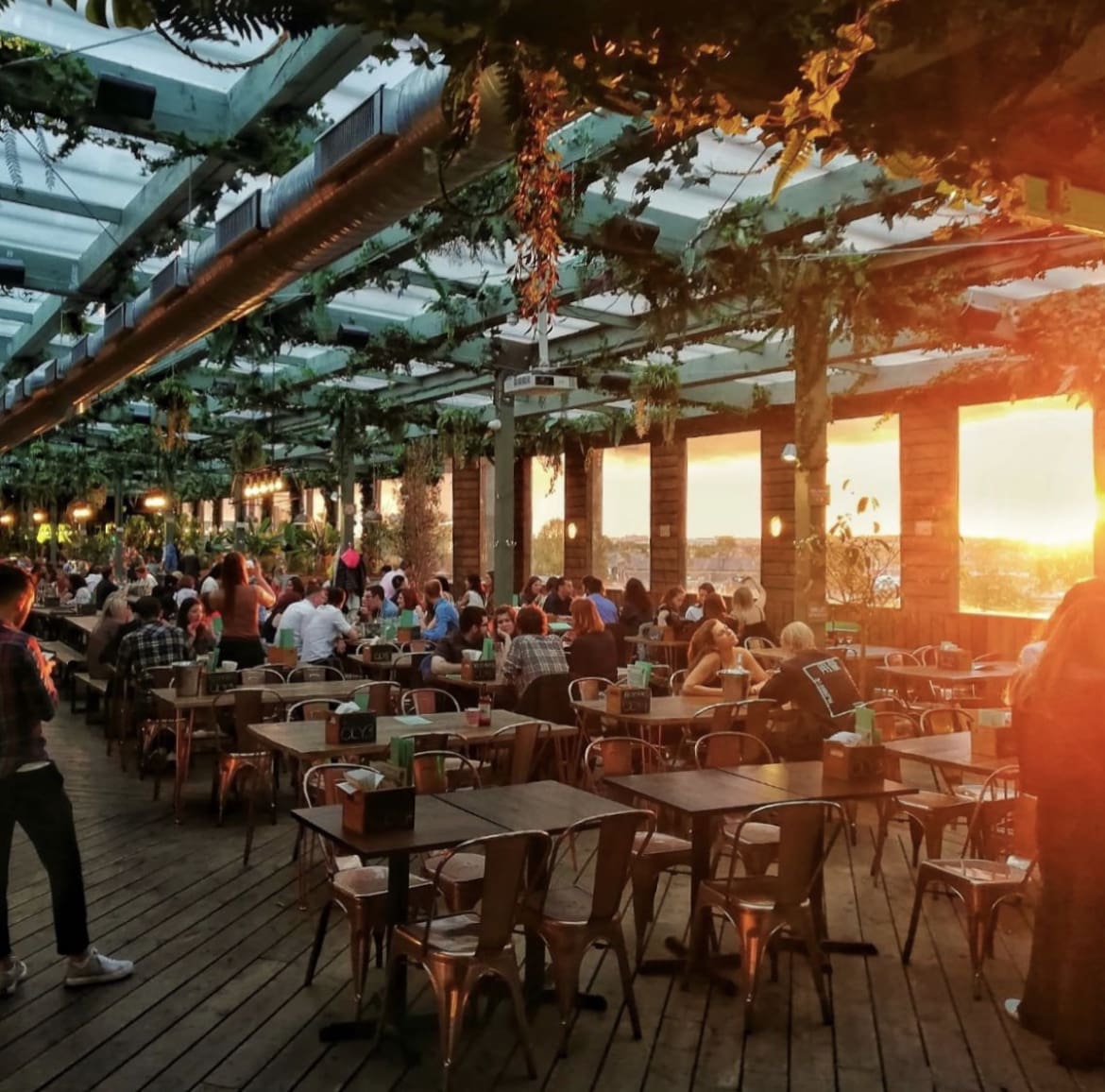
12. Frank's Cafe
Perched atop a multi-story car park in Peckham, Frank's Cafe is a seasonal rooftop bar that has become a beloved fixture of London's summer scene. Its unpretentious vibe, panoramic views of the city skyline, and eclectic crowd make it a must-visit destination for locals and visitors alike. With its colorful umbrellas and artsy decor, Frank's Cafe exudes a hip and relaxed atmosphere that perfectly complements its stunning surroundings.
What to Drink: Keep it simple with a classic G&T or opt for one of their rotating selection of craft beers.
Insider Tip: Frank's Cafe is only open during the summer months, typically from May to September. Make the most of the season and plan your visit accordingly to catch one of London's best-kept rooftop secrets.
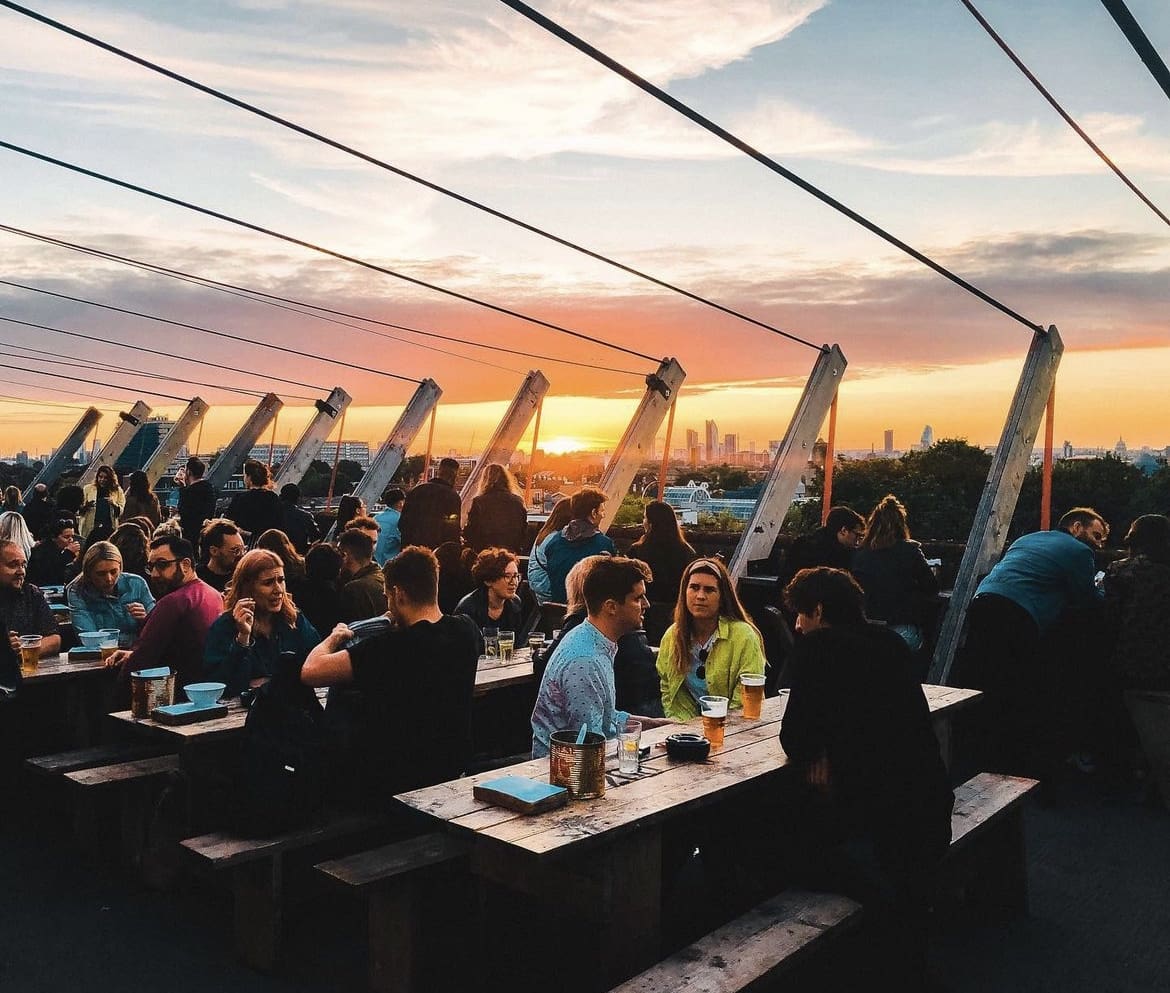
How to Choose the Perfect Rooftop Bar In London, for You
Choosing the right rooftop bar is an art form. Consider what you're after: Are panoramic views at the top of your list, or are you more about the vibe? Maybe it's a specific cocktail or cuisine you're craving. Remember, the best choice blends ambiance with flavor, offering a night that’s as delicious as it is unforgettable.
Making the Most of Your London Rooftop Bar Experience
To ensure an elevated evening, keep these tips in mind:
- Book in Advance: Many of these spots are exclusive for a reason. Secure your spot to avoid being turned away.
- Dress Code: Most rooftop bars have a dress code—think smart casual or chic. It's all about matching the sophistication of the setting.
- Weather Wise: The British weather can be unpredictable. Check the forecast and choose a bar with indoor options just in case.
Experiencing London from its rooftop bars is to see the city in a new light—literally. It’s about embracing the night, the city’s skyline, and the myriad flavors each bar brings to your glass. So, here's to high spirits and even higher views. May your nights be as dazzling as the city lights below.

Neon Lights & City Nights: The Best Night Clubs in London
London, a city where the night shines as brightly as the day, and the sound of music leads you down its historic lanes into the heart of its pulsating nightlife. Beyond the shadow of the city's iconic landmarks, the neon lights of London's night clubs beckon with the promise of unforgettable adventures.
This isn't just about dancing the night away; it's about experiencing the vibrancy of cultures, sounds, and spirits that make London's night scene one of the most dynamic on the planet.
Whether you're a hardcore electronic music enthusiast or a live music lover, this guide dives into the best night clubs in London , offering not just a night out, but a journey into the soul of the city's night.
Tucked away in the historic Farringdon area, Fabric has been the cornerstone of London's electronic music scene since its opening in 1999. With a reputation that crosses borders, Fabric is not just a club; it's an institution, famed for its groundbreaking sound system and body-sonic dancefloor that lets you feel the bass coursing through your veins.
Fabric's heart beats to the rhythm of electronic music, hosting a roster of international DJs and emerging talent. It's a melting pot where music lovers of all types converge, from techno heads to drum and bass aficionados.
Be prepared for a cover charge that varies from £10 to £25, depending on the night and the line-up. Fridays are legendary for their drum and bass sessions, while Saturdays offer a mix of techno, house, and everything in between. Remember, Fabric operates a strict face control, so bring your ID and a spirit ready to embrace the night.
As one of the top London clubs for music lovers, Fabric offers an unparalleled night out for those looking to experience the cutting edge of the electronic music scene.

2. Ministry of Sound
In the heart of Elephant & Castle, Ministry of Sound stands as a titan of London's clubbing landscape. Since its inception in 1991, it has evolved from a derelict bus garage into one of the world's most famous night clubs, with a sound system that's become the stuff of legend.
The Ministry of Sound is a sanctuary for house and techno enthusiasts. Its dance floors are filled with dedicated music fans from across the globe, drawn by world-class DJ line-ups and the club's relentless pursuit of the perfect sound experience.
Membership options offer a range of benefits, including queue jumps and access to exclusive areas. Tickets for events vary, but planning ahead can secure you a spot in one of London's most iconic dance music venues. Themed nights and special events are frequent, so checking their calendar is a must.
Ministry of Sound is undeniably one of the exclusive London night clubs, a must-visit for anyone looking to dive deep into the heart of the city's electronic music culture.

XOYO, nestled in the vibrant Shoreditch area, has quickly established itself as a beacon for clubbers seeking an intimate yet electrifying night out. Since opening its doors in 2010, XOYO has been dedicated to offering a space where music is the unchallenged hero.
The club spans two floors, with a layout that encourages immersion into the music and connection with the crowd. Its no-frills decor keeps the focus on what matters most: the sound, the DJ, and the dance floor.
XOYO's line-up is a carefully curated mix of established names and rising stars in the electronic, house, and techno scenes. It's a place where music aficionados and casual clubbers alike can discover new sounds and lose themselves in the beats.
XOYO operates a more accessible pricing strategy, with entry fees typically ranging from £5 to £20. The club's residency series, where DJs play consecutive weekends, offers a unique opportunity to see artists develop their sound over time. Advance ticket purchases are recommended to avoid disappointment.
For those exploring the London clubbing scene, XOYO represents the perfect blend of intimacy and energy, making it a key destination in the city's vibrant nightlife tapestry.
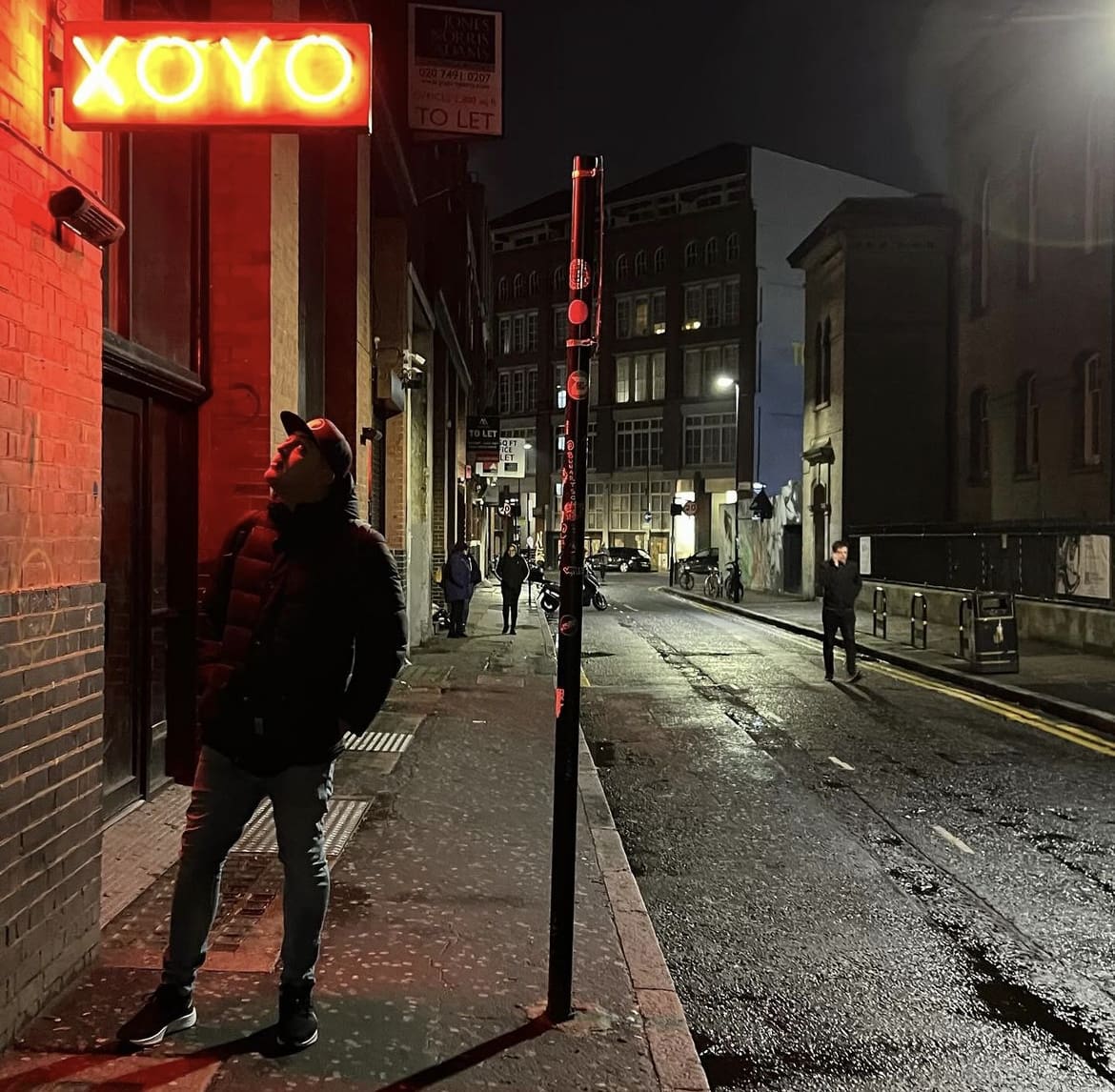
4. Corsica Studios
Nestled in the heart of Elephant & Castle, Corsica Studios is a hidden gem renowned for its underground music scene and gritty, industrial vibe. Since its inception, Corsica Studios has been a hub for electronic music enthusiasts seeking cutting-edge sounds and immersive clubbing experiences.
Situated in two railway arches, Corsica Studios exudes an underground charm that sets it apart from traditional club venues. Its intimate spaces and raw industrial aesthetic create an immersive atmosphere that transports clubbers to the forefront of London's underground music scene.
Corsica Studios is known for its eclectic lineup of electronic music events, featuring a mix of techno, house, experimental, and avant-garde sounds. Its commitment to pushing the boundaries of underground music attracts a diverse crowd of music enthusiasts, united by their passion for innovative sounds and immersive clubbing experiences.
Corsica Studios operates a cash-only bar, so it's advisable to come prepared with cash. Additionally, the venue's programming often includes niche events and experimental performances, so it's worth checking their website for upcoming events and ticket availability.

Stepping into Heaven is like entering a realm where the party never stops, and everyone is welcome. Located near Charing Cross, this legendary venue has been at the forefront of LGBTQ+ nightlife since the early '80s, hosting iconic pop and dance nights that have become a staple of London's night scene.
With a capacity of over 1,000 people, Heaven is one of London’s largest and most famous gay clubs, known for its electrifying atmosphere and inclusive vibe.
Heaven’s stage has seen performances from some of the biggest names in pop, along with hosting regular club nights that feature a mix of chart-topping hits and dance anthems. The crowd is as diverse as the music, creating a welcoming space for all.
G-A-Y nights are especially popular, offering cheap entry and drink specials. It’s a good idea to buy tickets in advance for big events, as Heaven’s reputation often means a full house.
For those seeking London nightlife tips, Heaven is a must-visit for its historic significance, top-tier entertainment, and unbeatable party atmosphere.
6. Egg London
Nestled in the industrial landscapes of Kings Cross, Egg London is a true gem in the city’s clubbing crown. Known for its all-night parties and captivating indoor and outdoor spaces, Egg provides a sanctuary for those looking to dance until the sun comes up.
The club boasts a multi-level layout, including a garden for those summer night vibes and various rooms each offering different musical styles. Its recent renovations have only enhanced its reputation as a space where clubbing feels like an adventure.
Egg London is a haven for electronic and techno enthusiasts, with a keen ear for international DJs and emerging talent. The crowd is energetic, diverse, and ready to embrace the club’s ethos of freedom and expression through dance.
Egg operates a more relaxed dress code, focusing on comfort and self-expression. While the door policy is tight to ensure a safe environment for all, arriving early can help avoid long waits. Membership and VIP options provide perks like fast-track entry and access to exclusive areas.
Egg London embodies the essence of nightlife in London with its immersive electronic beats, sprawling dance floors, and unparalleled atmosphere, making it a beacon for night owls and music lovers alike.
7. Printworks London
Nestled in a former printing press in Canada Water, Printworks London is a monumental venue that redefines the clubbing experience. With its industrial architecture and massive event spaces, Printworks has become synonymous with immersive, multi-sensory club nights that leave a lasting impression.
Printworks' vast halls and raw industrial aesthetic provide the perfect backdrop for its cutting-edge events. The venue's scale is awe-inspiring, creating an atmosphere that's both intimate and grandiose.
Printworks hosts a diverse range of events, from electronic music showcases to live performances and cultural festivals. Its programming attracts a wide spectrum of music lovers, united by their passion for unforgettable experiences.
Due to its popularity, tickets for Printworks events often sell out quickly. It's advisable to purchase tickets in advance and keep an eye on their website for upcoming events and special offers. Additionally, arriving early can help avoid long queues and ensure you have ample time to explore the venue's expansive spaces.
As one of the exclusive London night clubs, Printworks offers a truly immersive clubbing experience that transcends traditional boundaries, making it a must-visit destination for those seeking unforgettable nights out in the city.
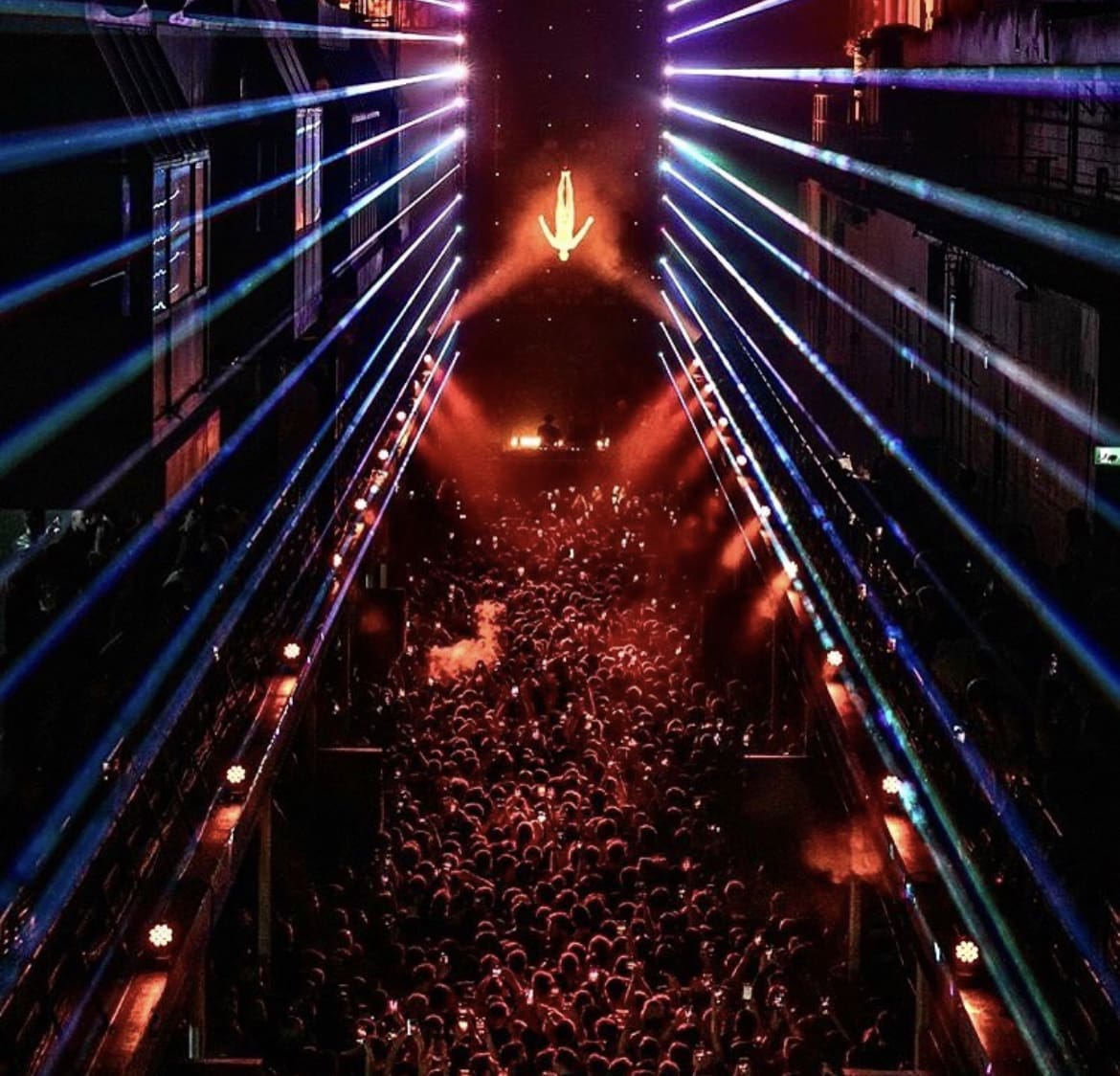
8. The Jazz Cafe
Tucked away in the vibrant Camden Town, The Jazz Cafe is a legendary venue that celebrates the rich history and soulful sounds of jazz, soul, funk, and beyond. Since opening its doors in 1990, The Jazz Cafe has been a mecca for music enthusiasts seeking intimate live performances and electrifying club nights.
The Jazz Cafe exudes a cozy yet vibrant atmosphere, with its intimate stage and warm, welcoming ambiance. The venue's intimate size creates an immersive experience where audiences can connect with artists on a personal level.
The Jazz Cafe boasts a diverse lineup of live performances and DJ sets, spanning genres from jazz and soul to funk, reggae, and beyond. Its eclectic programming attracts a diverse crowd of music lovers, united by their appreciation for quality live music and unforgettable performances.
The Jazz Cafe offers a range of ticket options, including general admission tickets for live performances and club nights, as well as VIP packages for those seeking a more exclusive experience. It's advisable to check the venue's website for upcoming events and ticket availability, as well as any special offers or promotions.
Renowned for its live music offerings, The Jazz Cafe is one of the London clubs with live music, offering unforgettable performances and electrifying club nights that celebrate the rich tapestry of musical genres.
9. Studio 338
In the vibrant Greenwich Peninsula, Studio 338 is a cutting-edge venue that pushes the boundaries of clubbing culture. With its innovative design, state-of-the-art sound system, and sprawling outdoor terrace, Studio 338 offers an unparalleled clubbing experience that blurs the lines between indoor and outdoor nightlife.
Studio 338's futuristic design and immersive atmosphere set the stage for unforgettable club nights and outdoor events. The venue's sleek, industrial aesthetic creates a dynamic backdrop for its cutting-edge programming and world-class performances.
Studio 338 is renowned for its diverse lineup of electronic music events, featuring some of the biggest names in techno, house, and electronic music. Its forward-thinking approach to programming attracts a diverse crowd of music enthusiasts, united by their passion for cutting-edge sounds and unforgettable clubbing experiences.
Studio 338 offers a range of ticket options, including general admission tickets for club nights and outdoor events, as well as VIP packages for those seeking a more exclusive experience. It's advisable to purchase tickets in advance and check the venue's website for upcoming events and ticket availability.
As one of the best night clubs in London, Studio 338 offers a dynamic clubbing experience that pushes the boundaries of traditional nightlife, making it a must-visit destination for music enthusiasts and clubbers alike.

Situated in the vibrant neighborhood of Brixton, Phonox stands out as a beacon of London's clubbing scene. With its stripped-back design and focus on high-quality sounds, Phonox offers an intimate yet exhilarating clubbing experience.
Located beneath the bustling streets of Brixton, Phonox boasts an underground vibe that sets the stage for unforgettable nights. Its minimalist decor and state-of-the-art lighting create an ambiance that's both inviting and electric.
Phonox is renowned for its diverse lineup of electronic music, featuring everything from house and techno to disco and funk. Its carefully curated events attract a mixed crowd of music enthusiasts, united by their love for quality beats and vibrant atmospheres.
Phonox operates a ticketed entry system, with tickets often available for purchase online in advance. It's recommended to check their website for upcoming events and secure your spot early. Additionally, Phonox offers a cloakroom service for storing belongings during your night out.

11. The Pickle Factory
Adjacent to Oval Space in the vibrant Bethnal Green, The Pickle Factory is a hidden gem known for its intimate atmosphere and top-notch sound system. Since its opening, The Pickle Factory has carved out a niche as a destination for discerning clubbers seeking quality sounds and intimate clubbing experiences.
Housed in a former pickle factory, The Pickle Factory exudes a unique charm that sets it apart from traditional club venues. Its intimate size and minimalist aesthetic create an immersive atmosphere that places the focus squarely on the music and the dance floor.
The Pickle Factory's programming focuses on quality over quantity, with a lineup that showcases underground talent and cutting-edge sounds across a range of electronic music genres. Its discerning audience appreciates the venue's commitment to pushing the boundaries of clubbing culture and discovering new sounds.
The Pickle Factory's intimate size means that tickets for popular events often sell out quickly, so it's advisable to purchase tickets in advance. Additionally, the venue operates a strict no photography policy, so be sure to respect the club's rules and focus on enjoying the music and the atmosphere.
Renowned for its intimate atmosphere and top-notch sound system, The Pickle Factory is one of the hip hop clubs in London that offers a unique clubbing experience for music enthusiasts and clubbers alike.

12. Electric Brixton
Located in the heart of Brixton, Electric Brixton is a historic venue that has been revitalized as a premier destination for live music and club nights. With its iconic Art Deco architecture and state-of-the-art sound system, Electric Brixton offers a unique blend of old-world charm and modern clubbing sophistication.
Housed in a former cinema, Electric Brixton exudes an old-world charm that sets it apart from traditional club venues. Its grand Art Deco facade and spacious interior create a sense of grandeur that adds to the excitement of club nights and live performances.
Electric Brixton's programming spans a wide range of musical genres, from electronic and dance to live bands and DJs. Its eclectic lineup attracts a diverse crowd of music enthusiasts, united by their passion for quality sounds and unforgettable clubbing experiences.
Electric Brixton offers a range of ticket options, including general admission tickets for club nights and live performances, as well as VIP packages for those seeking a more exclusive experience. It's advisable to purchase tickets in advance and check the venue's website for upcoming events and ticket availability.
Known for its historic charm and modern clubbing sophistication, Electric Brixton is one of the London night clubs guide that offers a unique clubbing experience for music lovers and clubbers alike.

14. Oval Space
Adjacent to The Pickle Factory in Bethnal Green, Oval Space is a versatile venue that blurs the lines between clubbing, live music, and cultural events. With its spacious interior, panoramic views of East London, and commitment to showcasing innovative talent, Oval Space offers a dynamic and immersive clubbing experience that's second to none.
Oval Space boasts a spacious and versatile interior, with multiple rooms and outdoor spaces that offer panoramic views of East London. Its industrial-chic aesthetic and state-of-the-art sound system create an ambiance that's both modern and timeless.
Oval Space's programming spans a wide range of musical genres, from electronic and dance to live bands and DJs. Its diverse lineup attracts a mixed crowd of music enthusiasts, united by their passion for quality sounds and unforgettable clubbing experiences.
Oval Space operates a ticketed entry system, with tickets available for purchase in advance online. It's advisable to check the venue's website for upcoming events and ticket availability, as well as any special offers or promotions. Additionally, Oval Space offers a range of food and drink options to keep you fueled throughout the night.
Renowned for its panoramic views and dynamic programming, Oval Space is one of the best dance clubs in London that offers a unique clubbing experience for music enthusiasts and clubbers alike.
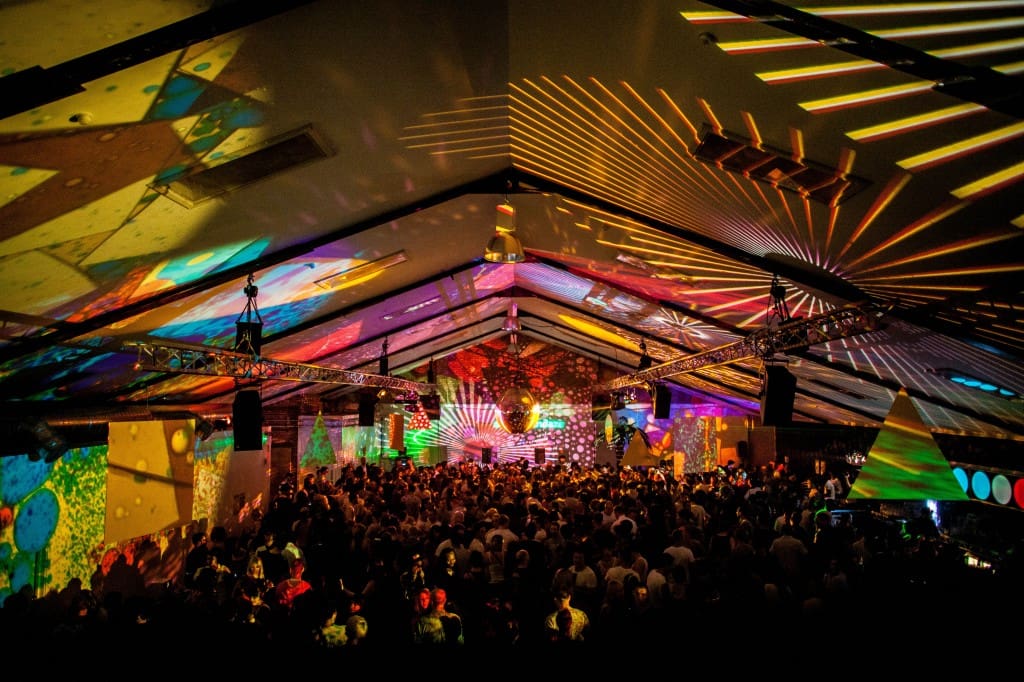
15. The Cross
Once rumored to make a comeback, The Cross was a legendary clubbing destination that left an indelible mark on London's nightlife scene. While its revival remains uncertain, The Cross's legacy lives on in the memories of those who experienced its iconic parties and groundbreaking events.
The Cross was located in the heart of King's Cross, a vibrant and eclectic neighborhood that served as the perfect backdrop for its legendary parties. Its spacious interior and cutting-edge design created an atmosphere that was both immersive and exhilarating.
The Cross's programming was as diverse as its crowd, featuring a mix of electronic music genres and underground sounds. Its legendary parties attracted a loyal following of music enthusiasts, united by their passion for quality sounds and unforgettable clubbing experiences.
While The Cross's future remains uncertain, its legacy lives on in the memories of those who experienced its iconic parties and groundbreaking events. Keep an eye out for any announcements or updates regarding its potential revival, and be ready to experience a piece of London's clubbing history if the opportunity arises.
As one of the London night clubs near me, The Cross holds a special place in the hearts of those who experienced its legendary parties and groundbreaking events, serving as a testament to the city's vibrant and ever-evolving nightlife scene.
Privacy Preference Center
Privacy preferences.

Northern territory Travel Guide
We design our Northern Territory Travel Guide as a starting point for planning your visit to the Australian outback. We cover the basics you need to plan a trip to Darwin, Uluru, and all the other major towns of this magical part of the world.
There are many reasons to visit, among them:
- The awe-inspiring UNESCO sites at Uluru, Kuta Tjuta and Kakadu
- A culture dating back more than 40,000 years
- 24 National Parks and over 70 conservation areas
- Offbeat cultural/sporting events like the Beer Can Regatta in Darwin and the Camel Cup in Alice Springs
- Cruise or kayak Nitmiluk (Katherine) Gorge
At 1600km from top to bottom, if the Northern Territory were its own country, it would be the 20th largest in the world!
So what are you waiting for? Let’s start planning!
Regions in Northern Territory
Unless you have a month or more to explore, you will probably only visit one or two of these regions on any trip. The state has so much to offer that it’s a good idea to get a lay of the land and see where the visitor hotspots are.
The NT is divided into seven regions; we have listed the key sites in each place if you are not exactly sure where everything is.
- Darwin and the Top End
- Arnhem Land
- Tennant Creek and Barkly Region
- Alice Springs
- Uluru and Kings Canyon
If you are not sure where to head, start with our guide to the regions of the Northern Territory.
Northern Territory Inspiration

How to Plan a Perfect Trip to Uluru in 2024
Northern territory travel planning.
Learn about the world’s oldest culture while visiting Australia’s ancient red centre. Experience the waterfalls of Kakadu and Litchfield and uncover some of the classic desert bush walks in Katherine and the McDonnell Ranges. Be sure to add a short stay in Darwin to learn about the Territory’s history and meet the local crocodiles!

How to get to the NT
There are a few ways to travel between the Top End and the Red Centre, but a flight will be your best choice if you are short of time.
The Northern Territory has three airports, but international flights only land in Darwin.
International Airports
- Darwin- Direct flights from Bali (2.5hrs), Singapore (5hrs) and Manila (5hrs), Dili (80mins)
Key Domestic airports
- Ayers Rock (Yulara) – direct flights from Sydney, Brisbane, Melbourne, Adelaide, Darwin and Cairns
- Alice Springs – direct flights from Adelaide, Brisbane, Melbourne, Sydney, Perth and Ayers Rock
- Darwin – all Australian capitals and Broome, Cairns and Townsville
Interstate Trains
There are trains from Adelaide and Alice Springs; these are luxury services chosen more for the experiences they offer than a way to get from A to B.
Interstate Buses
You can take a long-distance bus from Broome to Darwin or between Adelaide and Alice Springs, as well as from Alice Springs and Darwin. These trips are tests of endurance and only suited to the hardiest travellers.
highlights of The NT
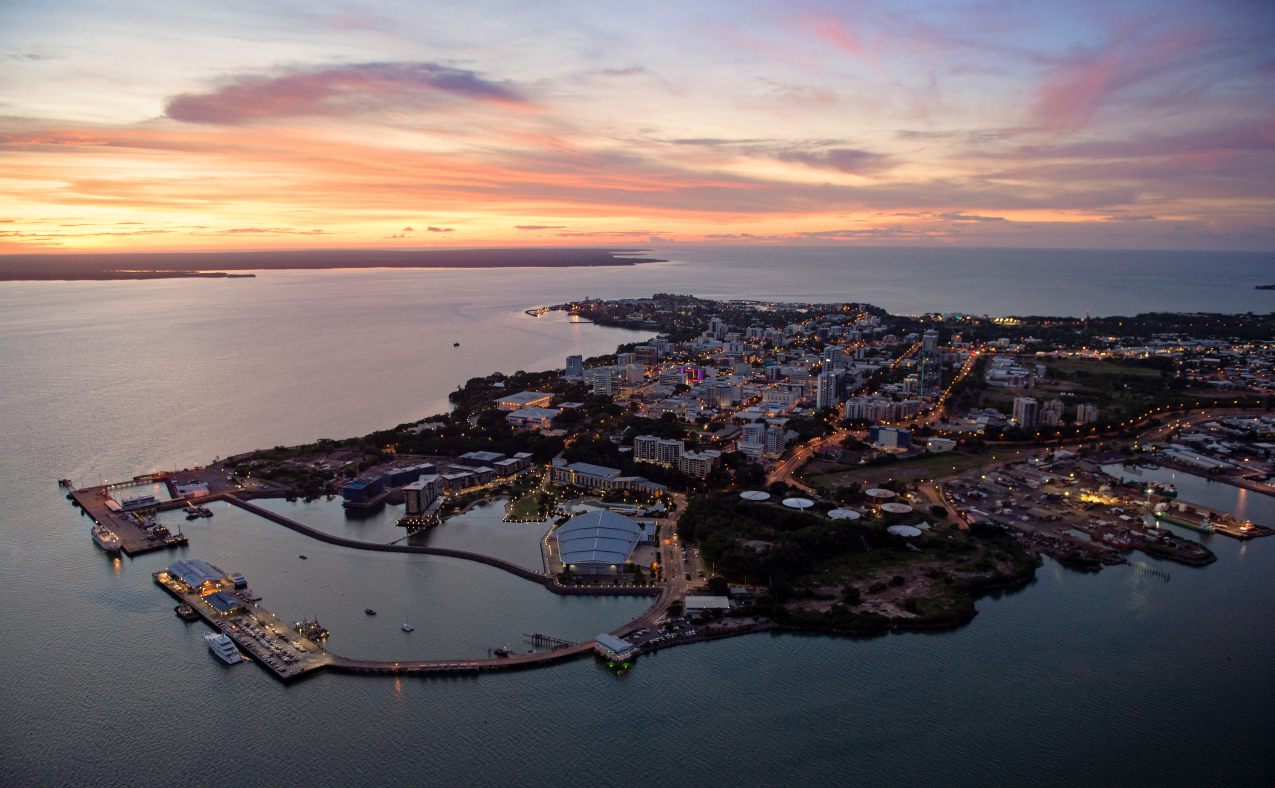
Getting around the Territory
Driving distances by average time.
- Darwin to Katherine – 3hrs 10 minutes
- Darwin to Kakadu – 3 hours
- Darwin to Tennant Creek – 10 hours
- Alice Springs to Darwin – 15 hours
- Darwin to Yulara – 19 hours
Explore more of THe NT
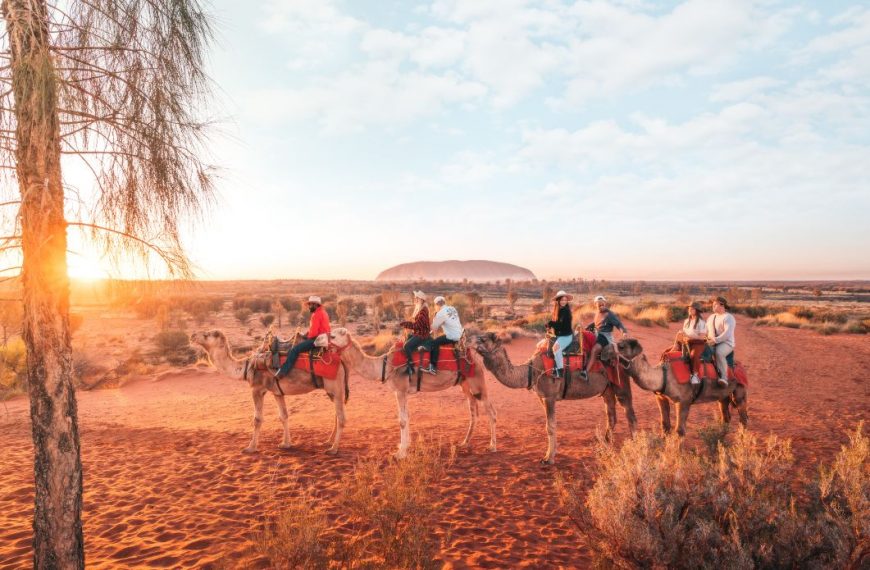
The Best Uluru Holiday Packages 2024
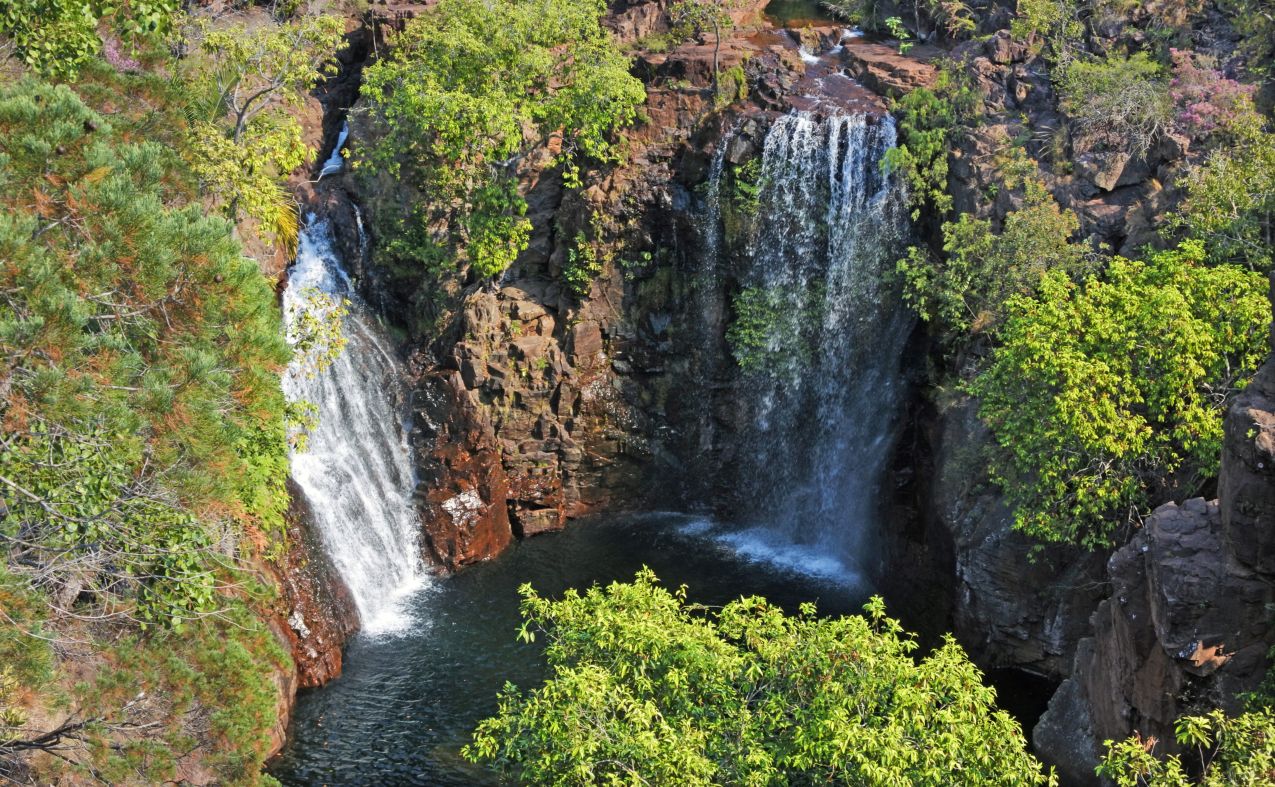
6 Unforgettable Day Trips From Darwin
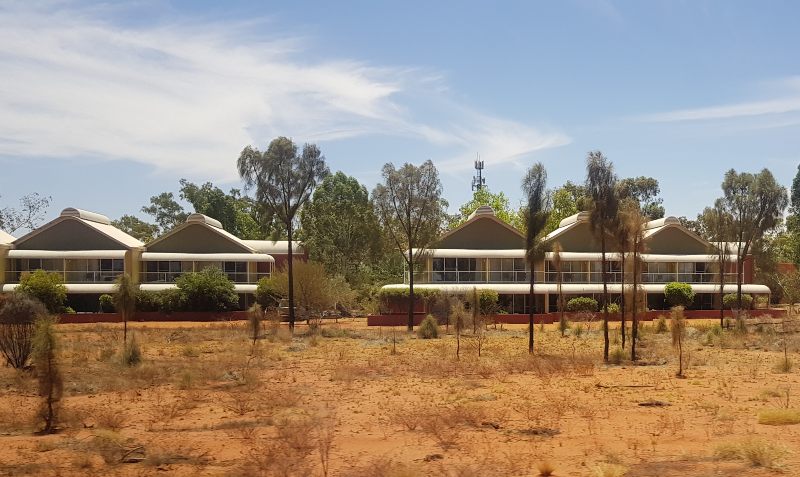
A Detailed Guide to Choosing Accommodation in ULURU 2024
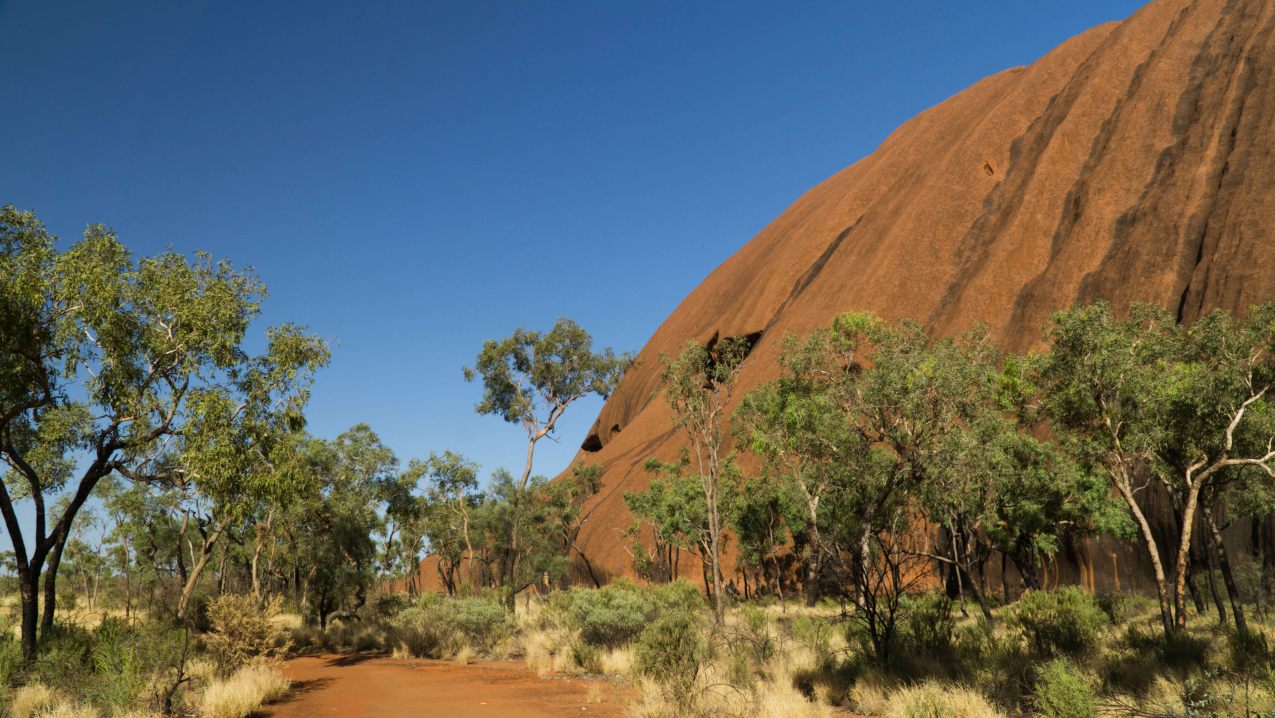
Walks at Uluru – Everything you need to know
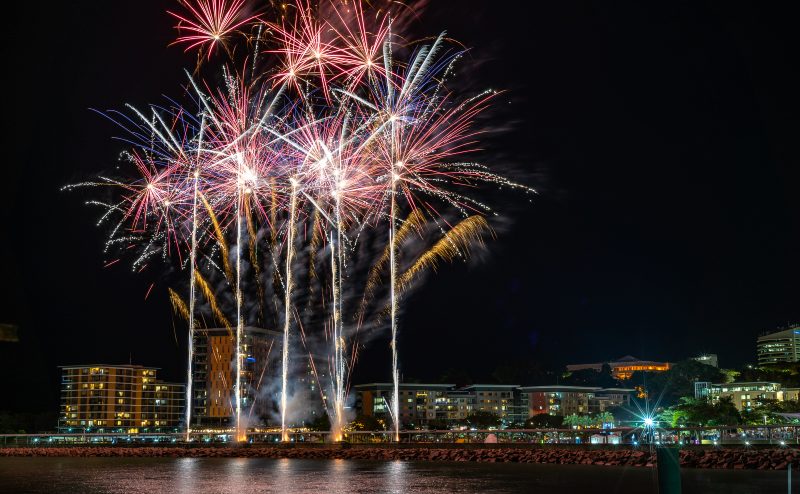
When is the best time To visit the Northern Territory
Where will you go next.
- Australian Capital Territory
- New South Wales
- Northern Territory
- South Australia
- Western Australia
Have questions about exploring Australia? Head over and join our Facebook Group and we will be happy to help
Privacy Overview

The Northern Territory
The Northern Territory is authentic Australia at its wildest. From the beating cultural heart of Uluru (Ayers Rock) to the outback pubs, parks, and livestock stations that light up the global imagination, the Northern Territory defines and defies, and is a crucial part of the Australian spirit, culture, and identity. From the 50,000-year-old traditions of Arnhem Land, to the Crocodile Dundee landscapes of Kakadu National Park, to the cosmopolitan core of Darwin, the Northern Territory is as soul-satisfying as it is rough-and-tumble. And it must be experienced to truly understand “The Lucky Country” down under.
- Copy Link copied

Photo By Maurizio De Mattei/Shutterstock
When’s the best time to go to The Northern Territory?
The Northern Territory is a land of extremes—particularly the Top End (encompassing Darwin, Katherine, Kakadu, and Arnhem Land), where there’s a tropical climate with two distinct seasons, each with its own sights and experiences. Most visitors come in the dry season, between May and October, when the weather is cooler and there’s more access to area attractions. The wet season, however, is the time for waterfall chasers, storm watchers, and seekers of peace and quiet—the area virtually shuts down. The Red Center (including Alice Springs, Tennant Creek, and Uluru Kata-Tjuta National Park) features four typical seasons; summer (December through February) is the hottest (and notorious for sand flies) while winter (June through August) tops out at around 70 degrees Fahrenheit. Visit Uluru between May and September when you might just see “the Rock” rushing with waterfalls.
How to get around The Northern Territory
Travelers can fly to Darwin straight from Asia, or connect to the Northern Territory via other Australian cities. The biggest two airports are in Darwin and Alice Springs, though smaller airstrips can be found in Katherine, Tenant Creek, and Uluru. Darwin is also a stop on many South Pacific cruise itineraries. Once in the NT, visitors can pick up their rental car or catch a tour bus and hit the open road.
Darwin and Alice Springs offer a range of rental car services, from four-wheel drive Apollo campervans and Britz adventure jeeps to your typical two-wheel drive station wagons. Four-wheel drive is necessary in certain parts of Kakadu National Park and on famous sand highways such as the Mereenie Loop. Coach and bus tours by the likes of AAT Kings operate throughout the state, as does the famous Ghan railroad from Adelaide to Darwin.
Can’t miss things to do in The Northern Territory
One of the miracles of the Northern Territory is the vast open spaces with no development or light pollution to block out the sounds of nocturnal species or the sight of glittering galaxies overhead. A number of night and astronomy tours are offered throughout the state, but none is as well produced as the Sounds of Silence dinner near Australia’s most famous “rock,” Uluru. The night begins with sunset drinks and canapés overlooking Uluru and progresses through a four-course dinner with matching wines set to Aboriginal dance and an astronomy tour of the southern sky.
Food and drink to try in The Northern Territory
Home to people from at least 70 different ethnic backgrounds, Darwin offers a tantalizing taste tour when it comes to cuisine. The city’s famous Mindil Beach and Parap Markets are a great way to sample the offerings: from roti and rendang to tropical fruit smoothies, fresh seafood, and wood-fired pizzas. More recently, a revitalized coffee culture has steeped the people with single-origin blends and “bronuts” (brioche doughnuts). The Outback specializes in foods of a different flavor, particularly “bush foods” like crocodile, kangaroo, and river barramundi, as well as indigenous fruits like the Kakadu plum.
Culture in The Northern Territory
The Northern Territory is the beating heart of Australian history and culture: It contains the ancestral homeland of the oldest living culture on Earth and all the art, music, dance, knowledge, and stories that have been passed down for the last 50,000 years. Uluru (Ayers Rock) is the most famous pilgrimage site, with a power and beauty that must be experienced to be appreciated. Arnhem Land is the other spiritual center, where artistic and cultural traditions have survived and thrived.
The different cultures and lifestyles of the Northern Territory have resulted in a true hodgepodge of events and festivals. You can find civic showstoppers such as Darwin Festival, a 16-day extravaganza of music, art, theater, and food, as well as the most awe-inspiring celebrations of Aboriginal culture in the country, such as Barunga Festival in the Katherine region. The Lasseters Camel Cup and Darwin Beer Can Regatta are two other celebrations you won’t soon forget.
Local travel tips for The Northern Territory
Crocodiles are no joke, especially if you’re visiting remote areas or camping in the wilderness. Estuarine, or saltwater, crocodiles are the largest terrestrial predators in the world. Ask a local and they’ll probably have a story of someone who got their hand bitten off. Don’t let that deter you from visiting, though; you’re safe in much of the Northern Territory for much of the year, and “salties” are a thrilling sight to behold. It’s just important to be croc wise: Never stand or fish along a river bank and always check for crocodile warnings—yellow signs depicting a toothy mouth ready to chomp.
Local Resources
http://www.travelnt.com/ http://www.tourismtopend.com.au/ http://darwinlifemag.com.au/ http://www.darwinfoodies.com/ http://www.offtheleash.net.au/ http://nit.com.au/
Guide Editor
Serena Renner is a journalist and editor whose work focuses on travel, people, culture, and the environment. Her writing has been featured in magazines including VIA, The Intelligent Optimist, San Francisco, Australian Traveller, International Traveller, and AFAR—where Serena worked as an editor for two years. In October of 2013, Serena moved to Sydney’s Bondi Beach neighborhood, where she’s currently mingling with surfers, travelers, and artists and planning several years’ worth of Australian adventures.
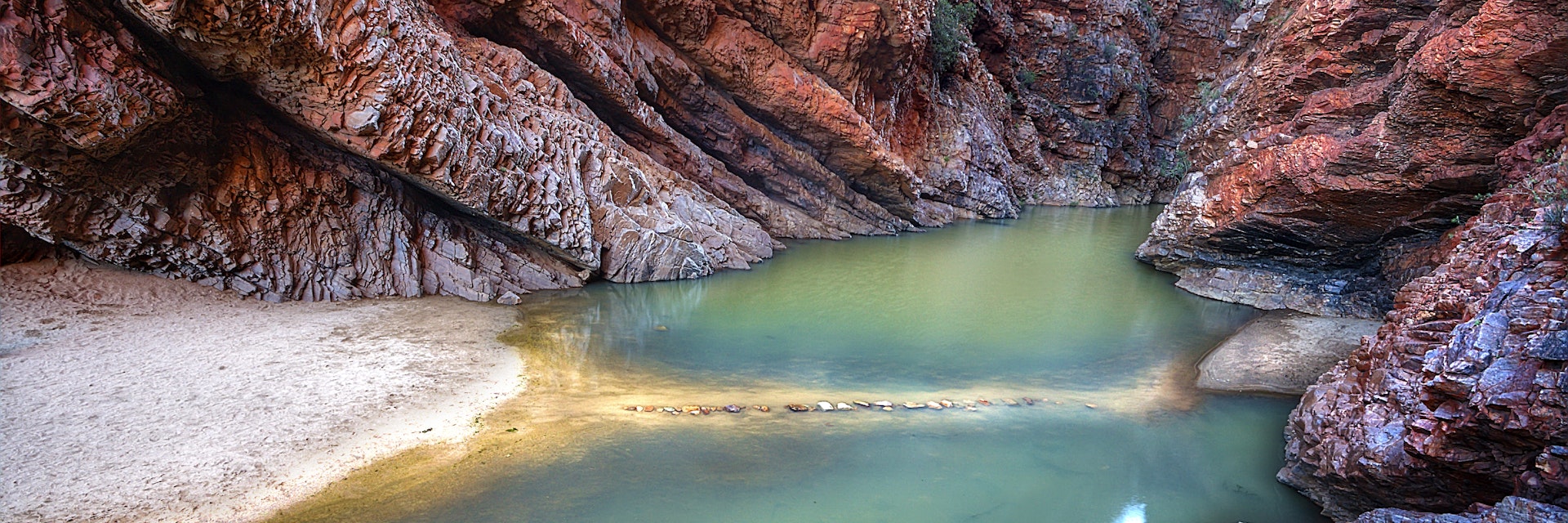
Northern Territory
From Kakadu to Uluru, from Darwin to the outback, the Northern Territory has stirring landscapes, abundant wildlife and a soulful Indigenous story.
Attractions
Must-see attractions.
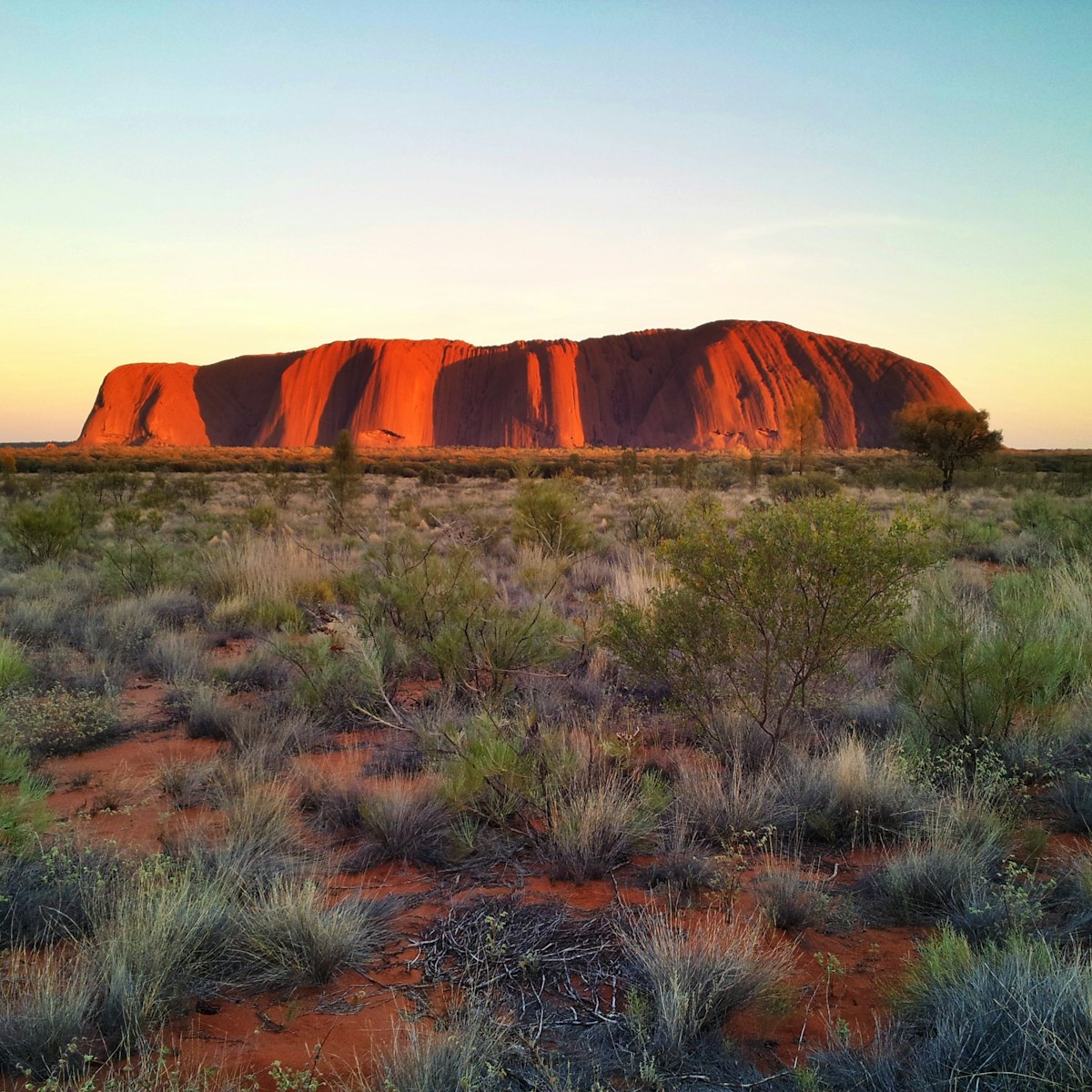
Uluru-Kata Tjuta National Park
Nothing can really prepare you for the immensity, grandeur, changing colour and stillness of 'the Rock'. It really is a sight that will sear itself on to…

Kakadu National Park
Kakadu is one of the world's great national parks, combining an astonishing array of attractions. Its wetlands and escarpments shelter abundant wildlife,…

It takes a lot more than the busloads of visitors to disturb Ubirr's inherent majesty and grace. Layers of rock-art paintings, in various styles and from…

Nitmiluk National Park
Outback Northern Territory
Spectacular Katherine Gorge forms the backbone of this 2920-sq-km park, about 30km from Katherine. A series of 13 deep sandstone gorges have been carved…
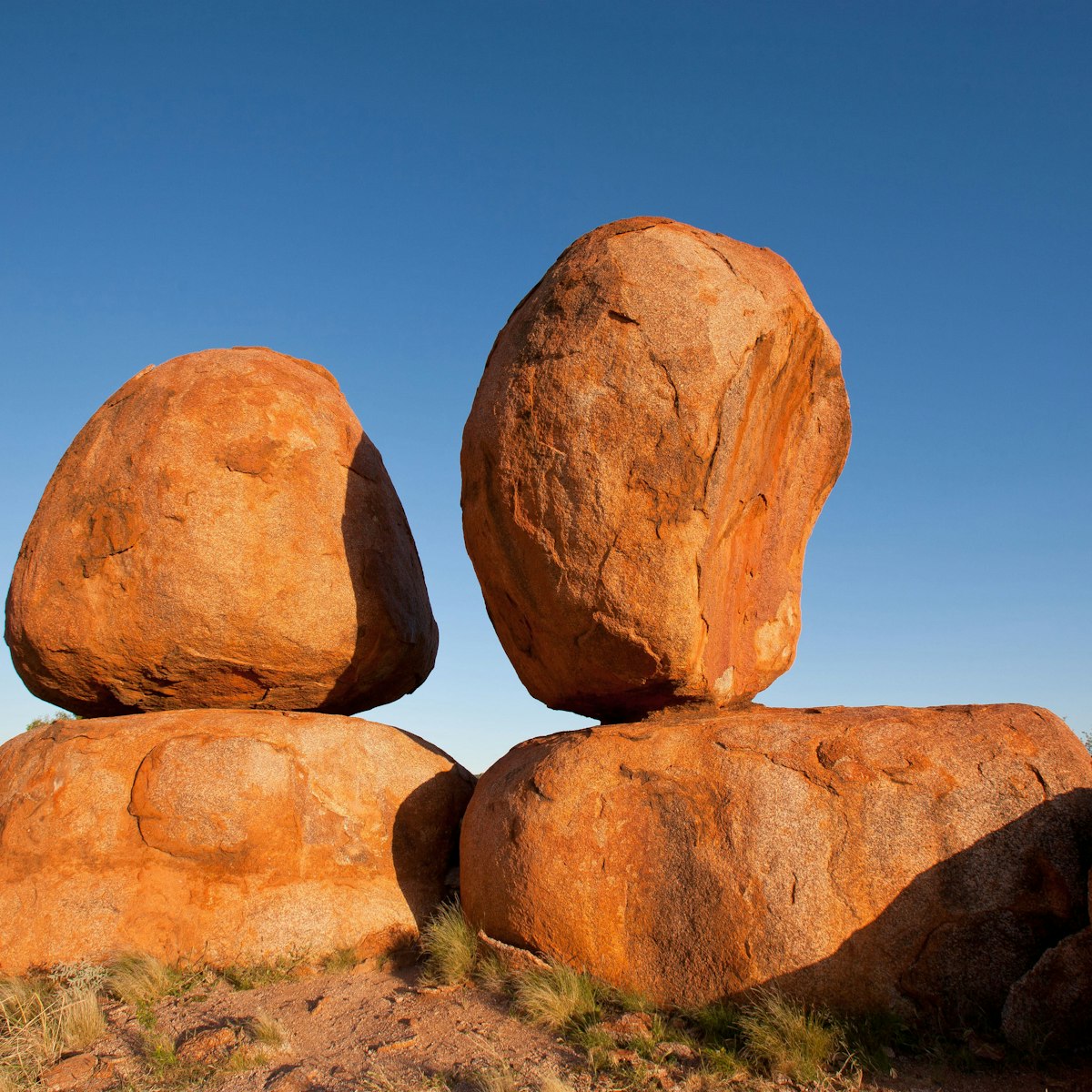
Devil's Marbles
The gigantic granite boulders piled just east of the Stuart Hwy, 105km south of Tennant Creek, are known as the Devil’s Marbles (Karlu Karlu in the local…

Garig Gunak Barlu National Park
Arnhem Land
The entire wilderness of remote Cobourg Peninsula, including the surrounding sea, forms the Garig Gunak Barlu National Park. It's a stunning, isolated…

Trephina Gorge Nature Park
If you only have time for a couple of stops in the East MacDonnell Ranges, make Trephina Gorge Nature Park (75km from Alice) one of them. The play between…
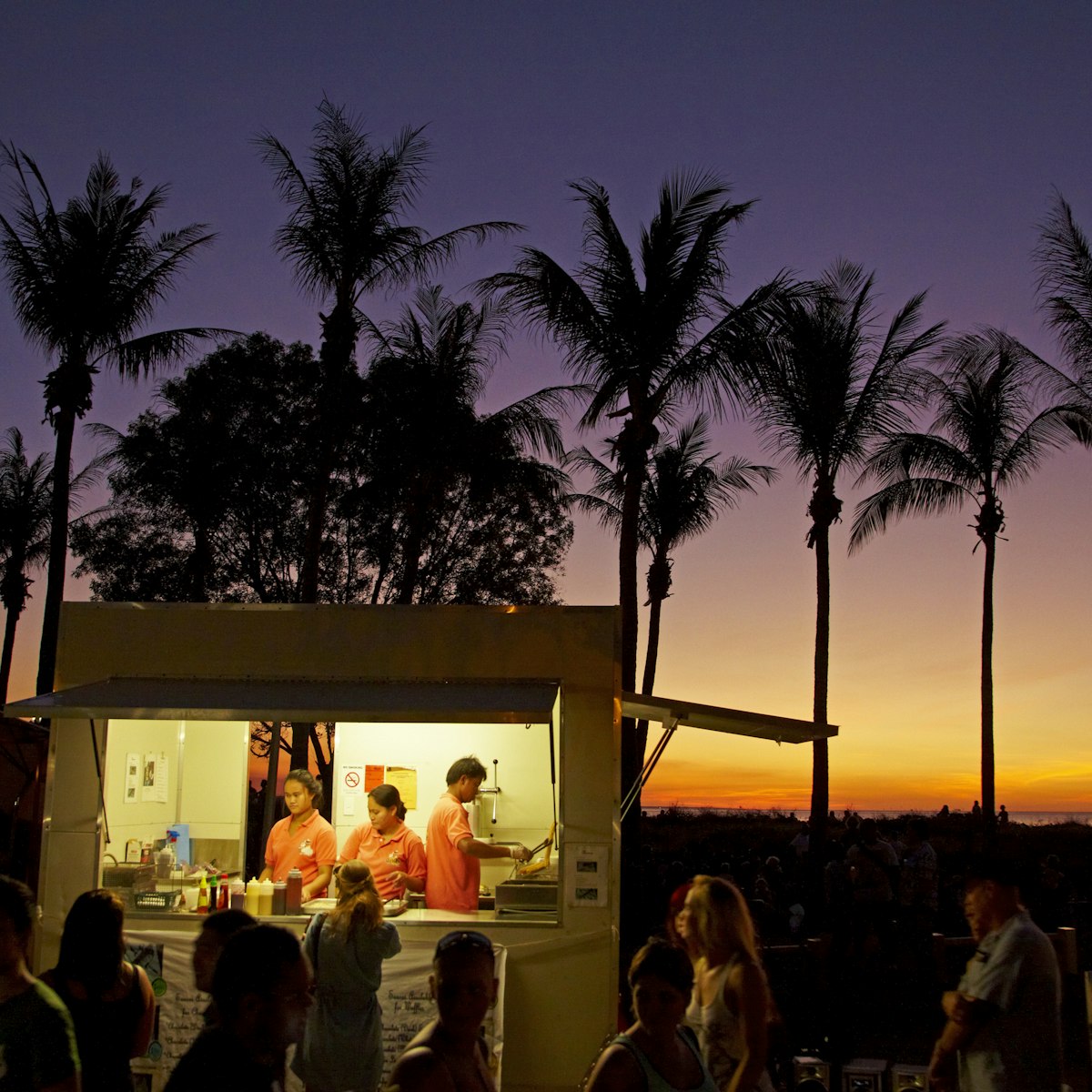
Mindil Beach Sunset Market
Food is the main attraction here − from Thai, Sri Lankan, Indian, Chinese and Malaysian to Brazilian, Greek, Portuguese and more − all at around $6 to $12…
Latest stories from Northern Territory
Filter by interest:
- All Interests
- Adventure Travel
- Art & Culture
- Beaches, Coasts & Islands
- Food & Drink
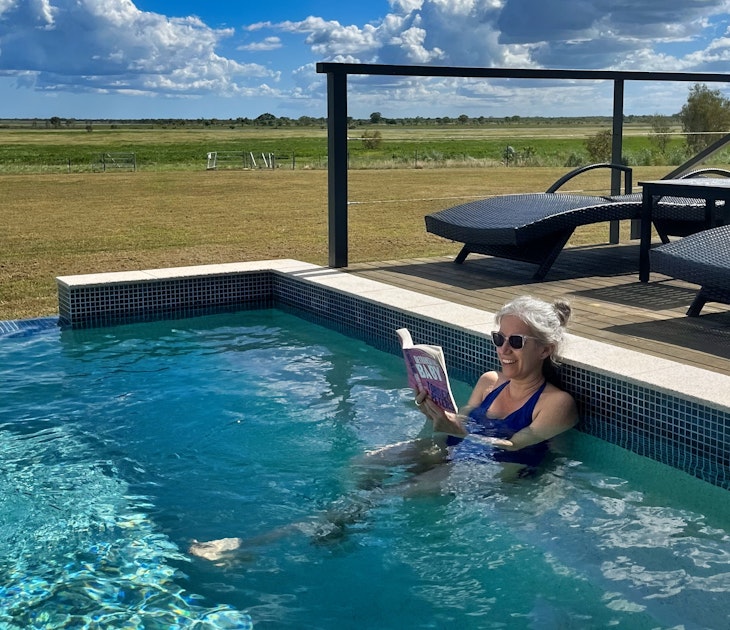
Wildlife & Nature
Aug 1, 2023 • 3 min read
I am an adopted Australian and am totally in love with the country, its varied landscapes, and cultures.
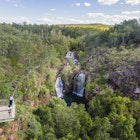
May 21, 2021 • 5 min read
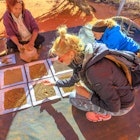
Aug 11, 2020 • 2 min read

Mar 6, 2020 • 1 min read

Jan 16, 2020 • 5 min read
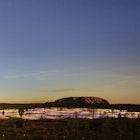
Aug 20, 2019 • 1 min read
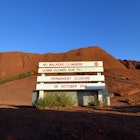
Aug 20, 2019 • 3 min read
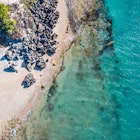
Jan 9, 2019 • 5 min read
Purchase our award-winning guidebooks
Get to the heart of Northern Territory with one of our in-depth, award-winning guidebooks, covering maps, itineraries, and expert guidance.
Northern Territory and beyond


The Ultimate Northern Territory Travel Guide
One of the largest remote regions in the world, the Northern Territory is the least inhabited area of Australia; however, it is also the most curious.
Showcasing unapologetic landscapes in their rawest forms, Australia’s Top End offers you a different side to this diverse country, and it is orange. The otherworldly landscape of the Northern Territory will teach you tactics for survival. The roads are longer, the terrain unapologetic – it’s uninhabitable, yet somehow people live here. This is the charm of the Northern Territory.
This Northern Territory travel guide will introduce you to the beauty of the Northern Territory in all its glory. Leaving Darwin behind, hitting the road here really means hitting the road; you might not see anything but rocks and forest for 1,000 kilometres. When you do find something, you encounter essential locations like Kakadu National Park or Alice Springs, the gateway to the Red Centre, that introduces you to arid adventures and Aboriginal culture in all its forms.
Deep in the Red Centre is the King’s Canyon, where Aboriginal elders will tell you themselves how important this land is to their people, and has been for over 20,000 years as you walk between the crevices in search of Aboriginal rock art. The King’s Canyon is a spectacular walking experience within Watarrka National Park that is essential for any self-drive trip in the Northern Territory .
We’ve saved the best for last – no trip in the Northern Territory is complete without an Uluru tour. Set in Uluru-Kata Tjuta National Park, this impressive monolith is sacred to native Australians. Around half a billion years old, Uluru is the fabric of Australia, known for its red hue that showcases its sanctity in all its splendour around sunrise and sunset.
This is only the beginning of what the Northern Territory has to offer, let’s delve a little deeper in this Northern Territory travel guide;
Post Contents
When to Go to the Northern Territory
King’s canyon, kakadu national park, alice springs, arnhem land, self drive in the northern territory, hiring a private driver in northern territory, cost of a trip in the northern territory, australia, finke desert race, barunga festival, beer can regatta, ready to design your trip to the northern territories.
The Territory (as it is affectionately known to Aussies) is a year-round destination. Depending on what you like, there is no real answer to when it is best to go to the Northern Territories!
With a tropical climate in the Top End, the north of the north is always hot. For example, the capital, Darwin, never goes below 32 degrees Celsius! Here, you’ll find two seasons, dry and wet. While the wet season fills waterfalls and creates the perfect environment for wildlife to thrive, the dry season is the best time to visit, as temperatures and humidity levels are more accommodating to activities.
The Red Centre has a semi-arid climate that takes you on a cycle of the four seasons; summer, winter, spring and autumn – just remember they are the opposite from the west! In summer (December to February), you can expect high temperatures of 35 degrees Celsius, while in winter (June to August), you can expect frost at night.
Some may prefer to visit in winter, as it will be easier to walk around during the day, however, others may prefer the warmer temperatures.
Don’t Miss Our Exclusive Offers! Subscribe Today!
For the ultimate travel inspiration, local insight straight from our expert Local Designers and exclusive offers you won’t find anywhere else from Designer Journeys, sign up today! Don’t miss out.

Best Places to Visit on a Northern Territory Tour
Uluru is one of the largest monoliths in the world and is over 550 million years old. It is set in Uluru-Kata Tjuta National Park and is protected and still worshipped by its traditional owners.
The orange and red-hued jewel of the Northern Territory, you cannot visit this desolate state without visiting Uluru. Coined as Ayers Rock by the first non-native Australian to set eyes on the great monolith, Uluru is a symbol of Australia and considered sacred to the Anangu people.
An Uluru rock tour typically starts in Alice Springs like in this Red Centre tour where you’ll learn the ways of the Outback and how everything, including humans, survive in this arid landscape. While staying in Ayers Rock Resort town, you’ll catch the sunrise and sunset; orange turns to red and the shadows of the monolith dance.
Often mistaken for Uluru, a visit to King’s Canyon is an adventure not to be missed. Don your most comfortable walking shoes for this one! King’s Canyon is a 300-metre red rock that, similar to Uluru, has been carved by time in the most curious ways.
You can do a tour of Ayers Rock and the Kings Canyon where you’ll have a day to explore the towering red walls, deep crevices and steep gorges that have been formed over millions of years. The King’s Canyon Rim Walk can prove to be challenging yet rewarding, with 360-degree views of the Red Centre.
From national parks and the Aboriginal culture to wining and dining, festivals and markets; the city of Darwin is alive and thriving, just moments from the spectacular beaches of the Northern Territory.
Multiculturalism is the vibrating soul of Darwin, where its original inhabitants, the Larrakia people are at the forefront of the community. With people from over 70 different ethnic backgrounds living in the city, Darwin’s scene is eclectic, laid-back and immersive.
Most evident of Darwins’s diversity is the food scene that has rocketed in recent years, known for its authenticity with that little Darwinian twist as you’ll find in this Darwin tour . To find out what it’s all about, hit up a market or a festival, neither are ever too far away.
The largest national park in Australia, Kakadu is known as the timeless rainforest; it’s one of the oldest in the world. With an impressively biodiverse landscape of 20,000 kilometres, the national park presents spectacular hiking opportunities. Kakadu is home to ancient peaks, cascading waterfalls, the oldest Aboriginal rock art in the world and endless wildlife opportunities.
While it’s impossible to cover all there is to see in Kakadu National Park, it is best explored aboard a cruise through the wetlands as an introduction to its biodiversity. The centre of all wildlife activity, cruising along the river brings the action straight to you. This tour from Darwin to Kakadu brings you face to face with the abundant nature that is Kakadu!
The gateway to your Uluru trip and capital of the Red Centre, Alice Springs is the essential Outback experience in the Northern Territory.
Characteristic of the Outback, Alice Springs kicks up the vibrant red dust of the Aussie desert and paints the picture for the adventures found here with Uluru day tours being among the top things to do.
Alice Springs is particularly well known for representing Aboriginal artists, with a range of galleries showing works from local artists and hosting regular talks to learn more about this ancient and well preserved traditional art style.
A region of the Northern Territory (NT) that has it all, Arnhem Land stretches from vast rainforests to remote islands to give you all that the tropical side of NT has to offer.
Think boutique camping retreats with hiking adventures galore, island escape with birding experiences like nowhere else in the world, and wining and dining that ranges from some of the freshest seafood in Australia’s north to bush tucker traditions.
Tours like this 6-day culture and nature in the Top End trip will show you the abundance of nature in NT’s Arnhem Land.
How to Get Around the Northern Territory
With so many kilometres to cover and such an unpredictable landscape, it would be rude not to make your way through the Northern Territory in your own car.
It is possible to rent cars or purchase a second-hand one in all of the major towns and cities in the Northern Territory. While most of the roads are well-paved, when you get into the Red Centre, it is highly recommended that you hire a 4WD as there is a considerable amount of off-roading to do to reach the most interesting sites like in this Uluru tour .
If you wish to make your journey into even more of an adventure, it is possible to hire a campervan to sleep under the stars.
Screwing your face up at the idea of the above? You can hire someone to do the long drive for you on a private tour, like this 6-day Kakadu and Litchfield park tour .
Your driver and guide can take you in either a 4WD or a car to explore the Northern Territory, leaving you to sit back, relax and take in the scenery.
Should you only have a short period of time to explore the Northern Territory, you can fly to the major cities within the state. This is perfect if you would like to make the drive from Darwin to Alice Springs, but don’t have the time to drive back like in this tour out of Darwin .
Where to Stay in the Northern Territory
The accommodation options are as diverse as the land itself; our Northern Territory travel guide breaks it down to show you what is in store;
Darwin is home to a mix of resort-style accommodation, historic city hotels, apartments and big-name hotels. Catering to all budgets, Darwin has an eclectic vibe that you won’t be able to get enough of, no matter what suburb you decide to stay in, you’ll be within reaching distance of the bustling markets and amazing food this city is known for.
The gateway to Uluru, Alice Springs welcomes all kinds of travellers, whether you are on a once-in-a-lifetime luxury trip or looking for one last comfortable bed in a hostel before camping in the Outback, Alice Springs no doubt has something within your budget range.
One thing holds true, no matter what your accommodation choice, you’ll be welcomed with the wit and charm of Aussie Outback hospitality, there is nothing quite like it!
While it is not possible to stay in the national park, all accommodation options are found within Ayers Rock Resort, a small resort town with supermarkets, bars and restaurants. The accommodation options in Uluru are limited. There are a few mid-to-high range options, great for couples and families on a high-budget trip, and budget travellers will seek comfort in the campsite with space for tents and campervans.
There’s no end to the amazing experiences that come with accommodation in Arnhem Land.
While the options are spread out and sparse, what is impressive about Arnhem Land is that there is such a great variety of accommodation. From campgrounds to remote, intimate island resorts, what lies in between budget and luxury options is beautiful lodges that sit on the coast and deep in national parks.
With so many options to suit every traveller, Arnhem Land is accessible to couples, families and solo travellers alike.
Where to Eat in the Northern Territory
No Northern Territory travel guide is complete without a breakdown of the culinary experiences that you can find!
An underdog of the Aussie food world, Darwin is packed with tasty secrets that are starting to be outed – and fast! Small cafes, restaurants and food trucks are creeping up in laneways, alleys and at the ever-popular markets that pop up around the city.
With heavy lashings of internationalism, some of the must-try dishes include tamales, laksa, and fresh oysters.
Skirting the coastline, while in Arnhem Land, you cannot leave without eating seafood – and lots of it! With restaurants ranging from the local pubs to exclusive boat clubs, Arnhem Land dining experiences have one thing in common – freshness.
With a thriving Aboriginal community, Arnhem will introduce you to traditional bush tucker meals properly. With a variety of bush food to try, you’ll learn about the health benefits of eating the native fruits of Australia.
Despite its remote location, Alice Springs has international cuisine at every turn.
Whether you are looking for Indian and Thai food or are craving a flavoursome pasta, you’ll find it in the Red Centre. Alice Springs is also home to an impressive variety of bistro restaurants, including one set in beautiful botanic gardens.
There are a few things to factor in when planning a trip to the Northern Territory:
- Length of your trip
- Season or month you choose to travel in
- Accommodation class and type
- Number of activities or tours you take part in
- Chosen method of transportation
And you haven’t even booked the flights yet! When looking over the above factors, making sure your trip to the Northern Territory is within budget can become tricky. However, there is a way to make budgeting and planning your trip easy.
At Designer Journeys, we have a host of Local Designers in Australia ready and waiting to make your dream trip to the Northern Territory a reality.
After specifying your budget, trip duration, activity preferences and how you like to travel, you will connect with an in-destination Local Designer who will plan your trip based on your requirements.
Alternatively, you can design your own Northern Australia trip , whether you are looking for the best Uluru tours or a once-in-a-lifetime Outback holiday package with the family, with Designer Journeys you can relax in the knowledge that everything has been taken care of by our Local Designers.
By specifying your budget, your Australia tour can be tailor-made to what is achievable for you.
Everyone has different interests, priorities and preferences when it comes to planning a trip. With Designer Journeys, you can browse our range of fully-customisable Australia tours and tailor any one of them to your preferences with an expert Local Designer. Or better yet, create your very own from scratch by opting to ‘Design Your Own Trip’ to see what is possible in the Northern Territories and beyond!
Unmissable Events in the Northern Territory
Think Mad Max in Australia, and you get the picture
Taking place in June, Tatts Finke Desert Race is a two-day dirt race for motorbikes, buggies and quads. The race has become one of the greatest challenges on the off-roading calendar with people coming from across the world to get the ‘King of the Desert’ trophy.
Celebrating remote Aboriginal culture, Barunga Festival welcomes indigenous and non-indigenous people to camp together and enjoy music, sports and cultural activities.
The weekend-long festival is run by traditional owners of the land who educate people about the Katherine region and celebrate it in all its glory.
Somewhat of a legacy in Darwin, this family-fun event started in 1974, Beer Can Regatta has become one of the biggest events in the city!
Families and friends are invited to get creative to make a boat from beer cans, milk cartons, bottles – whatever you think will float! The competition is judged based on design, structural strength and floating ability.
Armed with this Northern Territory travel guide, you can work with one of our Local Designers based in Australia to hit the road and get deep into the Red Centre and all it has to offer. To begin making plans and make those dusty dreams a reality, check out our host of Northern Territory tours and connect with one of our Local Designers today!

Eilidh Wilson
Hello! I’m Eilidh, a Scottish-born writer, artist and part-time explorer who has been based in Vietnam since 2016. Very much the outdoor type, in between words, you’ll catch me seeking out adventures to be had and stories to be told. I’m a sucker for a sunset, adore the reward of finding waterfalls and a self-proclaimed beach bum. Back at the desk, I love sharing my experience and love of travel and inspiring others to reach further out into the world - especially if it’s related to food!
Plan Your Western Australia Tour With This Travel Guide
Plan your tour to victoria, australia with this guide, you may also like, to the sahara morocco desert tours from....
Trips you may like 6-Day Cook & Dine With Locals in Morocco This exceptional Morocco food tour allows you to feast on delights both for your eyes and your stomach! Through a…
10 Destinations in Australia That Will Make...
Trips you may like 5-Day Lake Eyre in Flood & Wilpena Adventure Unleash your adventurous spirit on a self-drive journey from Adelaide to Wilpena Pound, where an extraordinary Outback escapade awaits. Soar…
The Complete Guide to Cambodia Diving
Trips you may like 14-Day North Circuit and Coast Skirt around the north of Cambodia, visiting the most important towns while still seeing a little of rural life and, not forgetting, the…
The Ultimate Vietnam Travel Guide
Trips you may like 10-Day Yoga and Culture in Vietnam and Cambodia Treat yourself to a much-needed break from your daily grind with a rejuvenating yoga and culture holiday combination. Pamper yourself…
Italy Food Tours: The Top Regions to...
The lingering smell of fresh oregano, bubbling tomato sauce, layer upon layer of finely rolled pasta; Italian food is one of the most-loved cuisines in the world. And where better to be…
A Guide to Stargazing in Japan
Have you ever found yourself lost in the beauty of a clear, star-filled night sky? If your answer is yes, then you’ve probably experienced the magic of stargazing. Now, imagine combining that…
Hit the Road: 5 Incredible New Zealand...
Trips you may like 16-Day Scenic Train and Glaciers Tour New Zealand is a country known for its superb scenery taking the form of glaciers, lakes, mountains and stunning coastal journeys. One…
High Atlas Mountains Trekking Guide: Hiking in...
There are very few places in the world where you can sandboard, snowboard and hike just a few hours from each other: the Atlas Mountains in Morocco is one of those destinations. …
The Only Bali Surfing Guide You Need
Dreaming of an endless emerald cocoon? Doing a 360 spin in an epic A-frame? We know; it’s our happy place, too. Prepare for your fantasies to become reality…. Surfing in Bali has…
Your Italy Travel Guide: Rome to Venice...
Trips you may like 5-Day Rome, Florence & Venice Getaway Embark on a getaway to three of Italy’s most-loved cities! Your Italy itinerary is 5 days from Rome to Venice, beginning in…

Unlock your next trip
- How it Works
- Become a Local Designer
Best Time to Visit
Weather & Climate
Top Destinations in the Northern Territory
Where to Stay
Top Things to Do in the Northern Territory
Things to Do in Darwin
Things to Do in Alice Springs
Things to Do at Uluru
Guide Kakadu National Park
Best Parks to Visit
Must-Try Food
The Complete Guide to Australia's Northern Territo...
Your Trip to Australia's Northern Territory
:max_bytes(150000):strip_icc():format(webp)/IMG_2751-c8e99122470c4e26861511881ad3a6cd.jpg)
The Northern Territory is home to Australia's most recognizable landmark: the 1,142 foot-tall red rock Uluru. But for visitors willing to travel even further afield, this vast and sparsely populated region offers plenty to see and do.
At Kakadu National Park and Litchfield National Park , hiking trails, waterfalls, and unparalleled views await. The town of Alice Springs is the heart of Central Australia, while the capital of Darwin offers laid-back living in the Tropics.
Many of the Territory's top attractions are on the traditional lands of Aboriginal and Torres Strait Islander peoples, providing the chance to learn more about the world's oldest living culture. Read on for our guide to everything you need to know before venturing into the Outback.
Planning Your Trip
Best Time to Visit : If you want to visit both the Top End and the Red Centre, the best time to visit the Northern Territory is from May to October to avoid the heat, humidity, and road closures that come with the wet season.
Language: The most common language spoken in Northern Territory is English, followed by Indigenous languages Kriol and Djambarrpuyngu, and then Greek.
Currency: The Australian dollar (AUD) is the national currency and is used everywhere. The exchange rate is usually between 60 and 75 cents.
Getting Around: Public transport in the Northern Territory is limited due to the enormous distances and small population. There are airports in Darwin and Alice Springs and the Ghan luxury train and Greyhound buses between the two cities. You'll need to rent a car or book a tour to visit national parks like Uluru and Kakadu.
Travel Tip: Outside of major towns, cell service is patchy. For longer trips, it may be worth hiring a satellite phone in Darwin and Alice Springs alongside your car or camper.
Things to Do
The Territory is full of outdoor activities, from hiking through otherworldly landscapes and swimming in turquoise-blue pools to getting up close and personal with crocodiles and wallabies. This region rewards slow travel, so take your time getting to know its unique cultures and landscapes.
- Uluru : This ancient monolith on the lands of the Anangu people is one of Australia's unmissable views, especially at sunset and sunrise. While visiting Central Australia, don't miss the undulating rock formations of Kata Tjuta and the impressive vistas of Kings Canyon .
- Kakadu : Australia's largest national park is on the traditional lands of the Bininj/Mungguy Aboriginal people. Spend at least three days here, cruising Yellow Water Billabong, marveling at ancient rock art, and visiting remote waterfalls.
- Alice Springs : This big country town is known for the incredible hiking in the nearby MacDonnell Ranges and as a hub for Aboriginal art, which can be seen at the Araluen Cultural Precinct and many community arts centers.
Check out our full-length articles on things to do and destinations in the Northern Territory for more ideas.
Where to Eat and Drink
Darwin, the largest city in the Territory, has a population of 150,000, with a small but thriving dining scene. Dishes here feature lots of seafood, as well as strong Asian and Greek influences.
Popular venues in Darwin include Little Miss Korea , Smith St Social , Yots Greek Taverna , Pee Wee's at the Point , and Chow . A visit to the Mindl Beach Markets on Thursday and Sunday nights is an ideal activity to sample Darwin's most emblematic foods.
In Alice Springs, you'll find a burgeoning cafe culture, alongside a couple of more upscale offerings like Epilogue Lounge , Hanuman , and Tali . For ultimate luxury, we recommend Tali Wiru at Ayers Rock Resort.
In between these two cities, the dining and nightlife often focus on local pubs, although Maiden's Lane and Pop Rocket Cafe in Katherine are well worth visiting.
Learn more in our full article on foods to try in the Northern Territory.
The NT measures more than 1,000 miles from north to south , so we recommend planning your itinerary carefully. In the popular tourist destinations of Alice Springs, Darwin, Yulara, and Jabiru, there are plenty of hotels and resorts to choose from.
Accommodation can be limited in between these hubs, especially around some of the more remote national parks. There are some isolated gems, like Cooinda Lodge , Mataranka , and Bremer Island , but otherwise, camping or a guided tour may be your best bet.
Read our complete article about where to stay in the Northern Territory .
Getting There
Most international travelers fly into Alice Springs or Darwin Airport, although you may need to stop in Sydney, Brisbane, or Southeast Asia first. Flights are also available between regional centers like Tennant Creek, Groote Eylandt, and Nhulunbuy in East Arnhem Land.
The Ghan rail journey from Adelaide takes around 21 hours to Alice Springs and another 33 to Darwin. Car hire is available in Darwin, Uluru, and Alice Springs and Greyhound buses run between Alice Springs and Darwin, across to Broome in Western Australia and down to Adelaide in South Australia.
Culture and Customs
Almost a quarter of the population of the Northern Territory is Aboriginal or Torres Strait Islander, including the Arrernte of Central Australia and the Yolngu of Arnhem Land. There are over 40 different indigenous language groups in the NT, all of whom have a strong spiritual connection to the land.
Specific customs vary throughout the Territory, but you can show respect by not photographing Aboriginal people without permission, listening carefully when cultural information is shared with you, and not entering restricted areas.
You will need to apply for a permit from the relevant land council to enter Aboriginal land in certain parts of the Northern Territory. The four land councils are the Northern Land Council , Central Land Council , Tiwi Land Council , and Anindilyakawa Land Council . Some permits can take up to 10 days, so make sure to apply in advance of your trip.
Tipping in Australia is usually only expected at fine dining restaurants (around 10 percent). In the Northern Territory, feel free to tip your guide or taxi driver, but it is not expected.
Money Saving Tips
Due to the isolation and lack of public transport, a visit to the Northern Territory can be more expensive than other parts of Australia. Tours are often the best way to see more remote parts of the region and learn about Aboriginal culture and history. However, there are a couple of ways to make your trip a little more budget-friendly:
- Hiring a car and camping is one method of significantly reducing your costs, especially if traveling in a group. Most parks and reserves in the Territory have camping sites available for a small fee.
- Refuel in bigger towns whenever possible, as the price of gas can be much higher in remote areas. The same policy applies to groceries.
- In Darwin, the Museum and Art Gallery of the Northern Territory is open daily and free to enter, as is Megafauna Central and the Olive Pink Botanic Garden in Alice Springs.
Australian Bureau of Statistics. " 2016 Census Reveals the Changing Face of the Northern Territory ." 27 June 2017.
Tourism Australia . "Useful Tips."
Britannica. " Northern Territory ." January 10 2020
The Top 11 Destinations in Australia's Northern Territory
The 14 Best Parks to Visit in Australia's Northern Territory
Where to Stay in the Northern Territory
Weather in the Northern Territory: Climate, Seasons, and Monthly Temperature
15 Top Things to Do in the Northern Territory
The Top 12 Things to Do in and Around Alice Springs, Australia
The Best Time to Visit the Northern Territory
8 Foods to Try in the Northern Territory
The Top 10 Indigenous Travel Experiences in Australia
Your Trip to Brisbane: The Complete Guide
Top 8 Australian Outback Destinations
Where to Go in 2021: 10 Future Trips You Can Start Planning Now
Kakadu National Park: The Complete Guide
Your Trip to Alaska: The Complete Guide
The Best Time to Visit Australia
Cairns & the Great Barrier Reef: Planning Your Trip

An Unforgettable Northern Territory Road Trip: See the Best of the Top End!
Looking for the perfect Northern Territory road trip itinerary? This guide to the Top End has you covered.
Planning a journey through the Northern Territory’s Top End might sound a bit intimidating at first. But it’s one of the best – and easiest – Australian road trips to plan.
From the stunning wildlife and culture of Kakadu National Park to the refreshing swimming holes of Katherine and Litchfield, I’ve navigated these rugged roads myself and have come up with what I think is the perfect itinerary to see this part of Australia in a short amount of time.
This trip hits Australia’s most interesting capital city plus three amazing national parks.
As part of my recent half-lap of Australia, I took this exact road trip – although I have adapted it for those who may not have as much time as we did. Here’s everything you need to know about road tripping Australia’s Top End, including the useful travel tips I gathered along the way.
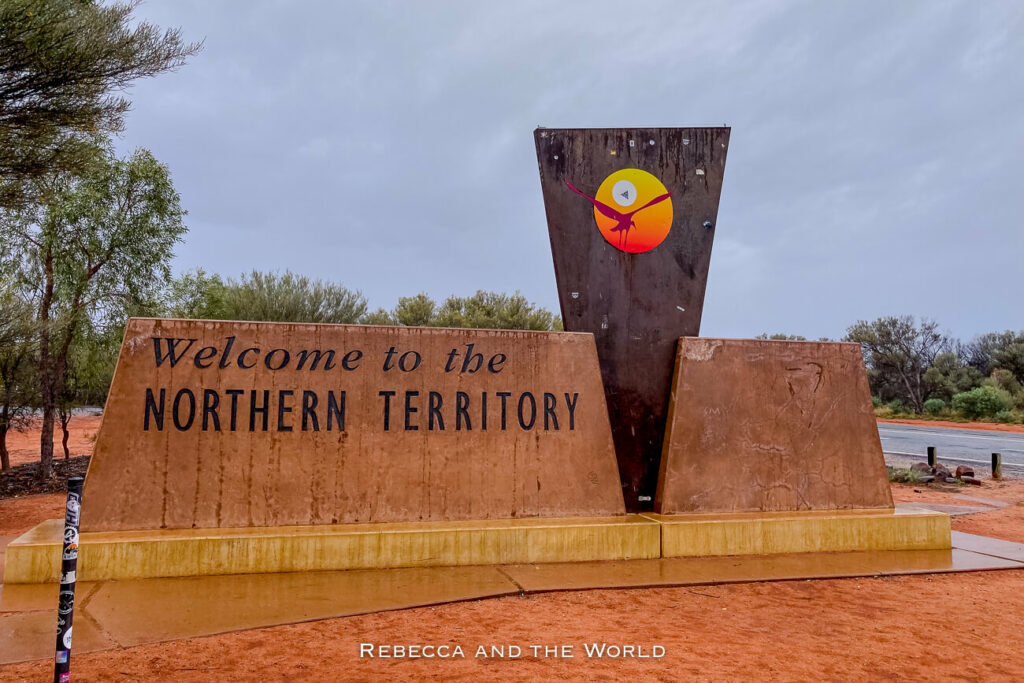
This blog post may contain affiliate links, meaning if you book or buy something through one of these links, I may earn a small commission (at no extra cost to you).
What's in this article (Click to view)
How many days for a Northern Territory road trip?
You can do this Top End road trip in a week but I recommend at least 10 days to really enjoy the experience.
Northern Territory road trip itinerary
One of the best road trips in Australia, here’s what this itinerary looks like over 10 days:
Days 1-2: Darwin
- Days 3-5: Kakadu National Park
- Days 6-7: Katherine
- Days 8-9: Litchfield National Park
Day 10: Back to Darwin
Northern territory map.
How to do this NT trip
Should you take a tour of the Top End or self-drive? Obviously I think driving the route yourself is the best way. You’ll be able to stop where you want and plan your schedule around the time you have available.
I know it can seem daunting to road trip the NT, but it’s really easy to do.
Rent a car in Darwin , if you don’t have your own wheels. You don’t need a 4WD – a 2WD is fine as all the main roads are sealed. However, if you want to get off the beaten path in some of the national parks, a 4WD will allow that.
I recommend renting a campervan or motorhome so you have your accommodation on wheels! This is the most fun way to see this part of the NT. Motorhome Republic has a huge range of campers as well as cars with rooftop tents.
For accommodation along the way, you can book hotels or cabins or campsites. I’ve suggested accommodation options for all types of travel for each of the stops outlined.
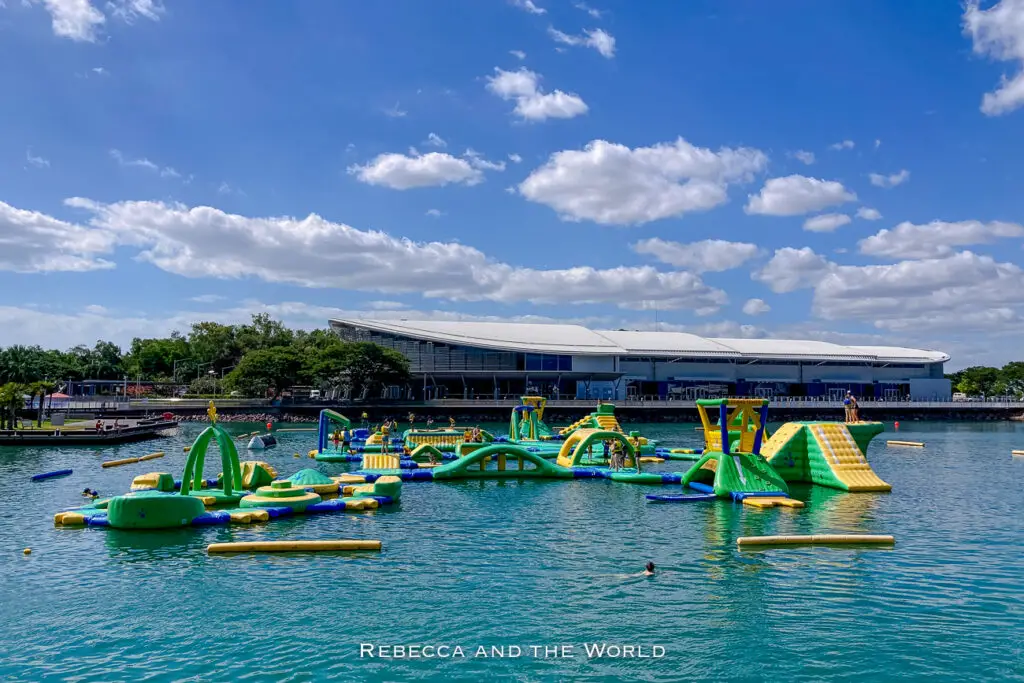
Darwin is one of the most interesting capital cities in Australia. It’s quite unlike anywhere else in Australia and worth a few days of your time.
Arrive in Darwin and pick up your rental car or campervan .
I have a full guide to the best things to do in Darwin , and a must-do is the city’s famous markets. If you can, time your arrival in Darwin with one of them.
The Mindil Beach Market is the most popular Darwin market. Held Thursday and Sunday evenings during the dry season, the market has everything from food, clothing, jewellery, art and more. The food here is a mix of Asian cuisines – Darwin is closer to Bali than Sydney – as well as deep-fried crocodile and delicious desserts. Make sure you head over to the beach to take in the stunning sunset.
The other markets I recommend are the Parap Market (Saturday) for even more amazing food, and the Rapid Creek Market (Saturday and Sunday), which is where many Darwin locals come to buy their fresh produce.
Take a stroll through the Darwin waterfront area, where you can find shops, restaurants and bars. Cool off in the Wave Lagoon , a swimming spot that’s safe from the crocs and stingers.
If you’re feeling a bit more adventurous, climb into the Cage of Death at Crocosaurus Cove to get up close and personal with crocodiles.
I highly recommend a visit to the Museum and Art Gallery of the Northern Territory to learn about the region’s history and culture, and take a look at the body of Sweetheart, a 5-metre-long crocodile. Bonus: it’s free.
Sunsets in Darwin are absolutely stunning, so make sure to find a good spot to watch the sky light up in vibrant colours. I love the Nightcliff Beach area, where you can finish sunset with a bite from one of the food trucks. Or splurge on a sunset cruise in Darwin Harbour .
Before you continue on this Northern Territory road trip, stock up on food and water as your next stop is Kakadu National Park. You’ll also want to buy your drinks in Darwin, as you can’t buy takeaway alcohol in Kakadu.
Where to stay in Darwin
The DoubleTree by Hilton Hotel Esplanade has harbour views and an enormous pool. It’s only a short drive to the Mindil Beach Sunset Market. Check rates and availability on Expedia and Booking.com
Also in the Waterfront precinct, the Vibe Hotel Darwin Waterfront has modern rooms, many with water views. Check rates and availability on Expedia and Booking.com
For caravanners and campers, the Discovery Parks Darwin is the closest caravan park to the city centre. It has two pools and caravan sites and cabins. This is where we stayed and it was a great spot.
The Darwin FreeSpirit Resort is a bit further out from the city but gets a big thumbs-up for its resort-style pool and more modern cabins.
Days 3-5: Darwin to Kakadu
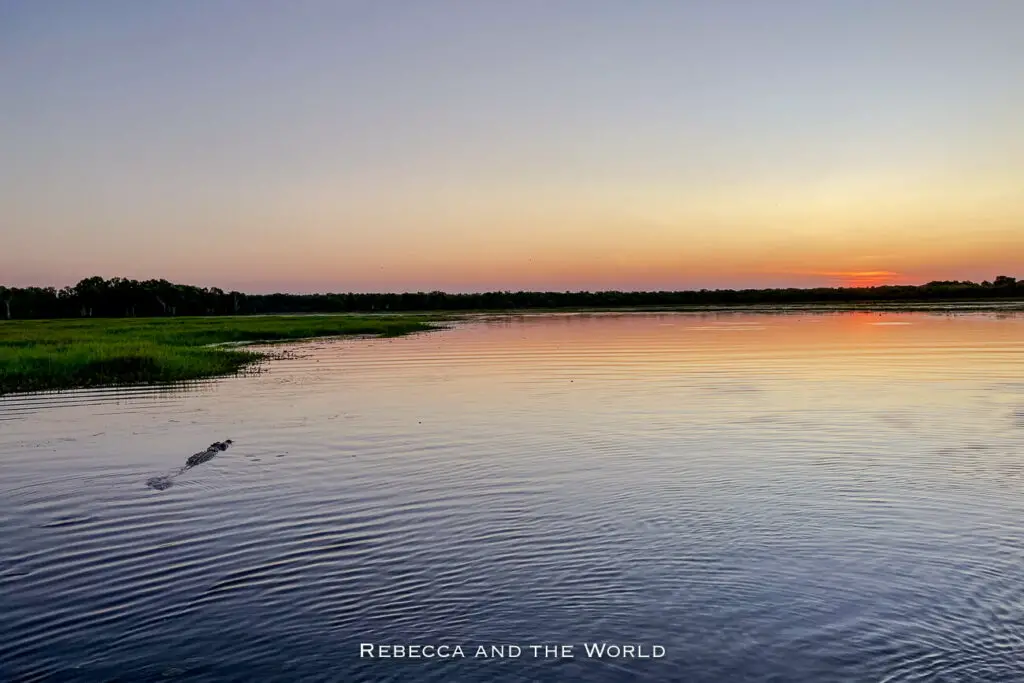
Head south from Darwin to Kakadu National Park, Australia’s second-largest national park. It’s an easy 151km drive (1 hour and 45 mins) on the sealed Arnhem Highway.
Kakadu National Park is usually top of many Australia bucket list experiences , with cultural sites, wildlife, flora, fauna and scenery unlike anywhere else in Australia – or even on Earth.
This park is HUGE – a third of the size of Tasmania! – so you need at least 3 days to see it properly, although you could easily spend a week here.
There are many things to do in Kakadu National Park that it can be overwhelming, so here’s how I recommend spending a few days.
You’ll need a Kakadu National Park Pass to enter the park. You can buy it online or from the visitor centre. A 7-day pass costs $40 for adults and $20 for kids, although they are cheaper in the wet season. Note that your NT Parks Pass won’t get you access to Kakadu, so you’ll need to buy both for this Top End road trip.
Kakadu day 1
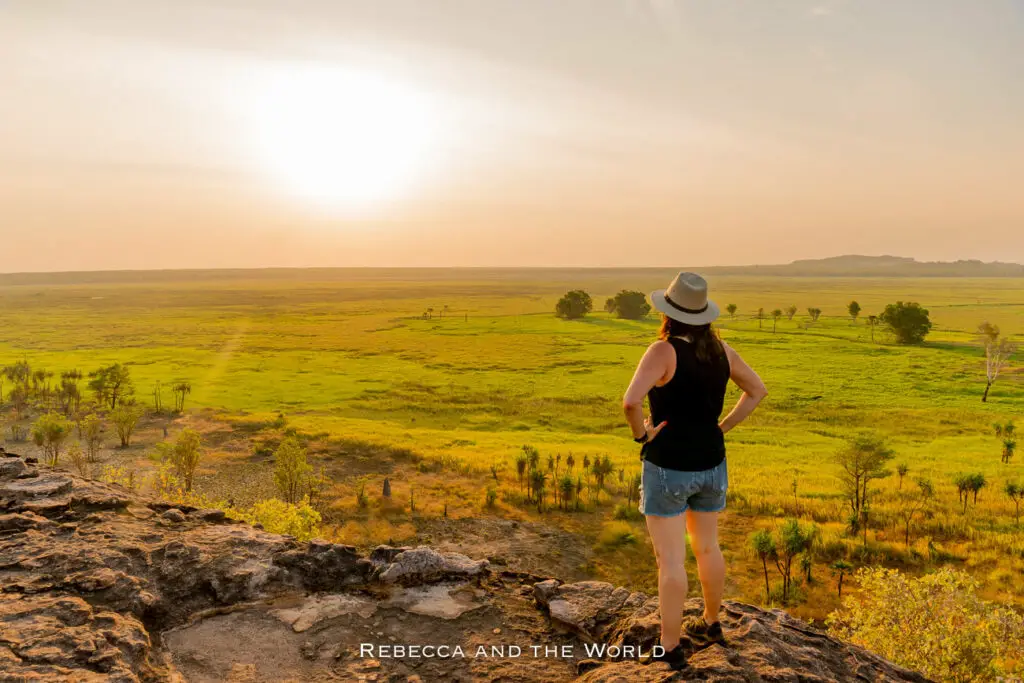
When you arrive in Kakadu, stop by the Bowali Visitor Centre to pick up a Kakadu Visitor Guide and chat with the rangers. They’ll be able to tell you if any parts of the park are closed or other up-to-date info.
If you haven’t bought your Kakadu National Park Pass online already, you can pick it up here.
Then, head to Cahills Crossing for a chance to spot crocodiles. This crossing is also a great place to fish – although keep an eye on the crocs who won’t mind stealing your catch!
In the evening, catch the sunset at Ubirr . At the top of this rock formation, from the Nadab Lookout, you’ll find incredible views stretching out over the vast Kakadu floodplains all the way to Arnhem Land.
Before you get to the top of Ubirr, however, stop in to see the Aboriginal rock art sites along the trail. The oldest paintings here date back thousands of years.
Where to stay
If you’re not camping, book a room at the Mercure Kakadu Crocodile Hotel or Aurora Kakadu Lodge .
For campers and caravanners, book a site at Aurora Kakadu Lodge or Malabanjbanjdju or Burdulba campgrounds. While Merl campground is the closest to Ubirr, it’s known for having a LOT of mosquitos that won’t make for a pleasant stay.
Kakadu day 2
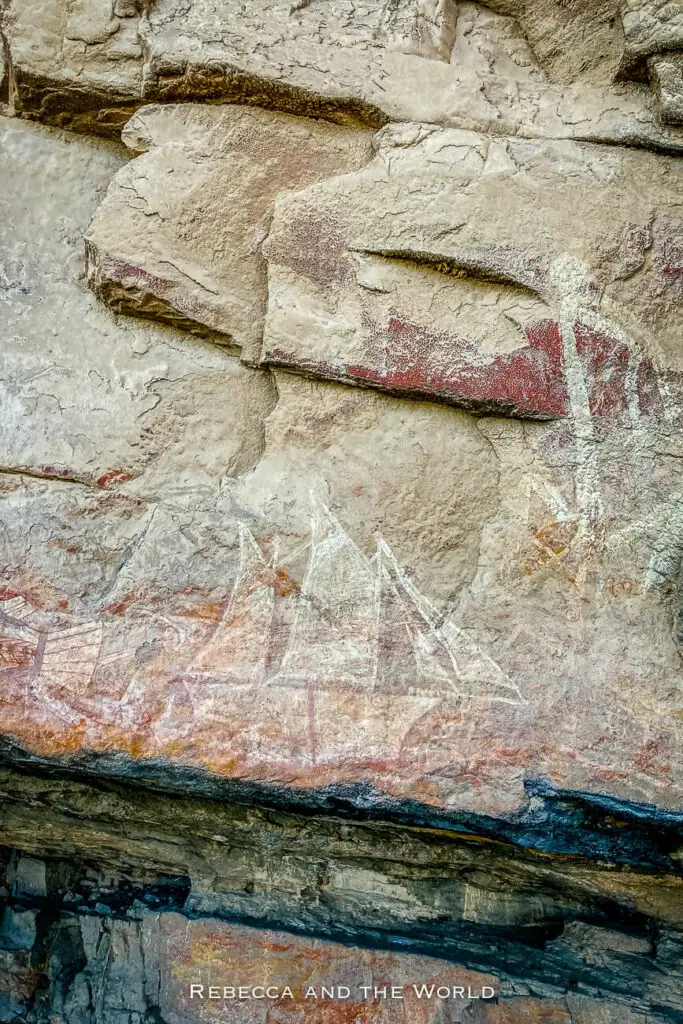
Visit Burrungkuy (Nourlangie) to see ancient rock art and learn about the Indigenous history of this region. Here, you’ll see paintings of people, kangaroos and fish, as well as Namarrkon, the famous Lightning Man. He’s depicted as a grasshopper-like creature who makes the powerful lightning and thunderstorms every summer.
The Nanguluwurr art gallery has even more incredible rock art, including the painting of a masted sailing ship – a representation of early contact between Aboriginal people and Europeans.
There are also handprints and the typical animals in x-ray style, all painted in ochre.
Head up the Nawurlandja Lookout for stunning views or take a stroll around Anbangbang Billabong . The billabong walk is 2.8km easy loop around the billabong, passing through paperbark forest and savanna woodlands.
Take a sunset cruise on Yellow Water Billabong to see the diverse birdlife – and spot plenty of salties!.
Cooinda Lodge has a range of accommodation options, from camping to hotel rooms.
Mardukal campground is a lovely spot with many shady sites, toilets and showers.
Kakadu day 3
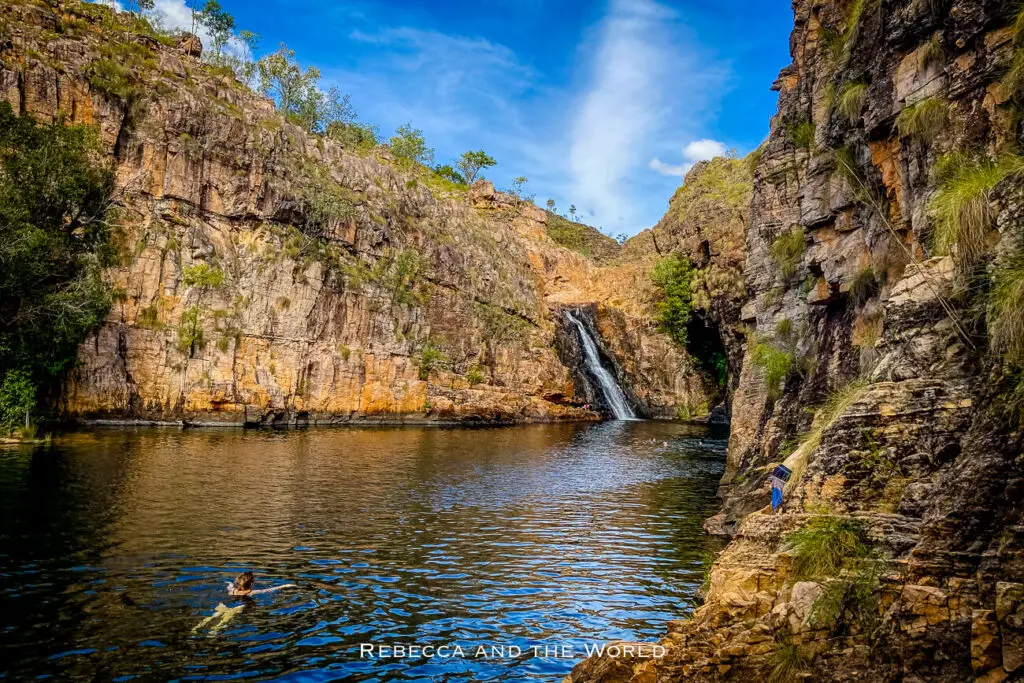
Start your morning with a visit to the Warradjan Cultural Centre to learn about the local Indigenous culture and history. There are informative exhibits on the moiety system, Creation stories, the six different seasons of Kakadu and the wildlife of Kakadu. There are also displays about the arrival of the Balanda (Europeans) and the impact of mining on the park and local people.
End your trip to Kakadu at one of the following swimming holes for a refreshing swim: Maguk , Gunlom (currently closed) or Motor Car Falls .
You’ll have to backtrack to Cooinda Lodge for the night if you’re not camping.
For campers, I recommend the Maguk Campground . Accessible by 4WD (although we did see some 2WD cars), sites are shaded by pandanus and palm trees.
Got more days in Kakadu? Check out my full guide to Kakadu National Park , which includes a 5-day itinerary.
Days 6-7: Kakadu to Katherine
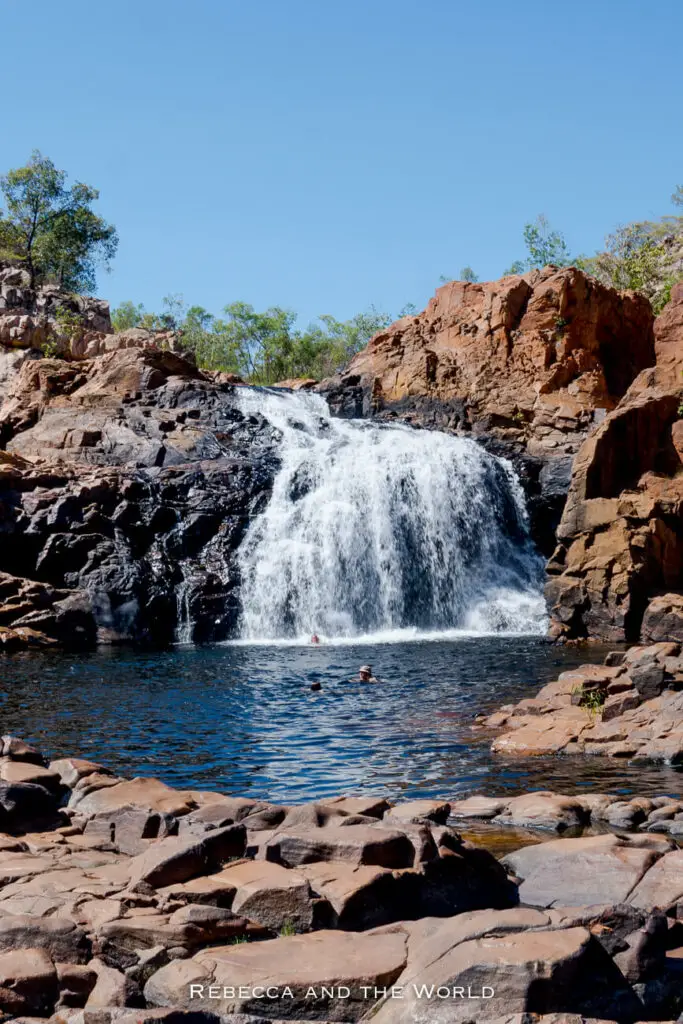
Head further south, about 215km (1.5 hours), to one of my favourite towns in the NT: Katherine .
Right in town, you’ll find Katherine Hot Springs , natural thermal pools that are perfect for a soak and a picnic.
About an hour out of Katherine, in the town of Mataranka, are Bitter Springs and Mataranka Springs , two more beautiful swimming spots.
But the highlight of Katherine is nearby Nitmiluk National Park (Katherine Gorge). This stunning area features a series of 13 sandstone gorges, which you can explore by boat , canoe or on foot – and it’s only 30km from Katherine.
No visitor should miss the short, 1.8km return trail to the Baruwei Lookout. This is where you’ll get the best views over Nitmiluk Gorge.
But if you’ve got a bit more time and energy, try one of the longer Southern Walks. We did the 11.8km Butterfly Gorge trail, which leads to the second gorge. There’s a “beach” at the end of the trail and from here you can jump in for a swim – if you dare!
The second section of Nitmiluk is Leliyn (Edith Falls), about 60km from Katherine. There’s a lot of competition, but I think it’s the most beautiful spot in the NT. This stunning waterfall cascades over multiple tiers into a crystal-clear swimming hole surrounded by lush greenery. Swimming here is one of my favourite things to do in the Northern Territory .
Where to stay in Katherine
We stayed at the Riverview Tourist Village in our camper trailer. We loved it so much that we ended up staying there for more than a week over two different visits! It’s right by the hot springs, so you can be first in when the gates open in the morning. There are cabins and caravan sites. Check rates online .
Other great accommodation options in Katherine are:
- The Contour Hotel , set on four acres of tropical gardens. There are tennis courts, a swimming pool, restaurants, barbecue facilities and a bar. Check rates and availability on Booking.com or Expedia
- Knotts Crossing Resort – Close to the Katherine River, this resort has a range of accommodation options, from cabins to motel-style rooms. It also has a restaurant and swimming pool. Check rates and availability on Booking.com
Don’t want to stay in Katherine? Then you can actually stay right in Nitmiluk National Park. The famous Cicada Lodge is operated by the Jawoyn people and has hotel rooms, cabins and a campground. Check rates and availability on Booking.com or Expedia .
There are also several park-managed campsites in the national park.
Days 8-9: Katherine to Litchfield National Park
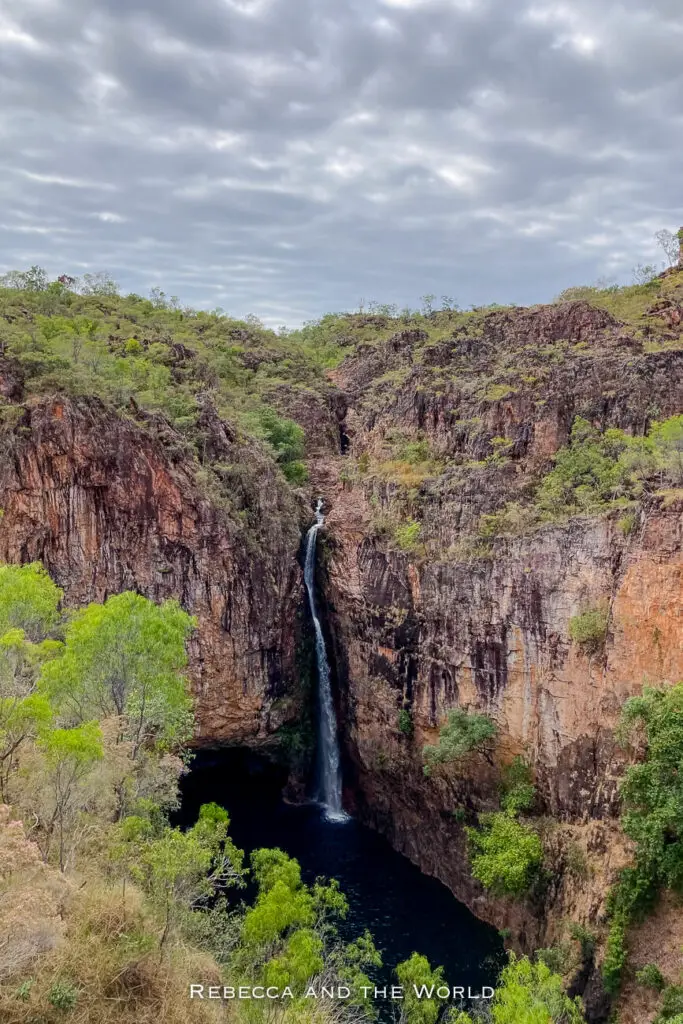
Time to hit the road again, this time returning north to the stunning Litchfield National Park, famous for its swimming holes and waterfalls.
From Katherine, it’s an easy 255km (2.5 hours) up the Stuart Highway.
Litchfield is the highlight of many travellers’ trips to the NT. It’s smaller than Kakadu, but it packs a punch with its natural beauty and refreshing swimming spots.
There’s a lot to see and do in Litchfield National Park , so I recommend spending two days here.
As you enter the park, stop by the Magnetic Termite Mounds , unique structures created by tiny termites that can be as tall as 4 metres.
Next, head to Florence Falls and take the short walk to view the spectacular double waterfall. If it’s busy, leave your car in the same car park and make the short walk to Buley Rockhole to take a dip in the tiered pools.
After a refreshing swim, continue on to Tolmer Falls for more stunning views.
One of the most popular spots in Litchfield National Park is Wangi Falls . The waters here are deliciously refreshing, and you can swim across the swimming hole to the two waterfalls. It feels like you’re in a movie set. There’s also a huge, grassy area by the natural pool that’s perfect for a picnic.
Where to stay in Litchfield National Park
There are several camping areas right within Litchfield National Park. Popular spots include Florence Falls Campground and Wangi Falls Campground – you’ll need to book online in advance to get a spot.
For glamping, Litchfield Safari Camp is in a great location on the western side of the park, about a 10-minute drive from Wangi Falls – so you can be up early to get there before everyone else! Hideaway Litchfield has luxury cabins built from shipping containers, each named after a place in Litchfield.
There are also several caravan parks. We stayed at Litchfield Tourist Park , which has cabins and caravan/campsites. The caravan sites are generously sized and shaded. There are also cabins and even a 3-bedroom homestead for those travelling in a group. There’s a pool and cafe on site. It’s about a 45-minute drive to Wangi Falls from here. Check rates and availability online .
The drive from Litchfield to Darwin is a short 106km (1 hour 15 mins), so feel free to sleep in and take a leisurely drive back. Or get up early to beat the crowds for a final swim in your favourite Litchfield swimming hole.
On your way back to Darwin, join one of the jumping crocodile cruises on the Adelaide River . It’s a unique experience to see these ancient creatures in their natural habitat, and the tour guides are always full of interesting facts and stories. Just remember to keep your arms and legs inside the boat at all times, eek!
Once you’re back in Darwin, head to the airport for your flight home.
Best time to do this NT road trip
The best time to do this road trip is during the dry season , which runs from May to October. This is when the weather is most pleasant and there is less chance of roads being flooded or closed due to rain.
However, if you don’t mind a bit of heat and humidity, the wet season (November-April) can also offer some unique experiences, such as watching the stunning storms and thundering waterfalls and seeing the lush green landscapes come to life. Check road conditions before setting off on your journey – roads are frequently cut off by flooding.
How to get to Darwin
Flying is the best way to get to Darwin to do this trip. Darwin is connected by air to all the Australian capital cities (except Canberra and Hobart), with daily flights from most of those cities.
CHECK FLIGHTS ONLINE
You can then rent a car at Darwin International Airport when you arrive.
One of the best ways to reach Darwin – in my opinion – is via the Stuart Highway. The Adelaide to Darwin drive is one of the best road trips in Australia and something everyone should do at least once in their lifetime!
Or you could road trip to Darwin from Broome or from Cairns.
Greyhound buses travel to Darwin from Alice Springs (21.5 hours), Broome (1 day), Katherine (4.5 hours) and Kununurra (11 hours). When you arrive in Darwin, you can rent a car to do this Northern Territory road trip.
For an epic Australian bucket list experience, take The Ghan all the way from Adelaide to Darwin. This luxury train traverses the Australian Outback for 3 days before arriving in Darwin. Once you arrive, rent a car and hit the road for this NT road trip.
Northern Territory road trip tips
Here are some handy travel tips I picked up along the way while doing this NT road trip.
Get roadside assistance . It’s always a good idea to have roadside assistance in case of any emergencies. This can give you peace of mind when driving long distances and through remote areas.
Stock up on supplies. This road trip includes a lot of time in national parks. You’ll want to stock up on food, water and other supplies in Darwin and Katherine.
Fill up at every opportunity. Fuel stops can be few and far between, especially when you get into the national parks, so fill up whenever you can.
Use an app to check fuel prices. We paid some pretty high prices for diesel in the NT. To save money, we used the PetrolSpy app to compare prices and find the cheapest fuel.
There’s little phone coverage. I was quite surprised at how limited mobile phone coverage was on both the main highways and in the national parks. Telstra is generally better than other networks. However, we rarely had service when inside the national parks.
Get a paper map . It’s hard to get lost on this road trip, but I do always like to have a physical map like this Hema map – especially when the mobile phone coverage is so patchy.
Don’t drive at night. Wildlife is abundant around this area – kangaroos, buffalo and birds. Driving at night greatly increases your chances of hitting an animal. Stick to driving during daylight hours.
Got more time?
If you’ve got more time than 10 days and want to explore the NT further, then go further south. After Katherine, you can continue on to a few different places.
Devils Marbles
A unique and otherworldly landscape of giant granite boulders, the Devils Marbles are a must-see stop on your road trip. Take a walk around these ancient rock formations and marvel at their natural beauty.
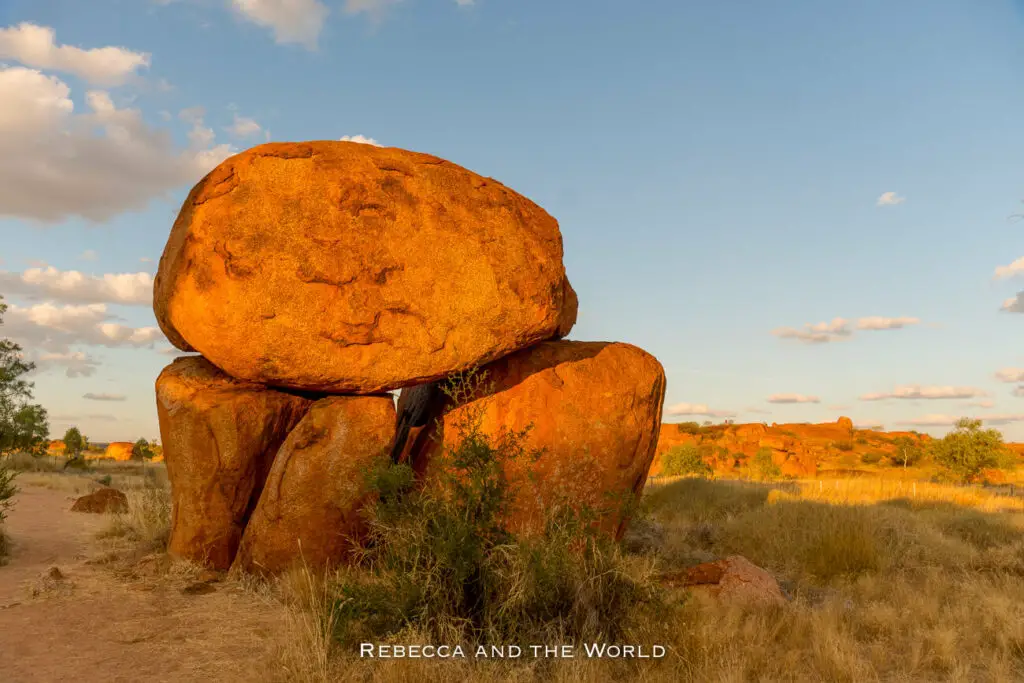
Alice Springs
Known as the gateway to the Red Centre, Alice Springs is a vibrant outback town with plenty to see and do. Visit the Alice Springs Desert Park and learn about the diverse flora and fauna of the area, or learn about Indigenous art at the Araluen Arts Precinct.
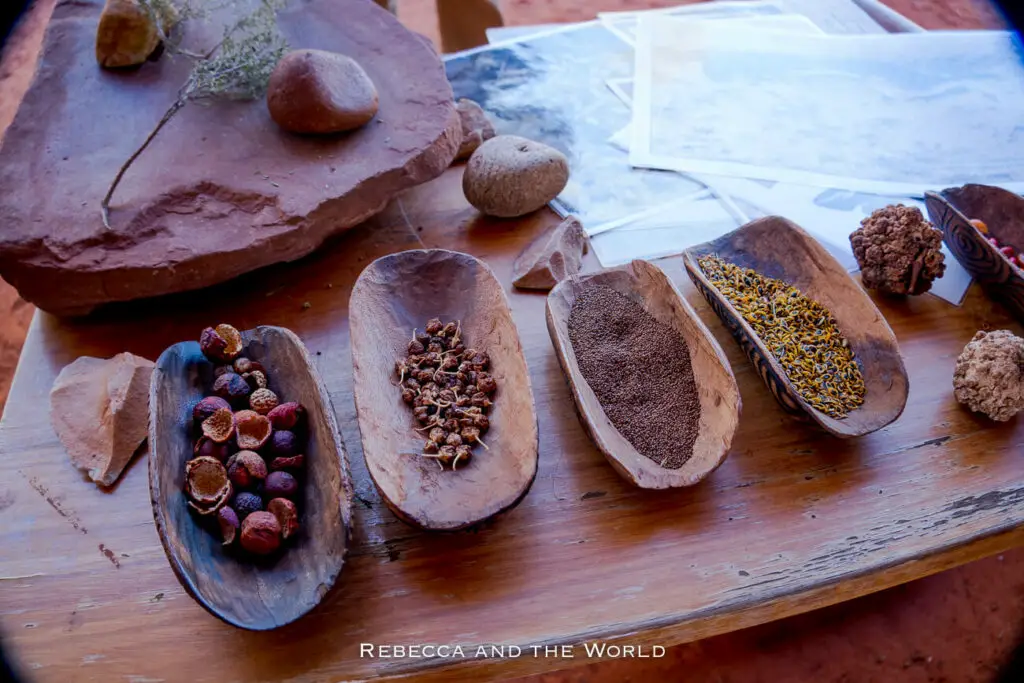
MacDonnell Ranges
The MacDonnell Ranges are a stunning mountain range that stretches for over 600km across the Red Centre of Australia . Take a scenic drive through the ranges and marvel at the spectacular landscapes, or go for a hike through the gorges and waterholes.
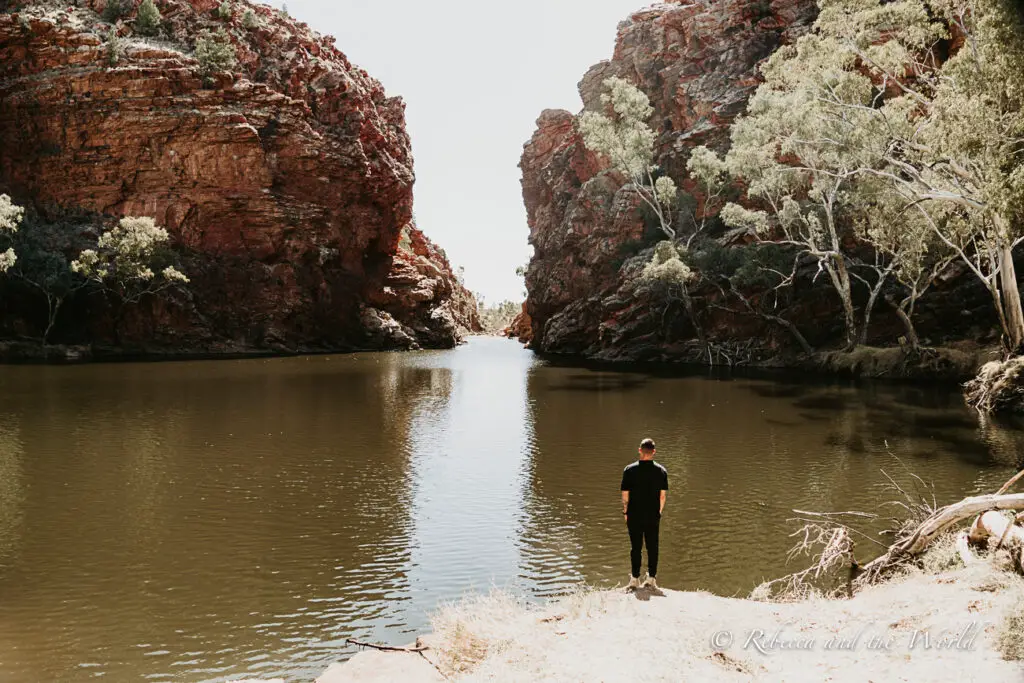
Uluru-Kata Tjuta National Park
No trip to the NT is complete without a visit to Uluru , one of Australia’s most iconic landmarks. Watch the sunset over this sacred monolith, learn about its cultural significance to the traditional owners, and take a guided tour around its base. It’s an experience you’ll never forget.
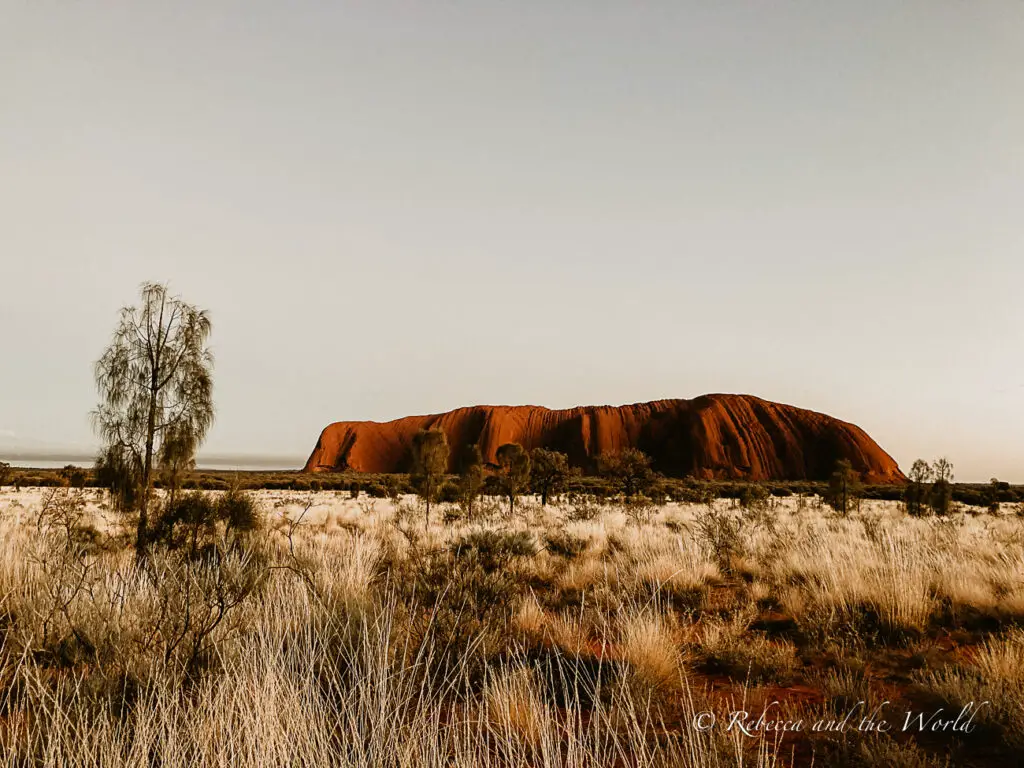
Watarrka National Park/Kings Canyon
Just a short drive from Uluru, you’ll find Watarrka National Park and Kings Canyon. Take a hike through the canyon to see stunning views of the red rock walls and lush oasis below. You can also take a helicopter tour for a bird’s eye view of this breathtaking landscape.
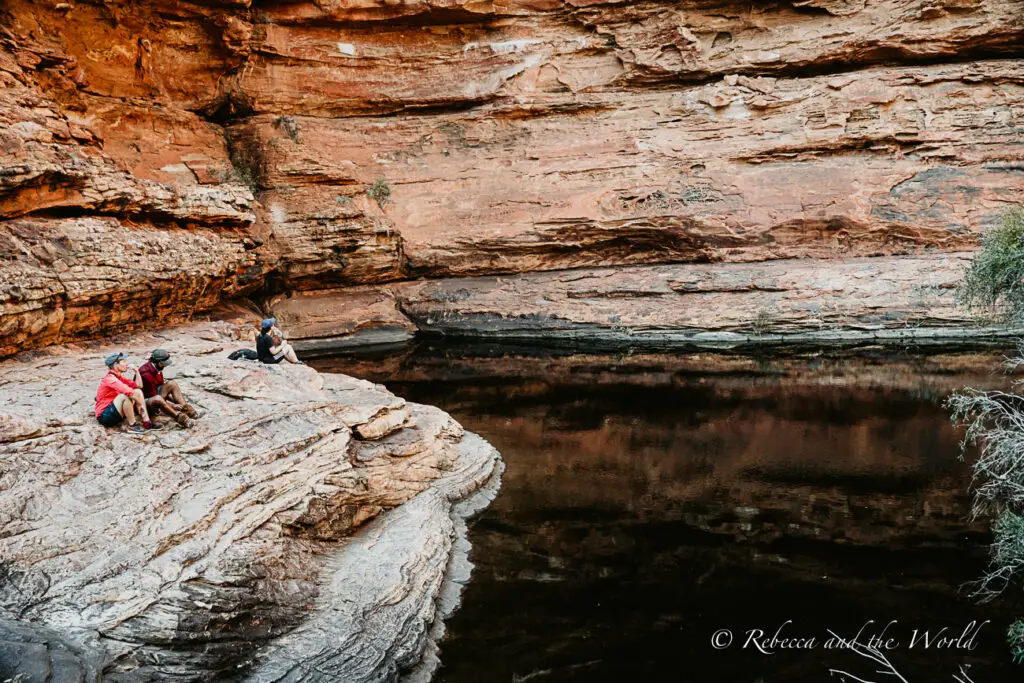
Final thoughts: Top End road trip
I hope this guide has given you a taste of what it’s like to drive through the Top End of the Northern Territory. There’s so much to see and do, and each day will bring rugged landscapes, diverse wildlife and captivating culture. Take your time, stay safe on the roads and enjoy exploring this beautiful part of Australia.
Did you find this article helpful? Consider buying me a coffee as a way to say thanks!
Are you planning a Northern Territory road trip?

Related posts
Before you go… you might like these Australia travel articles:
- How to plan an epic Adelaide to Darwin road trip itinerary
- The best things to do in Darwin
- The best things to do in Katherine, NT
- The best things to do in Nitmiluk National Park
- The ultimate guide to Litchfield National Park
- How to spend a few days in Kakadu National Park
- 19 spectacular things to do at Uluru
- How to spend a few days in Alice Springs
- The ultimate Australia bucket list
AUSTRALIA TRIP ESSENTIALS
- Book your flight to Australia online with Skyscanner . I like this site because it shows me which dates are cheaper.
- Find a great hotel in Australia. Check prices on Booking.com and Expedia online.
- Check out the huge range of day tours throughout Australia on GetYourGuide or Viator . There’s something for everyone.
- A copy of the Lonely Planet guide to Australia will be handy.
- One thing I always purchase is travel insurance ! Travel Insurance Master allows you to compare across multiple policy providers, while SafetyWing is great for long-term travellers and digital nomads.
- Pack sunscreen (look for SPF50 or higher), a hat and sunglasses because the sun is hot!
PIN IT FOR LATER: NORTHERN TERRITORY ROAD TRIP ITINERARY
Save this NT road trip to Pinterest so you can plan your epic trip later!
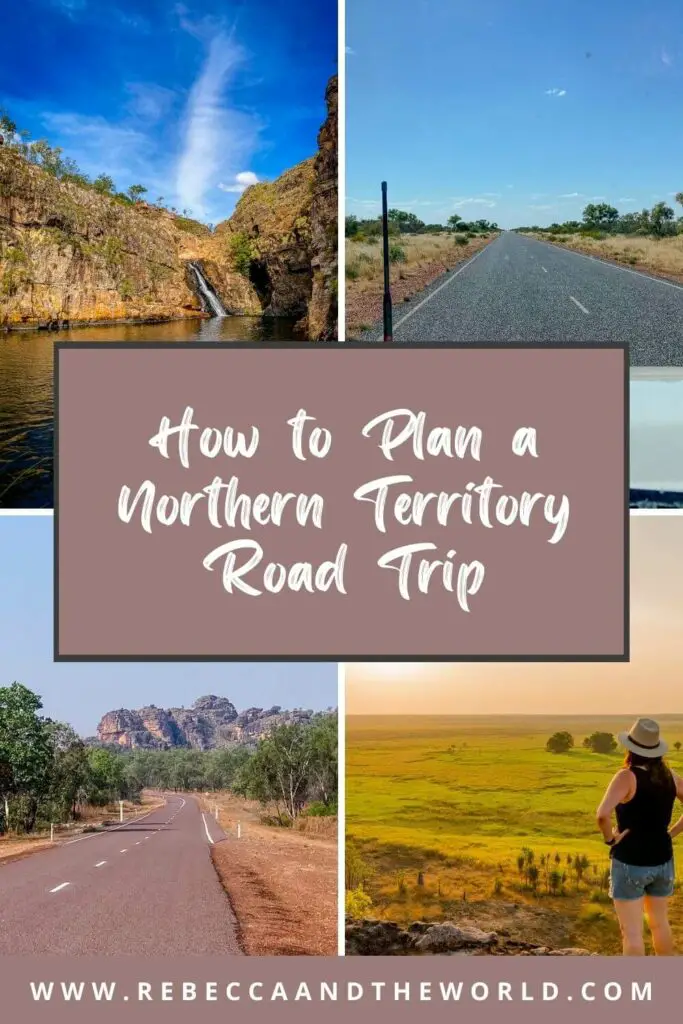
About REBECCA
I'm a travel junkie who started dreaming about seeing the world from a very young age. I've visited more than 40 countries and have a Master of International Sustainable Tourism Management. A former expat, I've lived in Australia, Papua New Guinea, Argentina and the United States. I share travel resources, tips and stories based on my personal experiences, and my goal is to make travel planning just that bit easier.
Leave a Comment Cancel reply
MORE INFORMATION
ABOUT WORK WITH ME CONTACT PUBLISHED WORK
AFFILIATE DISCLOSURE
AS AN AMAZON ASSOCIATE I EARN FROM QUALIFYING PURCHASES
© 2024 REBECCA AND THE WORLD
Privacy Policy
I ACKNOWLEDGE THE WURUNDJERI AND BOON WURRUNG PEOPLE OF THE KULIN NATION AS THE TRADITIONAL OWNERS OF THE LANDS AND WATERWAYS OF THE AREA I LIVE ON. I PAY MY RESPECTS TO ELDERS PAST AND PRESENT AND CELEBRATE THE STORIES, CULTURE AND TRADITIONS OF ALL ABORIGINAL AND TORRES STRAIT ISLANDER PEOPLE ACROSS AUSTRALIA.

- Privacy Overview
- Strictly Necessary Cookies
This website uses cookies so that we can provide you with the best user experience possible. Cookie information is stored in your browser and performs functions such as recognising you when you return to our website and helping our team to understand which sections of the website you find most interesting and useful.
Strictly Necessary Cookie should be enabled at all times so that we can save your preferences for cookie settings.
If you disable this cookie, we will not be able to save your preferences. This means that every time you visit this website you will need to enable or disable cookies again.

The Perfect Itinerary for a 2 week Northern Territory Road Trip

If you want to experience the Australian Outback, there is nothing better than a Northern Territory road trip when you travel to Australia.
Home to spectacular gorges, pretty as a picture swimming holes and abundant wildlife, the area also has a rich indigenous history and is the perfect place to learn about their ancient culture.
If you are looking for NT road trip ideas, or need help planning your Northern Territory itinerary, you have come to the right place. Our outback road trip itinerary will take you to some of the best Top End road trip destinations including three Northern Territory National Parks located in the Top End: the UNESCO World Heritage Listed Kakadu National Park, Nitmiluk National Park and Litchfield National Park.

- 1 Tour or self drive the Northern Territory?
- 2 Northern Territory Itinerary
- 3 Campervan hire in Darwin
- 4 Northern Territory Road Trip
- 5 Day 1: Darwin to Jabiru (Kakadu National Park)
- 6 Day 2: Jabiru to Ubirr
- 7 Day 3: Ubirr to Cooinda
- 8 Day 4: Cooinda to Jim Jim Falls
- 9 Day 5: Jim Jim Falls to Maguk Gorge (Barramundi Gorge)
- 10 Day 6: Maguk Gorge to Gunlom
- 11 Day 7: Gunlom
- 12 Day 8: Gunlom to Umbrawarra Gorge Nature Park
- 13 Day 9: Umbrawarra Gorge to Katherine (Nitmiluk National Park)
- 14 Day 10-11: Nitmiluk National Park
- 15 Day 12: Katherine to Edith Falls (Leliyn)
- 16 Day 13: Edith Falls to Florence Falls (Litchfield National Park)
- 17 Day 14: Florence Falls to Sandy Creek
- 18 Day 15: Sandy Creek to Darwin
- 19 Day 16: Darwin
- 20 When to visit Northern Territory
- 21 Getting to Darwin
- 22 4WD Camper Rental Darwin
- 23 Northern Territory Guide Book
- 24 Travel Insurance
NT Road Trip Essentials >> Don’t rely on mobile reception. Purchase your Northern Territory State Map here >> Book your 4WD – compare prices here >> Pack the right gear – see our Outback Packing List here >> Find the best hotel prices in Darwin here. >> Avoid being bitten by the mosquitoes! Click here to purchase the Thermacell Repeller.
Tour or self drive the Northern Territory?
When we first decided to explore the Top End, I have to admit I was nervous about a self drive road trip – it is the Australian Outback after all! But the reality wasn’t scary at all.
The driving conditions on our Northern Territory trip were perfectly manageable for inexperienced 4WD drivers like us. The 4wd camper we rented handled the terrain easily.
And the best thing? A self drive road trip gives you so much more freedom to explore the Northern Territory destinations at your own pace.
We recommend renting a 4wd campervan and taking a Northern Territory road trip through the Top End to experience the very best of the Australian Outback.
We share more tips on choosing a vehicle for your Northern Territory road trips here.
Top end Tours
If you absolutely cannot do a self drive road trip, we strongly recommend you look at the multi-day tours instead of a day trip, especially for Kakadu National Park.
There are many tour companies offering day trips from Darwin , but they involve a lot of driving. The Northern Territory is a big place and driving distances can be huge!
Click here to see some good multi-day tour options for the top end

Northern Territory Itinerary
So how long do you need to explore the Top End? It depends how much you want to see and how often you want to move.
More time is always better, but we think a 2 week Northern Territory itinerary gives you a good amount of time to see the best of the Top End landmarks .
It is possible to explore the National Parks more quickly, but there are so many things to do in the Northern Territory. It is a long way to go so you may as well make the most of it, right?
You will notice that most stops are one night stays. We decided to camp at a new site each day rather than base ourselves at a single campground. It saves a lot of travel time and also means you can experience more unique places during a two week road trip.
Our Northern Territory self drive itinerary is a loop starting and ending in Darwin. You could reverse the order of the itinerary too.
This itinerary can easily be modified to be part of a one-way trip to or from Alice Springs or even as part of a longer road trip to Western Australia .
10 day Northern Territory Itinerary
If you only have 10 days for your Darwin road trip, we recommend the following changes:
- Reduce your Gunlom stay to one night
- Skip the night at Umbrawarra Gorge
- Reduce your stay at Nitmiluk Gorge to 2 nights
- Visit Florence Falls on the way to Sandy Creek and don’t stay the night

Trip map courtesy of TravellersPoint
Map Your Itinerary
Start plotting your itinerary with the help of the Hema Maps NT State Map .
Hema Maps produce excellent detailed maps of popular Australian road trip destinations complete with fuel stops, camp sites and 4wd tracks marked.
We love them and have purchased and used many of their maps for our Australian road trips.
They are very affordable and an essential resource in outback areas with patchy internet and phone reception.
>> Click here to check the price for the HEMA NT State Map
Campervan hire in Darwin
There are many campervan hire options in Darwin, with all of the big rental companies offering vehicle rentals out of Darwin.
There are many 2WD options but we recommend renting a 4WD camper to give you more freedom to explore off the main roads, experience the outback with fewer people and stay in smaller campgrounds in spectacular locations.

Another option would be to rent a 4WD car and take tents and camping equipment with you.
Expert Tip: Campervan rental prices jump significantly during school holidays, so if you have flexibility to travel outside of those dates, you will save a lot of money!
Whichever way you decide to travel, ensure the rental agreement allows you to travel on dirt roads so you can see the Australian Outback at its best.
We rented a 4WD Landcruiser and were very happy with our choice. The car was easy to drive on dirt roads, through shallow river crossings, over bumpy and sandy tracks. The roof tent was quick to set up each day and all bedding and kitchen equipment was provided too.
Book your campervan | Compare 4WD camper prices | Search car rentals
Northern Territory Road Trip
Our NT itinerary is broken down day by day with the highlights, campground details and key information listed for each day.
You can read all our best tips for planning a Northern Territory road trip here.
We share our Outback Australia packing list here. With everything from clothes to bags to cooking equipment and lighting, you can be confident you have a complete packing list to plan your trip.
Note: All prices listed throughout the itinerary are in Australian Dollars.
Day 1: Darwin to Jabiru (Kakadu National Park)
Distance: 247 kms (153 miles) Driving time: 2.5 hours
Pick up your 4WD in Darwin and drive straight to Kakadu National Park. It is an easy drive to Jabiru on paved roads.
On the way out of Darwin make sure to stop at the town of Coolalinga to stock up on groceries. You will want to stock up on as many non-perishables as you can squeeze into your vehicle before you leave Darwin. There is only one small grocery store within Kakadu National Park, in the small town of Jabiru.
Also note that takeaway alcohol cannot be purchased within Kadadu National Park, so if you would like to have drinks on hand you will need to purchase them in Darwin.
Don’t forget: Purchase your Kakadu National Park Pass. A family pass costs $100. A single adult costs $40. The pass can also be purchased at the Bowali Visitor Information Centre when you arrive.
We caught sight of our first crocodiles cruising the South Aligator River and were excited to watch the landscape change quickly from urban to outback.
If you have time, head to the Bowali Visitor Information Centre . Otherwise you can do this first thing the next day.

Where to stay in Jabiru
Kakadu Lodge is a great stop for your first night in Kakadu National Park.
It is a large campground with cabins, unpowered and powered sites, a pretty lagoon style swimming pool and an onsite bar and restaurant. We paid $32 for a shady unpowered site.
Click here to check current prices for Kakadu Lodge
Give yourself adequate time to set up camp on the first night. We got more efficient at setting up and packing down during our Northern Territory 2 week itinerary but it takes time to learn the ropes.
We were able to set up the tent in around 15 minutes. Pack down was a little longer, around 20 minutes.
Watch our timelapse video setting up the roof tent here.
Day 2: Jabiru to Ubirr
Distance : 42 km (26 miles) Driving time : 45 mins
Before heading to Ubirr, we recommend you stop in at the Bowali Visitor Information Centre. The helpful staff can provide details on which campsites and 4WD tracks are open.
They also have information on the excellent and free ranger-guided programs.
Activities include guided walks, talks and art activities with local aboriginal artists. We adapted our Top End itinerary to fit in with some of these activities and I am glad we did because they are great.
Note that many of these programs are scheduled during the week, so you may need to plan your itinerary around these times.
The Visitor Centre also has displays about the local wildlife, plants and aboriginal culture which is a great introduction to the Park. The Visitor Centre is open every day from 8am – 5pm.
Basket Weaving
We stopped in at the Merl Campground to join a basket weaving session run by two local female indigenous artists.
Over two hours the kids watched and learned how the pandanus leaves are stripped, they helped make the colourful dyes from local plant roots and flowers and made their own bracelets using the dried pandanus.
It was a hands-on, interactive learning experience and one of the best free Kakadu activities with kids. We highly recommend it.

Cahills Crossing
While in the area make sure to visit Cahills Crossing. Located on the East Alligator River, Cahills Crossing is one of Australia’s most dangerous bodies of water.
It is a tidal river crossing into Arnhem Land and has been the site of several fatal crocodile attacks. It is a challenging crossing for some, evidenced by the rusted upturned cars downstream.
We watched cars make the crossing and also watched men risk their lives standing shin deep in the river to fish off the causeway despite the crocodile warning signs.
We saw a number of crocodiles in the area and couldn’t believe they were fishing!
Ubirr Rock Art Site
The highlight of any visit to Ubirr is the UNESCO World Heritage listed Ubirr Rock Art site. It is one of the best things to do in Kakadu National Park.
We joined a free ranger-led walk through the site, which ran from 4.10pm – 6.10pm. The walk included 4 info sessions with breaks in between to freely explore the surrounding area and the rock art.
After admiring the rock art, head to the lookout for sunset. You will be rewarded with spectacular views across the floodplains and to the distant escarpments.

Where to stay at Ubirr
We stayed at Merl Campground . It is a pretty campground with plenty of space and shade. There is drinking water, flush toilets and hot showers available for $38 for a family on an unpowered site.
Warning: The Merl campground backs onto a swamp and the mosquitoes at night in this campground were unlike anything we have seen anywhere in the world.
There were swarms of mosquitoes after sunset. So much so we found it difficult to cook and eat dinner.
Despite spraying ourselves with mosquito spray and covering up, we were still being bitten through our clothes. We could see them everywhere and could hear them buzzing all around us.
When we woke in the morning we could see dozens of mosquitos sitting on the flyscreens, looking in at the tasty meal they missed out on!!
The very next day, on advice from the ranger, we bought a Thermacell Mosquito Repeller. It wasn’t cheap, but it works!
Click here to buy the Thermacell Camper’s Kit
Thankfully we didn’t experience mosquitoes so bad anywhere else during our trip, but we used the Thermacell most nights to keep the pesky mosquitoes away.
When we turned the device on, there was not a mosquito to be seen. Best purchase ever!
Tip : The alternative to staying at Ubirr is to stay at Jabiru and return there in the evening. You need to watch out for wildlife driving at night as you return after Sunset, but there were plenty of people taking this option when we visited.
Where to eat in Ubirr
Apart from self-catering you only have one option, but it is a great one.
Stop in at the Ubirr Border Store on your way out to or back from the Rock Art site. As well as serving snacks and delicious icy cold drinks they serve up great Thai food too. The yellow and green curries were delicious.
Read Next: 17 Essential Tips for a Northern Territory Road Trip
Day 3: Ubirr to Cooinda
Distance: 118km (73 miles) Driving Time : 2 hrs
The next stop in our Northern Territory holiday itinerary is Cooinda, on the south side of Kakadu National Park.
Cooinda is a great base from which to join a cruise on Yellow Water Billabong.
Don’t forget to stock up on groceries and fuel at Jabiru on the way through.
Burrungkuy (Nourlangie) Rock Art Site
On the way to Cooinda, take a detour to another UNESCO World Heritage Rock Art Site known as Burrungkuy (Nourlangie).
There are ranger led programs available here, but this time we explored the site on our own. The x-ray rock paintings are very impressive and easily accessible via a short walk up through shaded rock shelters.
If you have time, check out the nearby Anbangbang Billabong (a nice spot for lunch) or walk up the Nawurlandja Lookout for spectacular views cross the escarpment (best at sunset).

Yellow Water Wetlands Cruise
A cruise along the Yellow Water Wetlands is a must on any Kakadu road trip.
The guides are very knowledgeable, the floodplain is teeming with birdlife, crocodiles and lush vegetation, and the colours of the landscape are spectacular.
It isn’t a cheap activity at a whopping $300 for a family of 4, but it was one of the highlights on our Northern Territory travel itinerary.
The cruise is especially good at sunrise or sunset.
There is a free shuttle from Cooinda Lodge to the jetty. The sunrise cruise departs at 6.45am. The sunset cruise leaves at 4.30pm. You can book tickets online here .

Where to stay in Cooinda
We stayed at the campground at Cooinda Lodge. Cooinda Lodge offers rooms as well as a campground with powered and unpowered sites.
There is a pretty billabong style pool to cool off and a large restaurant and bar for those who don’t feel like cooking. We paid $36 for an unpowered site for the family.
>> Click here to check the prices and availability at Cooinda Lodge
Day 4: Cooinda to Jim Jim Falls
Distance : 71 kms (44 miles) Driving Time : 2.5 hrs
Today make your way to Jim Jim Falls, one of the most impressive gorges in Kakadu National Park.
Don’t forget to top up groceries, drinking water and fuel at the small general store at Cooinda Lodge.
Access to Jim Jim Falls is via a dirt/gravel road for about 50 kms (30 miles).
I couldn’t believe the colours of the landscape around us as we drove along.
Brilliant red dirt, clear blue skies, lush green palms, charred black ground from recent fires. It is a dramatic and stunning landscape.

The road is wide but corrugated and was generally in a good state of repair when we visited in late June. We travelled at around 50-60km/hr without any trouble but it can vary.
Once you reach the Garnamarr campground the road narrows for the last 8 kms (4.9 miles) to the Jim Jim Falls carpark. A 4WD is required for this last section.
The track crosses a number of shallow causeways and was sandy in places, but our Landcruiser had no problem navigating the terrain.
The trailhead to Jim Jim Falls is at the carpark where there are basic pit toilets available.
The 2km (1.2 miles) return trail is very pretty as it meanders through monsoon forest, across large boulders and along a creek that gradually narrows into a steep and jaw dropping 200m (1/8 mile) tall gorge.
The kids loved scrambling up over rocks, although they were nervous at how close the trail was to the creek considering the large crocodile warning signs they had just read at the carpark!

Jim Jim Falls is one of the most spectacular waterfalls we visited on our 2 week Northern Territory road trip and the trail can only be accessed during the dry season.
I can only imagine how impressive it must look in the wet season with water pouring off the top.
We spent an hour or two exploring the plunge pools and beach pool with brilliant white sand, paddling in the water, and Matt braved a chilly swim out to the wispy waterfall, all the while thinking about the croc traps we had sighted on our way in!

There is another walk to the top of the falls. It is listed as a difficult 5-6 hour walk on steep terrain over 6kms (3.7 miles) return.
If you want to take the walk, ensure you leave early and take at least 3 litres of water per person.
Where to stay at Jim Jim Falls
Camping is available close by at the Garnamarr campground . We had wonderful views of the red stone escarpment from our site. Showers and toilets are available and we paid $20 for the family.
Expert Tip: We suggest stopping in at the campground first, choosing a site and leaving table/chairs at the site so that you can return later in the day and know you have a site secured as the site did fill up. We share more tips on campgrounds here .
Day 5: Jim Jim Falls to Maguk Gorge (Barramundi Gorge)
Distance : 116 kms (72 miles) Driving Time : 2.5 hrs
The drive from Jim Jim Falls to Maguk Gorge is again mostly on gravel/dirt roads.
The road into Maguk Gorge was heavily corrugated, but completely manageable in the 4WD. The last 1km from the campground to the car park was very sandy and a high clearance 4WD is essential.
We saw enormous termite mounds everywhere along the sides of the road – able to withstand fire, rain, the heat and the dry – they are impressively tall buildings for these little creatures.
The walk from the car park to the gorge is shaded through monsoon forest, again along a small creek bed, then along small beaches and across smooth large rocks before arriving at the swimming hole.
Maguk is a very pretty waterhole with crystal clear water, surrounded by sandstone cliffs and pandanus plants. It was an instant favourite.
We took lilos to swim out to and under the waterfall. The kids searched for fish and found rocks to jump off into the water.
Maguk is incredibly peaceful, not very busy and we didn’t want to leave. So we came back in the morning for another swim before we left!

It is possible to walk to the top of the waterfall where there are a number of smaller plunge pools.
To reach the top of the falls, stay on the left hand side of the creek and follow the track to the top.
Where to stay at Maguk Gorge
We stayed at the small campground at Maguk, about 1km before the carpark to the gorge. Note there is no drinking water or showers available. The toilets are basic pit toilets.
Be sure to reserve your spot with a table/chair before making your way to the gorge for a swim. We paid $15 for a family.
Day 6: Maguk Gorge to Gunlom
Distance : 87 kms (54 miles) Driving T ime : 2.5 hrs
The last 35km of this drive is along gravel/dirt roads. We picked up firewood along the way and enjoyed the views towards the escarpment.
Gunlom is one of the most famous destinations in Kakadu and most day trips from Darwin to Kakadu will include it in the itinerary.
The high waterfall plunges into a large pretty swimming hole and there is a small sandy beach and grassy picnic sites nearby.
But it is the plunge pools ABOVE the falls that make this such a memorable place to visit.
Just a 500m steep walk to the top brings you to a set of gorgeous natural plunge pools, a natural infinity pool with spectacular views across the plains and even a narrow gorge to swim through.
Our kids managed the walk easily in about 15 minutes, but it is a steep climb.
The view from the top is simply out of this world gorgeous. The views at sunset are incredible. Where else can you swim in a pool with views like this, for free!
It certainly beats many hotel roof top pool views!

Where to stay at Gunlom
There is a campground right alongside Gunlom waterhole and it is a great spot to stay.
Everything is close by. There is drinking water, flush toilets and showers available. All sites are unpowered. We paid $38 for the family.
Day 7: Gunlom
After a week of moving each night, we decided to stay 2 nights at Gunlom. With a nice campground and gorgeous plunge pools for swimming, we weren’t short of things to do for an extra day.
There are also a number of walks close by for those seeking a bit more activity.
Kakadu is home to a third of Australia’s bird species and I think all of them live at Gunlom! Each day we were woken by a cacophony of sound as the birds woke up for the day.
The rocks at the top plunge pools are smooth and warm up through the day. They are the perfect place to laze away a few hours.
We spotted a water dragon swimming through the gorge and the kids loved exploring all the little pools and finding higher and higher rocks to leap off into the water.

Day 8: Gunlom to Umbrawarra Gorge Nature Park
Distance : 133km (82 miles) Driving Time : 3 hrs
Drag yourselves away from Gunlom and continue south towards Katherine. Umbrawarra Gorge Nature Park is a great place to break up the trip if you have the time.
On the way you will drive through the small town of Pine Creek. Top up groceries, fuel and water here.
The Gorge is a detour off the main highway along a dirt track for about 20 kms (12.4 miles).
Once you arrive at the small carpark, the trail through the Gorge is an easy 2km (1.2 miles) return walk along the creek, although it is possible to continue walking for much further up the gorge by scrambling over the rocks.

The creek is lined with native paperbark eucalyptus, wattle, grevilleas and surrounded by deep red sandstone cliffs.
In the early dry season it is possible to swim in the waterholes along the way, which we were lucky enough to do. We spotted kookaburras and parrots. To me this gorge was the perfect image of the Australian Outback.
Where to stay at Umbrawarra Gorge
There is a small, basic campground close to the gorge.
There is no drinking water or showers available. Pit toilet only. It is worth saving a spot before walking the gorge. We paid $7.70 for the family.
Day 9: Umbrawarra Gorge to Katherine (Nitmiluk National Park)
Distance : 138km (85 miles) Driving Time : 2 hrs
The drive to Katherine is along the main highway where you will get to see the famous road trains. Used in remote outback areas to move freight across the country, these trucks often had 3 or 4 large trailers.
To get to Nitmiluk National Park you will drive through the town of Katherine. You should stop to stock up on groceries, water and fuel here.
Katherine Hot Springs
A great spot to stop on the way to Nitmiluk National Park is the Katherine Hot Springs. These natural thermal springs are on the banks of the Katherine River and are fed from a hole in the river bed upstream.
You can enter the springs at a number of spots along a path and it fun floating down the river and across small cascades.
There are more thermal springs further south at Mataranka and Bitter Springs, but as we were not traveling any further south this was a great stop to include in our Northern Territory road trip itinerary.

Nitmiluk National Park
Nitmiluk National Park is owned by the local Jawoyn People.
It is a beautiful National Park where the main attraction is Nitmiluk Gorge. Carved out by the Katherine River for over 12km, the surrounding rock faces are over 70m high in places.
The Gorge is actually made up of 13 separate gorges and there are many ways to explore the beauty of the gorge.
Once you arrive, check in at the visitor information centre to receive maps and information on hikes, kayaking and river cruises.

Where to stay in Nitmiluk National Park
We stayed at the lovely Nitmiluk National Park Campground .
While it was more expensive, at $50 per night for the family, we were based right in the park and didn’t need to travel at all for 3 nights.
For those looking for something more luxurious, the Cicada Lodge is located within the National Park and makes a great option for a treat.
Click here to see prices and availability at Cicada Lodge
Day 10-11: Nitmiluk National Park
There are a number of hikes and lookouts in the area as well as the opportunity to take a boat cruise, helicopter flights and even rent kayaks (or bring your own) to explore the gorge at a slower pace.
We spent our two days in Nitmiluk Gorge hiking and kayaking through the gorge.
Click here to book activities at Nitmiluk Gorge

Day 12: Katherine to Edith Falls (Leliyn)
Distance : 91 kms (56 miles) Driving Time : 1.5 hours
As you make your way back to Darwin, a stop at Edith Falls is a must. The site is off the main highway and is an easy drive on paved roads.
Edith Falls is within Nitmiluk National Park and is also the final stop for those completing the Jatbula Trail , a 62 km multi day day hike through Nitmiluk National Park. This walk is on our bucket list and looks achievable when the kids are older.
Spend the day swimming at the top pools and in the billabong at the base of the falls. The kids loved paddling under the waterfall at the top pools, leaping off the rocks and attempting to swim under the waterfall.
We are pleased we packed the inflatable surf mats as we all made great use of them during the road trip. You can download our full Outback Australia packing list here.
There are a number of different walks starting from the campground for those seeking a longer hike, with many more pools along the way to cool off.

Where to stay at Edith Falls
There is a popular, managed campground at Edith Falls and you need to arrive early to secure a site.
We arrived at 9am and already the sites were filling up. It is a lovely grassy, shaded campground.
There is drinking water, showers and toilets available. All sites are unpowered. We paid $30 for a family.
Day 13: Edith Falls to Florence Falls (Litchfield National Park)
Distance : 259 kms (160 miles) Driving Time : 3 hrs
On your way back to Darwin visit Litchfield National Park. Due to its proximity to Darwin it is one of the most popular places to visit in the Northern Territory.
This also makes it one of the busiest and we noticed a marked difference in the number of people visiting compared to the places we visited in Kakadu National Park.
Our first stop in Litchfield National Park was Florence Falls. After finding a campsite it was an easy 2km (1.2 mile) return walk to the falls along a paved path.
The falls were very busy with visitors when we arrived. We had a quick dip and returned later in the day to explore a little more without the crowds.
You can swim up to and under the waterfalls at Florence Falls which is loads of fun. There is also a lookout not far from the falls which gives you a great view over the falls and swimming hole.
Where to stay at Florence Falls
We stayed at the old 4WD campground at Florence Falls. There are two campgrounds at Florence Falls and both are easily accessible.
There were toilets and showers available, but no drinking water. We paid $15.40 for a family.
You should arrive by early afternoon to ensure you can claim a campsite. It is a very popular campground.
Day 14: Florence Falls to Sandy Creek
Distance : 31 kms (19 miles) Driving Time : 50 minutes
For our final night in the 4WD camper we decided to make our way to Sandy Creek. Much quieter and a little out of the way, it was one of our favourite campsites and close to Tjaynera Falls.
On our way to Sandy Creek we stopped at Buley Rockholes and Tolmer Falls.
The drive into Sandy Creek is along a 4WD dirt track, and has a water crossing. The road had only opened in early July so there was still a bit of water across the road, at around 50cm depth.
It made for an interesting water crossing, then through scrub land to a pretty campsite not far from Tjaynera Falls.
Buley Rockholes
The well-known Buley Rockholes are just up the road from Florence Falls.
A series of cascades running over smooth, shallow rocks, it was fun to make our way down the cascade, find little waterfalls to sit under and rocks to jump from.
It was very busy, so visit early or late in the day to avoid the crowds.

Tolmer Falls
We also stopped to admire Tolmer Falls from the lookout.
The Falls aren’t open to the public, but you can view them from a lookout which is only 1km return walk from the carpark.
Tjaynera Falls
It is a 3.4km (2.1 miles) return walk from the Sandy Creek campground along a flat trail that follows the creek to get to the falls.
The swimming hole is very pretty, surrounded by impressive large overhanging sandstone cliffs and a tall cascading waterfall.
There only a few people there and it was a very peaceful place to swim and play for the afternoon. It was one of our favourite swimming holes in our Northern Territory road trip.

Where to stay at Sandy Creek
There is a lovely, small campground at Sandy Creek. The campground has toilets and showers, but not drinking water. We paid $15.40 for a family.
The campground is small and was full by mid-afternoon so don’t arrive too late in the day.
Day 15: Sandy Creek to Darwin
Distance: 145 kms (90 miles) Driving Time : 2.5 hrs
There are two ways to get back to Darwin from Sandy Creek.
One is back via Batchelor and along the main highway. The alternative is via Cox Peninsula Road which passes Wangi Falls and Berry Springs. We chose the latter route.
There is a small section of dirt road, but it is wide and well maintained.
You need to check whether the road is open all the way through, as it is often closed in wet season due to flooding.
Wangi Falls
We stopped in at Wangi Falls early in the day on our way back to Darwin.
It is a very popular destination (you can also camp at Wangi Falls), so we recommend you get there early, or camp at the site to explore the falls without the crowds.
Don’t forget to take a dip in the small rockhole bored from the rock at the base of the waterfall on the left.
I am not sure whether it was the crowds or the fact we had seen so many other gorgeous falls, but I didn’t rate Wangi Falls as highly as many of the others we had visited in our 2 week Northern Territory road trip.

Berry Springs Nature Park
Another great stop on the return trip to Darwin, Berry Springs is a pretty thermal spring.
Free to visit and bigger than the Katherine Hot Springs, there are a set of pools (upper, main and lower) of gorgeous turquoise water, surrounded by grassy picnic grounds.
It makes a lovely stop for lunch and a swim before the final drive into Darwin. Note that due to its proximity to Darwin it can get pretty busy.
Unfortunately, things can and do go wrong when you travel.
World Nomads offers coverage for more than 150 activities as well as emergency medical, lost luggage, trip cancellation and more.
Day 16: Darwin
We had just one day to explore and found there are plenty of things to do in Darwin.
We enjoyed our visits to the Darwin Military Museum and the Museum and Art Gallery of Northern Territory.
Click here to see the full list of things to do in Darwin.
The easiest way to explore the city is by car. While it is a small city, the public transport isn’t great and it is easy to find places to park the car in the city and surrounding areas.
Click here to book your Darwin rental car
Where to stay in Darwin
There are number of different accommodation options available in Darwin.
If you are looking for a campground , we recommend Darwin FreeSpirit Resort.
Book Darwin FreeSpirit Resort | Read Trip Advisor Reviews
If you are looking for a hotel , like we were (as we dropped our 4WD camper back on our arrival in Darwin), we recommend the Novotel Darwin Airport.
The hotel is walking distance from the airport, which makes it very convenient for anyone with early flights in or out of Darwin.
The hotel breakfast is available from 4am so you can get something to eat before an early morning flight!
We booked a double queen room and were overjoyed to have a long warm shower, sleep in a comfy bed, enjoy a buffet breakfast and eat out for 2 nights before our flight home!
Book Novotel Darwin Airport | Read Trip Advisor Reviews
Where to eat in Darwin
Darwin has a great food truck scene. We ate both dinners by the ocean at different food trucks at East Point and NightCliff during our stay and loved eating out in the warm evening air and watching the sunsets Darwin is famous for.
Food trucks we can recommend include Salty Plum Café, Needle in a Haystack and Cucina Sotto le Stelle. For a list of other food trucks and their locations see the schedule here.

When to visit Northern Territory
The Top End has two seasons: Wet and Dry. While the temperature changes little over the year, the difference is the level of humidity and the amount of rain.
Dry season is May to October. Wet Season is November to April. Peak tourist season is during the dry season.
We visited the Top End in the dry season in late June / early July. Daytime temperatures were in the low 30s Celsius (86 F) with overnight lows around 18 C (64 F).
We were worried it would be too hot to hike and explore, but there are so many swimming holes that we never went a day without a dip to cool off.
The lower humidity levels meant the temperatures were manageable as long as you planned to do the most energetic activities in the morning, and took a swim in the afternoon when the heat was at its peak.
Accessibility to popular spots in wet season may not be possible. Some areas remain closed until June and even later so we recommend you check with the relevant the national park website for up to date information.
Getting to Darwin
Getting in and out of Darwin can be expensive, particularly during the peak season and school holidays.
Flight times from domestic locations also vary, with many budget airlines departing and arriving through the night.
Look at regional airlines such as AirNorth for daytime options if you don’t mind some additional travel time.
Search Skyscanner for the best priced flights to Darwin
4WD Camper Rental Darwin
There are many rental options available out of Darwin. We rented a 4WD Landcruiser with seating and beds for up to 5 people.
Northern Territory Guide Book
We have used Lonely Planet Guidebooks for over 20 years.
Buy your copy of Lonely Planet Northern Territory on Amazon .
Plus don’t forget to buy your HEMA Northern Territory map .
Travel Insurance
Disclaimer: As an Amazon Associate I earn from qualifying purchases.
We hope we have answered all your questions about NT road trips. Find all our articles on Australia travel here .
If you have any questions about our Northern Territory self drive tours please leave us a comment or contact us – we are happy to help!
Looking for more road trip inspiration? You might like:
- 17 Essential Tips for a Northern Territory Road Trip
- Ultimate Outback Australia Packing List
- Best gift ideas for road trip lovers
- 2 week South Africa road trip itinerary with kids
- Europe by campervan with kids
Love it? Pin and share your favourite image below on Pinterest!

Rachel Rodda
Related Posts

Outback Australia Road Trip Essentials (17 useful tips)

25 Famous Australian Landmarks You Can’t Help But Fall In Love With

Top 10 Best Things To Do In Darwin Australia
8 thoughts on “the perfect itinerary for a 2 week northern territory road trip”.
How much did the trip end up costing?
Hi Tom, Excluding flights and travel insurance, the trip cost about $7K AUD. That includes car rental, all campsites and hotels, food and activities.
Wow, this is an excellent guide! I did a 4-day camping trip in Kakadu National Park many, many years ago when I was a university student in Adelaide. The landscape of Northern Territory and the outback is truly spectacular and indeed the best way to explore these places is to be on a road trip. Love your post! #FarawayFiles
Thanks Kat. It was our first time to Outback Australia and I am 100% sure it won’t be our last. I was quite taken with the landscape.
This looks like a wonderful way to explore the Australian Outback. I particularly appreciate that you’re not travelling miles each day, instead stopping to explore and enjoy the amazing things along the way. Thanks for sharing on #FarawayFiles
It is tempting to try and cover a lot of ground, as there is so much to see. We enjoyed the shorter drives on this road trip as like you said it meant there was a lot more time to enjoy each place.
Excellent itinerary. Looks like you guys had a lot of fun. I had no idea there were so many swimming opportunities up there – they all look fantastic.
The number of swimming holes was a pleasant surprise for us too! It made the heat bearable, which was great.
Leave a Comment Cancel reply
This site uses Akismet to reduce spam. Learn how your comment data is processed .
We are Rachel and Matt and we're here to help you adventure more as a family. Read more about us.

Looking For Something?

Popular Posts

40+ Best Road Trip Gifts For Travel Lovers [2024]

The Best Anti Theft Backpacks For Travel [2024]

Family Gap Year: Our Around the World Itinerary

Northern Territory Travel Guide
Book your individual trip , stress-free with local travel experts
- roughguides.com
- Australasia
- northern-territory
- Travel guide
- Itineraries
- Local Experts
- Travel Advice
Accommodation
Plan your tailor-made trip with a local expert
Book securely with money-back guarantee
Travel stress-free with local assistance and 24/7 support
For most Australians the Northern Territory – known simply as “the Territory” or “NT” – embodies the antithesis of the country’s cushy suburban seaboard. The name conjures up a distant frontier province, and to some extent that’s still the case. Even today, a little over one percent of Australians inhabit an area covering a fifth of the continent, which partly explains why the Territory has never achieved full statehood. Territorians love to play up the extremes of climate, distance and isolation that mould their temperaments and accentuate their tough, maverick image as outsiders in a land of “southerners”. And beneath the grizzled clichés you’ll unearth a potent, unforgettable travel destination, serving up raw scenery, world-class national parks and a beguilingly strong Aboriginal heritage.
Alice Springs and around
Arnhem land, top end weather, kakadu national park, katherine and around, the macdonnell ranges, mereenie loop track, finke river route, arltunga to ruby gap, cattlewater pass, owen springs track, south to alice springs, south to kings canyon and uluru, along the stuart highway, the victoria highway to western australia.
The small but sultry city of Darwin , the Territory’s capital, is nearer to Bali than Sydney, with an unhurried tempo that regularly waylays travellers. Its location makes it the natural base for explorations around the Top End , as tropical NT is known. Most visitors make a beeline for the nearby natural attractions, most notably the photogenic swimming holes of Litchfield National Park and the World Heritage-listed, Aboriginal-managed Kakadu National Park , with its astonishing array of ancient rock art sites, waterways and wildlife: if croc-spotting’s a priority, you’re unlikely to leave disappointed. Arnhem Land , to the east of Kakadu, is Aboriginal land, requiring a permit to enter – some Darwinites think nothing of getting a permit every weekend to go fishing – while if you don’t want to go it alone, certain tours are authorized to visit the spectacular wilderness of scattered indigenous communities.
Around 100km south of Kakadu, the main attraction near the town of Katherine is the magnificent gorge complex within Nitmiluk National Park . Continuing south, a dip in Mataranka ’s thermal pools and some colourful “bush pubs” are the highlights of the 670km to Tennant Creek , by which time you’ve left the Top End’s savannah woodland and wetlands to travel through pastoral tablelands. The Stuart Highway continues to spool southwards, passing the rotund boulders of the Devil’s Marbles and rolling on into the central deserts surrounding Alice Springs . By no means the dusty Outback town many expect, Alice is home to more than 25,000, making it by some way the largest settlement in the interior. It’s an enjoyable base from which to learn about the Aborigines of the Western Desert and explore the region’s natural wonders, of which the stupendous monolith, Uluru – formerly known as Ayers Rock – 450km to the southwest, is just one of many. The West MacDonnell ranges, a series of rugged ridges cut at intervals by slender chasms and huge gorges, start on Alice Springs’ western doorstep. On the other side of town, the Eastern MacDonnells are less visited but no less appealing, while the remote tracks of the Simpson Desert to the south attract intrepid off-roaders. To the west, lush Palm Valley is accessible via a rough 4WD route and linked to the yawning chasm of Kings Canyon via a dirt track, the Mereenie Loop. These sights combined make for a memorable tour of the Outback. Renting a 4WD is recommended to get the most out of the trip; there many interesting off-road tracks.
Tailor-made travel itineraries for Australia, created by local experts

12 days / from 2900 USD
Explore Western Australia from Perth to Broome
Western Australia is the country's largest state, covering more than a third of Australia. This self drive itinerary allows you to explore sunny Perth, stunning national parks and waterfalls, the remote wild west outback, empty beaches and much more.
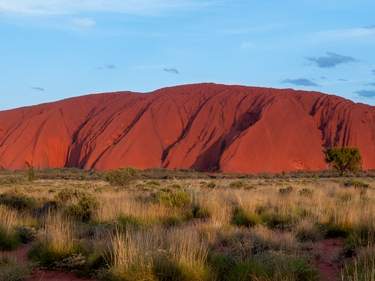
16 days / from 3300 USD
Explore South Australia and the Northern Territory
Explore South Australia and the Northern Territory on this self-drive adventure. Start in Adelaide and make your way over the Ayers Rock, Kings Canyon, and Alice Springs to the Kakadu National Park and ultimately Darwin.

23 days / from 4150 USD
Cross Western Australia to Darwin
Western Australia offers wonderfully remote outback experiences: from spectacular national parks to sandy deserts, pristine beaches to working cattle stations. This itinerary allows you to explore the way from Perth to Darwin in depth and at your own pace, in your own rental car.
The bright, clear desert air of ALICE SPRINGS gives the town and its people a charge that you don’t get in the languid, tropical north. Arriving here is a relief after a long drive up or down the Stuart Highway. Its sights, notably the wonderful Araluen Arts Centre and the out-of-town Desert Park, are worth leisurely exploration, and a couple of nights is the minimum you should budget for. Timing your visit for one of the town’s quirky festivals, from dry river-bed regattas to the Camel Cup, is also worth considering.
The centre of town occupies a compact area between the Stuart Highway and Leichhardt Terrace, along the almost perennially dry Todd River, bordered to the north and south by Wills Terrace and Stott Terrace respectively. Bisecting this rectangle is Todd Mall , a pedestrian thoroughfare lined with cafés and galleries. Get an overview of Alice’s setting by nipping up Anzac Hill (off Wills Terrace) for 360-degree views over the town and the MacDonnell Ranges.
Brief history
The area has been inhabited for at least forty thousand years by the Arrernte (also known as Aranda), who moved between reliable water sources along the MacDonnell Ranges. But, as elsewhere in the Territory, it was only the arrival of the Overland Telegraph Line in the 1870s that led to a permanent settlement here. It was Charles Todd , then South Australia’s Superintendent of Telegraphs, who saw the need to link South Australia with the Top End, which in turn would give a link to Asia and, ultimately, the rest of the empire. The town’s river and its tributary carry his name, while the “spring” (actually a billabong) and town are named after his wife, Alice.
With repeater stations needed every 250km from Adelaide to Darwin to boost the OTL signal, the billabong north of today’s town was chosen as the spot at which to establish the telegraph station. When a spurious ruby rush led to the discovery of gold in the Eastern MacDonnells, Stuart Town (the town’s official name in its early years) became a departure point for the long slog to the riches east. The gold rush fizzled, but the township of Stuart remained, a collection of shanty dwellings serving pastoralists, prospectors and missionaries.
In 1929 the railway line from Adelaide finally reached Stuart Town. Journeys that had once taken weeks by camel from the Oodnadatta railhead could now be undertaken in just a few days, so by 1933, when the town officially became Alice Springs, the population had mushroomed to nearly five hundred white Australians. The 1942 evacuation of Darwin saw Alice Springs become the Territory’s administrative capital and a busy military supply base.
After hostilities ceased, some of the wartime population stayed on and Alice Springs began to establish itself as a pleasant if quirky place to live, immortalized in fiction by Nevil Shute’s novel, A Town Like Alice . In the 1980s the town’s prosperity was further boosted by the reconstruction of the poorly built rail link from Adelaide and the sealing of the Stuart Highway. The town’s proximity to Uluru, which became a global tourist destination in the 1970s and 1980s, saw the creation of the many resorts and motels still present today. This trade took a knock when direct flights to the rock were established, and businesses in Alice are still suffering from this bypass effect.
There are decent accommodation options scattered across the city, on both sides of the Todd River. Much of it is reasonably central, but be aware that Alice isn’t the safest city for a long wander at night. Booking ahead is advisable during the winter school holidays (June & July) and events like the biennial Masters Games in October (even-numbered years).
Eating and drinking
There are plenty of good places to eat in Alice Springs. Todd Mall boasts a handful of cafés and restaurants with outdoor seating. Nightlife is fairly low-key, though Friday and Saturday nights get lively; doormen and regular police patrols keep things from getting too hairy but it’s safest to get a taxi back to your accommodation if you have more than a five-minute walk. The twice-weekly Centralian Advocate ( alicenow.com.au ) carries details of live music and other entertainment.
These days a rail adventure of international renown, The Ghan – the train service which travels year-round between Adelaide and Darwin – is remarkable for several reasons, not least the fact that it exists at all. Work first started on a rail line that would join the two cities in 1877, but poor engineering practices coupled with a flimsy understanding of seasonal rains meant decades of failed attempts. The service takes its name from the Afghan cameleers who had nailed Outback travel rather more effectively.
A workable stretch of track from Adelaide to Alice Springs was in place from the 1930s, although it wasn’t until as recently as 2004 that it finally reached Darwin. It’s a blessing that it now does. There are three types of ticket available: Red Service , Gold Service and Platinum Service . Red Service gives you a “Daynighter” seat and a view of the plains rolling by – plump for anything higher and you’re treated to a smart private cabin, indulgent food and wine, off-train tours and a general sense of rail travel as it should be. Highly recommended. See gsr.com.au or call 1800 703 357 for more information.
Pristine ARNHEM LAND is geographically the continuation of Kakadu eastwards to the Gulf of Carpentaria, but without the infrastructure and picnic areas. Never colonized and too rough to graze, the 91,000-square-kilometre wilderness was designated an Aboriginal reserve in 1931 and has remained in Aboriginal hands since that time. In 1963 the Yirrkala of northwestern Arnhem Land appealed against the proposed mining of bauxite on their land. It was the first protest of its kind and included the presentation of sacred artefacts and a petition in the form of a bark painting to the government in Canberra. Their actions brought the issue of Aboriginal land rights to the public eye, paving the way for subsequent successful land claims in the Territory.
Independent tourists are not allowed to visit Arnhem Land without a permit , and the twelve thousand Aborigines who live here prefer it that way. Little disturbed for more then forty thousand years, Arnhem Land, like Kakadu, holds thousands of rock-art sites and burial grounds, wild coastline, rivers teeming with fish, stunning stone escarpments, monsoon forests, savannah woodlands and abundant wildlife. In recent years, the mystique of this “forbidden land” has proved a profitable source of income for Arnhem Land’s more accessible communities, and tours, particularly to the areas adjacent to Kakadu, are now offered in partnership with a select few operators.
Aboriginal festivals
Attending an Aboriginal festival can make for a high point of a visit to Australia. Here are some of the best, and most memorable, in the Territory. They are almost exclusively alcohol-free.
Ngukurr (June; ngukurrarts.com ) A three-day festival at a remote community on the Roper Highway, incorporating everything from footy matches and craft workshops to hip-hop competitions and family activities.
Barunga (June; barungafestival.com.au ) One of the best known of the NT’s indigenous festivals, with a focus on music, sport and culture. 80km southeast of Katherine.
Dancing with Spirits (July; djilpinarts.org.au ) Held by the Wugularr community in SW Arnhem Land, sharing songs, dance, stories and music in a spectacular waterside setting. 4WD recommended for access.
Walaman Cultural Festival (July; ntyan.com.au) A colourful celebration involving workshops, traditional dancing, bush games and fire sculptures. Takes place in Bulman, 400km southeast of Darwin. No charge for tickets, all welcome.
Garma (August; garma.com.au ) Rightly famed and hugely popular, drawing large numbers of non-indigenous visitors to the Gove Peninsula to immerse themselves in the music, ceremonies and bushcraft of the “First Australians”.
In spite of its modest size, torrid climate and often traumatic history, DARWIN manages to feel young, vibrant and cosmopolitan, a mood illustrated as much by the buzzing bars along Mitchell Street as by the joggers and cyclists making the most of the tropical parks and waterfront suburbs. Travellers accustomed to the all-enveloping conurbations of the east coast can initially be underwhelmed by its low-rise, laidback mood, but Darwin more than matches its billing as one of the fastest-growing cities in Australia, and its population of some 125,000 accommodates a jumble of different ethnic backgrounds. To fully appreciate Darwin you should allow a minimum of three days to absorb its heritage buildings and wildlife attractions, visit the gleaming new waterfront quarter and enjoy the steaming nightlife.
Day-trips from Darwin include the ever-popular Litchfield National Park as well as the Aboriginal-owned Tiwi Islands, a thirty-minute flight from town. Crocodylus Park, on the city’s edge, makes for a full day out when combined with the excellent Territory Wildlife Park. On paper, Kakadu is another day-trip option, but to appreciate it properly you’ll need longer, possibly on a tour.
Setting up a colonial settlement on Australia’s remote northern shores was never going to be easy, and it took four abortive attempts in various locations over 45 years before Darwin (originally called Palmerston) was established in 1869 by the new South Australian state keen to exploit its recently acquired “northern territory”. The early colonists’ aim was to pre-empt foreign occupation and create a trading post – a “new Singapore” for the British Empire.
Things got off to a promising start with the 1872 arrival of the Overland Telegraph Line (OTL) , following the route pioneered by explorer John McDouall Stuart in 1862 that finally linked Australia with the rest of the world. Gold was discovered at Pine Creek while pylons were being erected for the OTL, prompting a gold rush and construction of a southbound railway. After the gold rush ran its course, a cyclone flattened the depressed town in 1897, but by 1911, when Darwin adopted its present name (a legacy of Charles Darwin’s former ship, the Beagle , having laid anchor here in 1839), the rough-and-ready frontier outpost had grown into a small government centre, servicing the mines and properties of the Top End. Yet even by 1937, after being razed by a second cyclone, the town had a population of just 1500.
During World War II, Japanese air raids destroyed Darwin, killing hundreds, information that was suppressed at the time. The fear of invasion and an urgent need to get troops to the war zone led to the swift construction of the Stuart Highway , the first reliable land link between Darwin and the rest of Australia.
Three decades of postwar prosperity followed until Christmas Eve 1974, when Cyclone Tracy rolled in overnight and devastated the city. Despite the relatively low death toll of 66, Tracy marked the end of old Darwin, psychologically as well as architecturally, and most of the population was evacuated before the hasty rebuilding process began. Over the last couple of decades links with Asia, and an influx of Aussies seeking warmer weather and a slower pace of life, have transformed the city into a vibrant multicultural destination. In 2004 tourism and the mining industry were boosted by the completion of the Darwin rail link with Alice Springs (and Adelaide). More recently, the billion-dollar waterfront regeneration project and the discovery of vast amounts of natural gas offshore have attracted more migrants and money.
The modern city spreads north from the end of a stubby peninsula where a settlement was originally established on the lands of the Larrakia Aborigines. For the visitor most of the action lies between the Waterfront Area and East Point, 9km to the north.
Aboriginal people and tourism
More than a quarter of Northern Territory’s population are Aborigines, a far higher proportion than anywhere else in Australia, and half of the Territory is once again Aboriginal-owned land , returned following protracted land claims. As a tourist, however, meeting Aboriginal people and getting to know them can be difficult. Excepting the national parks, most Aboriginal land is out of bounds to visitors without a permit or invitation, and most communities and outstations, where the majority of Aboriginal people live, are remote even by Territory standards.
There’s a tendency for outsiders to think of “Aborigines” as a single mass of people, overlooking the fact that dozens of distinct indigenous groups have traditionally inhabited the NT region, many of them with very individual cultural beliefs and practices. But it’s true, sadly, that the most visible Aboriginal people in the main towns of Darwin and Alice Springs are those living rough on the streets, a sad sight that shows little signs of changing. Likewise, the extent of certain social problems – most apparently alcoholism – is unavoidable.
But while these issues might be real they’re far from all-defining, and for those interested in getting to the heart of the enigmatic Australian Outback and meeting indigenous Australians, the Territory provides an introduction to a land that’s sustained fascinating and complex cultures for at least forty thousand years. Some Aborigines have a new-found pride in their heritage and identity, demonstrated in superb museums, successful tourism projects , and a flowering of indigenous art, media, music and literature.
The most meaningful contact for the short-term visitor is likely to be from an indigenous tour guide, a knowledgeable non-Aboriginal guide, or – if you time things right – a visit to a cultural festival. Try to choose Aboriginal-owned tour providers, for example Northern Territory Indigenous Tours or Batji Tours. Keep in mind that most tours will only scrape the surface of a complex way of life – secrecy is one of the pillars that supports traditional society, so what you’ll probably learn is a watered-down version from people unable to give away some of the particulars of closely guarded “business”. But if you’re keen to learn about the meaning of the country for Aborigines, about languages, bushtucker, bush medicine and Dreamtime stories, these tours can be enriching.
Darwin has plentiful accommodation , most of it conveniently central. Rates in the town’s apartments and more expensive hotels can drop by half during the Wet from October through to April .
Buying and playing a didgeridoo
Authentic didges are created from termite-hollowed branches of stringybark, woollybark and bloodwood trees that are indigenous from the Gulf to the Kimberley. They’re most commonly associated with Arnhem Land, where they were introduced between 1500 and 2000 years ago and are properly called yidaka or molo by the Yolngu people of that region. “Didgeridoo” is an Anglicized name relating to the sound produced.
Tiny bamboo and even painted pocket didges have found their way onto the market, but a real didge is a natural tube of wood with a rough interior. Painted versions haven’t necessarily got any symbolic meaning; plain ones can look less tacky and are less expensive. Branches being what they are, every didge is different, but if you’re considering playing it rather than hanging it over the fireplace, aim for one around 1.3m in length with a 30–40mm diameter mouthpiece. The bend doesn’t affect the sound, but the length, tapering and wall thickness (ideally between 5mm and 10mm) do. Avoid cumbersome, thick-walled items that get in the way of your face and sound flat. For authentic didges visit the workshop run by Richard Williams ( 21firstst.com ), based at Coco’s Backpackers in Katherine. Sounds of Starlight in Alice Springs also has an extensive range.
The key to making the right sound is to hum while letting your pressed lips flap, or vibrate, with the right pressure behind them – it’s easier using the side of your mouth. The tricky bit – beyond the ability of most beginners – is to master circular breathing; this entails refilling your lungs through your nose while maintaining the sound from your lips with air squeezed from your cheeks. A good way to get your head round this concept is to blow or “squirt” bubbles into a glass of water with a straw, while simultaneously inhaling through the nose. Most shops that sell didges also sell CDs and inexpensive “how to” booklets that offer hints on the mysteries of circular breathing and how to emit advanced sounds using your vocal cords.
Some Aboriginal communities forbid women to play the didge – as actress Nicole Kidman found out after she played one on German television to promote the film Australia . Besides being criticized for cultural insensitivity, Kidman was later informed that some Aboriginal groups believe that playing it makes women infertile.
Drinking and nightlife
Darwin’s alcohol consumption is notorious and weekend nights can get lively. The main focus is along Mitchell Street where a cluster of terrace-fronted bars compete for trade with happy hours, big-screen sport and acoustic live music. For a more sedate evening head down to the Waterfront Quarter or catch a movie under the stars. There’s no mass-market NT-brewed beer, but for the ultimate hangover cure, try an omnipresent Pauls Iced Coffee (only sold in the Territory).
Darwin has a surprisingly sophisticated restaurant scene. Local favourites can often fill up, so try to book ahead. Look out for seafood, particularly barramundi , a sweet-tasting fighting fish which is near inescapable on the city’s menus. Mindil Beach and Parap markets boast a plethora of Asian food stalls, while there are inexpensive seafood takeaways on Stokes Hill Wharf.
There is a certain amount of misunderstanding about the Top End’s tropical climate , usually summed up as the hot and humid “Dry” and the hotter and very humid “Wet”. Give or take a couple of weeks either way, this is the pattern: the Dry begins in April when rains stop and humidity decreases – although this always remains high, whatever the season. The bush is at its greenest, and engorged waterfalls pound the base of the escarpments, although it may take a couple of months for vehicle access to be restored to all far-flung tracks. From April until October skies are generally cloud-free, with daily temperatures reliably peaking in the low thirties centigrade, though June and July nights might cool down to 10°C – sheer bliss for unacclimatized tourists.
From October until December temperatures and humidity begin to rise during the Build Up . Clouds accumulate to discharge brief showers, and it’s a time of year when the weak-willed or insufficiently drunk can flip out and “go troppo” as the unbearable heat, humidity and dysfunctional air-conditioning push people over the edge. Around November storms can still be frustratingly dry but often give rise to spectacular lightning shows. Only when the monsoonal Wet season commences at the turn of the year do the daily afternoon storms rejuvenate and saturate the land. This daily cycle lasts for two months or so and is much more tolerable than you might expect, with a daily thunderous downpour cooling things down from the mid- to low thirties.
Cyclones occur most commonly at either end of the Wet and can dump 30cm of rain in as many hours, with winds of up to 300kph. Frequent updates on the erratic path and intensity of these tropical depressions are given on the radio, so most people are prepared when a storm hits. Some fizzle out or head back out to sea; others can intensify and zigzag across the land, most infamously in the form of 1974’s Cyclone Tracy, which pulverized Darwin.
And if further proof were needed that the Top End’s weather patterns warrant more distinction than merely Wet and Dry, know that the region’s Aboriginal groups traditionally recognize no less than six distinct seasons.
Some 150km east of Darwin lies KAKADU NATIONAL PARK , one of the most spectacular and varied wilderness areas in Australia, and World Heritage listed for both its natural and cultural riches. Kakadu derives its name from the Bininj/Mungguy people, the area’s traditional owners, who jointly manage the park with the Australian government.
Covering more than 20,000 square kilometres, Kakadu is a challenging place to appreciate in a short visit; aim to allow a minimum of three days , and consider either renting a 4WD or joining a 4WD tour. Try too to factor in a river cruise to get to more remote areas. The dry-season months are the most popular times to visit, with little or no rain, acceptable humidity and temperatures, and conspicuous wildlife. Towards the end of the Dry, birdlife congregates around the shrinking waterholes, while November’s rising temperatures and epic electrical storms herald the onset of the Wet. To see Kakadu during the Wet , which sees up to 1600mm of torrential rainfall between December and March, or the early Dry is, many argue, to see it at its best. While some major sights are inaccessible and the wildlife dispersed, the waterfalls are in full flow and the land possesses a verdant splendour that can be breathtaking.
You could easily spend a week visiting all the spots detailed here, ideally followed by a return visit six months later to observe the seasonal changes. All the places mentioned here are reached off either the Arnhem or Kakadu highways. Most roads are accessible to 2WDs, except where indicated; 4WD tracks are closed during the Wet when even the highways can be underwater at times.
Aboriginal rock art
More than five thousand known Aboriginal art sites cover the walls of Kakadu’s caves and sheltered outcrops, ranging in age from just 30 years old to more than 20,000. Most of the art sites are of spiritual significance to Aborigines who live in the park, and only a few locations, such as Ubirr and Nourlangie, can be visited by tourists. The paintings incorporate a variety of styles, from handprints to detailed “X-ray” depictions of animals and fish from the rich Estuarine period of six thousand years ago. At this time, rising sea levels are thought to have submerged the land bridge by which Aborigines crossed into Australia. It’s not unusual to see paintings from successive eras on one wall. Contact period images of seventeenth-century Macassar fishing praus and larger European schooners might be superimposed over depictions of ancient Mimi spirits or creation ancestors. For the indigenous people, the art sites are djang (dreaming places), depicting Dreamtime stories, and the images serve as prompts to communicate valuable lessons that are still passed down from generation to generation.
Kakadu’s wildlife
Kakadu’s 20,000 square kilometres encompass a huge range of habitats from sandstone escarpments topped with heathland to savannah woodlands, wetlands and tidal mangroves all changing throughout the seasons. Within these habitats an extraordinary diversity of wildlife thrives, including 2000 different plants, more than 10,000 species of insect, 68 mammals, and 120 different reptiles including thousands of crocodiles (the park’s main watercourse, the South Alligator River , was misnamed after the prolific croc population on its banks). You’ll also find a third of Australia’s bird species within Kakadu, including the elegant jabiru (black-necked stork), the similarly large brolga, with its curious courting dance, and white-breasted sea eagles, as well as galahs and magpie geese by the thousand. Mammals include kangaroos, wallabies, wallaroos, 26 species of bat, and dingoes.
With so many interdependent ecosystems, maintaining the park’s natural balance is a full-time job. Burning off has long been recognized as a technique of land management by Aborigines who have a safe, effective process that involves lighting small, controllable fires in a patchwork quilt-like pattern to stimulate new plant growth. Today, rangers imitate these age-old practices, burning off the drying speargrass during Yegge, the indigenous “cool weather time” season from May to June. Managing introduced species , from water buffalo to troublesome grass species and cane toads, is also a major priority in order to preserve the park’s environment.
Kakadu’s yellow gold
The land around Kakadu’s border with Arnhem Land contains fifteen percent of the world’s known uranium reserves , and mining and refining the ore produces millions of dollars in royalties for the park’s traditional owners (not to mention making a pretty penny for the mining company itself, multinational Rio Tinto). Environmentalists have long campaigned against mining in the park, arguing that it’s impossible to contain the low-level radioactive waste produced. There have been more than 150 leaks and spills at the Ranger Uranium Mine near Jabiru since it opened in 1981, and the vast open pit (surrounded by, but technically separate from, the national park) certainly makes for a sight deeply incompatible with the park itself. Until recently it was possible to take guided tours of the mine, although these were halted in 2013 after a transition began from open-cut mining to underground exploration. But subterranean or otherwise, and despite uranium still being touted as a catalyst for carbon-neutral power generation, mining in Kakadu won’t stop being a divisive issue anytime soon.
The small town of KATHERINE , 317km south of Darwin, is a worthwhile stopover, primarily for a sidetrip to the dramatic Nitmiluk Gorge (formerly Katherine Gorge) or to strike out along the epic Victoria Highway to Western Australia. The fast-flowing Katherine River , which runs through the gorge and town, must have been a sight for explorer John McDouall Stuart’s sore eyes as he struggled north in 1862. Having got this far, he named the river after a benefactor’s daughter, and within ten years the completion of the Overland Telegraph Line (OTL) encouraged European settlement, as drovers and prospectors converged on the first reliable water north of the Davenport Ranges. In 1926 a narrow-gauge railway line linked Katherine with Darwin and the town was established on the present site.
Katherine is essentially a “one-street” town, though in January 1998 when the river rose to 22m and broke its banks that street found itself under 2m of water – a crocodile was even spotted cruising lazily past the semi-submerged Woolworths.
The Stuart Highway becomes Katherine Terrace , the main street, as it passes through town. Along it lie most of the shops and services, while sprinkled around town are several excellent Aboriginal art and craft galleries. The town can be a good place to pick up casual work at the surrounding stations and market gardens (most readily during the main Nov–Dec mango season).
Nitmiluk National Park
The magnificent 12km Nitmiluk Gorge , carved by the Katherine River through the Arnhem Land plateau, is the centrepiece of the Nitmiluk National Park . The river, hemmed in by sheer ochre cliffs, makes for a spectacular cruise or canoeing trip (there are, in fact, thirteen gorges split by sections of rapids). Nitmiluk also has eight marked walking trails , including the renowned 36km Jatbula Trail. The local Jawoyn (pronounced Jar-wen) people own the park’s accommodation options and also run Nitmiluk Tours, which runs visitor activities in the park.
The MacDonnell Ranges are among the longest of the parallel ridge systems that corrugate the Centre’s landscape. Their east–west axis, passing through Alice Springs, is broken by myriad gaps carved through the ranges during better-watered epochs. It is these striking ruptures, along with the grandeur and colours of the rugged landscape – particularly west of Alice Springs – that make a few days spent in the MacDonnells so worthwhile. The expansive West MacDonnells are best appreciated with at least one overnight stay at any of the campsites mentioned here, while the often-overlooked East MacDonnells are a better bet if your time is limited. Both can be visited as part of a tour or with your own vehicle – a 4WD is recommended to get the most out of a visit, as some of the best spots are along corrugated dirt tracks. Take heed of off-road driving advice .
The East MacDonnells
Heading out of Alice Springs through Heavitree Gap and along the Ross Highway you soon reach tranquil Emily Gap , Alice Springs’ nearest waterhole, 10km from town. This is one of the most significant Arrernte sacred sites, being the birthplace of the ancestral Caterpillar beings who formed the surrounding landscape. There are some interesting stylized depictions of the caterpillars on the far side of a natural pool; and again at the equally peaceful Jessie Gap , a little further east. Corroboree Rock , 47km east of Alice Springs, is an unusual, fin-like outcrop of limestone with an altar-like platform and two crevices piercing the fin. The rock was once a repository for sacred objects and a site of initiation ceremonies, or corroborees .
The Old South Road and the northern Simpson Desert
Just 14km out of Alice Springs, shortly after the airport turn-off, a sign indicates “Chambers Pillar (4WD)”. This is the Old South Road , which follows the abandoned course of the Ghan and original Overland Telegraph Line to Adelaide; these days, the sandy route has become part of the Old Ghan Heritage Trail, which takes adventurous off-roaders all the way to South Australia. If you’re not an experienced off-road driver, some full-day tours from Alice Springs include Chambers Pillar.
Rainfall permitting, ordinary cars can normally cover the 35km to Ewaninga Rock Carvings , a jumble of rocks by a small claypan that is a sacred Aboriginal Rain Dreaming site, but after the store at MARYVALE (also known as Titjikala; has shop and fuel) you’ll need a 4WD and to be in the mood for a thorough shaking until Charlotte Ranges. After the ranges there are sand ridges all the way to Chambers Pillar (camping), a historic dead-end, 165km from Alice Springs. Named by Stuart after one of his benefactors, the 50m-high sandstone pillar was used as a landmark by early overlanders heading up from the railhead at Oodnadatta, SA. The plinth is carved with their names as well as those of many others, and can be seen from the platform at the pillar’s base.
Some 4WD tracks in the Centre
Renting a 4WD for a few days of off-road driving can get you to some beautiful corners of the central deserts. Here are some 4WD-only routes close to Alice Springs. Read the advice and carry the gear recommended in Basics. The Alice Springs Visitor Centre can provide maps and information on road conditions (1800 246 199, ntlis.nt.gov.au/roadreport). Beginners should also consider taking a 4WD course such as those offered by Direct 4WD (0408 485 641, direct4wd.com.au ) based in Alice Springs. Also make sure you are appropriately equipped for travelling in remote areas with plenty of food and water, tow ropes, a second spare tyre and spare jerry cans. All rental agents in the Alice Springs “Getting around” section can arrange 4WDs.
The main appeal of the 195km Mereenie Loop, linking Hermannsburg with Kings Canyon (allow 3–4hr), is that it avoids backtracking on the usual “Canyon and Rock” tour. It is a stunning drive with plenty of desert oaks, river crossings, wild horses, donkeys and dingoes. The corrugations can be fearsome; don’t even think about the trip if rain is forecast as it’s prone to flash flooding and inaccessible after rain. Obtain a permit at Alice Springs Visitor Centre, Glen Helen or Kings Canyon. Note that you’re not allowed to stop (except at the official “Jump-Up” lookout area, close to Kings Canyon) or camp.
With a day to spare and experience with a 4WD, following the Finke river bed from Hermannsburg down to the Ernest Giles Road offers an adventurous alternative to the highway and saves some backtracking. Rewards include stark gorge scenery, a reliable waterhole and the likelihood that you’ll have it all to yourself. Before you set off, check the road conditions.
The 100km track starts immediately south of Hermannsburg. After 10km of corrugated road you descend into the river bed. From here on driving is slow, along a pair of sandy or pebbly ruts – you should deflate your tyres to at least 25psi/1.7bar and keep in the ruts to minimize the risk of getting stuck. There’s just one designated campsite en route, Boggy Hole , which looks out from beneath river red gums to permanent reed-fringed waterholes.
Beyond, the track crisscrosses rather than follows the river bed before taking a roller-coaster ride to the Giles Road across some low dunes thinly wooded with desert oaks – beware of oncoming traffic on blind crests. Boggy Hole to the Giles Road is 65km, so allow three hours.
Call the Arltunga Ranger Station ( t 08 8956 9770), 101km east of Alice Springs, for the latest track conditions for this scenic, if bumpy, 47km drive (allow 2hr) through the Eastern ranges. It includes some steep creek crossings until you reach the sandy river bed of the Hale and the Ruby Gap Nature Park . From here, keep to the sandy ruts and inch carefully over the rocks for 5km, at which point you’ll need to stop and walk the last 2km to Glen Annie Gorge .
Another challenging track (impassable after the rain) heads north from Arltunga past Claraville station and up over the Harts Ranges through Cattlewater Pass to the Plenty Highway, 56km or three hours from Arltunga. It’s a scenic way of returning to Alice Springs from Arltunga and you’re bound to see some hopping marsupials along the way, but ensure you allow plenty of time, as it’s slow going in places.
A great option for those who want to combine 4WD touring with the region’s pioneering history. It’s a sandy but relatively short undertaking, running for 50km and forming a through-route from Larapinta Drive (50km west of Alice) to the Stuart Highway (66km south of Alice). Highlights along the way include old Aboriginal stockmen’s quarters and a log-hut homestead. There’s a detailed self-drive info sheet available online ( parksandwildlife.nt.gov.au ) or from the Simpsons Gap ranger station.
The West MacDonnells
Most of the ranges west of Alice are now part of the West MacDonnells National Park . The route described here follows an anticlockwise loop out along Larapinta Drive, then north along Namatjira Drive to Glen Helen Resort , a short while after which a 110km partly dirt road takes you south past Gosse Bluff to the Mereenie Loop and turn-off (east) for Palm Valley and Hermannsburg, and back to Alice Springs. A total distance of 370km, it can be slow-going depending on the condition of the road after Glen Helen and the Mereenie Loop, which is prone to flash flooding in rain and can be closed for weeks after. The Mereenie Loop (not part of the national park) passes through Aboriginal land ; get a permit from the Alice Springs visitor centre and check road conditions; do not attempt the route if rain is forecast.
Albert Namatjira
Born on the Hermannsburg Lutheran mission in 1902, Albert Namatjira , a member of the Arrernte tribe, was the first of the Hermannsburg mission’s much-copied school of landscape watercolourists . Although lacking much painting experience, Namatjira assisted white artist Rex Battarbee on his painting expeditions through the Central Australian deserts in the 1930s during which his talent soon became obvious to Battarbee, who later became Namatjira’s agent. Like all NT Aborigines at that time, Namatjira was forbidden to buy alcohol, stay overnight in Alice Springs or leave the Territory without permission. At the insistence of southern do-gooders – and against his wishes – he was the first Aborigine to be awarded Australian citizenship , in 1956. This meant he could travel without limitations, but needed a permit to visit his own family on Aboriginal reserves. Following the success of his first exhibition in Melbourne, he became a reluctant celebrity, compelled under Aboriginal tradition to share his wealth with his extended family. A shy and modest man, he died in 1959 following a sordid conviction and short imprisonment for supplying alcohol to fellow Aborigines.
Critics could never make up their minds about his work, but his popular appeal was undoubted: today his paintings remain among the most valuable examples of Australia’s artistic preoccupation with its landscape. Sadly, the Twin Ghost Gums in the West MacDonnell Ranges, which featured in some of his most famous works, were destroyed in a suspected arson case in 2013.
The Larapinta Trail
A wonderful way to experience the West MacDonnells is to trek the long-distance Larapinta Trail , which follows the ranges, beginning at the Telegraph Station north of Alice Springs and ending 223km to the west on the 1347m Mount Sonder summit. The walk is divided into around a dozen sections, but these don’t necessarily delineate a day’s walk. Trailside water tanks are situated no more than two days’ walk or 30km apart. The more impressive and more arduous sections are near town. Section 2 from Simpsons Gap to Jay Creek is 25km long – an overnight stop is advised, while the next section is a short but hard 14km to Standley Chasm with 350m of climbing. Pre-check weather conditions – it’s best tackled between April and October when the temperatures are lower. You can print a basic trail guide from the NT government website ( parksandwildlife.nt.gov.au/parks/walks/larapinta ) or, better, buy its comprehensive “Trail Package” ($44), which includes waterproof trail maps and notes. For those walkers looking for a touch of Larapinta comfort, it’s now possible to make use of rather stylish semipermanent campsites through World Expeditions ( worldexpeditions.com ).
The 1100km south from Katherine down “ the Track ”, as the Stuart Highway is known, to Alice Springs, is something of a no-man’s-land for travellers – taken up by a sparsely populated, flat, arid plain rolling all the way to the Red Centre. The bleak landscape can provoke a slight anxiety when looking at the fuel gauge. If you really have to drive straight through, allow a good twelve hours, though it makes sense to break the journey at Mataranka to visit the hot springs and overnight further south at Tennant Creek . Avoid driving in the dark, as there’s a strong likelihood of hitting kangaroos or dozy cattle, which often wander across the road.
West of the Track, the vast Aboriginal lands of the Warlpiri and neighbouring groups occupy just about the entire Tanami Desert , while to the east are the grasslands of the Barkly Tableland , a dramatic drought-affected pastoral region extending north to the seldom-visited coast of the Gulf of Carpentaria .
The Devil’s Marbles
Just off the highway about 130km south of Tennant Creek, the marvellous Devil’s Marbles are worth an hour or so of your time. Genuine geological oddities, the boulders are spectacular at sunrise and sunset, when they positively glow in the low-angled light. During the day, expect a steady stream of visitors striking elaborate between-rock poses for photos. The local Warumungu people believe the Marbles are the eggs of the Rainbow Serpent.
The tiny town of MATARANKA – just over 100km from Katherine – is the capital of “Never Never” country, named after Jeannie Gunn’s 1908 novel of a pioneering woman’s life set in the area, We of the Never Never . Nearby, the hot springs of Elsey National Park , Mataranka Homestead and the freshwater wetlands of the Roper River lure passing travellers from May to September. You’ll find accommodation, fuel, a supermarket and local museum on Roper Terrace (Stuart Highway).
The Red Centre: when to go and what to take
The aridity of the Centre results in seasonal extremes of temperature. In the midwinter months of July and August the weather is lovely and the light clear, although freezing nights , especially around Uluru, are not uncommon. In December and January the temperature can reach 40°C by 10am and not drop below 30°C all night. The transitional seasons of autumn (April–June) and spring (Sept & Oct) are the best times to explore the region in comfort, although in spring there’s the chance of rain. Although you may encounter floods and road closures, rain can transform the desert into a green garden with sprouting wildflowers, though generally it’s the midsummer storms that bring the most rain.
Out here a wide-brimmed hat is not so much a fashion accessory as a lifesaver, keeping your head and face in permanent shadow. A head net is also highly advisable – the flies can be maddening during the day, especially at Uluru. All walks require a water bottle and lashings of sun block . Australia’s venomous (but rarely seen) snakes, rocky paths and the prickly spinifex grass that covers a fifth of the continent, make a pair of covered shoes or boots essential too.
Tennant Creek
With its handful of shops, restaurants and sights, including an excellent Aboriginal cultural centre, TENNANT CREEK , 26km south of Three Ways, remains the best stopover on the long haul between Katherine (669km north) and Alice Springs (507km south). At the heart of the Barkly Region, Tennant is a hub for the mining and beef industries and the surrounding area is home to the NT’s oldest, and some of the world’s biggest, cattle stations.
Sadly, Tennant also has a dark side, with social problems and alcohol-related issues blighting sections of the Aboriginal community which makes up close to half the town’s population of around 3000. It can feel edgy when venturing out at night – taxis are a good idea if you’re taking more than a short walk – but the small town has for decades made efforts to shake off its reputation, and it deserves to be visited with an open mind.
John McDouall Stuart came through Tennant Creek in the early 1860s, followed by the Overland Telegraph Line ten years later. Pastoralists and prospectors arrived from the south and east, and in 1933 it was the site of Australia’s last major gold rush . Mining corporations continue to exploit the rich deposits here, with mineral exploration the most important industry alongside beef. The Stuart Highway becomes Paterson Street, the town’s main drag, as you enter Tennant.
Stunning Kings Canyon in Watarrka National Park, southwest of Alice Springs, is accessible by three different routes. Most take the circuitous four-hour 450km journey south from Alice Springs on the Stuart Highway, then west on the Lasseter Highway (which continues on to Uluru), then north on the Luritja Road. Alternatively, a couple of 4WD routes, the Mereenie Loop and the Ernest Giles Road off the Stuart Highway, also access the park.
If you’re not self-driving, most tours of two days or more departing from Alice Springs include Kings Canyon on their itineraries, en route to or from Ayers Rock Resort . There are also daily bus transfers ($119 either way), with guided commentary, between Ayers Rock Resort and Kings Canyon with AAT Kings, with onward connections to Alice Springs.
Kings Canyon (Watarrka National Park)
As you cross the boundary of the Watarrka National Park , you’ll see the turn-off to Kathleen Springs , where a walk (90min return) takes you to a sacred Aboriginal waterhole. Once used to corral livestock, it’s now a good place to catch sight of colourful birdlife.
Another twenty minutes’ drive down the road is the majestic KINGS CANYON itself, part of the magnificent George Gill Range. The big attraction is the three- to four-hour, 6km Rim Walk up and around the canyon, its scintillating views and complex natural history making it one of the Centre’s best hikes. Early morning is the most popular time, and for a couple of hours from sunrise, visitors swarm out from the car park along the track – if you don’t mind missing the sunrise, you might have the place to yourself in the late afternoon when the light is better, but avoid the heat of the middle of the day. The walk actually gets closed if temperatures are forecast to peak above 36°C (most commonly in Jan or Feb).
Undertaken in a now mandatory clockwise direction, the walk starts with a well-constructed stepped ascent (the toughest part of the walk), after which the trail leads through a maze of sandstone domes, known as the Lost City , where interpretive boards fill you in on the geology and botany. About halfway along, you clamber down into a cool, palm-filled chasm known as the Garden of Eden . Coming up the far side, there’s an easily missed detour downstream to a shady pool where you can swim. From here you get a blockbuster view of the sunlit south wall and the canyon below. Returning to the staircase, the walk comes to the very edge of the south wall and then descends gently to the car park. For a different perspective, the easy 2km return walk along the canyon bottom is also worthwhile.
Heading south from Darwin, the Stuart Highway passes old mining outposts and overgrown, but still commemorated, World War II airstrips. The highway itself snakes all the way down to South Australia, but along its most northern stretch are a number of attractions that can be visited either as excursions from Darwin or as diversions on the journey to Katherine, 320km to the south.
Litchfield National Park
“Kaka-don’t, Litchfield-do” is an oversimplified quip expressing many Darwin residents’ preference for LITCHFIELD NATIONAL PARK over its much larger near-neighbour. Situated just 100km south of Darwin, and roughly 16km west of the Stuart Highway, the park encompasses the Tabletop Range, a spring-fringed plateau from which several easily accessible waterfalls gush into swimming holes. The whole park is a laidback destination, great for bushwalking and lingering nature appreciation, without the hassle of long drives, permits or 4WDs. It offers comparatively little in the way of visible Aboriginal culture, but if you’re after a relaxed day or two in striking surrounds, it’s ideal. Pay attention to the signs warning of crocodiles .
Uluru–Kata Tjuta National Park encompasses Uluru (formerly known as Ayers Rock ) and Kata Tjuta (once known as the Olgas ). If you’re wondering whether all the hype is worth it, the answer is, emphatically, yes. The Rock, its textures, colours and not least its elemental presence, is without question one of the world’s natural wonders. While overt commercialization has been controlled within the park, designated a World Heritage Site by UNESCO in 1987, it’s impossible to avoid other tourists, but this shouldn’t affect your experience.
In many ways just as spellbinding, Kata Tjuta (meaning “Many Heads”) lies 45km west from the park entry station. A cluster of rounded domes divided by narrow chasms and valleys, it is geologically quite distinct from Uluru and makes for a stunning early-morning hike spotting rock wallabies along the way.
Uluru–Kata Tjuta National Park
The entry fee for ULURU–KATA TJUTA NATIONAL PARK allows unlimited access for up to three days, though it’s easily extendable (an annual pass is just $32.50). Besides the two major sites of Uluru and Kata Tjuta, the park incorporates the closed Aboriginal community of Mutujulu, near the base of the Rock, the site of the original caravan park before the resort was built. More than 400,000 tourists visit the park every year, and as many come in tour-bus groups, the place can sometimes feel crowded.
It is thought that Aboriginal people arrived at Uluru more than 20,000 years ago, having occupied the Centre more than 10,000 years earlier. They survived in this semi-arid environment in small mobile groups, moving from one waterhole to another. Water was their most valued resource, and so any site like Uluru or Kata Tjuta that had permanent waterholes and attracted game was of vital practical – and therefore religious – significance.
The first European to set eyes on Uluru was the explorer Ernest Giles, in 1872, but it was a year later that William Gosse followed his Afghan guide up the Rock and thereby made the first ascent by a European, naming it Ayers Rock after a South Australian politician. With white settlement of the Centre and the introduction of cattle came the relocation of its occupants from their traditional lands.
The first tourists visited the Rock in 1936, and in 1958 the national park was excised from what was then an Aboriginal reserve. By the early 1970s the tourist facilities in the park were failing to cope and the purpose-built township and resort of Yulara was conceived and completed within a decade. At the same time the traditional custodians of Uluru began to protest about the desecration of their sacred sites by tourists, who at that time could roam anywhere. After a long land-claim the park was subsequently returned with much flourish to the Yankunytjatjara and Pitjantjatjara peoples in 1985. A condition of the handback was that the park be leased straight back to the Department of Environment and Heritage, which now jointly manages the park with the Anangu.
Aboriginal people in the Red Centre
The Red Centre includes the lands inhabited by the “ Anangu ”, which simply means “Aboriginal people” in the languages of the Western Desert. Tribes include the Arrernte from the Alice Springs area, Luritja from the Papunya area, the Pitjantjatjara from the region stretching from Uluru/Yulara to Docker River, and the Yankuntjatjara and Antakarinja, from the areas in between. Notwithstanding massacres as late as 1928, the Aborigines of the central deserts were fortunate in being among the last to come into contact with white settlers, by which time the exterminations of the nineteenth century had passed and anthropologists like Ted Strehlow were busy recording the “dying race”. However, their isolation is thought to have made adjustment to modern life more challenging for them than for Aborigines of the northern coast.
At the centre of Anangu life and society is the concept of Tjukurpa , sometimes translated as “Dreamtime”. It’s a complex concept that encompasses the past, present and future; the creation period when the ancestral beings ( Tjukaritja ) created the world; the relationship between people, plants, animals and the land; and the knowledge of how these relationships formed, what their meaning was, and how they should be maintained through daily life and ceremony. In Aboriginal society their stories (which can sound simplistic when related to tourists) acquire more complex meanings as an individual’s level of knowledge increases with successive initiations. Read the interpretive signs at the base of the Rock to learn about Tjukaritja such as the Mala (rufous hare wallaby), Liru (venomous snake) and Kuniya (python).
Uluru geology
The reason Uluru rises so dramatically from the surrounding plain is because it is a monolith – that is, a single piece of rock, with most of its bulk hidden below ground like an iceberg. With few cracks to be exploited by weathering, and the layers of very hard, coarse-grained sandstone (or arkose) tilted to a near-vertical plane, the Rock has resisted the denudation of the landscape surrounding it. However, wind and rain have had their effects. During storms, brief, but spectacular, waterfalls stream down the rock forming dirty channels. In places, the surface of the monolith has peeled or worn away, producing bizarre features and many caves, most out of bounds but some accessible on the walking trails. The striking orangey-red hue is actually superficial, the result of oxidation (“rusting”) of the normally grey sandstone that can still be seen in some nooks and caves.
The Victoria Highway stretches for 510km southwest of Katherine to Kununurra in Western Australia. The two pit stops on the long journey west are the Victoria River Roadhouse , 194km west of Katherine, access point for the eastern sector of the remote and wild Gregory National Park, and Timber Creek, another 91km along the highway, near the entrance to the park’s western sector. More accessible and also worth a diversion is the Keep River National Park, just before the Western Australia border.
South of the highway, between Gregory and Keep River national parks, is the legendary Victoria River Downs (VRD) station, once the country’s biggest cattle station and the base of Australia’s biggest heli-mustering outfit ( heli-musternt.com.au ).
Discover more places in Australia

- Travel Guide Morocco
- Travel Guide Namibia
- Travel Guide South Africa
- Travel Guide China
- Travel Guide India
- Travel Guide Indonesia
- Travel Guide Japan
- Travel Guide Laos
- Travel Guide Malaysia
- Travel Guide Myanmar (Burma)
- Travel Guide Nepal
- Travel Guide Philippines
- Travel Guide Singapore
- Travel Guide South Korea
- Travel Guide Sri Lanka
- Travel Guide Taiwan
- Travel Guide Thailand
- Travel Guide Australia
- Travel Guide Fiji
- Travel Guide New Zealand
- Travel Guide Belize
- Costa Rica Travel Guide
- Travel Guide Cuba
- Travel Guide Guatemala
- Travel Guide Honduras
- Travel Guide Jamaica
- Travel Guide Nicaragua
- Travel Guide Panama
- Travel Guide Puerto Rico
- Travel Guide Trinidad and Tobago
- Travel Guide Albania
- Travel Guide Austria
- Travel Guide Belgium
- Travel Guide Bosnia-Herzegovina
- Travel Guide Bulgaria
- Travel Guide Cyprus
- Travel Guide Czechia (Czech Republic)
- Travel Guide Denmark
- Travel Guide England
- Travel Guide Estonia
- Travel Guide Finland
- Travel Guide France
- Travel Guide Germany
- Travel Guide Greece
- Travel Guide Hungary
- Iceland Travel Guide
The Rough Guides to Australia and related travel guides
In-depth, easy-to-use travel guides filled with expert advice.
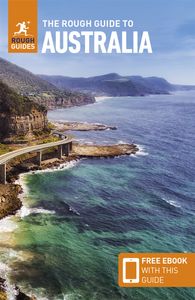
Find even more inspiration here

Planning your own trip? Prepare for your trip
Use Rough Guides' trusted partners for great rates

written by Andy Turner
updated 26.04.2021
Ready to travel and discover Australia?
Get support from our local experts for stress-free planning & worry-free travels.
- Where to stay
- Travel advice

The Ultimate Australian Outback/ Northern Territory Travel Itinerary
They say you haven’t been Down Under until you’ve been to the Outback , and after recently finishing a two week long Northern Territory trip – I would completely agree with that statement!
Known for its adventurous spirit, majestic landscapes, ancient Aboriginal history, and diverse Outback wildlife, the Northern Territory is a truly remarkable destination where travelers can see the real Australia for themselves.
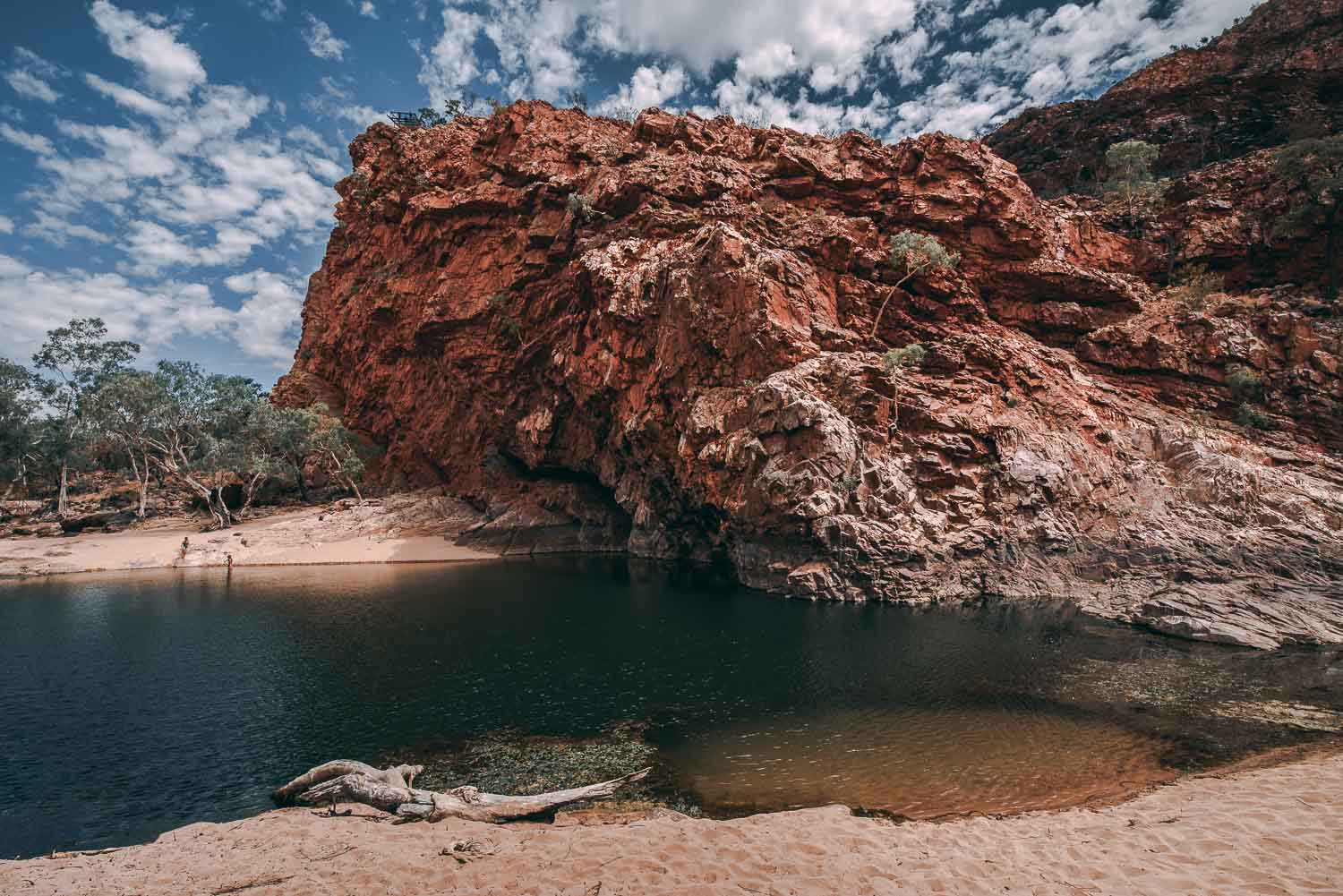
I’ve spent a lot of time traveling around Oz, and it’s easily one of my favorite countries in the world. From working my way down the coast from Cairns to Sydney , to road-tripping along the world famous Great Ocean Road, and taking selfies with native quokkas on Rottnest Island in Western Australia – I’ve explored many destinations that make this country a world-class tourism destination.
So I was unbelievably excited when I got invited to explore the Northern Territory for a couple weeks, and finally experience the famous “Australian Outback”. Take a read through my itinerary, browse through my photos, and feel free to reach out to me if you have any questions about traveling through this unique destination!
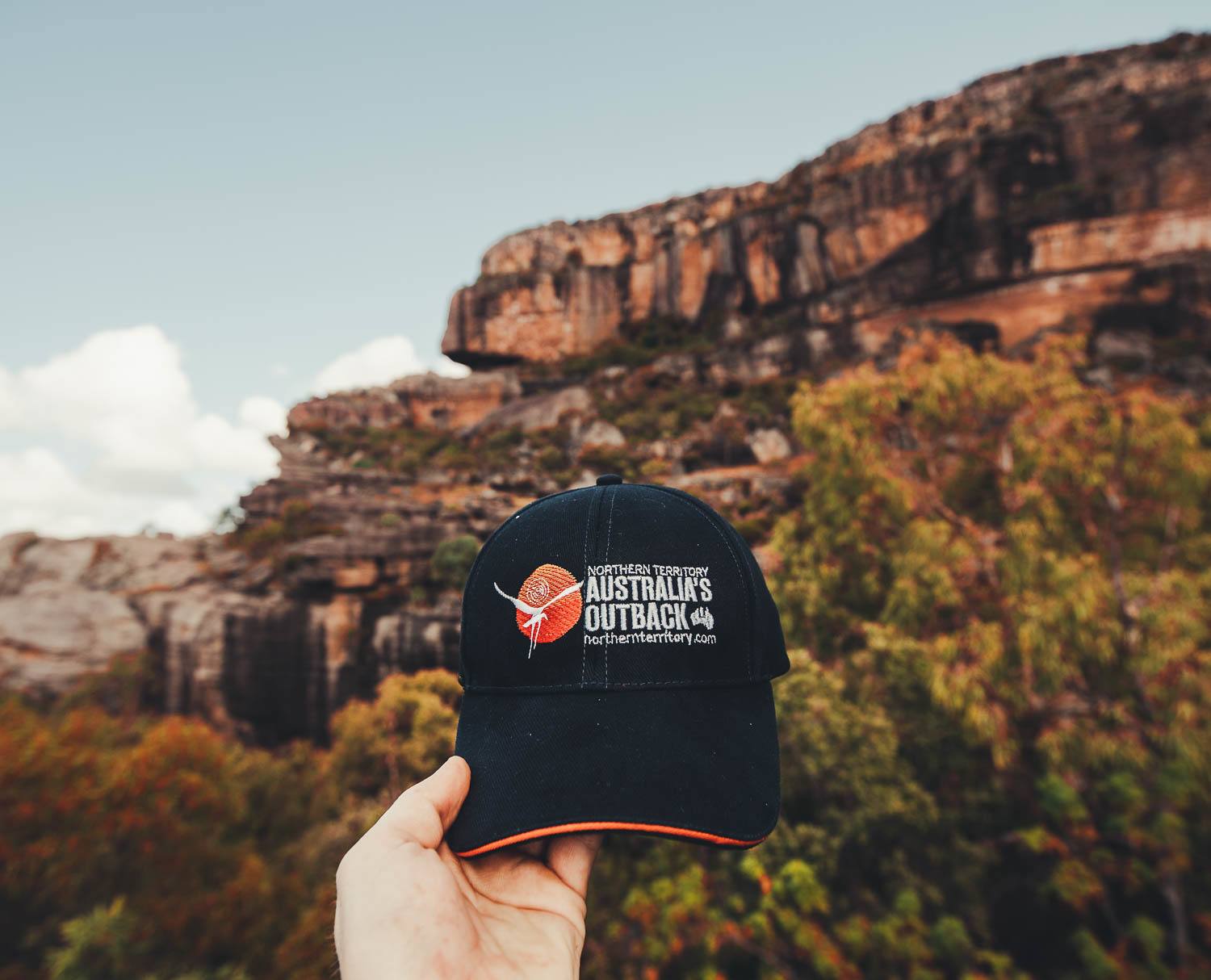
Organized Tour vs Rental Car
The first question of traveling through the Outback…
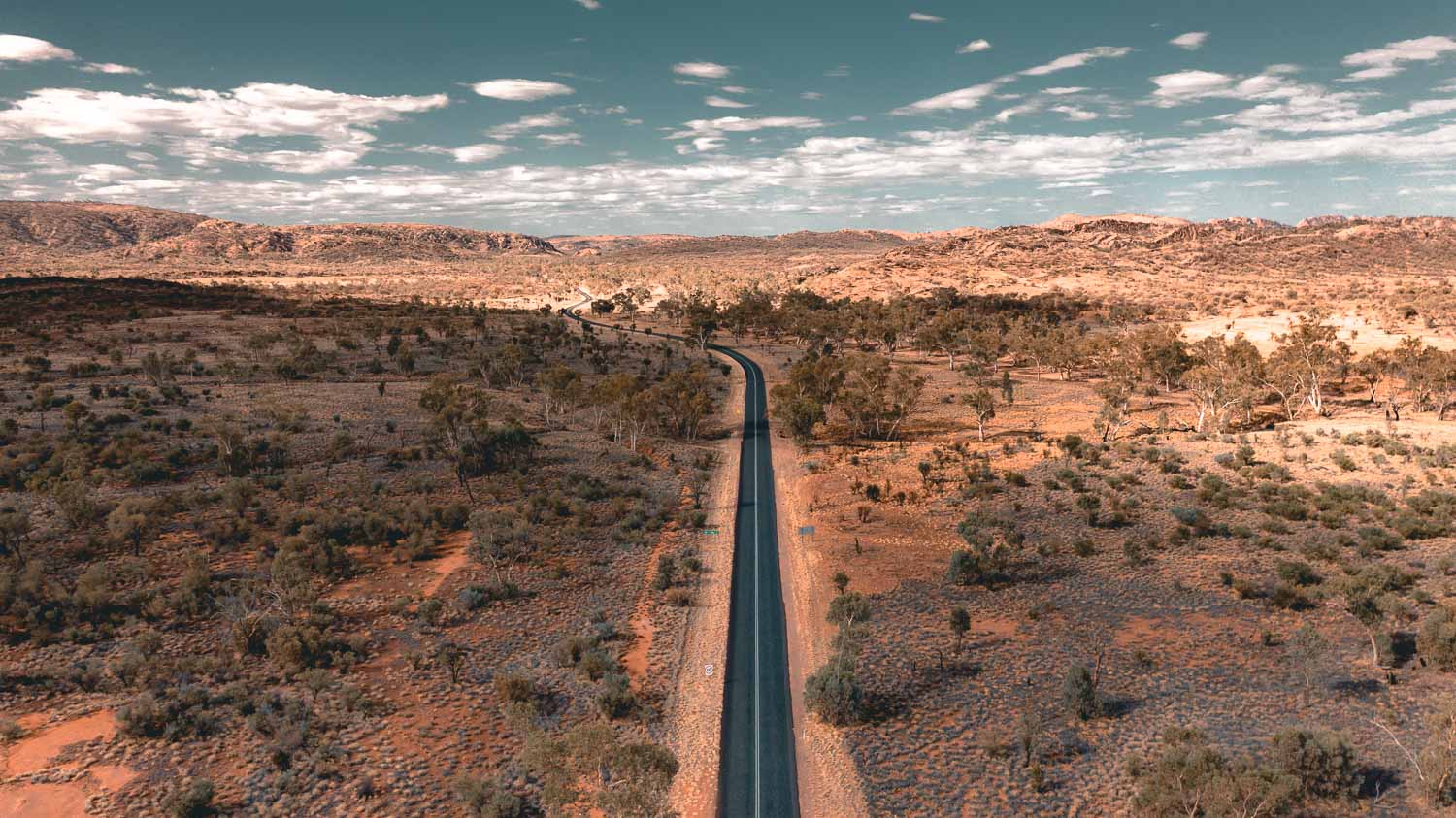
When I traveled through the Northern Territory I was on a press trip with the NT Tourism board , so everything was fortunately pre-arranged for me. If I was doing this trip on my own, I would be sure to pre-plan as much as I could before I arrived!
There are a huge number of tour groups you can book that head to the Northern Territory from all pockets of Australia, or alternatively, you can join one upon your arrival in the Outback. It’s entirely up to you. The benefit of traveling with a small group tour is that you not only have company, but everything is organized for you. It doesn’t matter if you overlook or forget something – everything is sorted out by the experts for you, and it usually works out to be much cheaper in the long run. You just have to sit back and enjoy the experience.
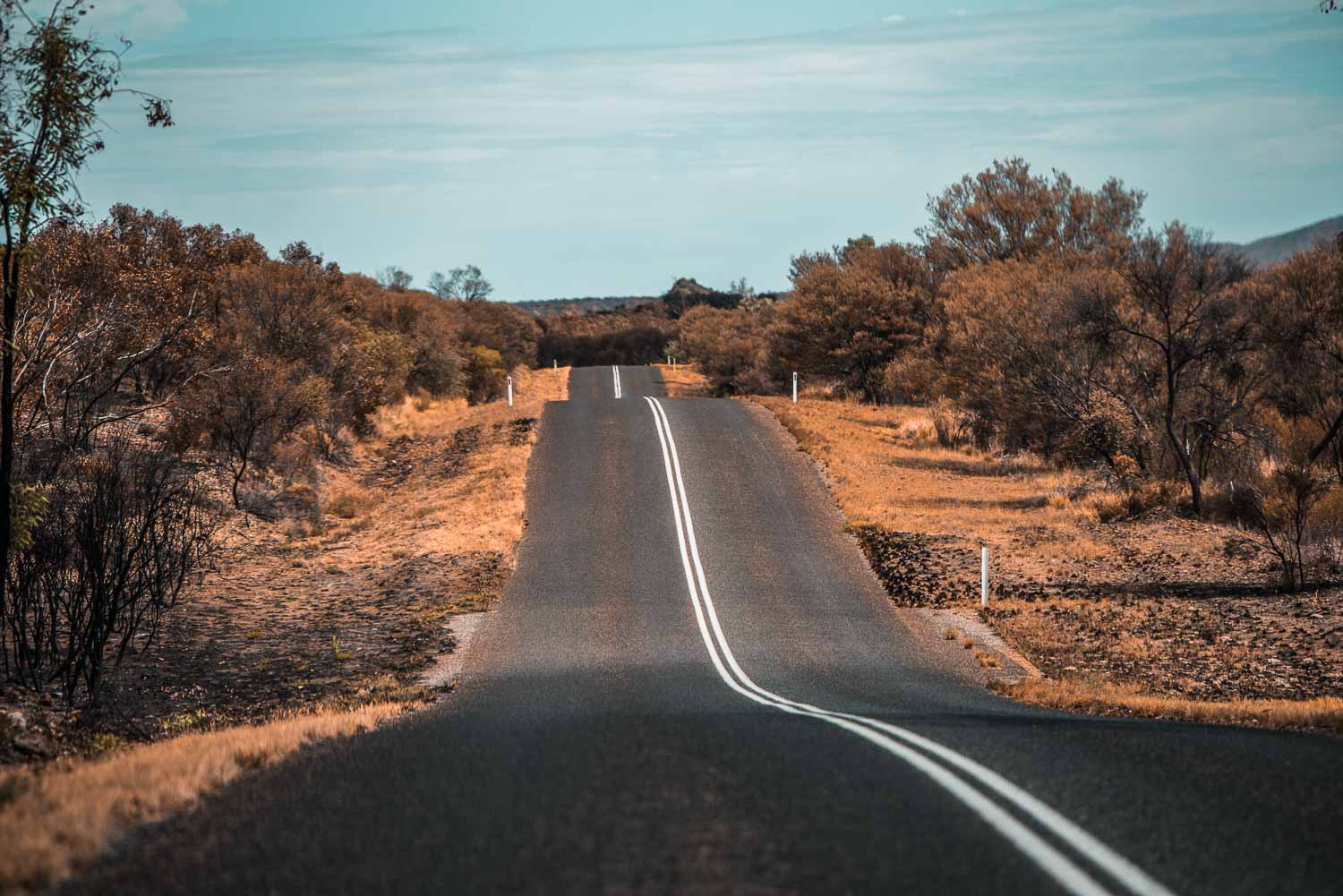
While group tours are perfect for many people, particularly solo travelers, others find a strict itinerary stifling or restrictive and would rather travel without these confines. Just remember, traveling in the Outback requires a fair amount of preparation and knowledge , and this remote area of the world can be dangerous.
Traveling with a friend or two is definitely better than traveling alone out here, and you can split the driving schedule between you – and the cost! There are many car rental companies with pick-up and drop-off locations in major locations within the Northern Territory. The best part is you can easily organize to pick up a car in Darwin, for example, and drop it off when you reach your location in Alice Springs. The NT is very well set-up for tourists, and should you need help, you can generally get it.
How you choose to travel through the Northern Territory is up to you. Just be safe, prepared and stocked up with all the essentials you will need if disaster strikes.
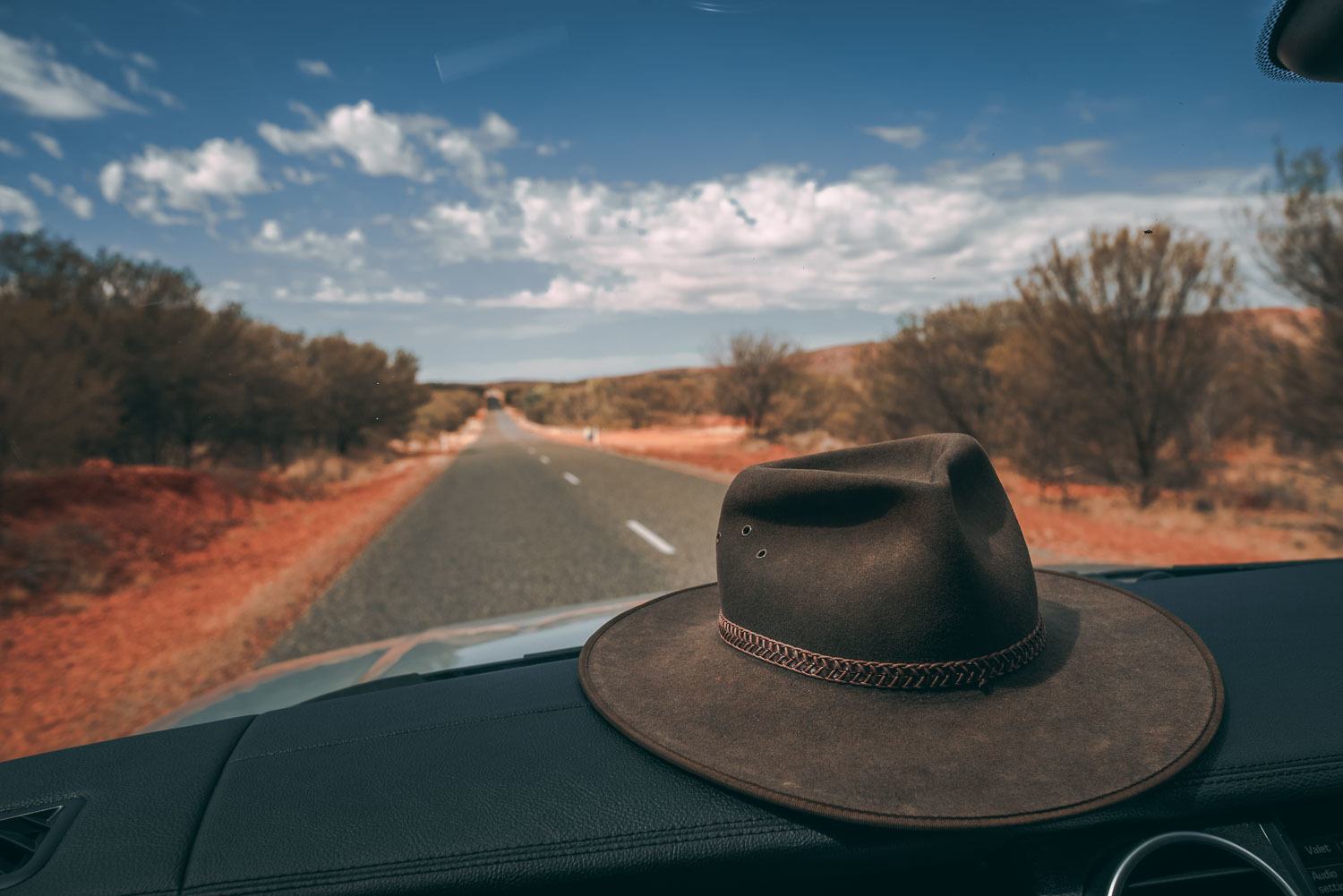
Now, on with my own NT experience…
Two-Week Northern Territory Itinerary
Days 1-2: arrive into darwin.
Welcome to the capital city of the Northern Territory – the perfect place to begin your Outback adventure. While it is the largest city biggest city in the Top End, I think it still boasts a very relaxing small-town vibe . Similar to most major destinations in Australia, Darwin has a very “liveable” atmosphere about it, which is something I’ve always loved about the country as a whole.
On this trip, I didn’t have all that much time to explore Darwin, but here are a few of the highlights which I think you MUST experience with if you have two days/nights to spend here.
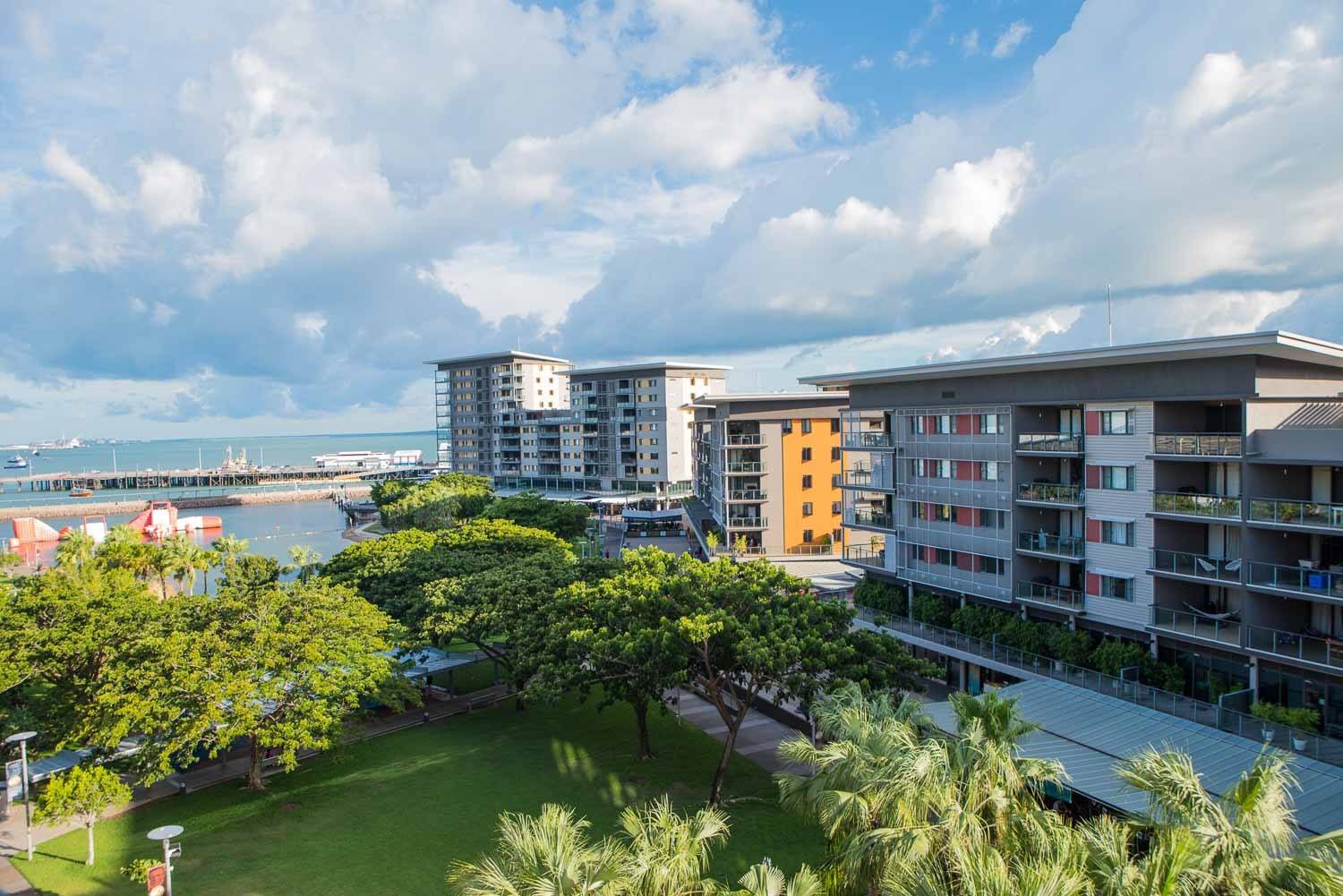
Crocosaurus Cove: Have you ever wanted to get up close and personal with crocodiles? Well, this is your chance! Even if you don’t want to enter the “ Cage of Death “, it’s still 100% worth a visit. They’ve got a really cool reptile area, a variety of marine life, and of course some massive crocodiles! You can even meet “Bert”, the famous crocodile from the Crocodile Dundee films!
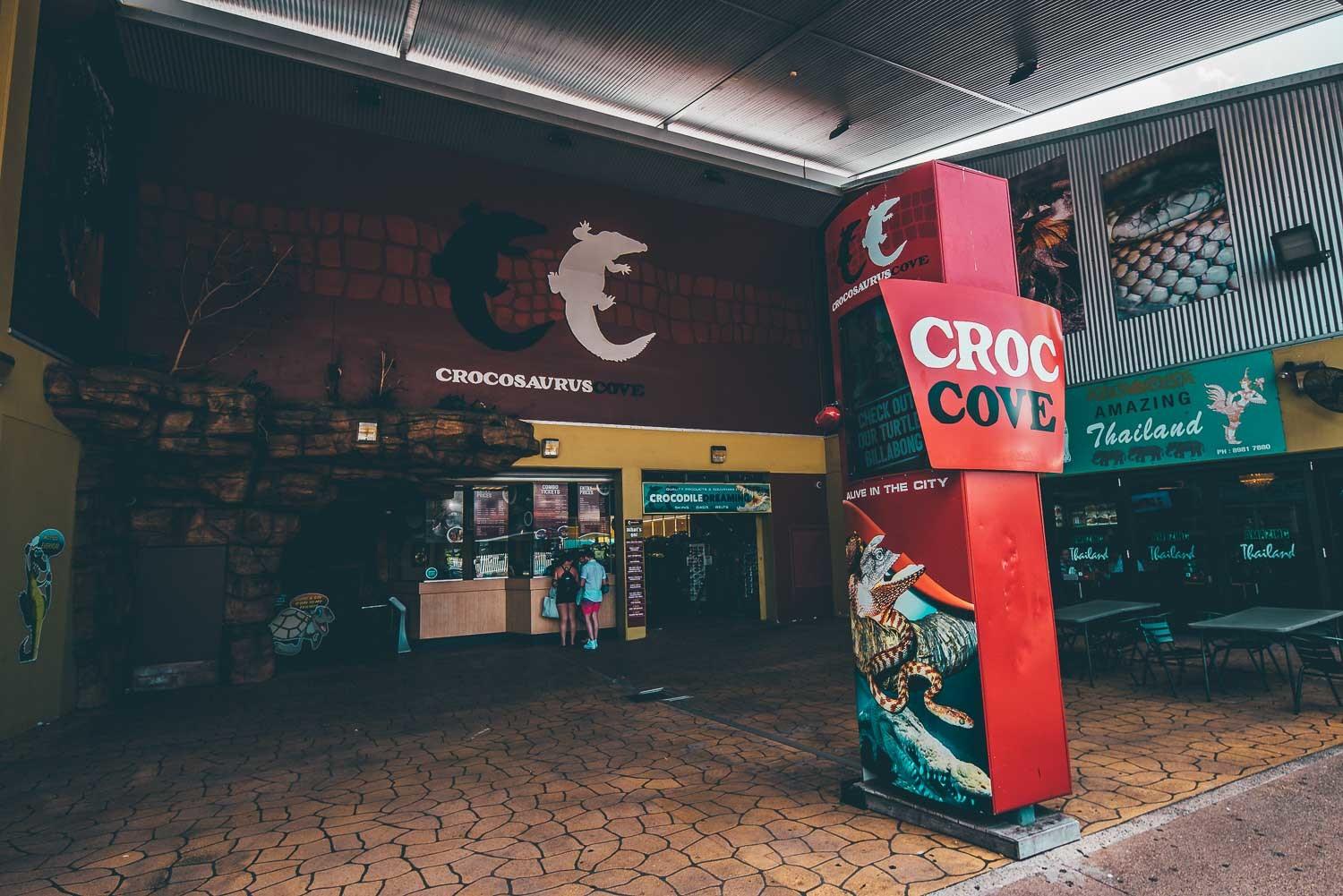
Explore the Darwin waterfront: Whether lazing on its man-made beach, taking a whirl in the wavepool, or enjoying an evening out at one of the many restaurants or bars, no visit to Darwin is complete without thoroughly exploring the waterfront area. It’s very well maintained, relaxing, and can provide the perfect escape for the tropical humidity.
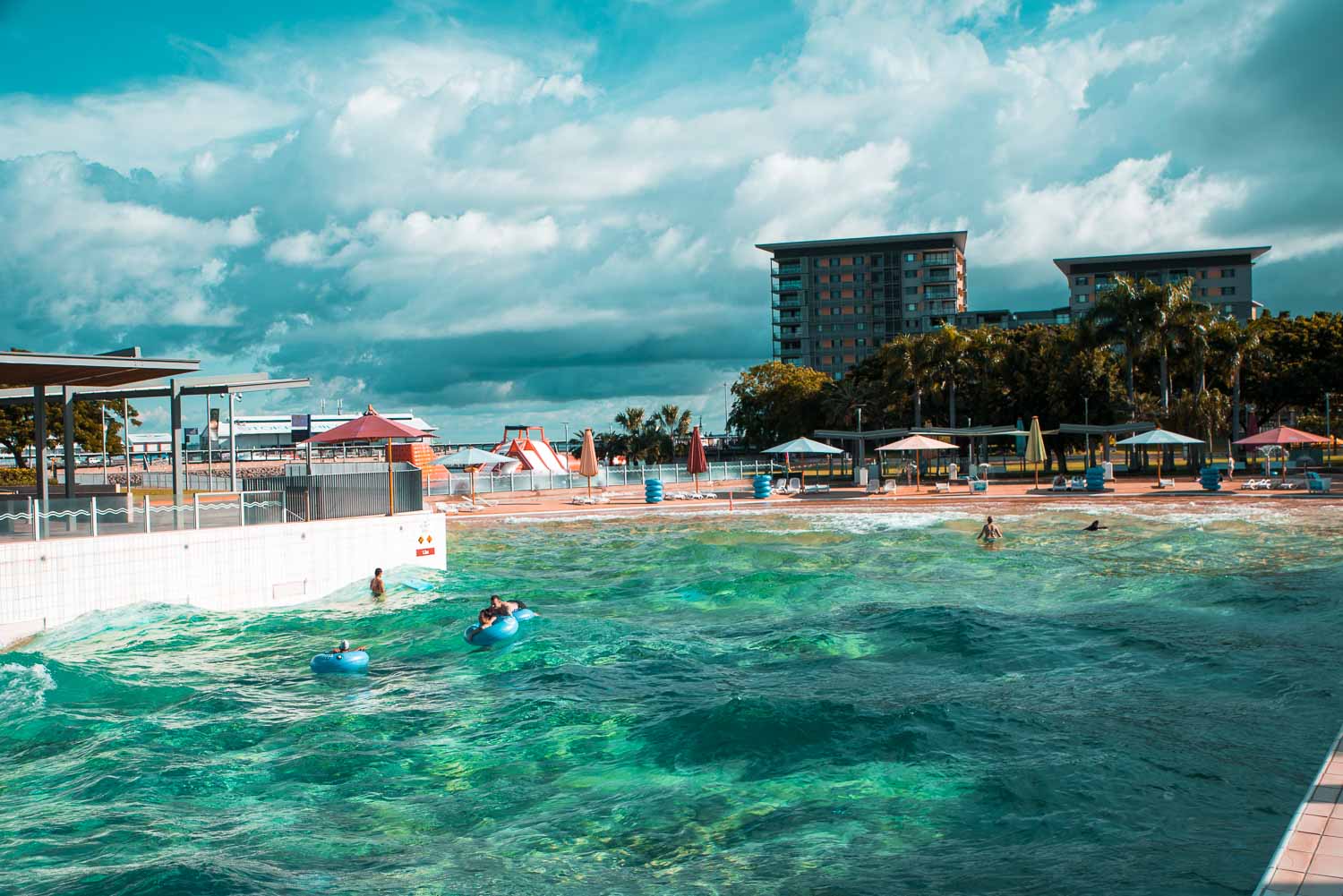
Visit fascinating museums: Did you know Darwin was heavily bombed during WW2? I had no idea before I visited, but there are some really interesting historical museums where you can learn all about it, As well as The Museum and Art Gallery of the Northern Territory .
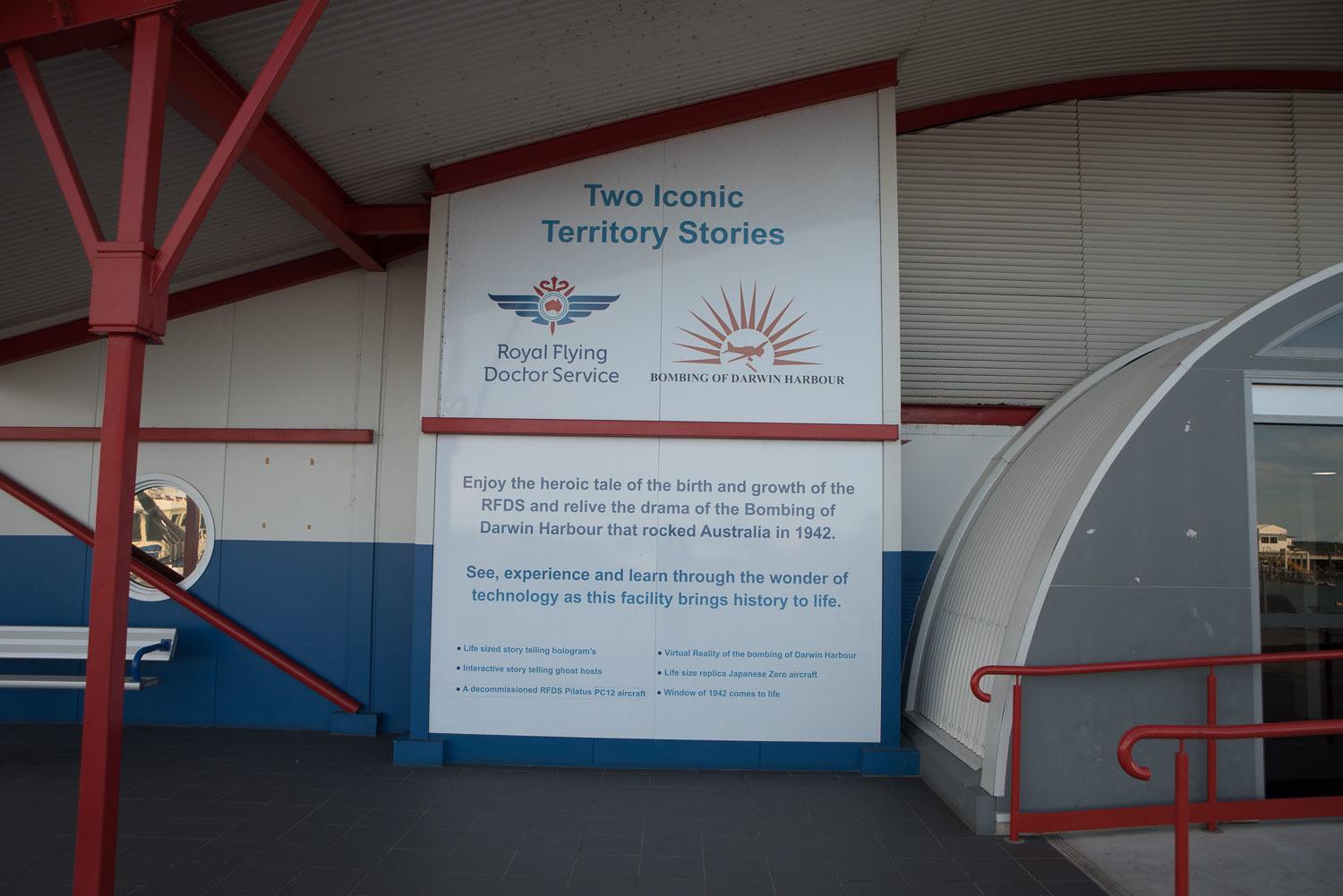
Mindil Beach Sunset Markets: Unfortunately when I visited Darwin these markets weren’t open, as they operate from the last Thursday in April until the last Thursday in October. However, I’ve heard this is a true highlight of visiting Darwin and a chance to pick up some special treasures. Definitely worth checking out if you’re in town!
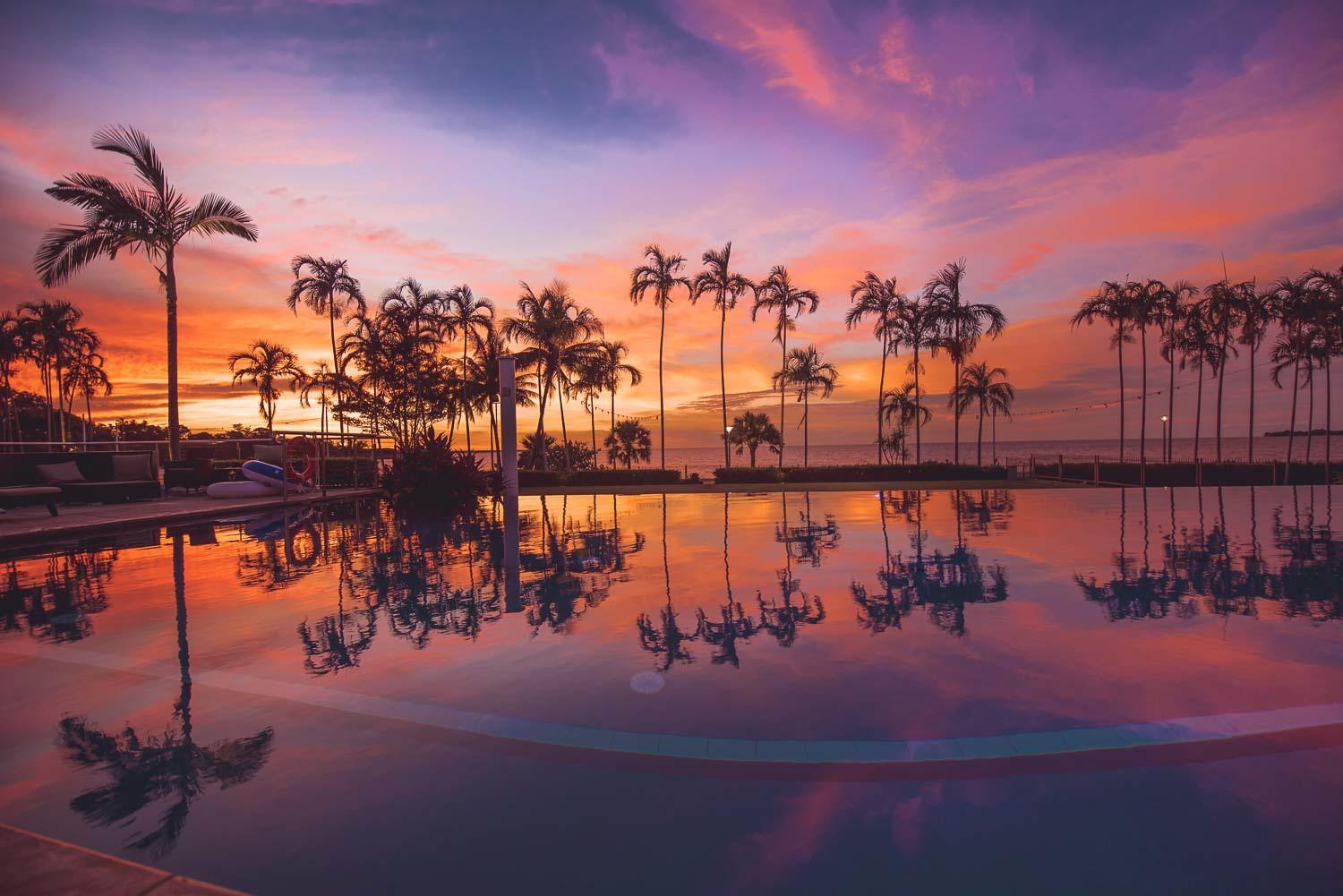
Where To Stay in Darwin…?
Skycity Darwin Casino & Hotel: This is where I was fortunate enough to stay my first night in Darwin, and I would highly recommend staying here. I was fortunate enough to have secured one of their patio suites that has direct access to the lagoon pool. It goes without saying, I thoroughly enjoyed that part in the intense Darwin heat. The entire property is gorgeous, the food was spectacular, and the rooms were unbelievably comfortable. Read Reviews & Check Availability .
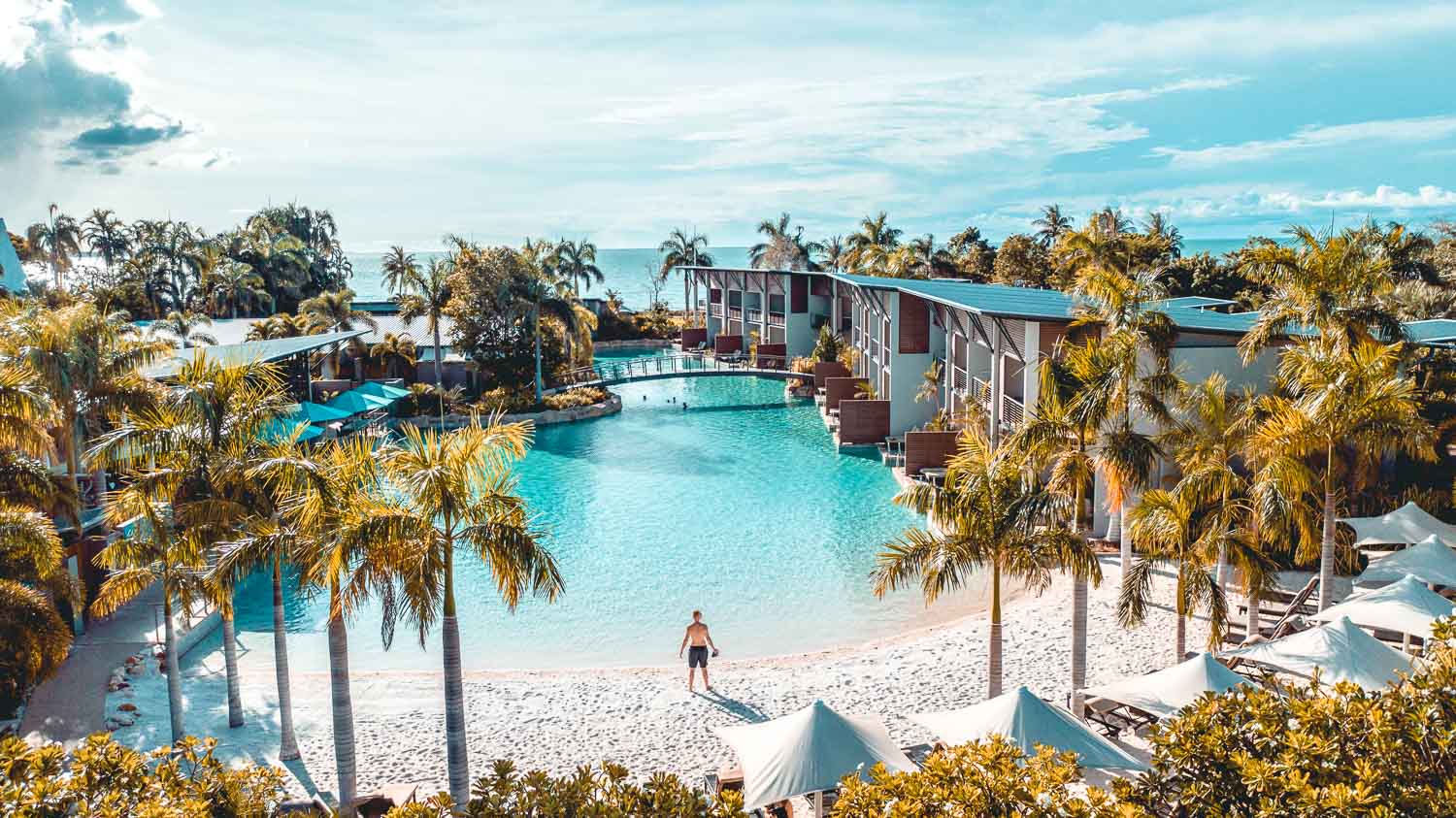
The Melaleuca – Darwin YHA Hostel – For all the budget travelers and backpackers out there, look no further than booking a couple of nights at the Melaleuca. I’ve always loved staying at YHA hostels in Australia, and their Darwin location is one of the top-rated accommodation options in the city. Rooms are affordable, the atmosphere is top-notch, and it’s perfectly located in the heart of the city!
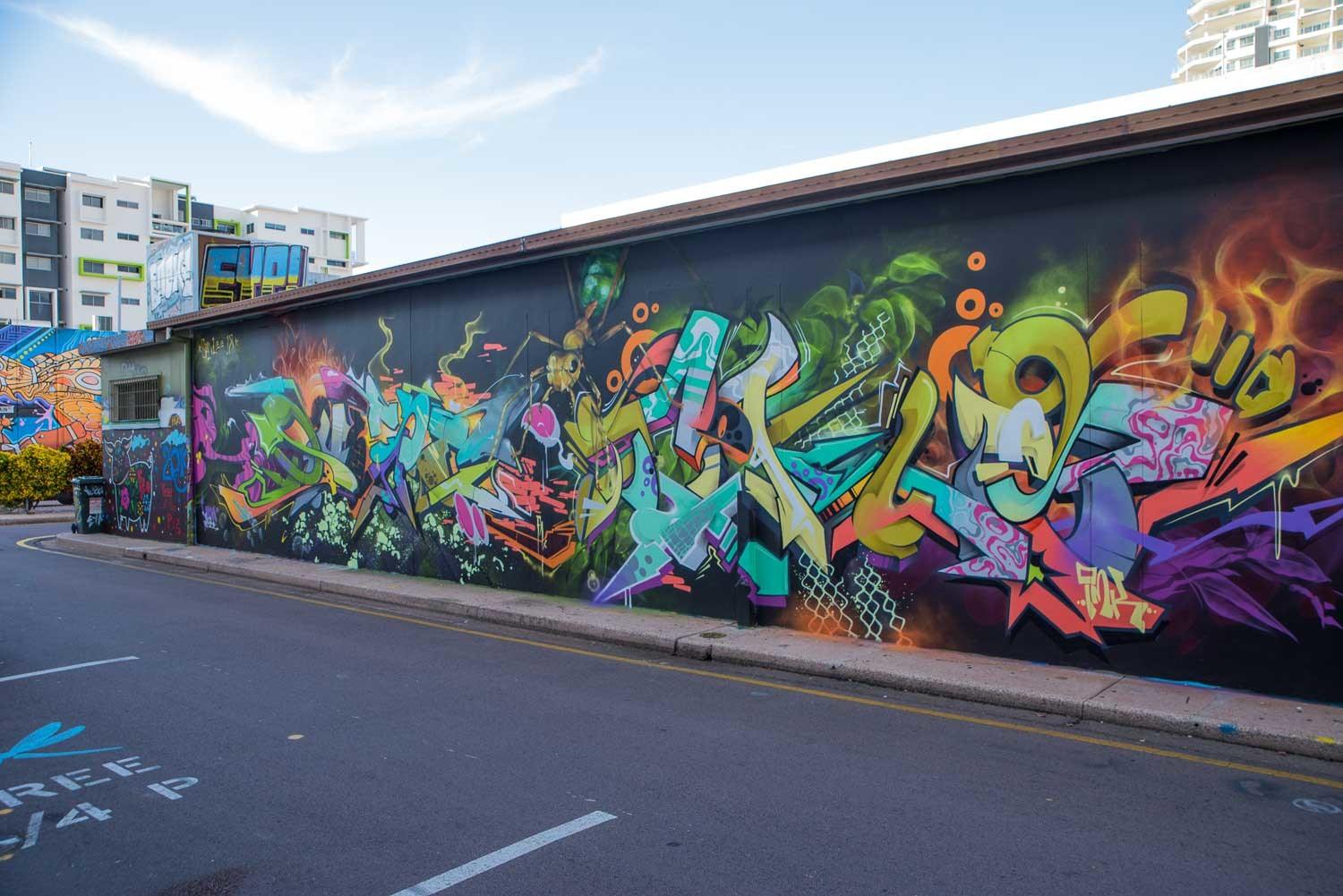
Days 3-4: Kakadu National Park
Covering nearly 20,000 square kilometers, Kakadu is the largest national park in Australia and an official UNESCO World Heritage Site. Famous for its ancient Aboriginal rock art, complex ecosystems, abundant wildlife, and colorful landscape, you could easily spend a week or two exploring Kakadu and still barely scratch the surface!
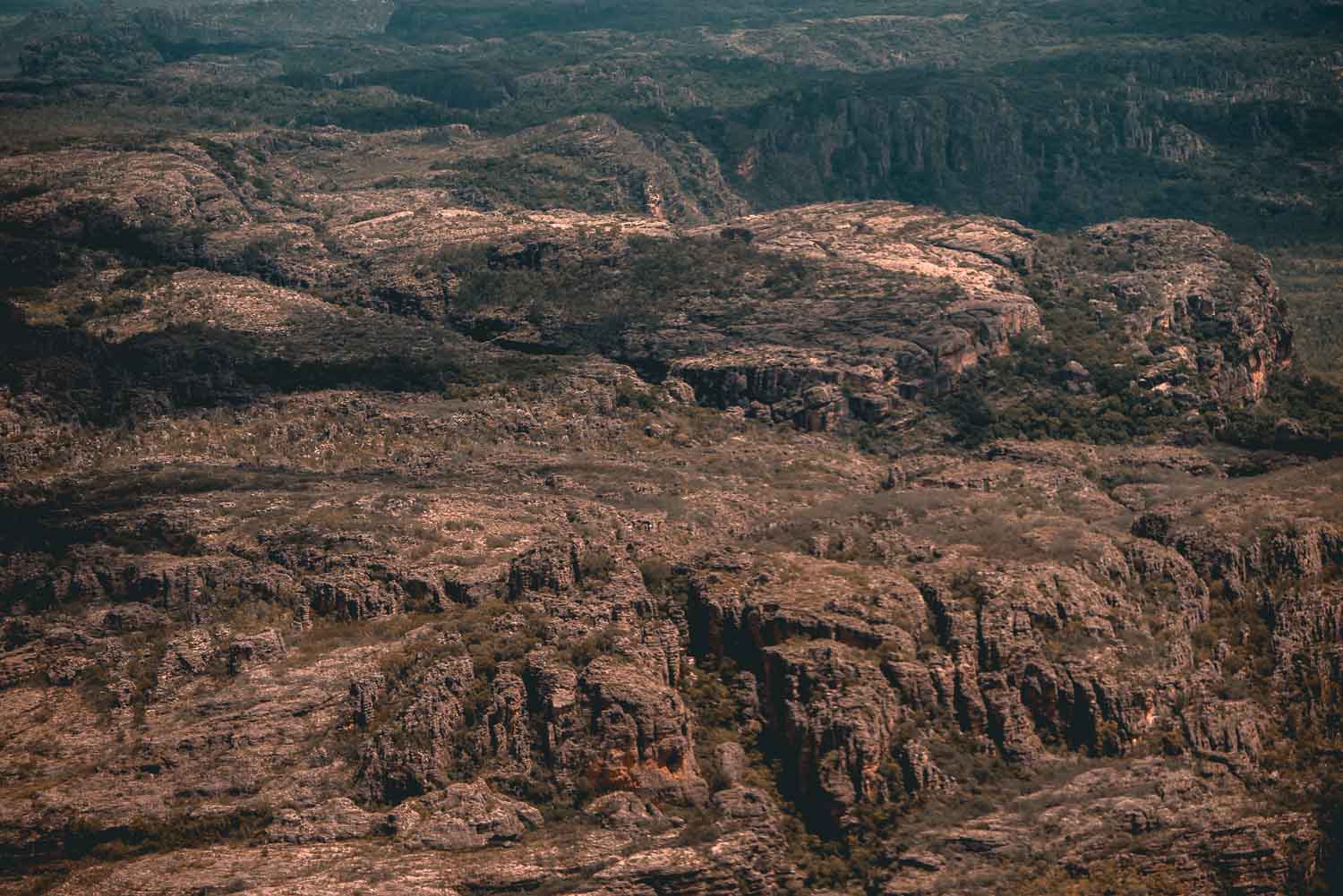
Kakadu is definitely one of the major highlights of visiting the Northern Territory, and a region that I look forward to returning to in the future, since we only got to spend one day there due to a missed flight and subsequent forced itinerary change.
“Kakadu offers many experiences: bush walking, bird watching, cruising and swimming under waterfalls to four-wheel driving, camping, scenic flights and wandering through galleries of Aboriginal art 20,000 years old.”
Check out this article on the Top 10 Things To Do in Kakadu National Park for more information. It’s important to note that self-guided visitors are required to purchase a park pass to enter Kakadu National Park. Passes cost $25.00 per adult, are valid for 7 days, and can be purchased online here .
While my time in Kakadu was limited, I loved checking out Nourlangie Rock. It’s home to some of the most famous and important Aboriginal rock paintings in the country and provides some epic views of the landscape.
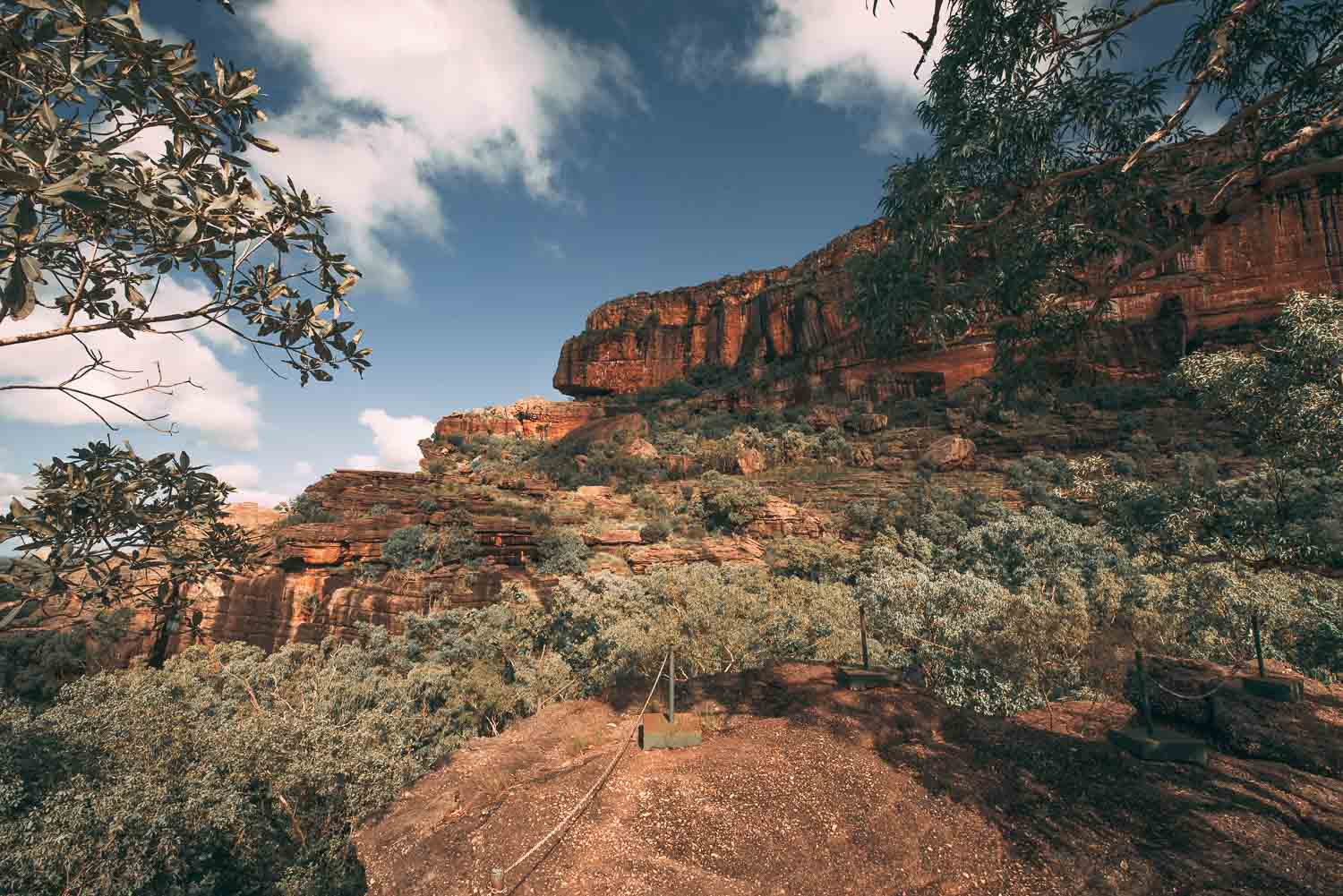
I do think that the best thing you can do in Kakadu National Park is to book a 30/60-minute scenic flight with Kakadu Air . While this activity isn’t for everyone (motion sickness and vertigo people should avoid), the aerial views of Kakadu are simply stunning. You can book a 30-minute scenic flight for only $150 AUD ($110 U.S.D), which I personally think is an amazing deal for this unforgettable experience. We ended up taking two scenic flights over Kakadu National Park (as they were charter flight transfers to Arnhem Land), and I would highly recommend it. It really gives you a bird’s eye perspective of how vast and unique this part of the world is!
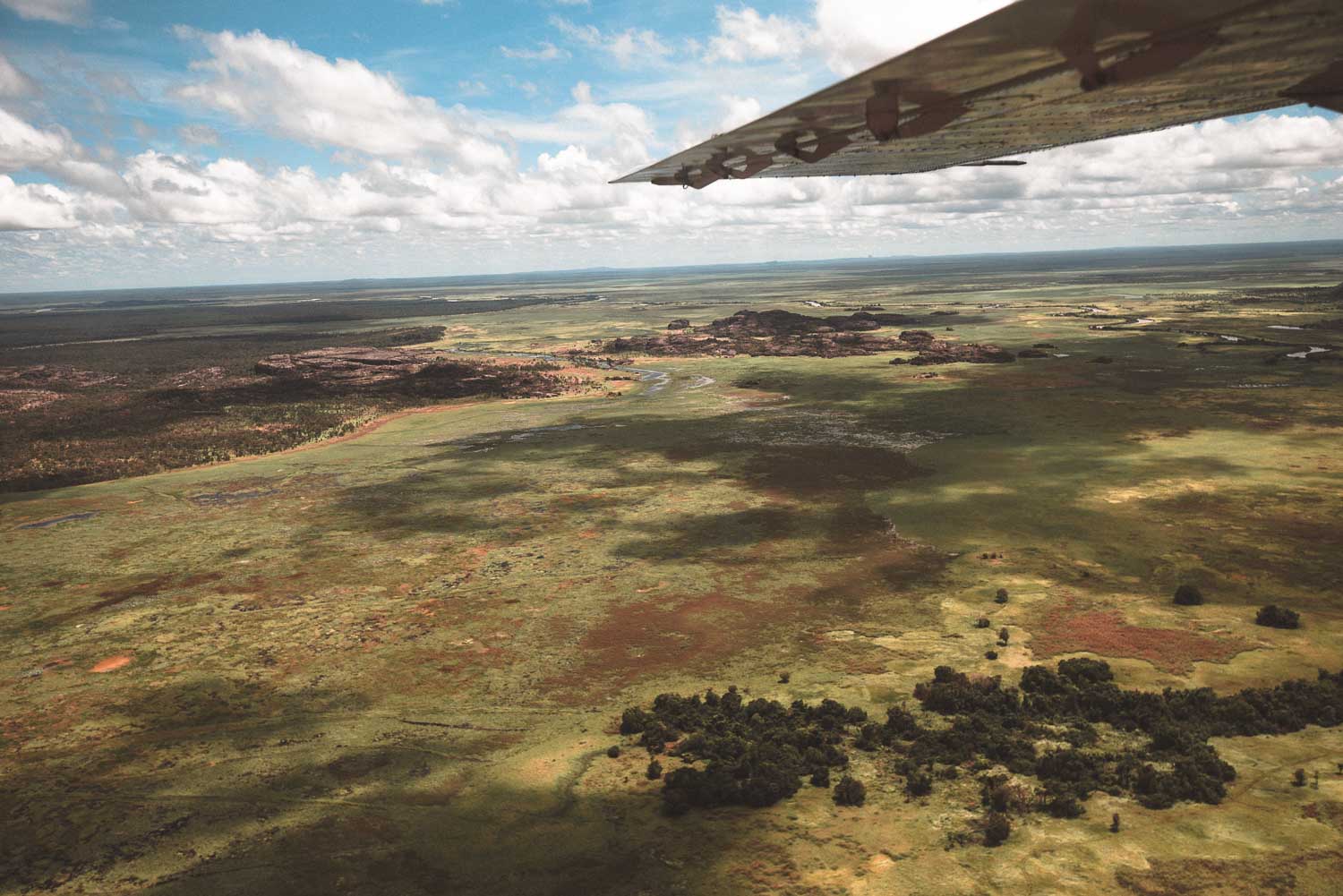
Days 5-7: Arnhem Wildlife Safari Adventure
Welcome to Australia’s Final Frontier…
Ohh, Arnhem Land — where do I even begin…?
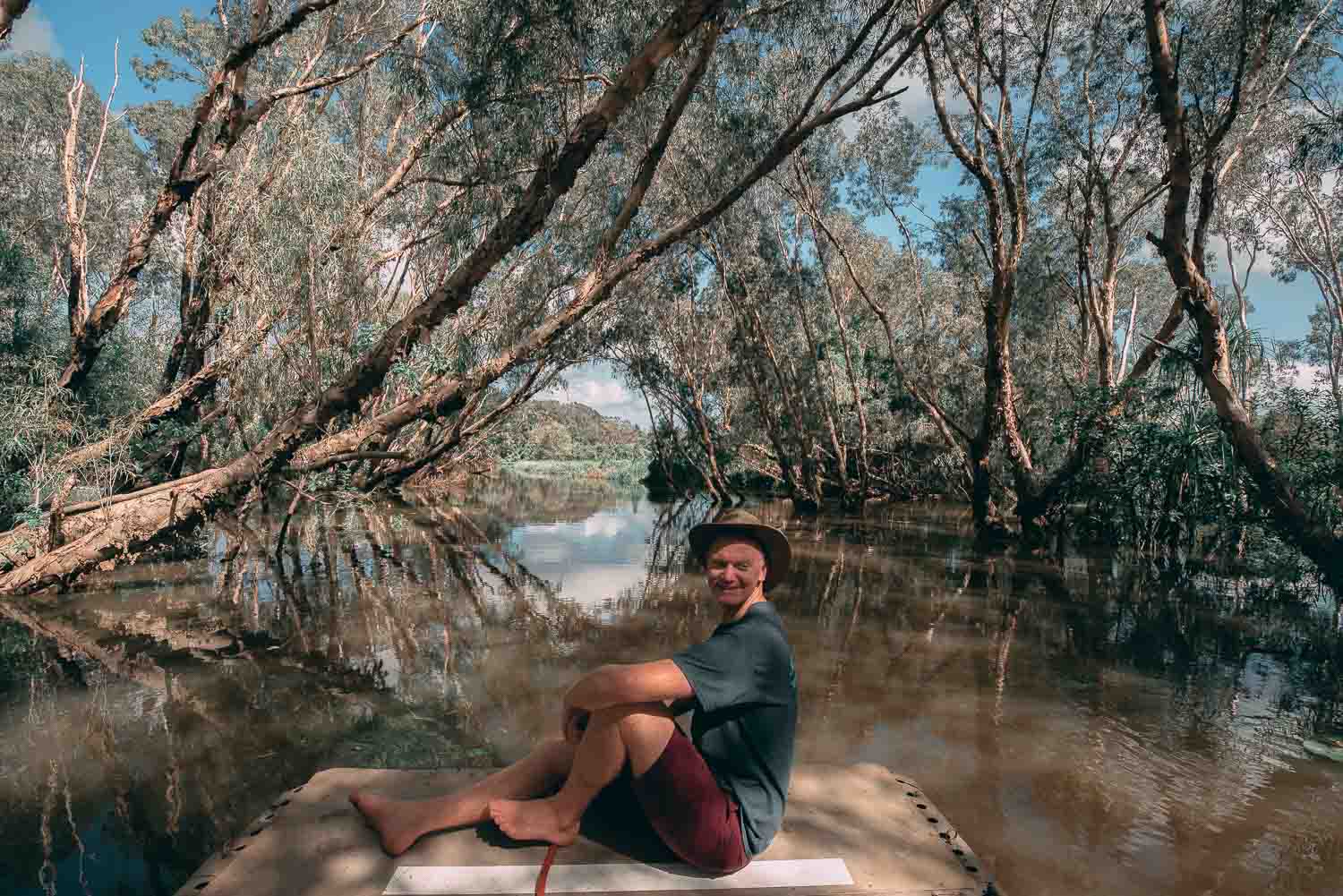
Well, I guess I should start by saying that this particular experience staying at Davidson’s Arnhemland Safari Lodge was definitely my favorite aspect of the entire trip in the Northern Territory – and that’s really saying something!
After all my time spent living and traveling around Australia a few years back, I had somehow never heard of this remote Outback region. I had no idea what to expect, but it really did leave a strong impression on me.
Everything from the scenic private charter flights we took to get there, 4WD Jeep adventures, mangrove boat rides, cozy glamping huts, delicious food, passionate tour guides, and starry night skies all made this experience truly unforgettable.
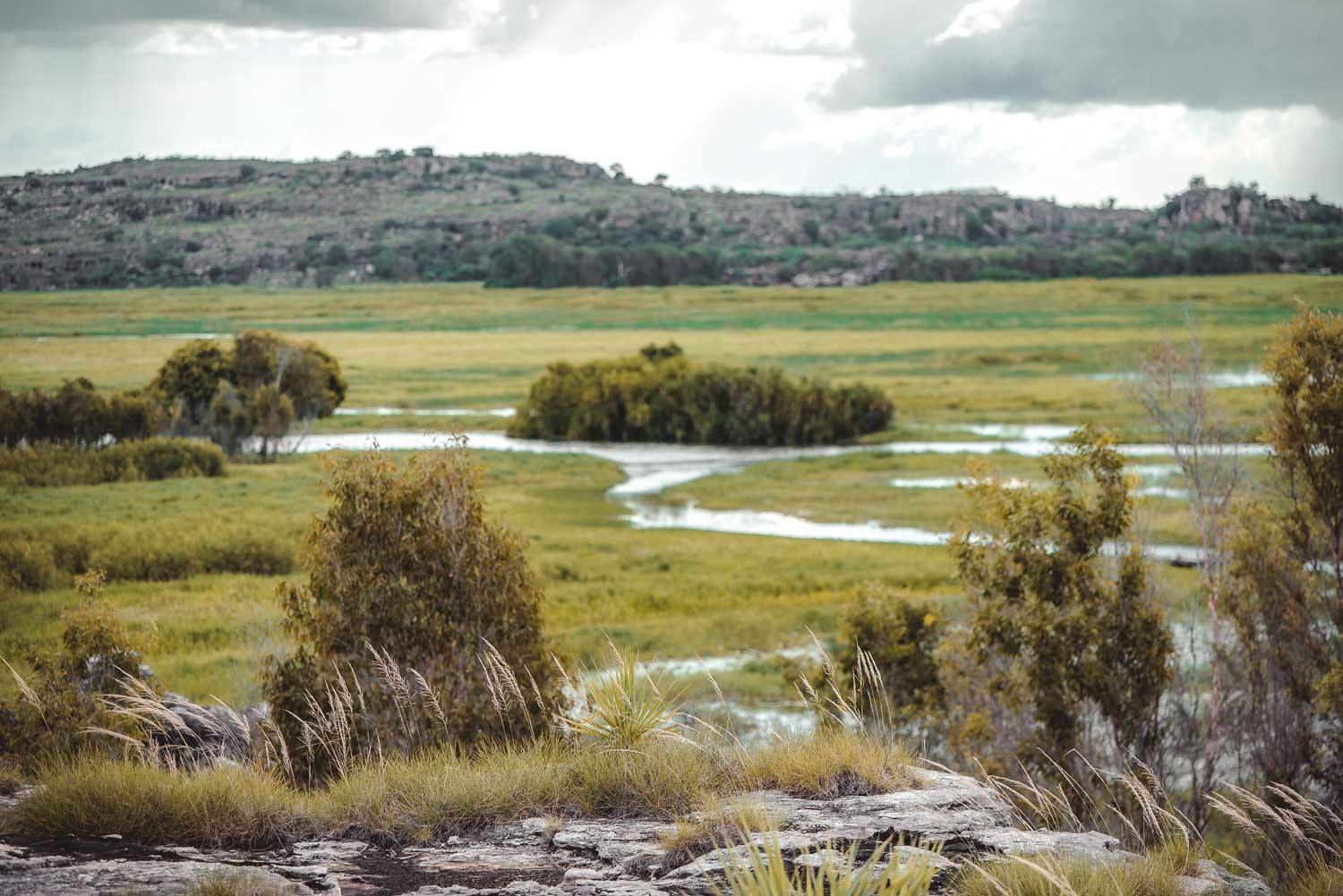
There’s a whole lot more I could say about this experience, but I’ll let my photos do the talking for me. While it certainly is an expensive adventure, it’s worth every damn penny. Trust me.
I really think that no trip to the Northern Territory is complete without booking a wildlife safari through Arnhem Land, but I understand that might be difficult for some, as it’s quite an expensive activity and not necessarily doable for those traveling on a shoestring. A round-trip airfare costs $500 AUD per person (leaving from Jabiru Airport), and the safari costs $900 per person/per night for this all-inclusive experience. Save up your hard-earned cash for this one!
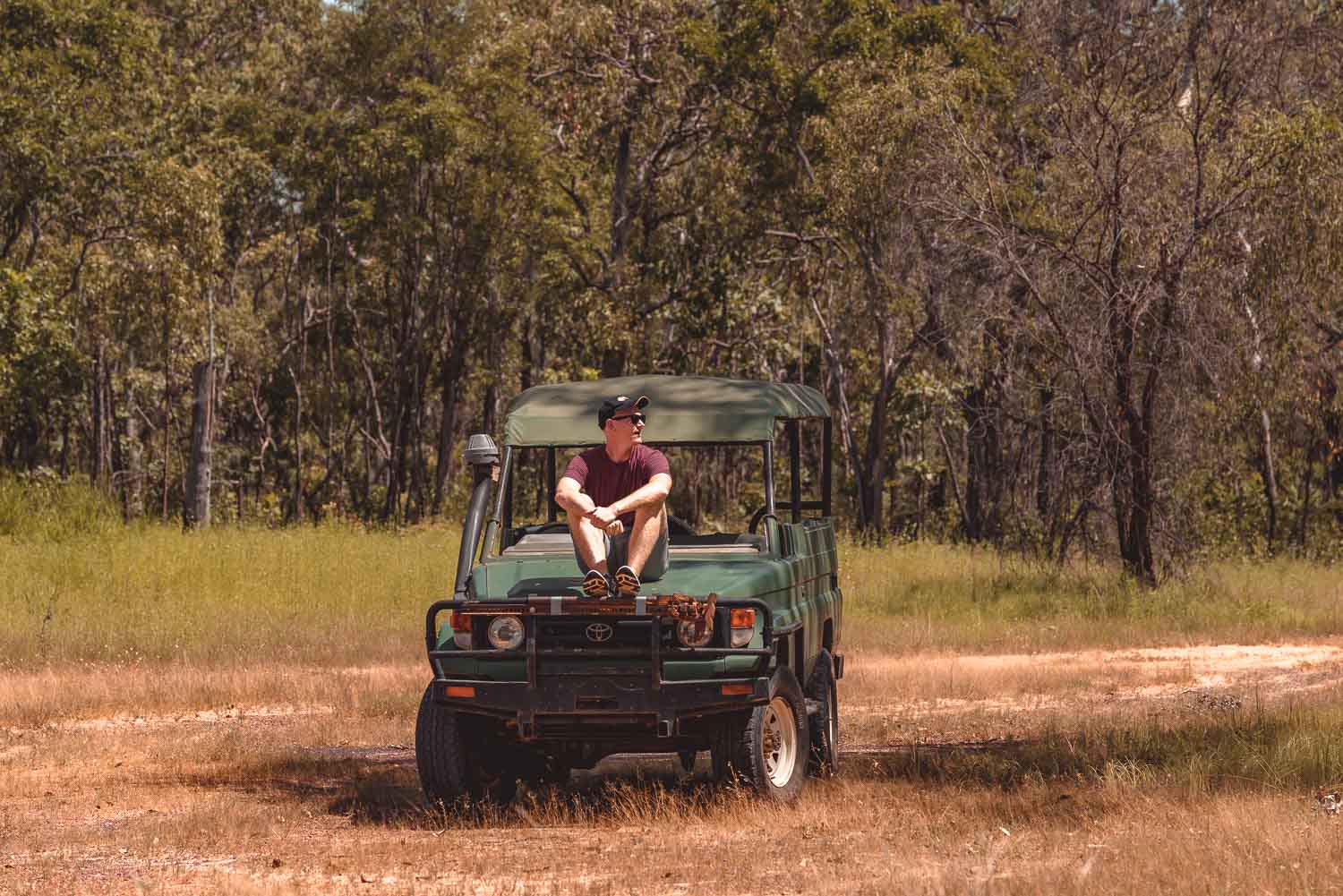
Days 8-9: Katherine Gorge & Hot Springs
After arriving back from Arnhem Land, it’s time to make the long yet scenic drive down to the small town of Katherine. There’s pretty much only one reason to visit this tiny Outback town though, and that’s simply to marvel at the majestic Katherine Gorge, which is well worth the drive!
Before soaking up those gorgeous views though , make a quick stop at the Katherine Hot Springs for a refreshing morning swim. This place is as relaxing as it is beautiful, and the water could not feel any more perfect, especially amidst the harsh NT heat.
Important Note – The hot springs are typically open March/April through the end of the dry season (October/November)! Make sure you do your research beforehand to make sure you can go visit them during your trip!
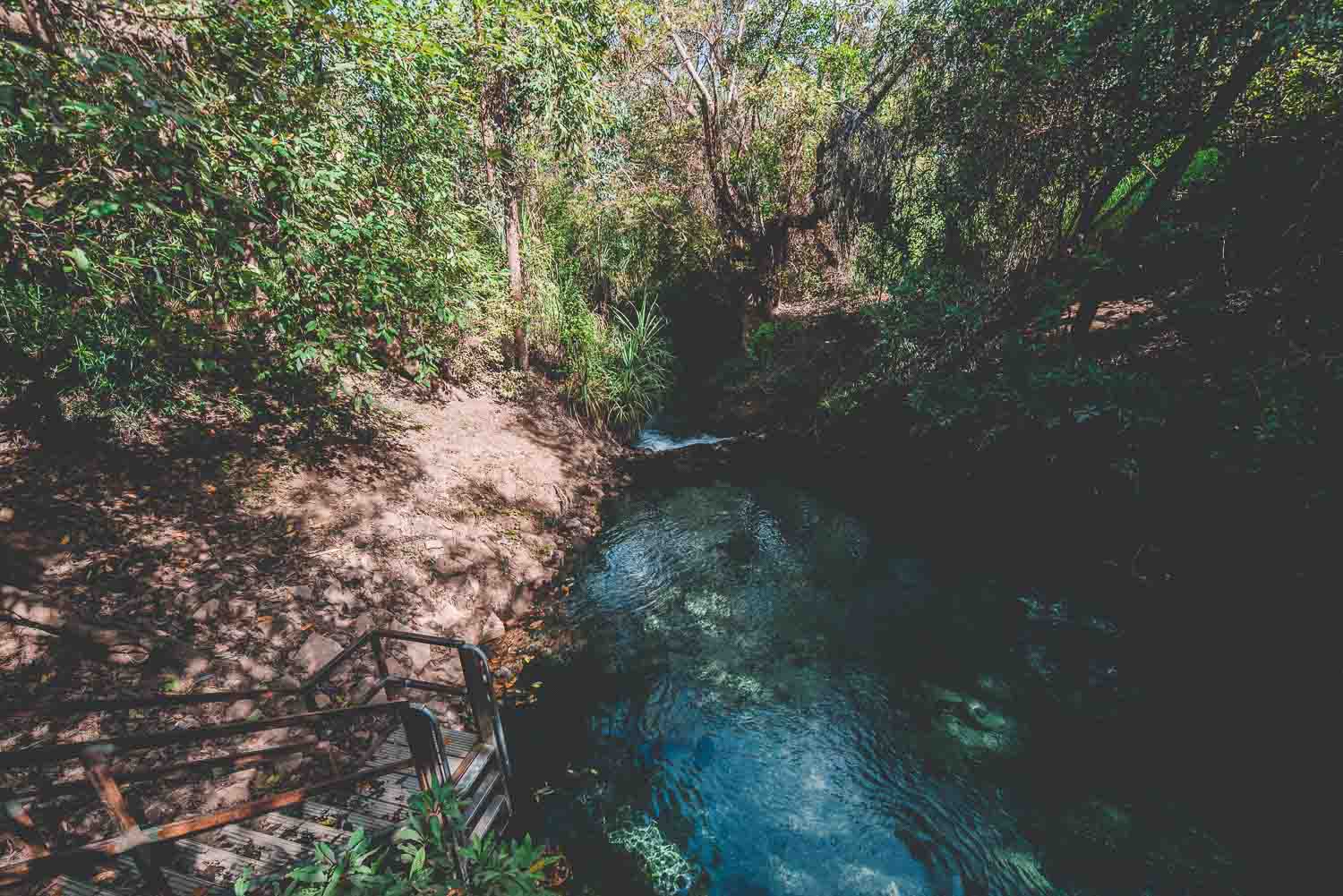
Katherine Gorge Lookout
Now that you’re feeling all relaxed after a hot springs session, it’s time to put your muscles to work and hike to the peak of this stunning lookout overlooking a section of the Katherine Gorge. The trail is a bit steep, and you’ll be sweating up a storm in the humidity, but it’s definitely a spectacular view and worthy of some envy-inducing snapshots to show the folks back home. Just be sure to wear your best walking or hiking shoes.
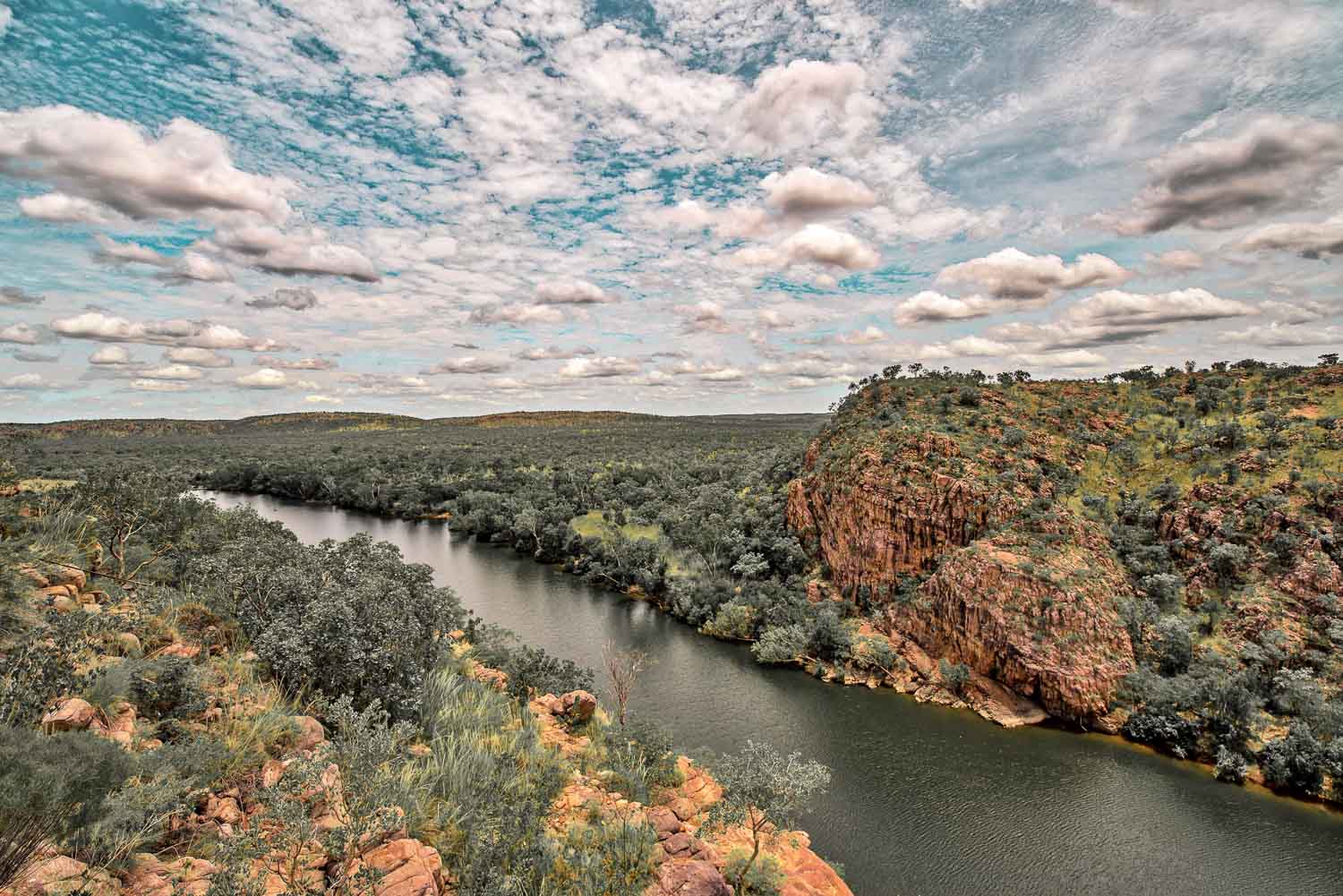
Katherine Gorge River Cruise
Located in the Nitmiluk National Park, the Katherine Gorge is actually a network of 13 separate gorges carved out by the Katherine River. It has a deep significance for the local Jawoyn people , which you’ll learn all about during your 2-3 hour cultural cruise.
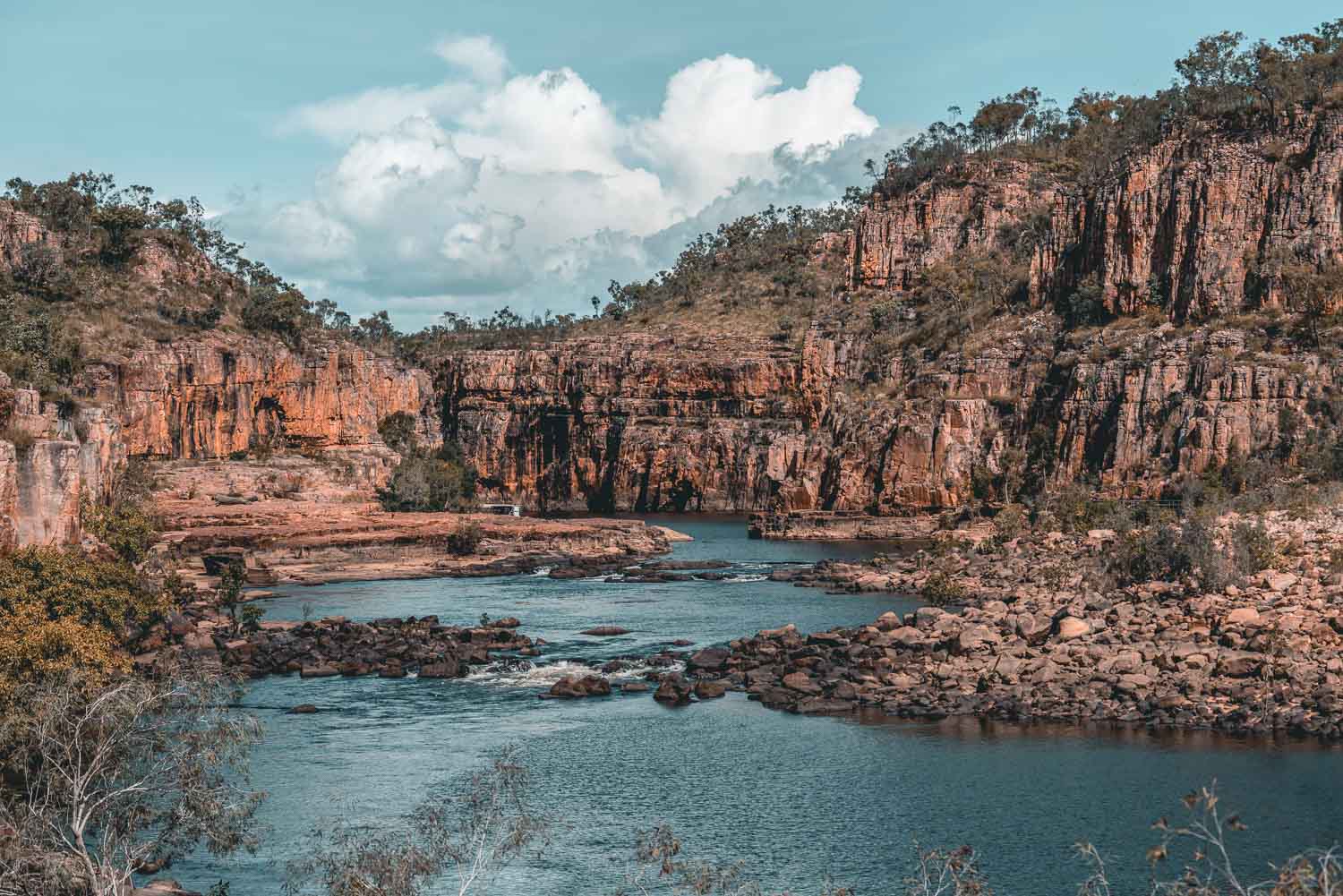
All I have to say is… WOW! This place is indescribable, and I definitely wasn’t ready for my time here to end. As our boat slowly cruised up and down the river, I was in a complete state of awe gazing up at the towering gorge walls surrounding us. It’s hard to explain, but Katherine Gorge is one of those places where pictures just won’t do it justice. Having seen it for myself, I now consider it to be one of Australia’s must-see natural landscape sites.
Since we traveled during the off-peak season, we only had access to two of the gorges, but I guess that just gives me a decent excuse to return in the future and experience this breathtaking location all over again. I’d love to witness Katherine Gorge during the peak of the wet season, where the walls are awash with natural waterfalls.
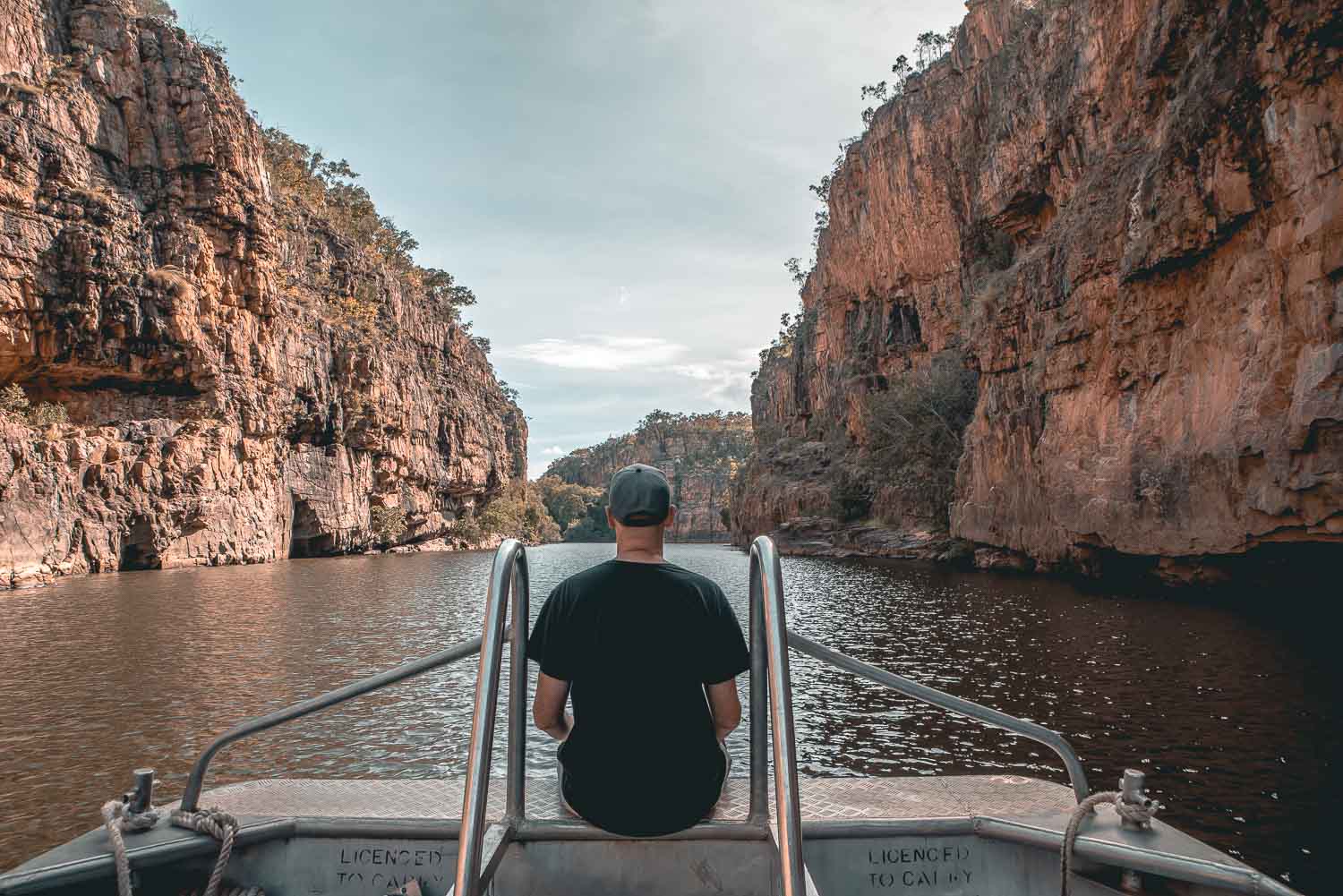
Where to Stay in Katherine
Knotts River Crossing : This is where we stayed for our two-night stay, and it’ll provide everything you need for a comfortable stay. While it may not be the fanciest or luxurious, it’s budget-friendly and has an awesome pool that will certainly come in handy. Also, the food (*cough* dessert) at the hotel restaurant is spectacular!
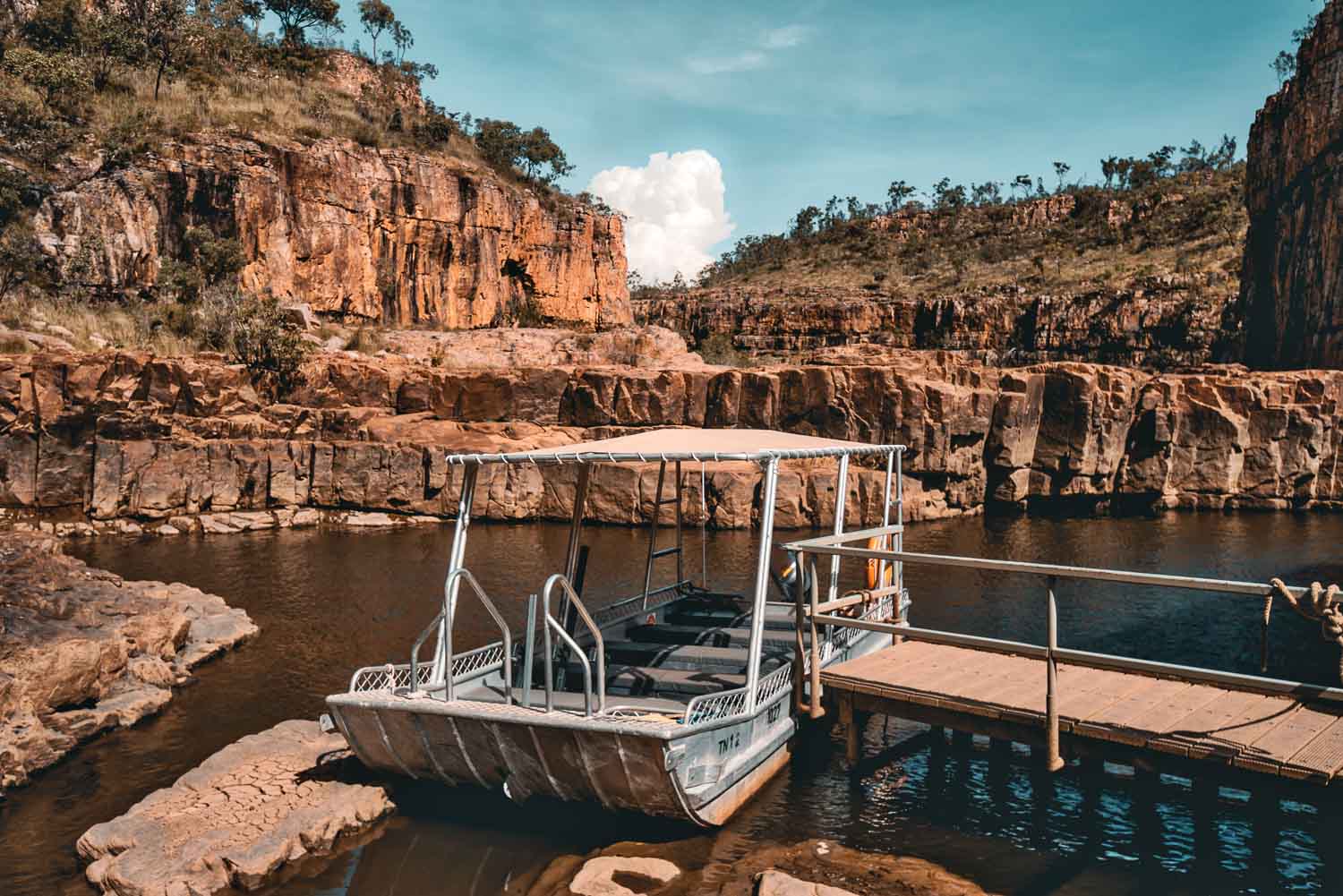
Day 10: Edith Falls & Drive Back to Darwin
The next (and final) location I’d visit on this Northern Territory itinerary was Alice Springs, but that was a 14-hour drive from where I was, so instead, I headed back to Darwin and booked a flight instead.
On the journey back to Darwin, there’s a popular spot called Edith Falls, and it’s the perfect place to spend a day of hiking, exploring, and lots of swimming. It is super picturesque, and the water provides a much needed escape from the humidity of the Top End.
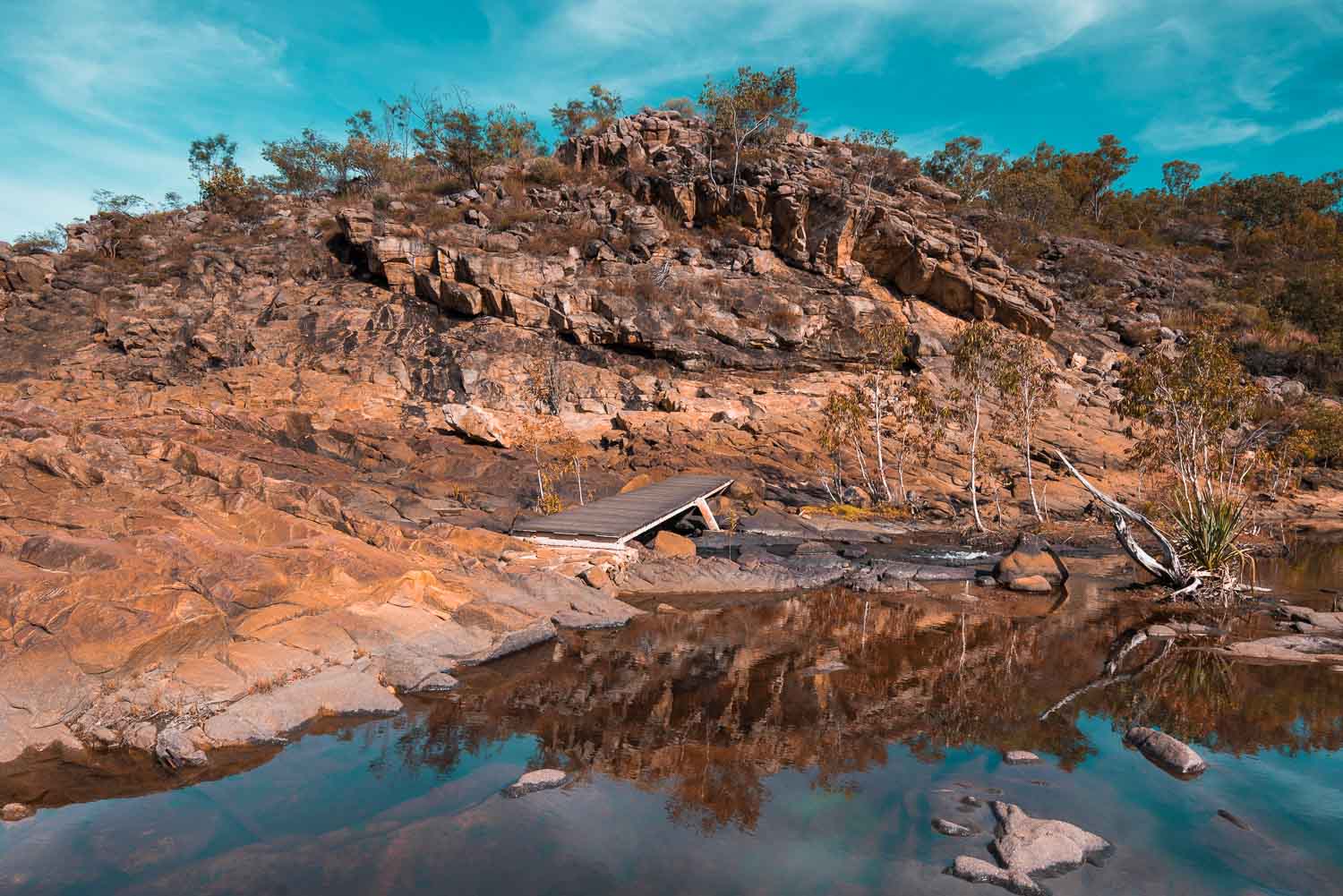
“The area is great for bushwalking with the 2.6 kilometre Leliyn Trail offering a challenging walk along a steep, rocky loop. There is a chance for a refreshing swim in the upper pool of Leliyn / Edith Falls halfway around the trail. You can also enjoy the longer 9 kilometre return walk to Sweetwater Pool, a tranquil swimming hole. Leliyn / Edith Falls is the finishing point of the 62 kilometre Jatbula Trail walking track, which begins at Nitmiluk National Park (Katherine Gorge).” – Northern Territory Tourism
Our group was a bit short on time, so we only spent an hour around the Falls, but you could honestly spend all day there if you have the opportunity. If you get up early enough, you could also hit up Litchfield National Park on the way back to Darwin – another amazing spot in the Northern Territory. I sadly didn’t get the chance to visit during my two week trip, but it looks unmissable.
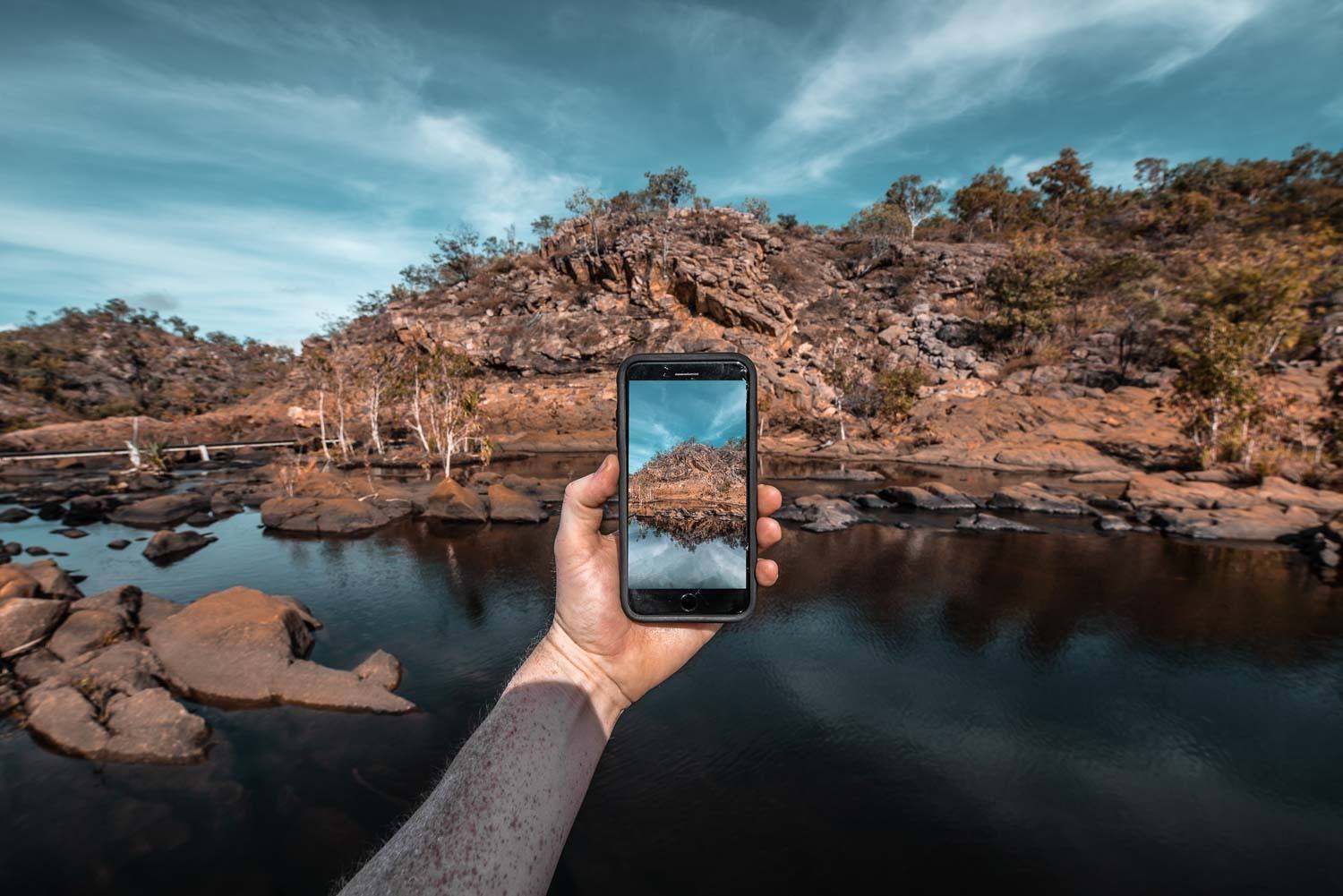
Days 11-14: Alice Springs
After a relatively quick, scenic flight from Darwin to Alice Springs (seriously, snag yourself a window seat for this one), we arrived in the heart of the ‘Red Centre’ of Australia, and the final destination on my Northern Territory Outback itinerary.
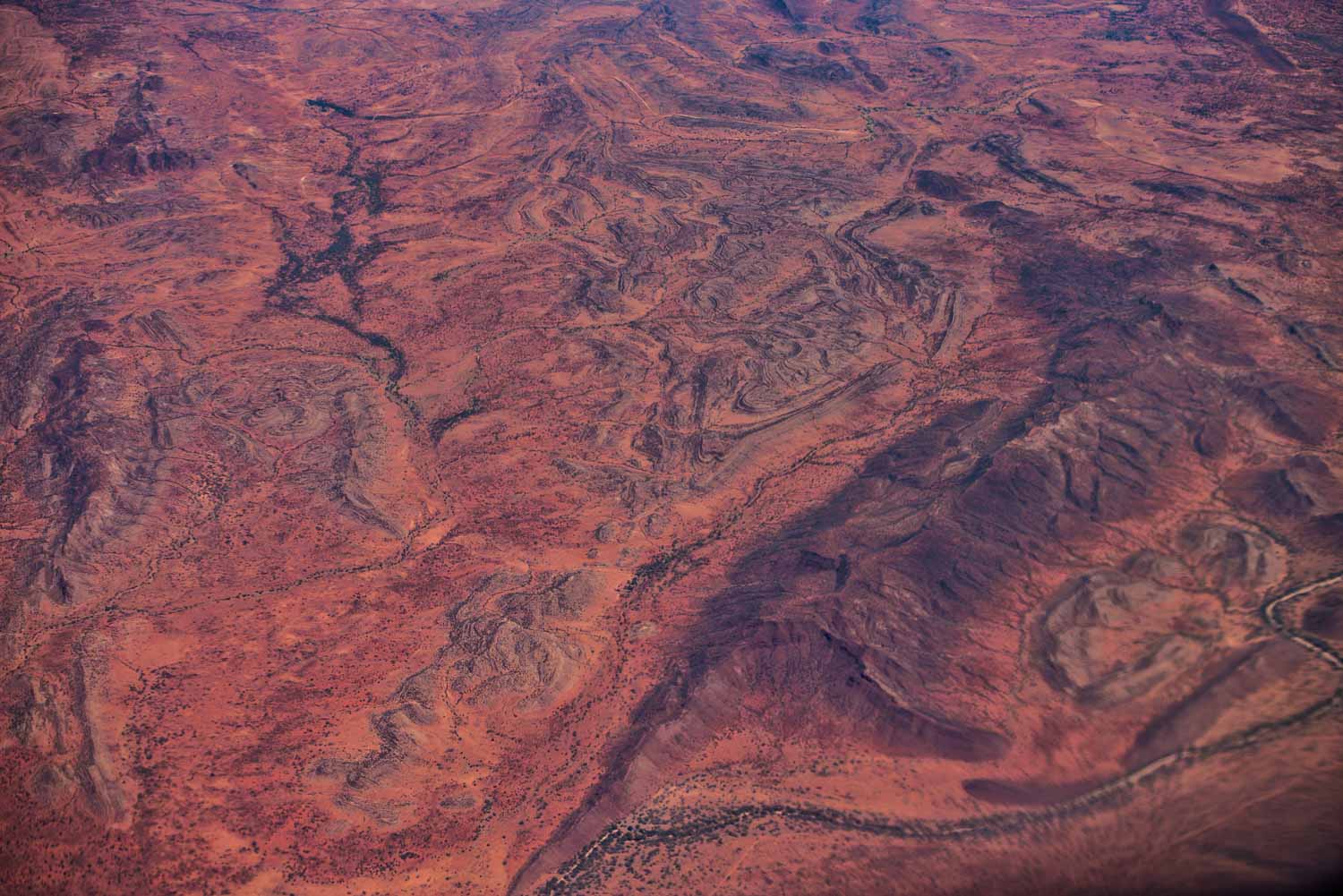
Window Seat Views flying over the Red Center
Located almost exactly in the middle of the Australia, Alice Springs is one of the most unique places in this huge country. Famous for its rugged natural beauty, fascinating Aboriginal history and its many outdoor adventure activities, a visit to this iconic Outback town should be on everyone’s Australian bucket list!
While it may be hot out there in the desert, and the flies can drive you close to sheer insanity, the experiences you can have here are worth every bit of it.
Here are just a few of my Alice Springs highlights…
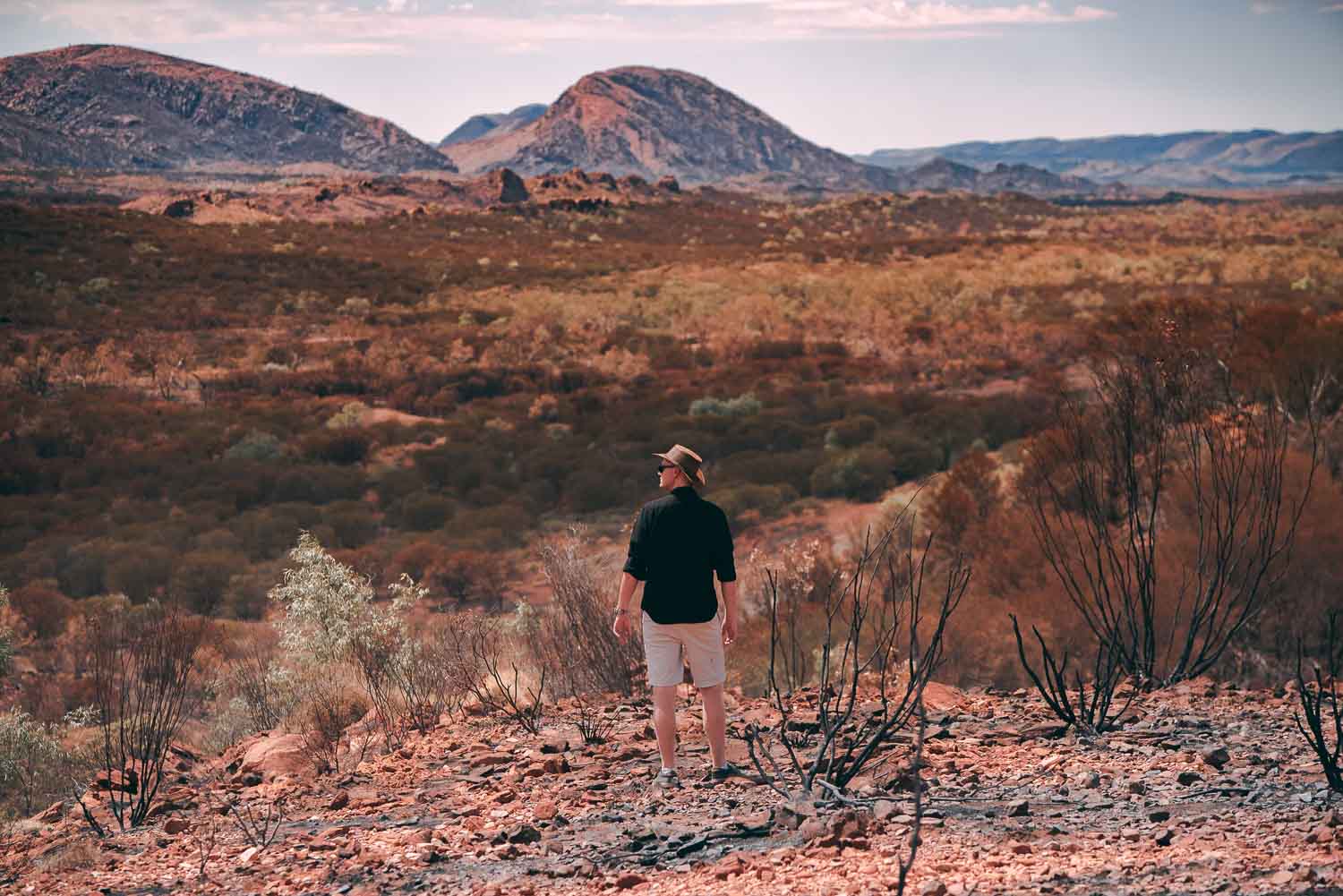
The Kangaroo Sanctuary Sunset Experience
I’ve always had a fascination with kangaroos, so visiting this sanctuary in Alice Springs was one of the most incredible experiences I’ve had in the country! We learned lots of fun facts about the animals, got to hold a couple cute and cuddly Joeys, and marveled at these adorable creatures bounce around in the beautiful golden light in the Outback.
It’s basically a 188-acre wildlife sanctuary for rescued orphaned baby and adult kangaroos. What most people don’t know, is that kangaroos are one of the most common roadkill animals in the country, and there can be alive baby joeys in their mother’s pouch when their on the side of the road.
What this place does, under the leadership of the famous “Brolga” A.K.A the “mother of kangaroos”, is rescue these cute animals, and prepare them for life in the wild. The sunset kangaroo feeding experience was one-of-a-kind, and is worth every penny!
For more information, head over to The Kangaroo Sanctuary website for times and availability!
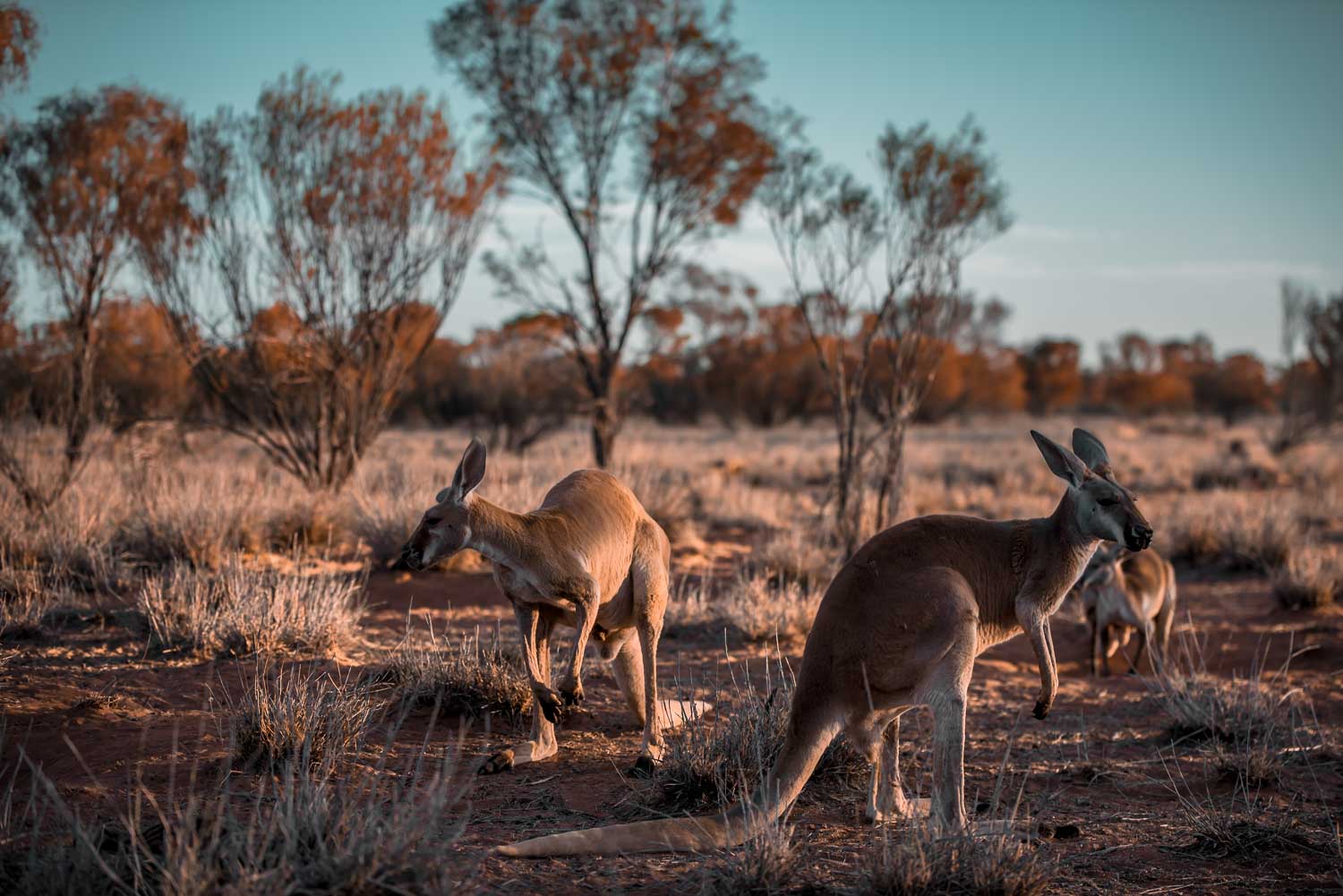
The West MacDonnell National Park
Nestled just a quick one-hour drive west of Alice Springs , you’ll find the entrance to the West MacDonnell National Park. If you enjoy hiking and working up a sweat against one of the most beautiful backdrops imaginable, this national park that belongs to the well-known MacDonnell ranges is the destination for you!
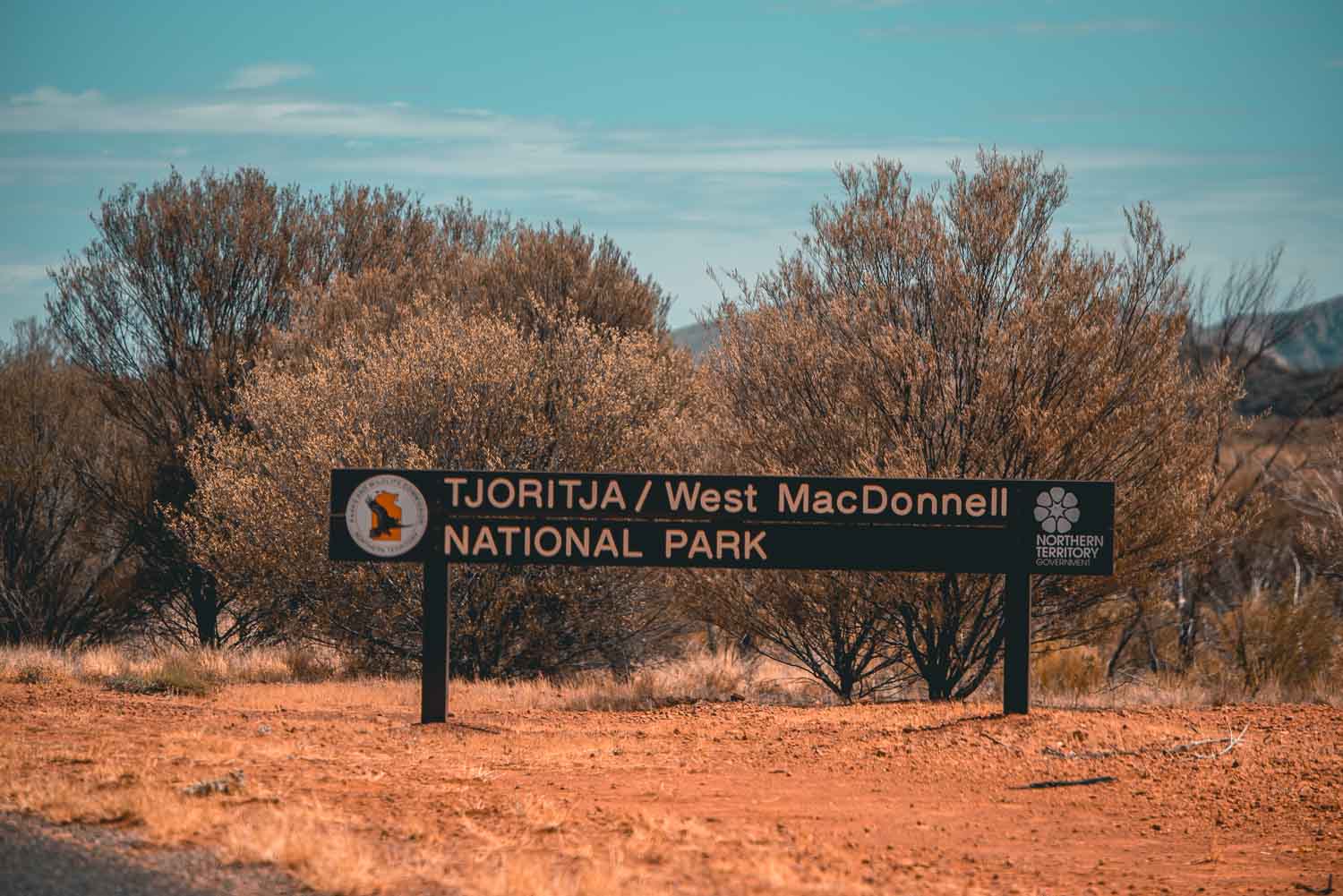
I had actually never heard of this National Park before visiting Alice Springs, and I was completely blown away from our one-day adventure out there. This is the “Red Center”, and the landscape and scenery really is something special! I was obsessed with the windy Outback roads, the desert colors, and the picturesque swimming holes!
You absolutely can’t visit Alice Springs without booking a full-day trip out to these spots. You could also rent a car and do it yourself, just make sure you visit key spots like Simpsons Gap, Ormiston Gorge, and Ellery Creek Big Hole (pictured below).
From Alice Springs: West MacDonnell Ranges Day Trip | Experience the best of the West MacDonnell Ranges on this full-day trip from Alice Springs. Marvel at the fiery red walls of the mountains in the desert sun, visit gorges and waterfalls, spot local wildlife and learn from your expert guide.
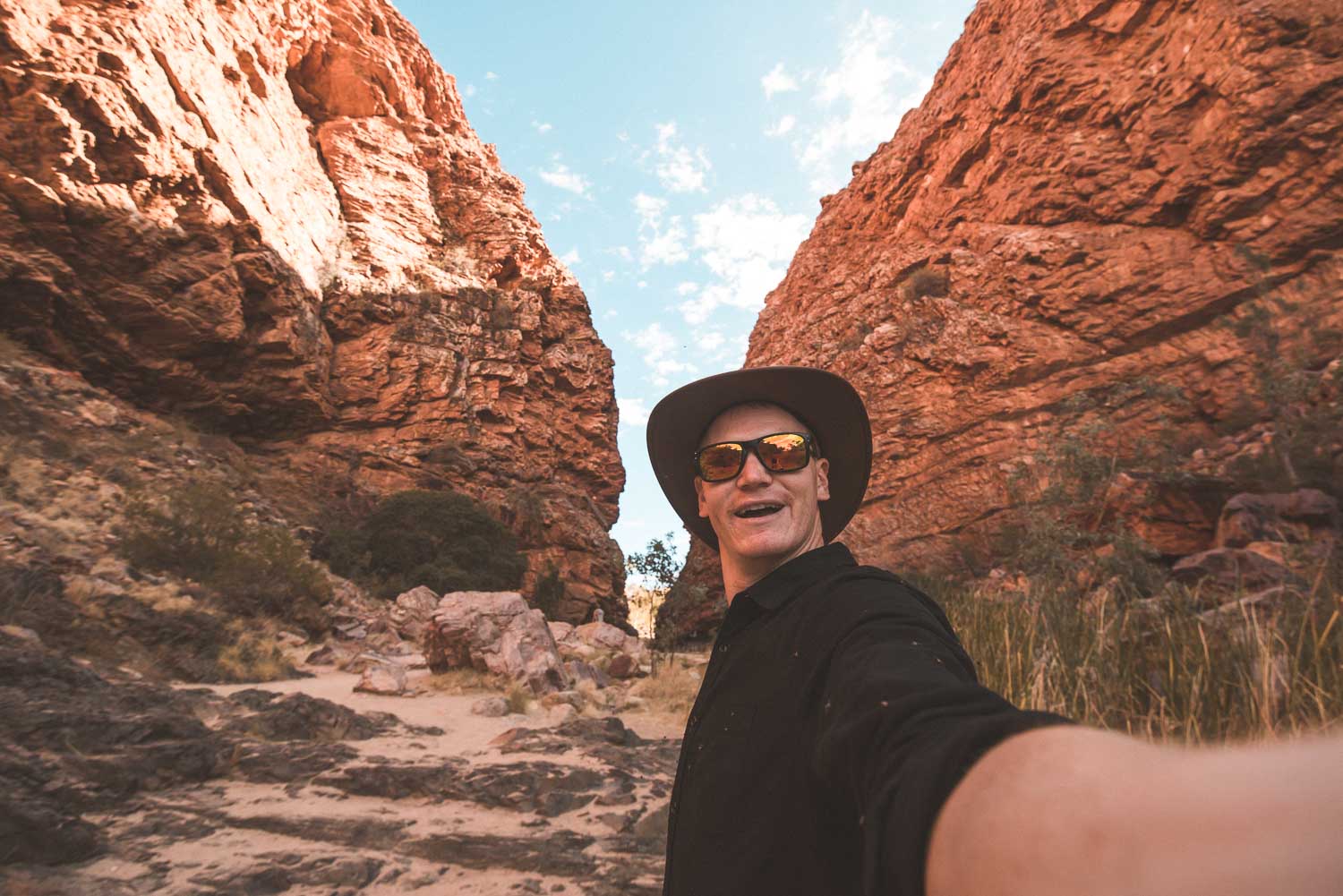
Simpsons Gap
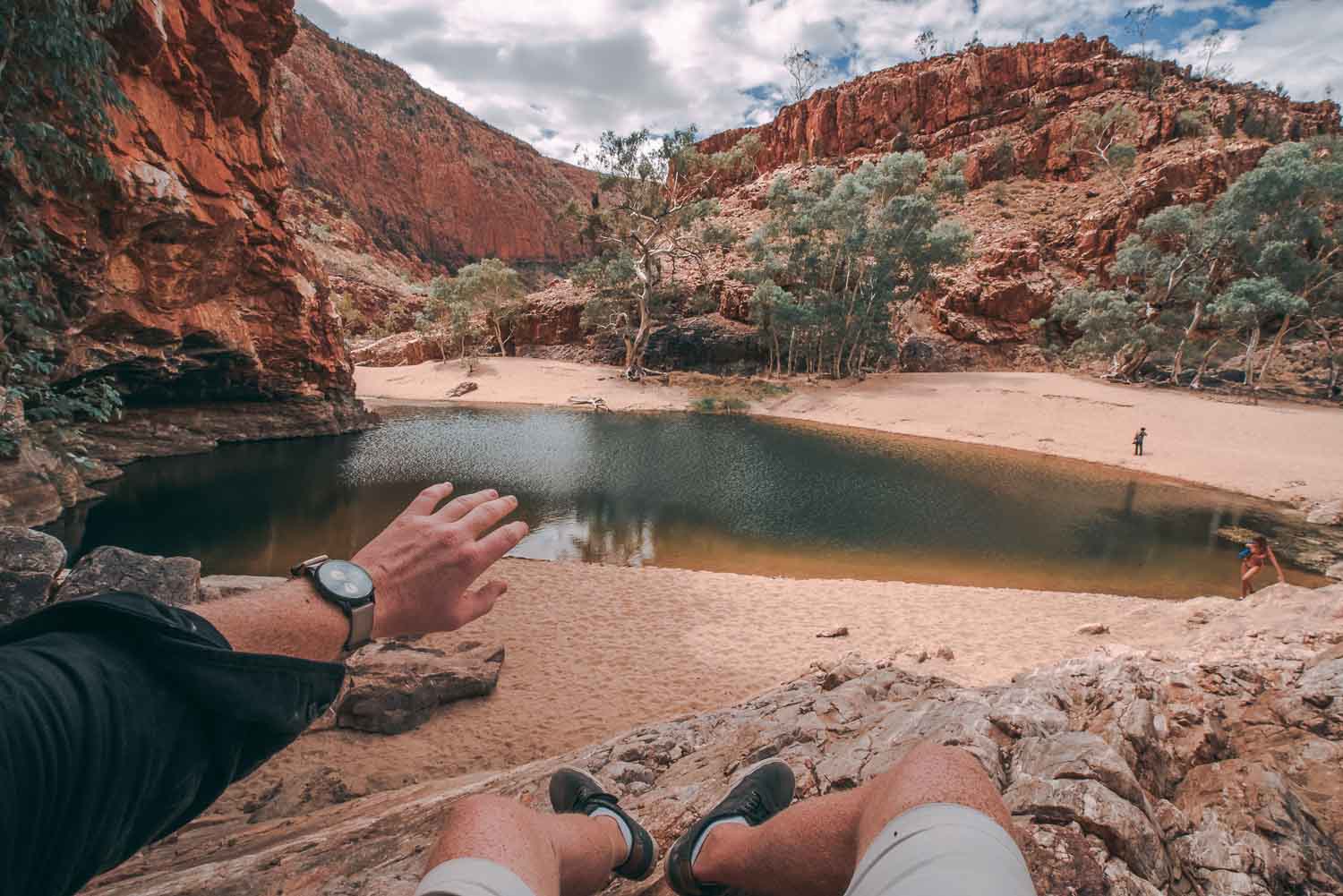
Ormiston Gorge
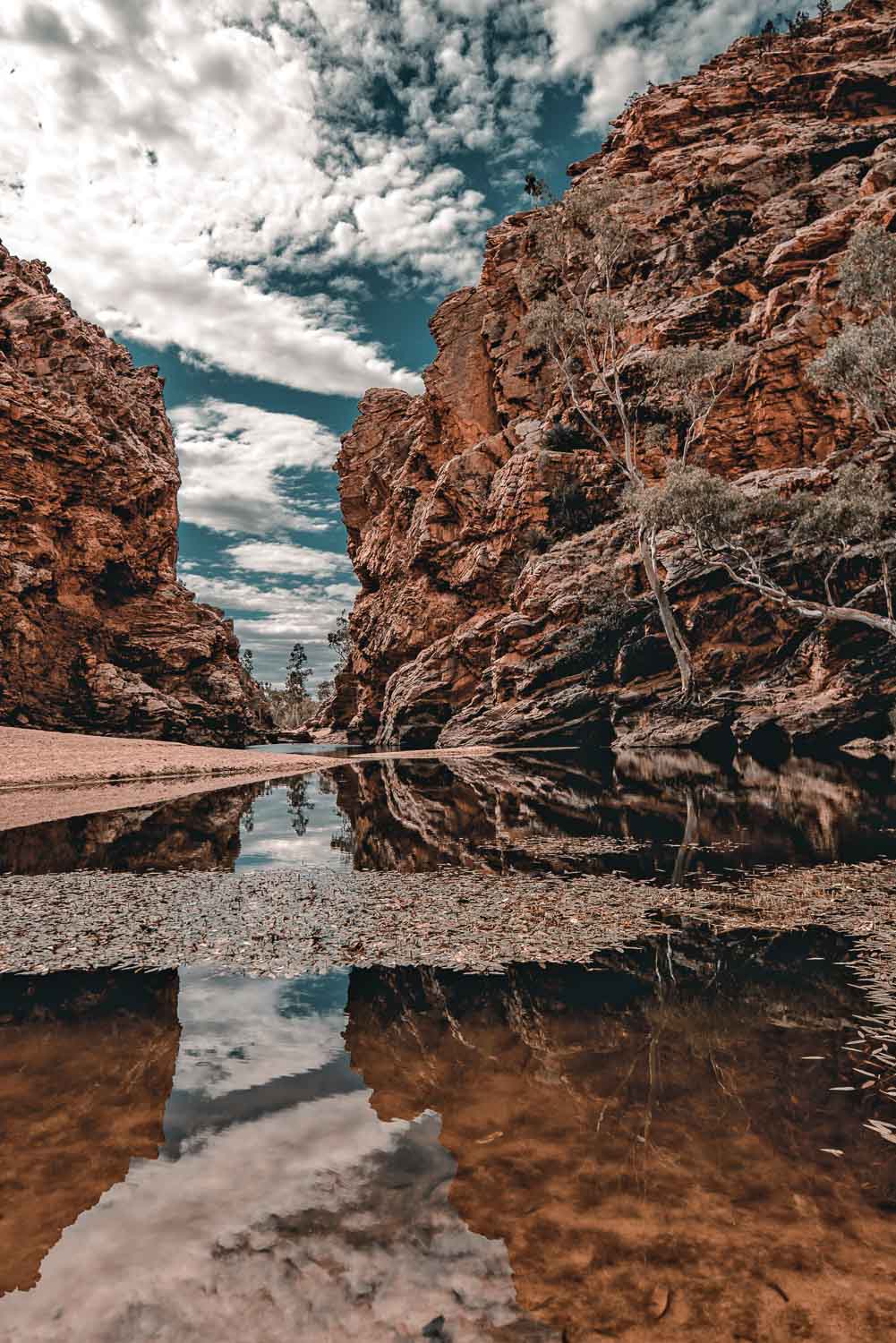
Ellery Creek Big Hole
Uluru is one of the most visited natural landmarks in the world, and unfortunately, this particular trip itinerary was just too jam-packed for me to tick it off my wanderlust bucket list. Located within Uluru-Kata Tjuta National Park, this immense sandstone must-see is of particular cultural significance to the Aboriginal community and tourists are, thankfully, veering away from climbing it these days.
If you are heading to the Red Centre, there’s a number of companies that organize day and overnight trips to this Outback icon, including my personal recommendations:
Uluru: Guided Trek of Uluru’s Base in a Small Group : This six hour tour is a great introduction to Uluru, where you will enjoy a walk around the base, breakfast and a tour guide full of interesting insights and historical knowledge.
From Alice Springs: Uluru 3-Day Camping Tour: If you want to make the most of your visit to this famous Aussie landmark, book in your place on this three day camping tour. You’ll also get to see the breathtaking Kings Canyon and Kata Tjuta, as well as counting the millions of stars in the Outback sky from your sleeping bag.
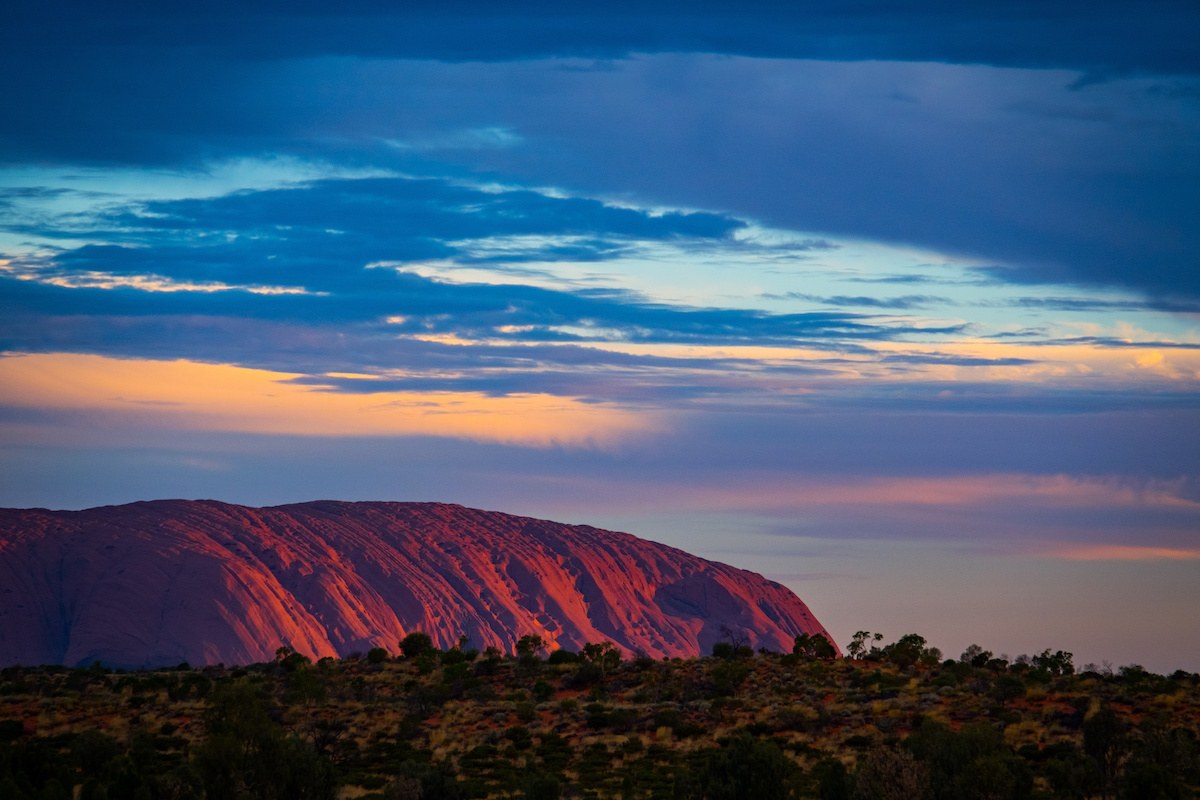
The Town of “Alice”
Visitors are prone to overlooking the city of Alice Springs itself in place of visiting its surrounding natural wonders. But while Alice is often a pit stop for travelers on the road, it has its own unique charm that makes it a great place to spend some downtime. And with only 25,000 residents, it’s a cozy city with tons of room to breathe.
A few recommendations for what to see in Alice Springs:
Anzac Hill : The Anzac tradition is dear to every Aussie’s heart, and pays homage to those who fought and died for the country across many wars. This memorial offers a view of Alice Springs you can’t get anywhere else, as well as a chance to reflect in a peaceful location.
Alice Springs Reptile Centre: The Northern Territory’s biggest collection of reptiles call this centre home, including goannas, crocs, frill-neck lizards and thorny devil’s. With three daily shows, you’ll learn a lot about these native not-so-furry friends.
Royal Flying Doctor Service Museum : The RFDS is an Australian institution, providing critical support and emergency services to those living in rural or remote areas across the country. Visit where it all began at this Alice Springs museum, where you can see the original planes and radio equipment used in the early days of the service.
Further reading : 3 Days in Alice Springs Travel Itinerary
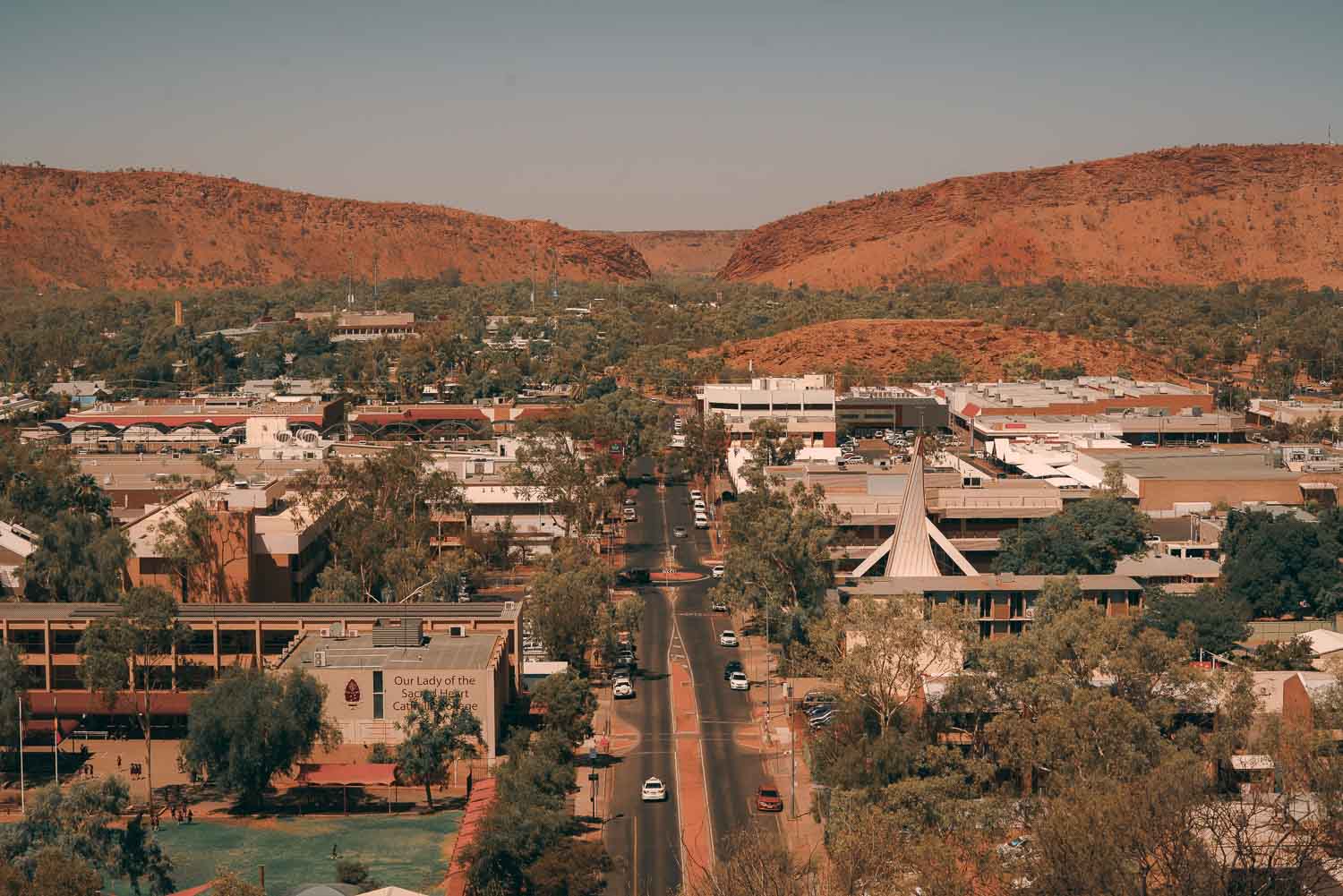
Where to Stay in Alice Springs
Crowne Plaza Alice Springs – Treat yourself in the Red Centre and experience the luxury of staying at the Crowne Plaza Alice Springs. It’s local to both the CBD and Alice Springs Airport, has a huge pool to cool off in, gym, spa, dining options and the staff are extremely courteous and helpful. 10/10 would recommend.
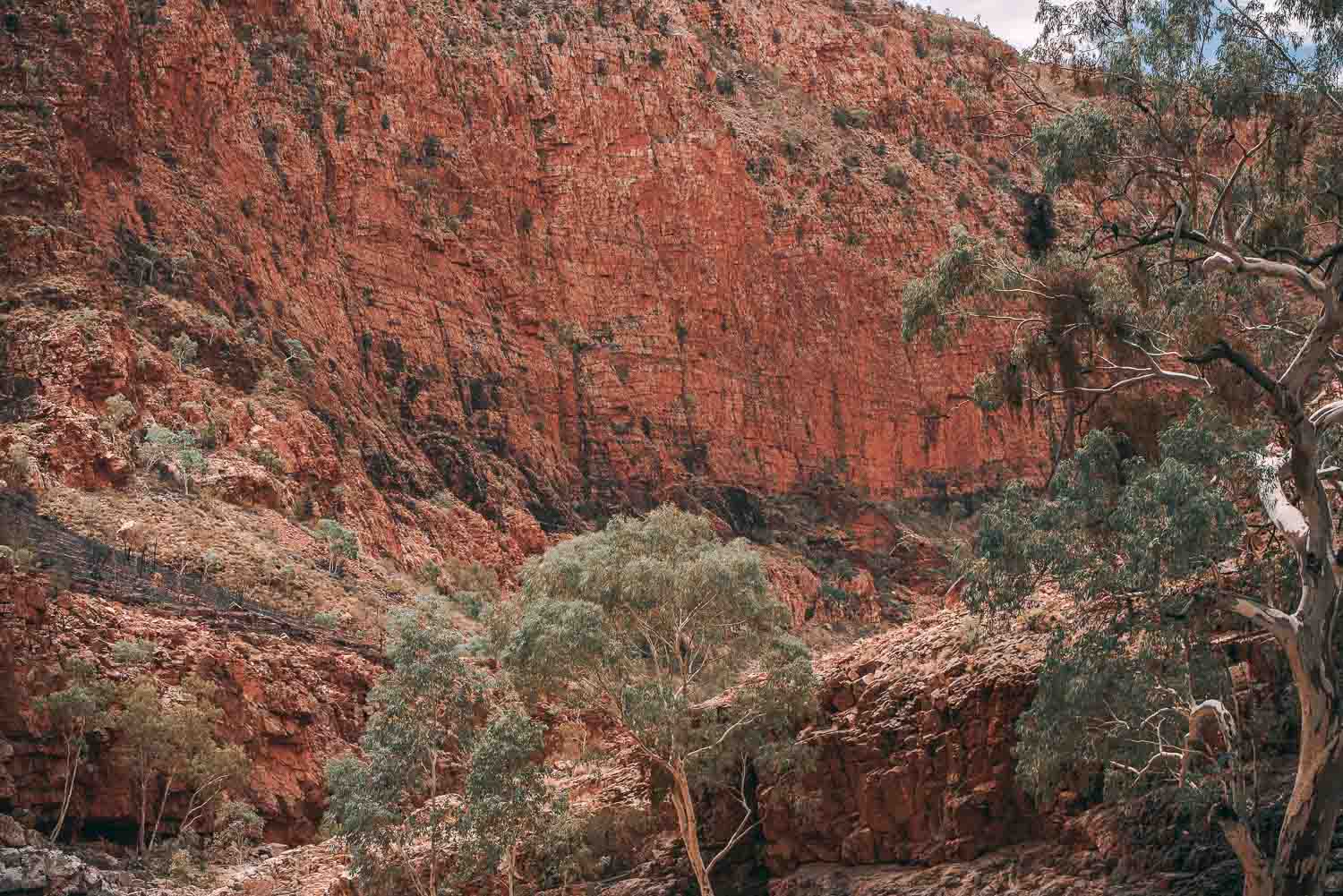
Some important Northern Territory travel tips:
- Pack sturdy walking shoes.
- Mosquito repellant and a fly net are mandatory.
- Regularly apply sunscreen (that Outback sun is HARSH!)
- Pack breathable, natural clothing.
- Carry lots of water on you and in your vehicle.
- Don’t just pack for intense heat. Nights in the Outback can get pretty chilly, so definitely prepare for that.
- Understand that this is one of the most remote places on Earth, and amenities and services can be hundreds of kilometers apart. Carry additional fuel and supplies if you know it’s going to be a long haul between service stations.
- Read up on how to treat the local Aboriginal tribes and communities with respect while you are visiting their land. They are very friendly and accommodating people, and we all owe them the same respect back. Some understanding of their customs will go a long way.
- If road tripping in your own vehicle, have a full car service before your trip. Breaking down without resources in the Outback can turn deadly fast. Plan and pack accordingly.
- Advise someone back home of your travel plans and check in regularly while on the road.
- Avoid driving at night. With local wildlife crossing the road in the dark, an accident could spell disaster.
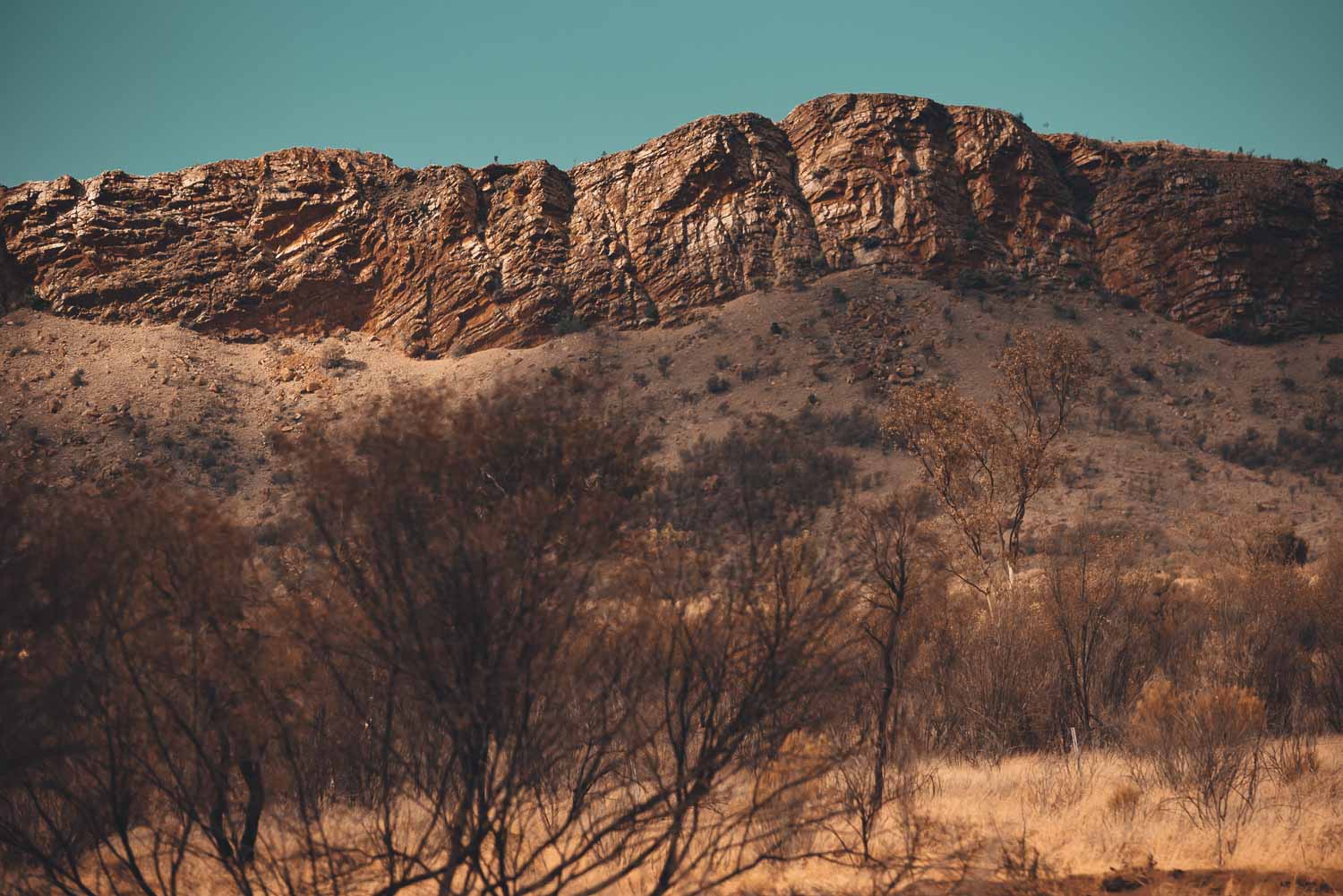
Am I Missing Anything important on this Northern Territory Itinerary…?
The Australian “Outback” is a pretty massive place, and I feel like even after spending a couple of weeks out there, I still have a lot more that I need to explore in the future! I’d love to hear from you guys if you have any hidden gems or other important places I should add to my list!!
Be sure to follow along on my Facebook & Instagram pages as well for more of my adventures around the world!
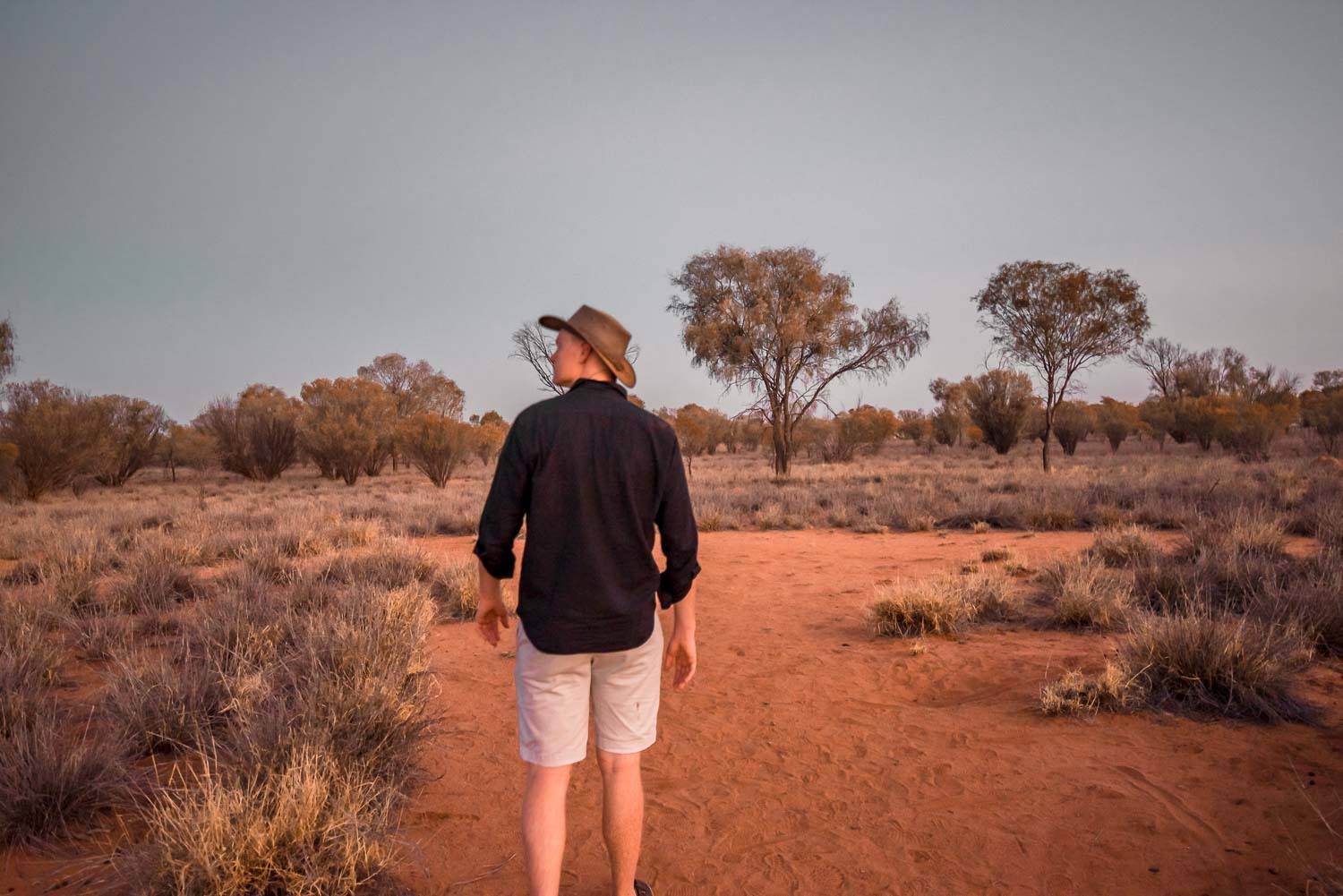
Planning a trip to Australia…?
I’ve spent quite a large amount of time down under, and my website is filled with awesome articles and travel guides just like this. Check out a few of them below, and feel free to reach out to me if you ever have any questions!
- The Ultimate SYDNEY Itinerary | How to Spend 4-7 Days in Sydney
- The Ultimate MELBOURNE Itinerary | How to Spend 4-7 Days in Melbourne
- 14 Words You’ll Start Saying When You Move to Australia
- The Ultimate Guide For Moving To Sydney on a Working Holiday Visa
- Cairns – Sydney: The Ultimate Greyhound Bus Pass Itinerary
- 30 Music Festivals in Australia To Experience Before You
- The 5 Best Rooftop Bars in Melbourne
- The 14 Best Music Festivals in Sydney
- Top 10 Music Festivals in Melbourne
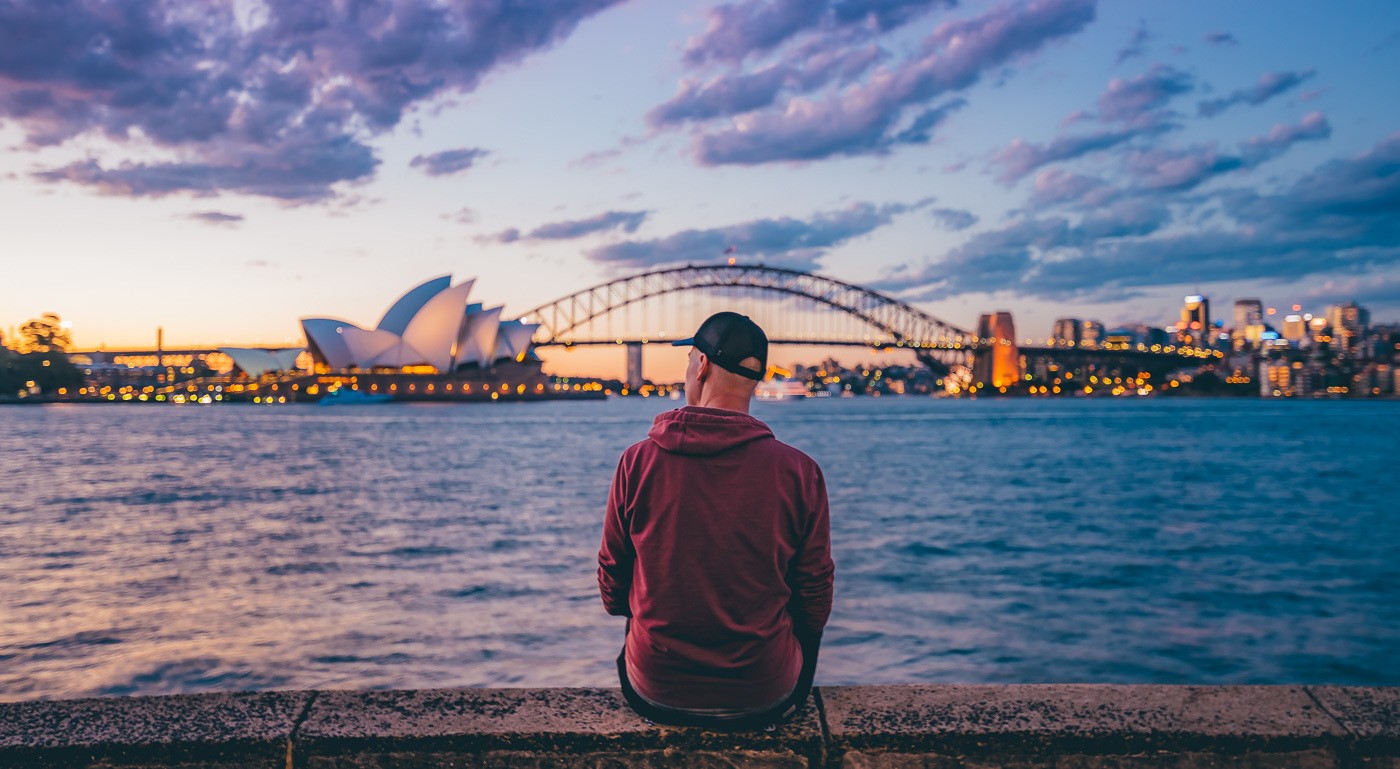
Thanks so much for reading my Australian Outback itinerary!
Share this article with your Aussie mates!

Disclaimer: I was an invited guest by Tourism NT to come and experience the Australian Outback and share my experiences. As always, all opinions are my own.
I’ve really been enjoying your posts Thanks for sharing such an useful Information
Trackbacks & Pingbacks
[…] Transylvania… driving through the scenic highlands of Scotland… or rolling through the outback on Australia‘s famous Ghan train… and dozens of other intriguing options all over the […]
[…] My Australian Outback / Northern Territory Travel Itinerary […]
Leave a Reply
Leave a reply cancel reply.
Your email address will not be published. Required fields are marked *
Save my name, email, and website in this browser for the next time I comment.
Photography Gear
Work With Me
Privacy Policy
Destinations
Music Festivals
Travel Itineraries
Inspiration
Travel Gifts
Southeast Asia

Australia Recommends 2024

Come and Say G'day

G'day, the short film

Discover your Australia

Travel videos

Deals and offers

Australian Capital Territory

New South Wales

Northern Territory

South Australia

Western Australia

External Territories

The Whitsundays

Mornington Peninsula

Port Douglas

Ningaloo Reef

Airlie Beach

Kangaroo Island

Rottnest Island

Hamilton Island

Lord Howe Island

Tiwi Islands

Phillip Island

Bruny Island

Margaret River

Barossa Valley

The Grampians

Hunter Valley

McLaren Vale

Glass House Mountains

Alice Springs

Uluru and Kata Tjuta

The Kimberley

Flinders Ranges

Kakadu National Park

Eyre Peninsula

Karijini National Park

Great Barrier Reef

Blue Mountains

Daintree Rainforest

Great Ocean Road

Purnululu National Park

Cradle Mountain-Lake St Clair National Park

Litchfield National Park

Aboriginal experiences

Arts and culture

Festivals and events

Food and drink

Adventure and sports

Walks and hikes

Road trips and drives

Beaches and islands

Nature and national parks

Eco-friendly travel

Health and wellness

Family travel

Family destinations

Family road trips

Backpacking

Work and holiday

Beginner's guide

Accessible travel

Planning tips

Trip planner

Australian budget guide

Itinerary planner

Find a travel agent

Find accommodation

Find transport

Visitor information centres
Deals and travel packages

Visa and entry requirements FAQ

Customs and biosecurity

Working Holiday Maker visas

Facts about Australia

Experiences that will make you feel like an Aussie

People and culture

Health and safety FAQ

Cities, states & territories

Iconic places and attractions

When is the best time to visit Australia?

Seasonal travel

Events and festivals

School holidays

Public holidays
How to get to Australia's most iconic cities

How long do I need for my trip to Australia?

How to travel around Australia

Guide to driving in Australia

How to hire a car or campervan

How to plan a family road trip

How to plan an outback road trip

Darwin, Northern Territory
Guide to Darwin
Aboriginal name: Gulumerrdgen (pronounced Golom-merrd-gen)
- Share Share on Facebook Share on Messenger Share on Twitter Share on WhatsApp Copy Link
- Getting to Darwin
- When to visit
- Accessibility
With everything from Asian food markets and crocodile encounters to open-air movies and sunset cruises, Darwin is as easy going as it is exciting.
If balmy nights, colourful characters and outdoor adventures are on your bucket list, you'll want to visit Darwin, located in the Northern Territory. Along with its crocodiles and cruises, you'll find rich Aboriginal cultures here, evident through the vibrant Aboriginal art that fills the city's galleries, museums and streetscapes. The city's proximity to Asia means you'll also find strong Asian influences, especially in the energetic food scene and buzzing night markets.
The Larrakia people are the Traditional Custodians of Darwin/Gulumerrdgen. The Larrakia people observe seven seasons throughout the year, and each season brings changes in weather, plants and animals. You can connect with First Nations culture, art and food on a range of Aboriginal experiences in Darwin .
- Traditional name: Gulumerrdgen (pronounced Golom-merrd-gen)
- Indigenous Peoples: Larrakia people
- Traditional languages: Larrakia language
- How to say g’day in Larrakia: Darrandirra (Durran-dirra), Miledma (Mil-ed-ma) or Batji-way (Barchi-way)
Fly into Darwin International Airport on either an international flight, or from any Australian state or territory.
- Darwin International Airport (DRW) is 7km (4.5mi) from the city and services international and domestic arrivals
- Darwin is home to great road trips, but given its distance from other major cities, it may be best to hire a car after arriving on a flight
- Hire cars, taxis, rideshares and shuttle services are available at Darwin Airport
Getting around Darwin is a breeze as it’s the smallest of Australia’s capital cities. With easy walking and cycling paths, many of Darwin’s attractions can be reached on foot. Darwin also has clean and reliable buses that stop at popular tourist spots.
There are two distinct seasons in Darwin. The dry season is the most popular time to visit, with many of the city’s events and festivals happening during this time. During the wet season, you will witness lush greenery and spectacular evening storms, and you’ll avoid the crowds at the city’s many attractions.
It's important to note that some tours do not operate during the wet season, so be sure to check in advance if you're planning to come at this time.
- High season: Dry season (May to October)
- Low season: Wet season (November to July)
- Don’t miss: Mindil Beach Sunset Markets (April to October)
Darwin is home to a host of accessible experiences and accommodation options.
- Arrival: Accessible assistance is available at Darwin Airport for those needing baggage or movement support throughout the airport.
- Getting around: Public buses in Darwin have low floors and extendable ramps for passengers with limited mobility.
- Accessible experience highlights: Darwin has a rich and diverse history, so be sure to visit the city’s accessible museums and galleries . If you’re looking for more of a thrill, try your hand at wheelchair-friendly barramundi fishing .
- Helpful resources: Search for accommodation and explore itineraries on this guide to accessible travel in the Northern Territory.

15 places to Come and Say G'day in 2024
Where to eat and drink.

Top places to eat and drink in Darwin

6 of Darwin’s best bars and pubs

Darwin's best cheap eats
Trip essentials.

Where to stay

Weather in Darwin

Getting around

Destinations near Darwin

The Tiwi Islands

Arnhem Land
Trips and itineraries.

3 days in Darwin

3 days on board The Ghan train

From Darwin to Adelaide: 14 days of nature, wine and Aboriginal cultures

Ultimate 6-day Kakadu family road trip
Explore another city.

We use cookies on this site to enhance your user experience. Find out more . By clicking any link on this page you are giving your consent for us to set cookies.
Acknowledgement of Country

We acknowledge the Traditional Aboriginal and Torres Strait Islander Owners of the land, sea and waters of the Australian continent, and recognise their custodianship of culture and Country for over 60,000 years.
- New Zealand (English)
- United States (English)
- Canada (English)
- United Kingdom (English)
- India (English)
- Malaysia (English)
- Singapore (English)
- Indonesia (Bahasa Indonesia)
- Deutschland (Deutsch)
- France (Français)
- Italia (Italiano)
- 中国大陆 (简体中文)
*Product Disclaimer: Tourism Australia is not the owner, operator, advertiser or promoter of the listed products and services. Information on listed products and services, including Covid-safe accreditations, are provided by the third-party operator on their website or as published on Australian Tourism Data Warehouse where applicable. Rates are indicative based on the minimum and maximum available prices of products and services. Please visit the operator’s website for further information. All prices quoted are in Australian dollars (AUD). Tourism Australia makes no representations whatsoever about any other websites which you may access through its websites such as australia.com. Some websites which are linked to the Tourism Australia website are independent from Tourism Australia and are not under the control of Tourism Australia. Tourism Australia does not endorse or accept any responsibility for the use of websites which are owned or operated by third parties and makes no representation or warranty in relation to the standard, class or fitness for purpose of any services, nor does it endorse or in any respect warrant any products or services by virtue of any information, material or content linked from or to this site.

Northern Territory Travel Guide

Basic information about Notrhern Territory

Northern Territory is the last frontier if you consider remoteness, harsh environment, and spectacular landscapes. Northern Territory has lots to offer for everyone: vast desert tracks, tropical woodlands, spectacular fishing spots, a paradise for birdwatchers, amazing walks, and 4WD tracks .
This Northern Territory travel guide lists all interesting places that are worth visiting.
Darwin and Around
Darwin average temperatures and rainfall table {border: 1px solid #000000;border-collapse: collapse; margin: 0 auto; padding: 0px;&amp;amp;lt;br /> min-width: 100%;}table th {text-align: center;padding: 1px;border: 1px solid #000000;background:#81b29d;color:#000000;font-weight:bold;text-align:center}table td{padding: 1px;border: 1px solid #000000;}table tr{background-color: #e9f2eb;color:#000000;text-align:center;}table .mobile-head {display:none;}table .show-on-mobile {display:none;}@media screen and (max-width: 600px) {table {border: 1px solid #000000;border-collapse: collapse; margin: 0 auto; padding: 0px;table-layout: fixed;min-width: 100%;}table td{padding: 8px;border: 1px solid #000000;display: block;text-align: right;width: 100%9; float: left9;}table tr{background-color: #dddddd;color:#000000;text-align:right;margin:8px}table tr:first-child {display:none;}table tr{display: block;}table td:not(:first-child){border-top:0px;}table .mobile-head{font-weight:bold;color:#000000;float:left;text-align:left;display:block}table .show-on-mobile {display:block;}}&amp;amp;lt;br />.

The best time to visit Darwin and its surroundings is during the dry season, from May to October . There is beautiful weather, lower humidity, and minimal or no rain. It’s a perfect time to enjoy sightseeing.
From October to December, you can experience a ‘build-up’. It is a hot and humid time that is perfect if you plan to relax in the pool.
The wet season comes right after and can extend to April. If you come at this time of the year, expect hot and humid weather and afternoon storms. That’s also the time when cyclones are formed.
You can wear summer clothes all year round, but some restaurants expect minimal casual outfits, which means in Darwin: shirt and thongs.
- By air – daily flights arrive from domestic and international destinations. If you come by plane, you can hire a vehicle in Darwin.
- By car – Barkly Highway , Savannah Way or Plenty Highway if you arrive from Queensland; Great Northern Highway and Victoria Highway or Great Central Road if you come from Western Australia; Stuart Highway if you come from Victoria or South Australia.
- By train – Pick The Ghan, a legendary outback train that regularly runs between Darwin and Adelaide.
- By boat – Darwin is the only city port in Northern Territory.

Darwin is full of a tropical vibe and colonial feel . It also has a fascinating coastline and wonderful sunsets over the Timor Sea. Darwin is full of aboriginal heritage and multicultural diversity. It is also a great base for exploring the best attractions of the Northern Territory.

Hema’s HX-2 Navigator
Explore Australia with Hema’s HX-2 Navigator, the ultimate GPS system for on and off-road navigation.

Must see attractions in Darwin

- Visit Crocosaurus Cove to experience a close encounter with these dangerous reptiles
- Visit Crocodylus Park and see crocodile Farm
- Shop for pearls at Darwin Smith Street Mall
- Visit Darwin Museum and Art Gallery of the NT – meet Sweetheart and learn more about cyclones.
- Take a dip in the Darwin Waterfront Lagoon.
- Eat amazing food and buy art and craft at Mindil Beach Sunset Market
- Stroll along the Esplanade during high tide and hand-feed hungry fish at Aquascene.
- Discover Darwin old town and Botanical Gardens
- Visit and learn about WWII Oil Storage Tunnels
- Head to Indo Pacific Marine if you want to know more about living coral and other sea creatures.
- Go on a Darwin Harbour sunset dinner cruise.
- Learn about the early years of the town by visiting Pioneer’s Cemetery
- Fannie Bay Gaol is a beautifully located old prison with lots of dark stories to tell
Read more about the 11 best attractions in Darwin
Accommodation
Darwin has a wide range of accommodation on offer . You can choose marina apartments, tropical tourist parks, small hotels in a quiet neighbourhood, or backpacker houses in the middle of the city.

Vibe Hotel Darwin Waterfront , 7 Kitchener Dr, Darwin
Mantra on the Esplanade , 88 The Esplanade, Darwin
Darwin City Hotel , 59 Smith Street, Darwin CBD
Tourist Parks
Darwin Freespirit Resort , 901 Stuart Highway, Holtze
Oasis Tourist Park , 20 Morgan Rd, Virginia NT 8034
BIG4 Howard Springs Holiday Park , 170 Whitewood Road, Howard Springs
Litchfield Tourist Park , 705 Litchfield Park Road, Finniss Valley
Darwin Hostel , 88 Mitchell Street, Darwin CBD
The Cozy Hostel , 4 Harriet Place, Darwin CBD
Youth Shack Backpackers , 69 Mitchell Street, Darwin CBD
Top Events in Darwin
Darwin Triple Crown Supercars
Royal Darwin Show
Darwin Festival
Darwin Street Art Festival
Darwin Lions Beer Can Regatta

There are also many wildlife adventures around Darwin . You could watch massive saltwater crocodiles in their natural habitat of Adelaide River and view the wetlands with their abundant wildlife and admire thousand of colourful birds.
9 must see attractions Around Darwin

- Explore Litchfield National Park
- Visit Crab Claw Island Resort
- Have a dip at Berry Springs Nature Park
- Look trough the Window on the Wetlands
- Admire Fogg Dam and hundreds of beautiful birds
- Discover Corroboree Billabong on the boat cruise
- Go on Crocodile watching Adelaide river cruise
- Spend a day at Tiwi Islands
- Don’t forget to visit Territory Wildlife Park

Kakadu National Park
Kakadu national park average temperatures and rainfall table {border: 1px solid #000000;border-collapse: collapse; margin: 0 auto; padding: 0px;&amp;amp;lt;br /> min-width: 100%;}table th {text-align: center;padding: 1px;border: 1px solid #000000;background:#81b29d;color:#000000;font-weight:bold;text-align:center}table td{padding: 1px;border: 1px solid #000000;}table tr{background-color: #e9f2eb;color:#000000;text-align:center;}table .mobile-head {display:none;}table .show-on-mobile {display:none;}@media screen and (max-width: 600px) {table {border: 1px solid #000000;border-collapse: collapse; margin: 0 auto; padding: 0px;table-layout: fixed;min-width: 100%;}table td{padding: 8px;border: 1px solid #000000;display: block;text-align: right;width: 100%9; float: left9;}table tr{background-color: #dddddd;color:#000000;text-align:right;margin:8px}table tr:first-child {display:none;}table tr{display: block;}table td:not(:first-child){border-top:0px;}table .mobile-head{font-weight:bold;color:#000000;float:left;text-align:left;display:block}table .show-on-mobile {display:block;}}&amp;amp;lt;br />.
World Heritage-listed Kakadu National Park is one of a kind. Coastal rivers and billabongs are home to thousands of birds and flood plains that carry a wet season frenzy.
The park is also a spawning ground for barramundi – Northern Territory best-known fish that gives an amazing fight when caught. Kakadu National Park is also a home for Yolngu people that lived in the area for over 40 000 years. Yolngu people are well known for their arts and crafts.
9 must see attractions in Kakadu National Park
- Be at sunset at Ubirr lookout .
- Walk around Australia’s most outstanding Aboriginal art site at Nourlangie Rock .
- Have a dip at Gunlom infinity pools
- Don’t miss a Yellow Waters cruise
- Discover amazing water holes at Koolpin Gorge
- Walk to the tallest in Kakadu waterfalls – Jim Jim Falls
- Watch birds at Mamukala wetlands
- Appreciate the beauty of Twin Falls
- Take a scenic flight over Kakadu

Arnhem Land
Arnhem Land is located in the north-eastern corner of the Northern Territory. Cahill crossings separate it from Kakadu National Park.
Aboriginal Yolngu people are the traditional owners of Arnhem Land . The Yolngu people are famous for their arts and crafts and their skill at playing the didgeridoo. Visiting this unspoiled wilderness is a must if you love true wilderness and aboriginal culture. Visitors must apply for a permit before entering.
5 must see attractions in Arnhem Land

- Visit Injalak Arts and Craft Gallery
- Admire aboriginal open art galleries
- Explore ruins of Victoria Settlement at Cobourg Peninsula
- Fish for barramundi
- Learn to play the didgeridoo

Fishing in Northern Territory
To p End is one of the best places to go fishing . Every year hundreds of people come to fish for barramundi and reef fish like giant trevally, Spanish mackerel, rainbow trout, and many more.
A good time for offshore fishing is between October and December . At that time, the conditions are calmest. Between May and September weather is great with the south-easterly wind. It is a season for Spanish mackerel, golden trevally, and tuna. It is also a great time to fish for barramundi.
Wet season (January to April) could be challenging but also rewarding. At this time, barra is usually found in mangroves and estuaries. Ocean fishing in the wet season depends greatly on weather conditions. At this time of the year, monsoonal storms are often, and fishing offshore should be avoided.
If you feel lucky, a serious Million Dollar Fish competition is happening annually. Catch barramundi with a $1 million tag or 100 others carrying a $10 000 tag to get richer fast.
Best places to go fishing:
- Darwin Harbour
- Corroboree Billabong
- HeliFishing
- Bluewater charters
- Dundee Beach
- King Ash Bay

Katherine and around
Katherine average temperatures and rainfall table {border: 1px solid #000000;border-collapse: collapse; margin: 0 auto; padding: 0px;&amp;lt;br /> min-width: 100%;}table th {text-align: center;padding: 1px;border: 1px solid #000000;background:#81b29d;color:#000000;font-weight:bold;text-align:center}table td{padding: 1px;border: 1px solid #000000;}table tr{background-color: #e9f2eb;color:#000000;text-align:center;}table .mobile-head {display:none;}table .show-on-mobile {display:none;}@media screen and (max-width: 600px) {table {border: 1px solid #000000;border-collapse: collapse; margin: 0 auto; padding: 0px;table-layout: fixed;min-width: 100%;}table td{padding: 8px;border: 1px solid #000000;display: block;text-align: right;width: 100%9; float: left9;}table tr{background-color: #dddddd;color:#000000;text-align:right;margin:8px}table tr:first-child {display:none;}table tr{display: block;}table td:not(:first-child){border-top:0px;}table .mobile-head{font-weight:bold;color:#000000;float:left;text-align:left;display:block}table .show-on-mobile {display:block;}}&amp;lt;br />.
Drive around 300 km south from Darwin to reach a place where the tropics meet outback – the town of Katherine. The main attraction here is definitely Katherine Gorge, but the area has definitely many more great things to offer.

What to do around Katherine
- Explore Nitmiluk National Park
- Take a Katherine Gorge boat cruise
- Swim at Katherine Hot Springs
- Enjoy the cultural experience at Top Didi
- Have a dip at Mataranka Hot Springs
- Discover Cutta Cutta Caves
- Visit Edith Falls
- Eat lunch at Daily Waters Pub
Top Events around Katherine
Fishing Competition at Timber Creek
Never Never Festival at Mataranka
Katherine Cup
Rodeo at Mataranka
The Red Centre
Red centre average temperatures and rainfall.
Alice Springs is the most famous outback town in Australia. Situated between East and West MacDonell ranges it is a town full of character and reach of pioneer history. Alice Springs is a great spot to discover nearby attractions as well. Here even rust-coloured dirt looks amazing!
How to get to Red Centre
- By air – Fly to Ayers Rock Airport in Yulara (463 km away from Alice) or Alice Springs airport. You can hire a car or find an organised tour.
- By car – If you hit the road, Stuart Hwy will take you here from Darwin or Port Augusta from the south.
- By train . The Ghan legendary outback train regularly runs between Darwin and Adelaide.

What to do around Alice Springs
- Go on Kings Canyon rim walk
- Walk around Kata Tjuta
- Explore Uluru and go for a camel tour
- Devils Marbles (Kurlu Kurlu)
- Discover East & West MacDonnell Ranges
- Visit Old Telegraph Station
- Admire stunning Henbury Crater
The Red Centre has spectacular landforms, blue skies, and deserts. You can feel the monumental sense of the scale of Uluru, Kata Tjuta, or Kings Canyon.
Visit Devils Marbles to admire the most iconic outback destination, where massive orange boulders sit atop each other defying gravity.
The Aboriginal story tells they are the eggs of the Rainbow Serpent. There is also an amazing story told by the Arjanngu people where Uluru and Kata Tjuta were laid down during Tjukurpa – creation time.
The Red Centre offers luxurious hotel accommodation, through to a wide range of apartments and amazing camping.
Quest Alice Springs , 9 – 10 South Terrace, Alice Springs
A Good Rest B & B , 51 Dixon Road, Alice Springs
Sails In The Desert , Yulara Drive Ayers Rock Resort, Yulara
Kings Canyon Resort , Luritja Road Watarrka National Park, Kings Canyon
Heritage Caravan Park , 40 Ragonesi Road, Alice Springs
BIG 4 MacDonnell Range Holiday Park , Palm Circuit, Alice Springs
Squeakywindmill Boutique Tent B & B , 971 Ilarpa Road, Alice Springs
Ayers Rock Campground , 173 Yulara Dr, Yulara
Top Events around Alice Springs
Parrtjima Festival
Bangtail Muster
Alice Spring Beanie Festival
Apex Camel Cup
Tennant Creek Cup
Henley on Todd Regatta
Desert Harmony Festival
From red dirt to tropical rainforest. Ten places anyone should add to their bucket list. Subscribe and receive ten colourful infographics.
Please subscribe to receive our monthly newsletter
Enjoy outdoors with tentworld equipment.

Dutch ovens
Did you like our content?

Similar Posts

Yellow Waters – breathtaking Kakadu wetlands
Sandy Billabong and Nanguluwur Yellow Waters is located in the centre of Kakadu National Park. It is a must go and see destination for anyone visiting the park. It is famous for its vast wetlands that provide a home to birds, fish and saltwater crocodiles. We always compare this place to Corroboree Billabong in terms they…

19 Best Cooktown Attractions – The ultimate guide
Cooktown, a small town located in the northernmost region of Queensland, is steeped in history and culture. During the late 1800s, the town played a crucial role in the gold rush that swept across North Queensland, attracting thousands of prospectors in search of fortune. Today, visitors to Cooktown can explore the town’s rich gold rush…

Tent camping checklist – print out before your trip
How many times did you rush in the morning packing all your gear, and later on the road asking yourself – What did I forget this time? Tent camping is great in Australia. There are so many national parks and natural wonders to visit and enjoy in your free time. We prepared a comprehensive tent…

Cape Hillsborough – meet kangaroos on the beach
What to expect at Cape Hillsborough Cape Hillsborough National Park is one of the few places in Australia where you can meet kangaroos on the beach every morning. The park offers rainforest, eucalypt forest, beaches, headlands with hoop pines, and volcanic rock formations. On top of it, the sunrises are just amazing. Imagine yourself feeding…

Koolpin Gorge (Jarrangbarnmi) – escape the crowds of Kakadu
Koolpin Gorge is a great spot if you want to escape crowds in Kakadu National Park. To get there you have to obtain a camping/hiking permit and take a 4WD drive track. We returned to Kakadu after a few years after our trip around Australia, to explore Koolping Gorge as we missed it before. This time…

Dead Gwalia ghost town and 51 Lake Ballard sculptures
Our next two destinations before hitting Great Central Road was Gwalia ghost town and Antony Gormley Inside Australia Lake Ballard sculptures. Antony Gormley Inside Australia sculptures – Art Project Sculptures The next morning, we left Kalgoorlie Boulder and headed to Menzies. Menzies is now an abandoned town and serves as a local attraction, reminiscent of…
One Comment
Great Info thank you for sharing.
Leave a Reply Cancel reply
Your email address will not be published. Required fields are marked *
Save my name, email, and website in this browser for the next time I comment.

Subscribe to our monthly newsletter and receive the 10 Best National Parks Infographics.

Search by criteria:
Search by keyword:
Guided Holidays Our signature fully-guided holiday experiences
- The Red Centre, Northern Territory
- The Top End, Northern Territory
- Perth & Western Australia
- Hobart & Tasmania
- Adelaide & South Australia
- Great Barrier Reef & Queensland
- Sydney & New South Wales
- Melbourne & Victoria
- View all Australia Guided Holidays
New Zealand
- South Island
- North Island
- View all New Zealand Guided Holidays
Short Breaks 2-7 day breaks with your choice of accommodation
- View all Australia Short Breaks
Day Tours One day or half day sightseeing tours
- View all Australia Day Tours
Destinations
- The AAT Kings Difference
- The Travel Corporation
- First Nations Culture
- Booking Conditions
- Travel Alert
- Destination Management
- MAKE TRAVEL MATTER®
- Solo Travel
- Special Assistance
Special Offers
- SAVE up to 15%* on NT
- Save up to 10%* on selected tours
- View All Special Offers
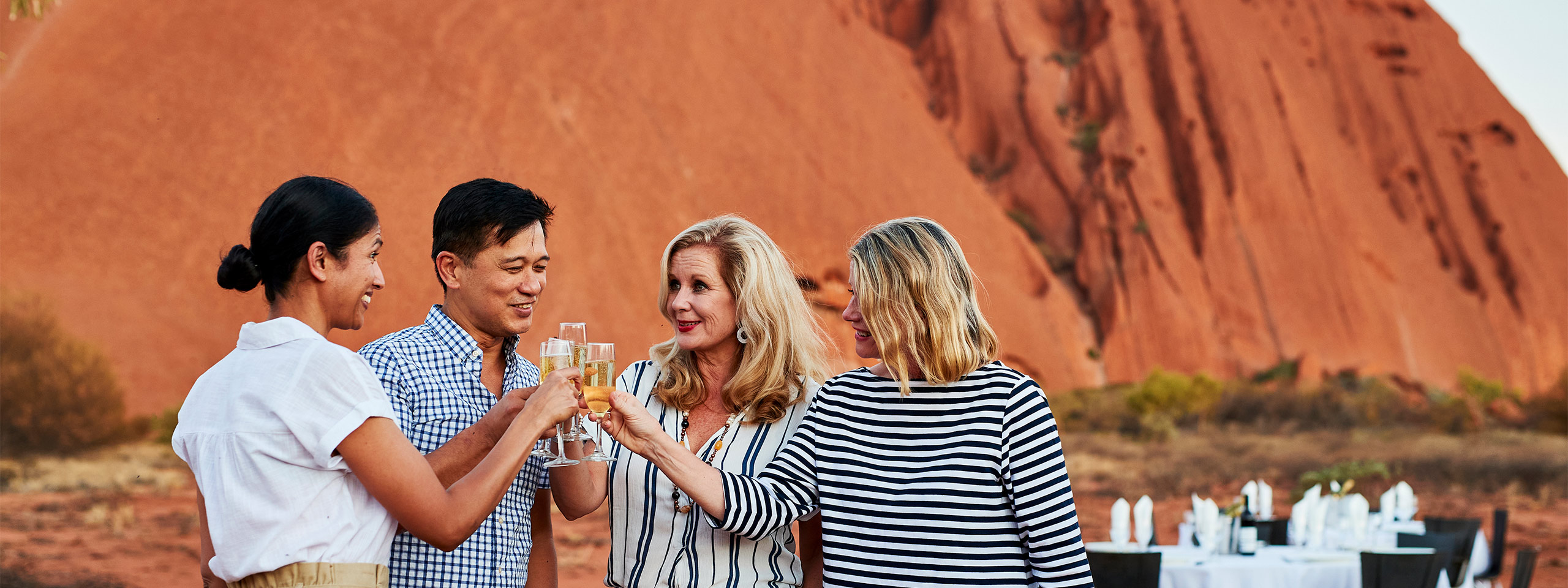
Top Five Northern Territory Travel Tips
Top 5 northern territory travel tips.
Ah, the Northern Territory, famed for its Outback desert landscapes, the iconic sandstone monolith of Uluru, the red-rock domes of Kata Tjuta and some of the most sensational sunsets that we’ve ever come across. It truly is the perfect place for your next #HolidayHere adventure!
With so much to see and even more to do, you’re really going to want to make the most of your NT travels. That’s why we’ve taken it upon ourselves to share our top 5 Northern Territory travel tips – simple tips that we’ve learned over the past 100 years of travelling the Territory.

International Women's Day 2024 - Inspire Inclusion
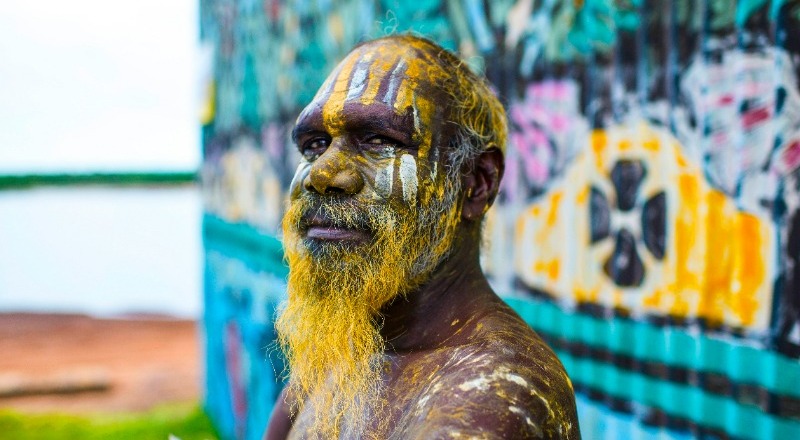
15 Things To Do In Darwin
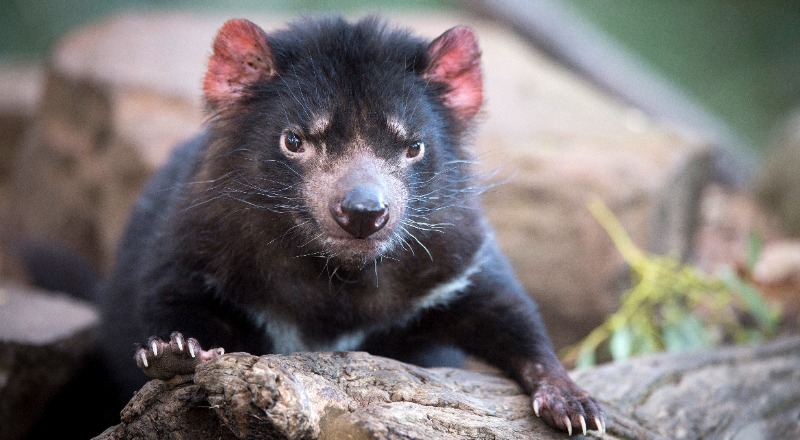
Tasmanian Devil Facts
Please note.
We're experiencing a high volume of enquiries via our email and call centre.
Have a question? Why not head to our website's Frequently Asked Questions section to find what you're looking for, or email [email protected] and we will respond to you as soon as possible.
Need to check your Day Tour's hotel pick-up time? Click below for Day Tour departure information.
We have numerous new measures to elevate our hygiene standards and protocols.
Top 5 Northern Territory Travel Tips ADDED TO BROCHURE
Create your wish list.
Click "My Brochure" to build a custom made brochure with trips selected by you!
Add tours or remove tours from your list
The maximum number of tours has been reached for your custom brochure.
- Northern Territory
Full Anzac Day 2024 guide for Northern Territory events
From Dawn Services to two-up, here is your full guide to what Anzac Day events are happening across the Territory. Free read.
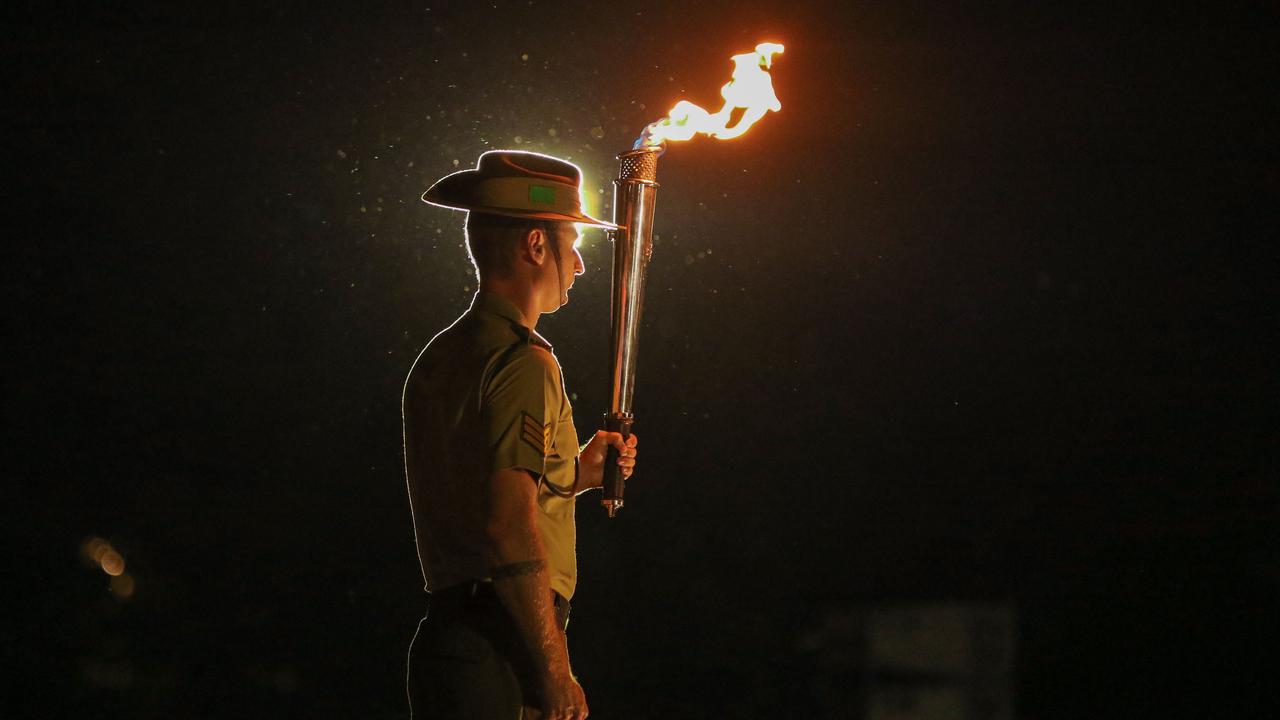
VET course slated to produce the next crop of local artists
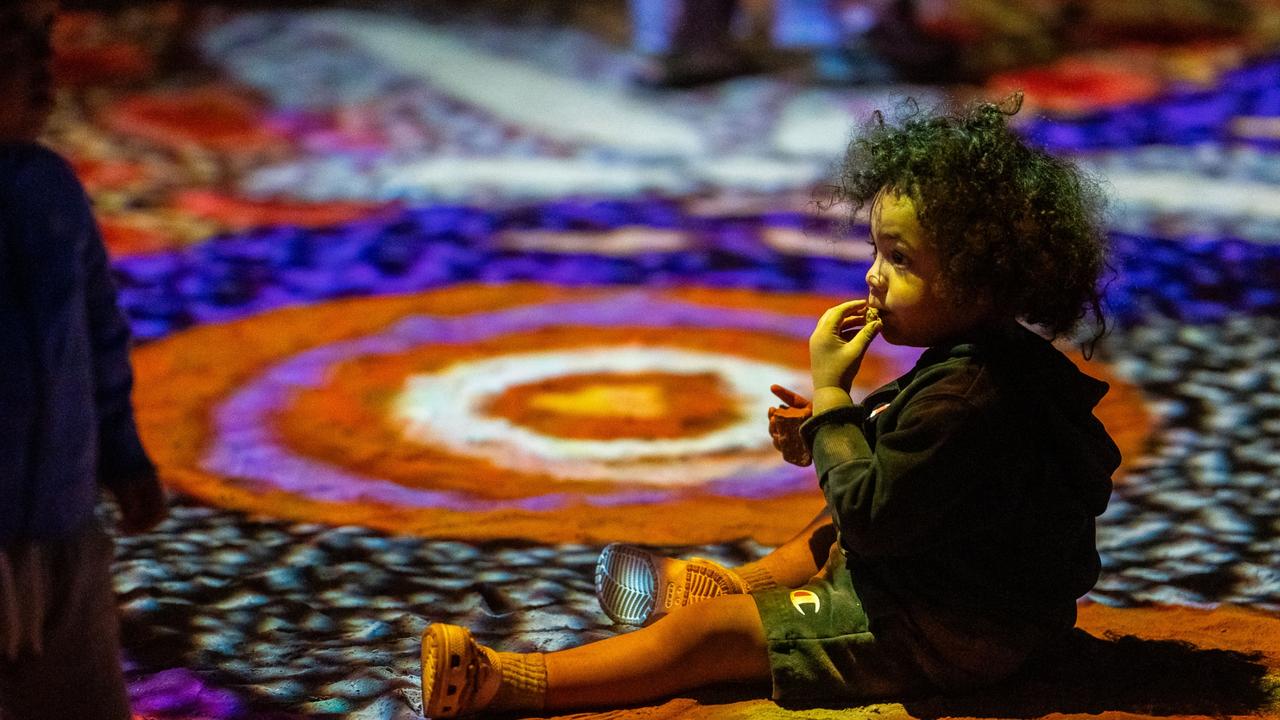
Drawn to the light: More than 20k flock to Parrtjima

Two week route suspension for remote communities after buses pelted with rocks
Territorians will pay their respects to veterans past and present this Anzac Day.
From the hair-raising Last Post to the afternoon hustle of two-up, here is your guide of how to commemorate Anzac Day 2024 in the Territory.
6.00am, Dawn Service – Darwin Cenotaph
A catafalque party followed by the Ode of Remembrance, the reflections of various speakers and, finally, the Last Post, will break the stillness of Darwin City.
With parks a premium, be sure to car pool as necessary and give yourself plenty to make the ceremony.

9.00am, Anzac Day March – Esplanade end of Knuckey St
Featuring soldiers, sailors, aviators, and veterans across the Top End, the traditional march along Knuckey St offers Territorians a glimpse at Australia’s troops past and present with the Marine Corps also expected to join the march and represent the United States’ longstanding relationship with the city.
4.30am, Gunfire breakfast – Cazalys
An early morning drink and a bite to eat will be available for those who wish to attend the Dawn Service with a full stomach.
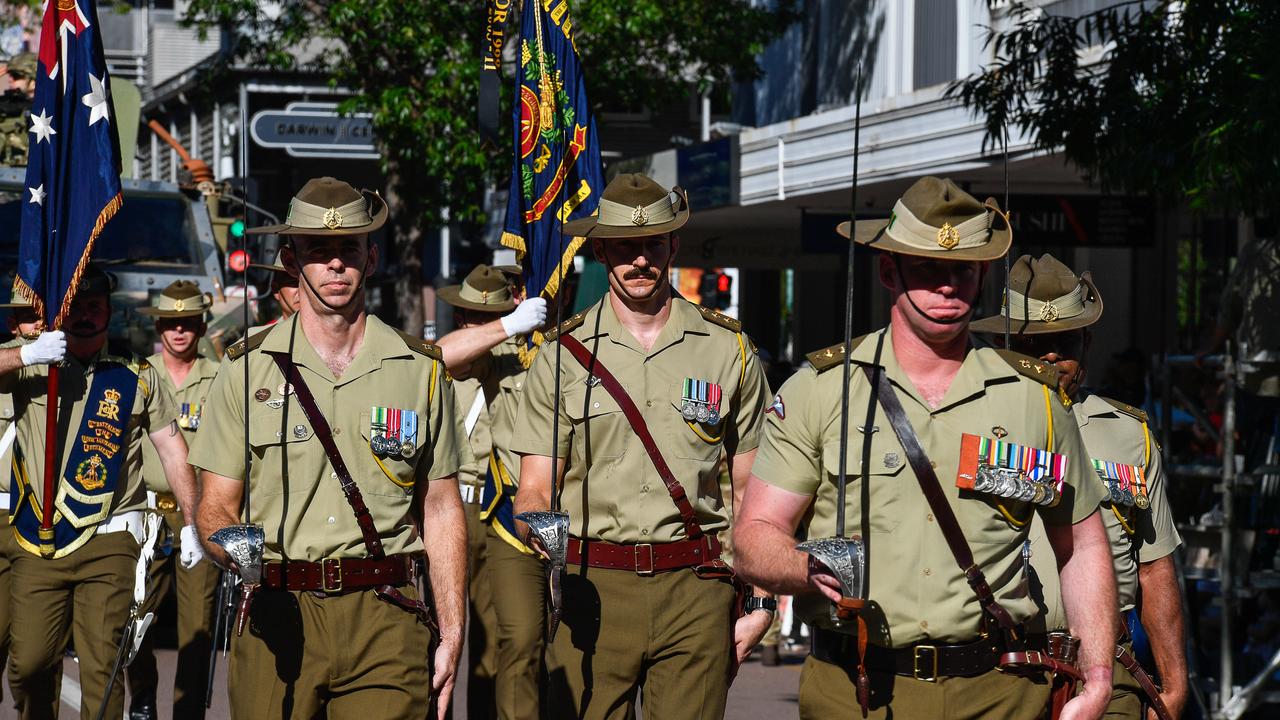
6.00am, Dawn Service – Memorial Park
Locals will descend on the centre of town for a ceremony situated along University Ave.
9.00am, Anzac Day March – Anaconda/Sydney tools car park (former Bunnings car park)
As in Darwin city, viewers will get a glimpse of the Top End’s warfighters marching in unison with members of the Army band in tow.

11.00am, Two-up – Cazalys
Back to Cazalys, locals have the opportunity to make a small fortune in a traditional game of two-up.
Adelaide River
5.30am, Dawn Service – Adelaide River War Cemetery
A slightly earlier start for the residents of Adelaide River, the Dawn Service ceremony will be tighter than its Darwin and Palmerston neighbours.
7.00am, Gunfire breakfast – Adelaide River Show Society
The place to be post-Dawn Service, the Adelaide River Show Society will host a gunfire breakfast for those with an appetite.
5.00am, Gunfire breakfast – Katherine Country Club
A one kilometre walk from the service to follow, the Country Club is offering an early bite to eat for the town’s early risers.
6.00am, Dawn Service – Katherine Cenotaph
Off Railway Tce, locals will gather with a catafalque party expected to guard the ceremony.
9.00am, Anzac Day March – Katherine Terrace
Along the main street of town, the march is expected to be Air Force heavy with members of RAAF Tindal likely to represent the ADF contingent.
Tennant Creek
6.00am, Dawn Service – Tennant Creek RSL
Not only will a ceremony take place, a gunfire breakfast will follow on the same site for Tennant Creek locals.
9.30am, Anzac Day March – Transit Centre
Commemorating the Diggers will continue after the Dawn Service, with a small march available for locals to attend.
Alice Springs
6.00am, Dawn Service – Garden Cemetery Anzac Memorial
A maximum of 500 attendees can attend the event, which will include the Ode of Remembrance and the Last Post.

9.30am, Anzac Day March – Alice Springs Town Council
More Coverage
Back in town, a march will take place which is expected to include current serving ADF members as well as veterans.
10.30am, Anzac Day Service – Anzac Hill
For those who missed the Dawn Service, a second ceremony will be held on the feature top.
A pilot program for a new certificate course for Centralian students is looking to make sure the Red Centre arts scene stays strong. Read out what the students will be learning.
Calls for Parrtjima Festival to be extended have been knocked back despite the organisers recording more than 20,000 attendees and the Major Events Minister calling it a ‘major success’.
An Alice Springs bus operator which services remote communities has cancelled one of its’ routes for two weeks. Read on to find out where and why.

IMAGES
VIDEO
COMMENTS
4. Litchfield National Park Waterfalls: A Tropical Oasis. Just a stone's throw away from Darwin lies Litchfield National Park, a true jewel of the Northern Territory. Renowned for its stunning waterfalls and crystal-clear swimming holes, Litchfield is the perfect escape for those seeking both adventure and relaxation.
A local's guide to good food in Alice Springs. A local's guide to Katherine's hot springs. A local's guide to Karrke Aboriginal Cultural Experience. A local's guide to wildlife in the Red. A local's guide to Malak Marketplace. A local's guide to riding the Red Centre. A local's guide to Injalak Hill. Emily Wurramara's guide to ...
Travel enriches us. It surprises, inspires and grounds us. It also has the opportunity to enrich the communities and conserve the places we visit, as we learn to travel more sustainably and responsibly. ... Get tips for planning your Northern Territory trip, including advice about visas, accessibility, communication and safety. Read more. Plan
In the Northern Territory (the Territory to locals), you can cage dive with crocodiles, swim under waterfalls and marvel at world-famous rock formations like Uluru. With so much to do, the NT is ideal for road trips and slow travel, although there are flights available to the major attractions. In the Top End, the wet season that runs from ...
Northern territory Travel Guide. We design our Northern Territory Travel Guide as a starting point for planning your visit to the Australian outback. We cover the basics you need to plan a trip to Darwin, Uluru, and all the other major towns of this magical part of the world. There are many reasons to visit, among them: The awe-inspiring UNESCO ...
1. Drive the length of the Stuart Highway. One of the most iconic road trips in Australia, driving the length of the Stuart Highway will take you all the way through the heart of the Northern Territory, from South Australia and up to Darwin. Spanning more than 3,000 kilometres, this highway is a great way to experience the vastness and beauty of the Australian outback.
Travel the Northern Territory by air, sea, rail or road. With so many possibilities, you can do the NT your way. ... Read more. Plan Useful information. Get tips for planning your Northern Territory trip, including advice about visas, accessibility, communication, safety and the best NT travel apps. Read more.
The Northern Territory is the beating heart of Australian history and culture: It contains the ancestral homeland of the oldest living culture on Earth and all the art, music, dance, knowledge, and stories that have been passed down for the last 50,000 years. Uluru (Ayers Rock) is the most famous pilgrimage site, with a power and beauty that ...
Outback Northern Territory. Darwin. Kakadu National Park. Arnhem Land. Alice Springs. Uluru-Kata Tjuta National Park. Yulara. Litchfield National Park. Explore Northern Territory holidays and discover the best time and places to visit.
The otherworldly landscape of the Northern Territory will teach you tactics for survival. The roads are longer, the terrain unapologetic - it's uninhabitable, yet somehow people live here. This is the charm of the Northern Territory. This Northern Territory travel guide will introduce you to the beauty of the Northern Territory in all its ...
Planning Your Trip. Best Time to Visit: If you want to visit both the Top End and the Red Centre, the best time to visit the Northern Territory is from May to October to avoid the heat, humidity, and road closures that come with the wet season. Language: The most common language spoken in Northern Territory is English, followed by Indigenous ...
Northern Territory road trip tips. Here are some handy travel tips I picked up along the way while doing this NT road trip. Get roadside assistance. It's always a good idea to have roadside assistance in case of any emergencies. This can give you peace of mind when driving long distances and through remote areas. Stock up on supplies.
Read Next: 17 Essential Tips for a Northern Territory Road Trip. Day 3: Ubirr to Cooinda. Distance: 118km (73 miles) Driving Time: 2 hrs. The next stop in our Northern Territory holiday itinerary is Cooinda, on the south side of Kakadu National Park. Cooinda is a great base from which to join a cruise on Yellow Water Billabong.
Explore South Australia and the Northern Territory on this self-drive adventure. Start in Adelaide and make your way over the Ayers Rock, Kings Canyon, and Alice Springs to the Kakadu National Park and ultimately Darwin. view trip ⤍. 23 days / from4150 USD. Cross Western Australia to Darwin.
The population of the Territory represents 1% of the total population of Australia. 54% of the residents of the Territory living in Darwin! The climate in the Northern Territory varies from the border with South Australia to the top, or the 'Top End', as it is known. The climate is drier in the South, with deserts, and the further north you ...
Some important Northern Territory travel tips: Pack sturdy walking shoes. Mosquito repellant and a fly net are mandatory. Regularly apply sunscreen (that Outback sun is HARSH!) ... -The-World-Travel-Festival-Glamping-Blog.png Dave 2019-05-08 20:35:19 2021-04-27 23:55:38 The Ultimate Australian Outback/ Northern Territory Travel Itinerary ...
Guide to Darwin. Aboriginal name: Gulumerrdgen (pronounced Golom-merrd-gen) With everything from Asian food markets and crocodile encounters to open-air movies and sunset cruises, Darwin is as easy going as it is exciting. If balmy nights, colourful characters and outdoor adventures are on your bucket list, you'll want to visit Darwin, located ...
Northern Territory travel guide. Sometimes mistakenly called the Northern Territories, this vast region of north and central Australia is singular rather than plural, despite boasting a wide array of landscapes. It is most definitely singular in the other sense of the word, however, as in remarkable.
SPIRITUAL + ANCIENT NT. The Northern Territory is a profoundly ancient and spiritual place that offers adventure, cultural experiences, stunning landscapes, unique flora and fauna and a bit of star-gazing. If you want to experience the heart of Australia - spiritually, culturally and physically then spend a while exploring the Northern Territory.
Northern Territory is the last frontier if you consider remoteness, harsh environment, and spectacular landscapes. Northern Territory has lots to offer for everyone: vast desert tracks, tropical woodlands, spectacular fishing spots, a paradise for birdwatchers, amazing walks, and 4WD tracks. This Northern Territory travel guide lists all interesting places that are worth visiting.
That's why we've taken it upon ourselves to share our top 5 Northern Territory travel tips - simple tips that we've learned over the past 100 years of travelling the Territory. 1. SEE IT ALL (BUT NOT ALL AT ONCE) With so much to see and so much to do, it can be difficult to know what exactly 'it all' actually is.
2. Support local & discover more with a guide . Packaged tours are a great way to ensure your visitor permits are arranged before you arrive. Booking day trips or multi-night tours allow you to connect locally and discover more with an experienced guide. From the Top End to the Red Centre, the Northern Territory has a wide range of Aboriginal cultural experiences on offer.
From the hair-raising Last Post to the afternoon hustle of two-up, here is your guide of how to commemorate Anzac Day 2024 in the Territory. Darwin 6.00am, Dawn Service - Darwin Cenotaph
Local's tips. Top End Local's Tips; Red Centre Local's Tips; ... The Northern Territory is home to some of the most spectacular natural waterholes and waterfalls in the world - and not just in the tropical climate of the Top End. ... deals and travel information about the Northern Territory. Data privacy. Enter your email address Sign up